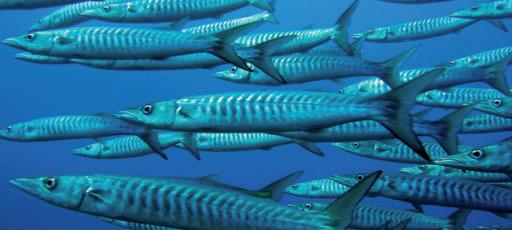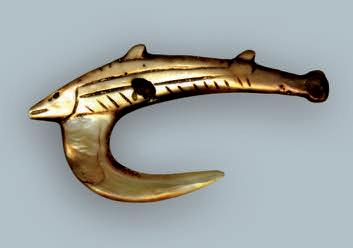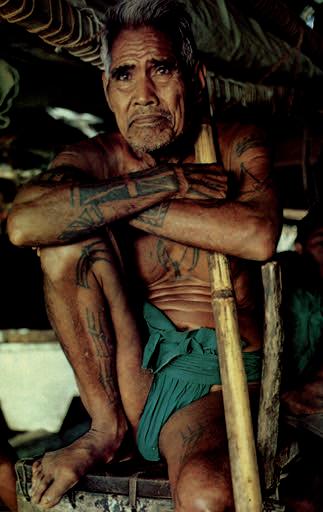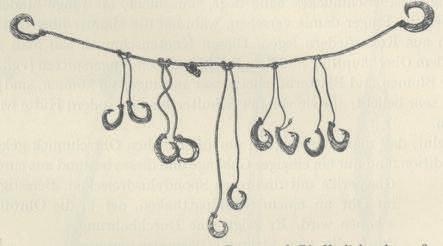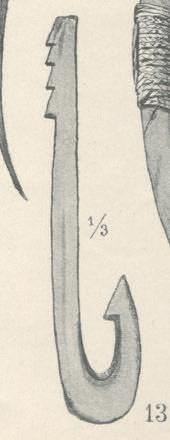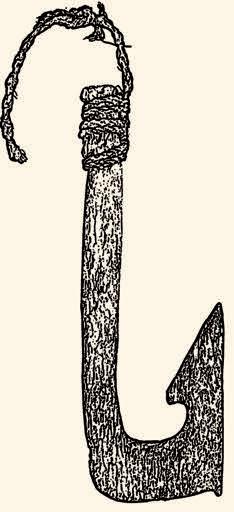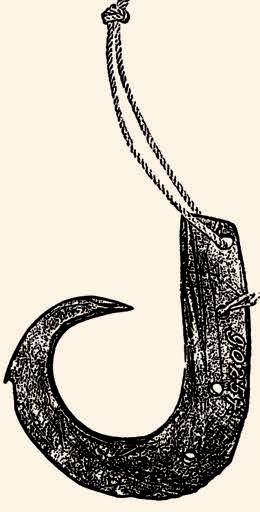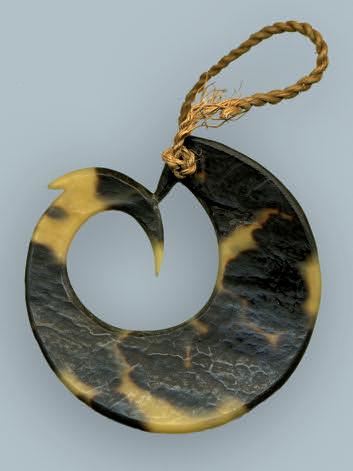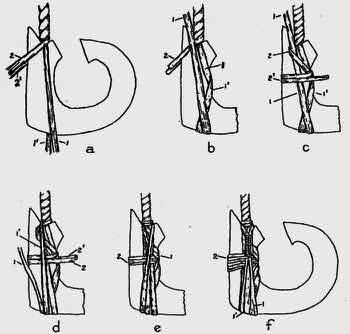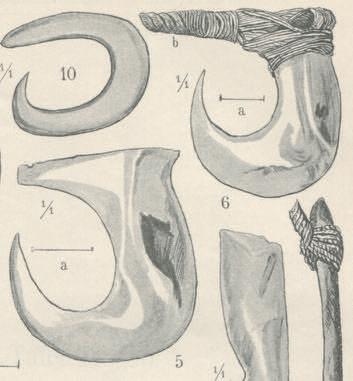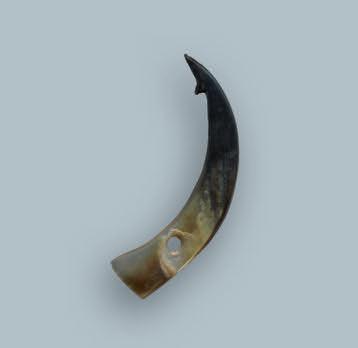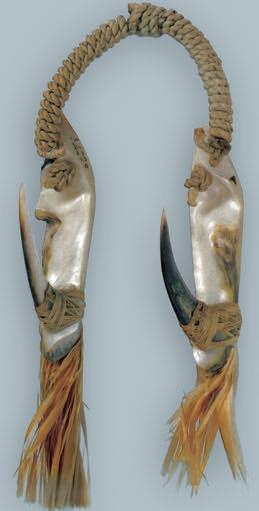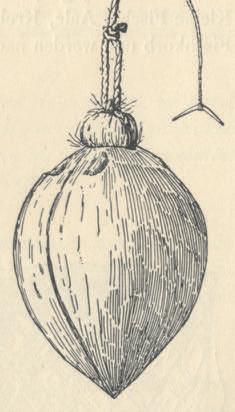The Oceanic Envir onment
Enor mous expanses of ocean dotted with thousands of islands of var ying size are the hallmarks of the g eog raphy of Oceania T he different marine environments that sur round them provide a means to most of the islanders to satisfy a larg e por tion of their nutritional needs Fishing plays an especially vital role on coral atolls, where women and children g ather bottom dwelling species on beaches and from reefs, also sometimes using cast nets (*1) and hand nets (*2) to catch small fish, while men take to the open seas in boats, and use various techniques to catch larg er species.
T he highly developed and ver y varied methods used for catching fish include the following tools and techniques: hooks, nets, traps, wicker basket traps, weirs, nooses, shark nooses with rattles, anesthetization with herbal poisons, spears, ar rows, har poons and kite fishing (*3) (202): Pl 2
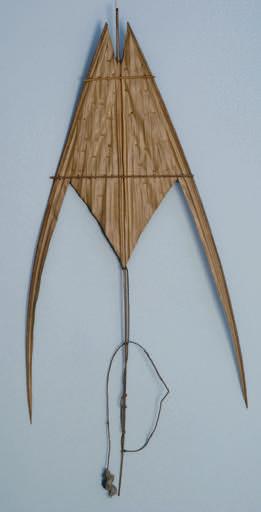
T his publication deals exclusively with hook fishing, which is widespread throughout all of Oceania No other area on ear th comes close to having so many different kinds of hooks. T here are countless variants and types. Tiny hooks, a few millimeters in size, are known from Hawaii, the Solomon Islands and excavations in the Marquesas Islands while some wooden types can reach a massive 50 centimeters in size Some hooks are relatively simple, while others are ver y complex and ing eniously designed, and made from a wide variety of materials T hese materials include plant fibers, seashell, snail shell, bone, tur tle shell, wood, teeth and rarely stone, thor ns and crab pincers T he result is an almost unbelievable number of hook types. In some cases, only one type of hook is known in a par ticular area, but more often, a given cultural area makes use of many different kinds
T he g eog raphic division of Oceania into Australia, Melanesia, Micronesia and Polynesia cor responds in some measure to the anthropological and cultural differences between these larg e areas, but the boundaries between them remain f luid because, with the exce ption of the Australians, Oceanic peoples had highly developed nautical and navig ational skills, and succeeded in reaching even the remotest island g roups We never theless decided to use this division which is traditional to ethnog raphical literature and most conveniently understood

19
(*3) Fishing Kite from the Solomon Islands made of leafs, wooden sticks, string and a bunch of spider web fibers as bait for the Flying Fish
aktuelles hakenbuch 12.okt:miot neu vertikal 30.11.2011 18:08 Uhr Seite 19
(*2) Fisher man catching shrimp in Hawaii Photo by Davey, c 1880
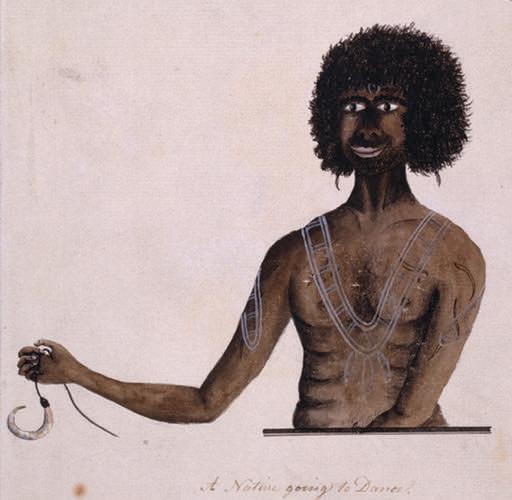
20 aktuelles hakenbuch 12.okt:miot neu vertikal 30.11.2011 18:08 Uhr Seite 20
(*1) “A Native g oing to Dance - A Native of New South Wales, or namented after the manner of the Countr y, ” Drawing 55 by the Por t Jackson Painter, 1788-1797, from the Wattling collection now in the Natural Histor y Museum Picture Librar y, London
Australia
Australian hooks are seldom seen in the literature or in collections Already in 1878, Brough-Smyth illustrates several types and describes their use (50): 391, Fig. 226-229.
He shows a hook from Rockingham Bay in Queensland, ver y similar to the two illustrated here (plate one) and states: “T he material used is a section of the shell of a species of haliotis (in fact it is Turbo ninella torquata, Gmelin 1791, as has been kindly pointed out by Yosi Sinoto) It is beautiful in shape, highly polished, and has a ver y shar p point. It is securely and neatly attached to the cord with twine made of the fibre of some plant T his is in all respects a most excellent hook ( ) and might be used now, I have no doubt, with success, in taking larg e fish.” (*1), (50): Fig. 229. “Another kind of fish hook – made of tur tle shell – is also in use at Rockingham Bay In for m it is exactly that figured above ” BroughSmyth also illustrates a ver y similar hook made of bone (50): Fig 226 T his old type of hook had already become scarce in Victoria by 1878, having been larg ely re placed by European hooks
Brough-Smyth illustrates a small wooden stick, pointed on both ends, that might also have been made of bone (*2). An ing enious knot ensured that the stick would not slip from the line “It was baited, however, and when seized by the fish and the line strained, the bone stuck in the jaws, and the prey was secured T his is a ver y simple but a ver y ing enious contrivance for taking fish ” (50): 391
Another unusual type of double hook was used in Queensland (*3) It consists of a single piece of hardwood, pointed on both ends, and fur ther equipped with two points tur ned inwards (50): 391 T his double-ended wood or bone hook is not only the oldest known type of Australian Aboriginal hook, but is possibly the archetype and original for m of the fish hook altog ether.
A ver y rare type of hook shown on plate two could only be compared to one similar reference example in the literature Lewis illustrates this hook type, which was collected in the 19th centur y by the Spencer-Gillen expedition at the Daly River in the Nor ther n Ter ritor y (51): Fig 166
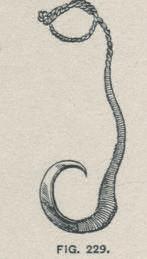



T he hook and its rod illustrated on the following plate were collected on the Cape York Peninsula in Nor th Queensland. A bone point is tied to a simple wooden shank with tree bast Some traces of gum are still visible T he hook is attached with a plant fiber line to a simple wooden fishing rod
To underline the significance of Australian hooks, we once ag ain quote Brough-Smyth: “How it happens that their fish hooks are so well made, that their lines, if not always neatly twisted, are as g ood as ours ( ) may induce new speculations in the minds of those who believe that the Australian is poor in invention ” (50): 289
21
(*2) (*1) (*3)
aktuelles hakenbuch 12.okt:miot neu vertikal 30.11.2011 18:08 Uhr Seite 21
(*) Francois Peron, Voyag e de Decouver tes aux Ter res Australes, Paris, 1824, Atlas, Pl XXII, Fish hooks of mother of pearl shell from NewHolland, drawn by C A Lesseur
Pl 1 Pl. 2 Pl 3
Australia 22 1 aktuelles hakenbuch 12.okt:miot neu vertikal 30.11.2011 18:08 Uhr Seite 22

23 aktuelles hakenbuch 12.okt:miot neu vertikal 30.11.2011 18:08 Uhr Seite 23
Australia 24 2 aktuelles hakenbuch 12.okt:miot neu vertikal 30.11.2011 18:08 Uhr Seite 24
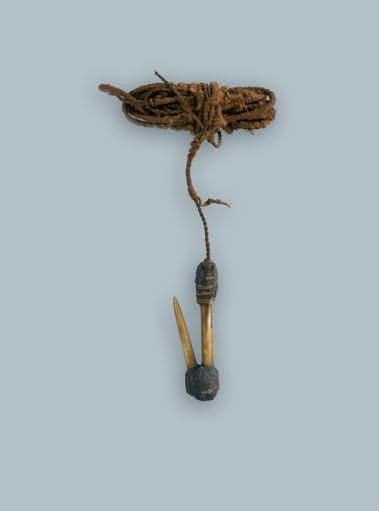
25 aktuelles hakenbuch 12.okt:miot neu vertikal 30.11.2011 18:08 Uhr Seite 25
Australia 26 3 aktuelles hakenbuch 12.okt:miot neu vertikal 30.11.2011 18:08 Uhr Seite 26

27 aktuelles hakenbuch 12.okt:miot neu vertikal 30.11.2011 18:08 Uhr Seite 27

28
aktuelles hakenbuch 12.okt:miot neu vertikal 30.11.2011 18:08 Uhr Seite 28
(*) Fish traps (wup na tatakia) on the Gazelle peninsula, (23): 80/81, Pl 6
Melanesia
It is sur prising that in this hug e area, there appear to be larg e regions where no evidence sug g esting that fishing with hooks existed T his is especially tr ue of larg e par ts of the coastal regions of New Guinea. Why it is that the typical two-piece hook for m was widely adopted and used only in the Huon Gulf, while for the Nor thwest Coast all the way to Geelvink Bay there are in the literature only a few and vague references to hooks, without illustrations, is a question that future research and archaeological work might be able to shed some light on. T he hooks illustrated on the plates 4 and 5 show all the variants of two-piece fish hooks, whose shank may be made of bone or Tridacna shell Mother of pearl was not used T he upper ends of the shanks are either g rooved or lightly crenellated to help secure the fiber snood that is tied around them While not exclusively intended for use as bonito hooks, it can be assumed that bonito were caught with them Finsch remarks: “T hese hooks were not used for fishing in the strictest sense of the word, an activity unknown to Papuans, but rather were used like hooks used for catching mackerel, that is to say they were attached to a line which was drag g ed behind a fast sailing canoe. (...) I have obser ved fish hooks of this type being used from the Huon Gulf to Friedrich-Wilhelm-Hafen (Madang) on many occasions I saw none west of there, but suspect they do occur there ”
(15): 191
(*1) Finsch’s obser vations on the use of these hooks in the regions he describes are accurate, but as sur prising as it may seem, his guess that their use extended westward was incor rect. T he coastal inhabitants whom Finsch described and who used bonito hooks, were devoted fisher men, as the many re presentations of fish on their boats, their houses, and their bowls sug g est
A masterfully manufactured fish, also beautifully painted, collected at Astrolabe Bay by Krämer, and made from palm bast, a ver y difficult material to work, is illustrated in (*2), (37): Ill 69

Siassi Islands, South of the Lar ger Island of Umboi
T hese tur tle shell hooks often show clear signs of having been heated at the points in order to facilitate bending them T he shank is lashed to a second piece, made of bone, mother of pearl, or Tridacna shell
T he first illustration of this type of hook can be found in: “Ethnologischer Atlas” by O Finsch, (*3) without a description of how it was used T hat two-piece hooks can display ver y ar tful workmanship is demonstrated by the example seen at bottom left of the plate, and by a ver y unusual example illustrated by Bodrogi (38): Fig 187 Here the hook appears to re present a hor nbill It compares to the Huon Gulf hooks on the previous plates. T he bone and tur tle shell points bound on to those hooks can indeed also be seen as re presentations of bird heads In addition to these types, there are also simpler examples, made of single pieces of tur tle shell, bent by heating.
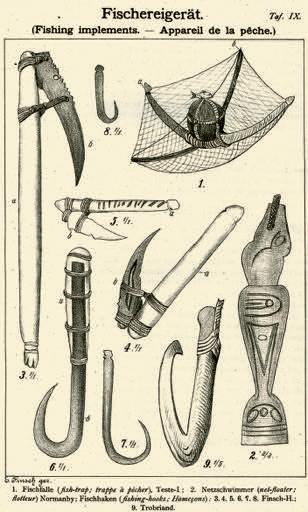
29
Pl 4
Pl. 5
Pl. 6
(*2)
(*3) Ethnologischer Atlas, Leipzig 1888: Pl IX,6
aktuelles hakenbuch 12.okt:miot neu vertikal 30.11.2011 18:08 Uhr Seite 29
(*1) Bodrogi refers to Biro and states: “Biro repor ts that in the Huon Gulf area fish hooks are made only on the Tami Islands and Tamigidu ” (38): p 129
A type of two-piece hook made from palm wood is known from the extreme southeaster n tip of New Guinea and the Massim area. T he carefully made binding covers the entire shank and the snood is tied on ver y precisely Schlesier mentions a similar hook with a f loat He states that its name is Yahuana, and gives the following description: “T he method of use for this hook is especially conceived for the capture of the Mwalaw e fish T he line is unwound and thrown into the sea T he f loat stays on the surface, and the hook sinks beneath it A bait fish is attached to the end of the line where it meets the hook and to the top of the hook itself with its head pointing upwards When the Mwalaw e fish bites, a rod about a meter in length that is placed in the bait fish’s mouth and reaches to the water’s surface, is set into motion, thus indicating that the bait has been taken ” (39): 65 Other types of hooks are known from the Massim area, which Beasley describes and illustrates in several pag es of his publication. (8): 78-82.

The Most Beautifully For med Melanesian Shark Hook fr om the Tr obriand Archipelago
T here is undoubtedly no region in Oceania where there is a g reater variety of for ms of shark hooks than in the Trobriand Archipelag o Two types are especially notewor thy: First, a larg e wooden V-shaped hook with a relatively undeveloped point, which Edg e –Par tington illustrates (3): Series 3, Pl LXXVIII
Its 54 cm length probably makes it the larg est hook in Oceania Beasley also illustrates this hook, and another as well (8): Pl CXXIII and CXXIV He remarks:
“T he snood loop ( ) is composed of numerous strips of rattan cane, bound tog ether with the same material and strengthened with wooden wedg es. ” (8): 81.
T here is another example of these impressive shark hooks in the Berlin Museum of Ethnolog y Beasley shows three hooks, each with a distinctively stylized head at the end of its shank. T he head’s offset chin ser ves to secure the line to the hook. T he shark hook illustrated here (*1) substantially sur passes those shown by Beasley both in ter ms of for m and workmanship A crenellated ridg e r uns down from beneath the stylized head along the outside of the hook. T he ridg e is meticulously car ved into the heavy wood and adds to the wonderful swee ping sculptural movement of the piece T he hook is an example which testifies not only to its creator’s highly developed sense of for m, but also to his uner ring comprehension of the materials he used T he fiber binding which attaches the tip to the point is fur ther evidence of this fact T he hook was collected on the island of Kiriwina in 1904. It shows signs of use, and it is consequently likely that it was manufactured at some time in the late 19th centur y (*2) T here are two other shark hooks of hard and heavy wood from the Lawland Islands, now in the Staatliches Museum für Völkerkunde in Munich, which measure 37 5 (*3) and 43 cm (*4) respectively, and which are probably the oldest hooks still in existence from the Massim region T hey display countless bite marks and are quite different in for m from other known types of hooks One of them is unique in the way the head of the shank is designed Both hooks were collected in 1885 by Max T hiel, and, on account of the extensive evidence of use they display, may be safely assumed to date from the early 19th centur y or even earlier (Inv #B1700 and B1701)
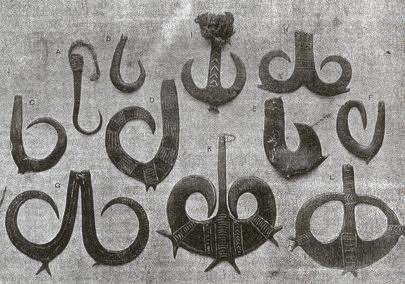
30
Pl 7
Pl 8
(*1)
(*) Tur tle shell or naments, Sabar gorar, wor n in Tor res Straits, from specimens in the British Museum; photog raphed by Mr H Oldland In: (41): fig 12, p 33
aktuelles hakenbuch 12.okt:miot neu vertikal 30.11.2011 18:08 Uhr Seite 30
(*2) First published in: Meyer, Anthony JP : Le Pays Massim-Papua Nouvelle Guinee Catalogue d'exposition Galerie Meyer, Paris 1987
Examples almost identical to the following one-piece tur tle shell hook on p l a t e 9 a r e i l l u s t r a t e d by B e a s l e y. T h e y we r e c o l l e c t e d o n t h e D a n i e l s Ethnog raphical Expedition of 1904-1906, and appear to be ver y rare, as there are no other examples known in the literature apar t from those mentioned here
T he tur tle shell hook illustrated here measures 9.3 cm and is the long est example known It was cut from the tur tle shell and not bent under heat Its surface was meticulously smoothed It has the same eleg ant for m as Beasley’s hooks A crenellated ridg e is also present here, but only along the outside of the hook’s base Visually, the ridg e seems to connect the shank with the point, the two being almost parallel with one another. Unfor tunately there does not seem to be any infor mation or explanation available with reg ards to the possible meaning of the crenellated ridg es Equally little is known about how exactly the hook was used, or what type of fish it was intended to catch.

Finsch, who had much first-hand knowledg e of the nor th coast of New Guinea, stated the following: “Net and reef fishing are predominant, and hook fishing is of lesser impor tance. T here are no fish hooks along the south coast or in the easter n por tion of British New Guinea But Moresby mentions some from the latter area (Possession Bay), apparently made of pearl shell ( )” (40): 129
A simple bent tur tle shell hook is known from the Tor res Strait. Haddon states: “T he fish hooks were used in pairs, each being tied at the end of a piece of thin string of sinnet but they admit of ver y little decoration ” (41): 35

T he decorated one-piece tur tle shell hook illustrated here was not used for fishing It was made from the thick par t of the edg e of the shell Haddon shows several examples of the Sabagorar hook or naments, and makes the following obser vations with reg ards to their use: “T he Sabagorar is a ver y interesting tur tleshell or nament of varied for m which was wor n by the girls, and for med par t of their mar riag e outfit. T his cer tainly was the case in Mer; but I do not know how far the custom extended in the Straits ” (41): 33
T he one-piece hook on plate 11 is also made of a thick piece of tur tle shell. T he shell becomes thinner near the head, in which a suspension hole is drilled T he fiber remains of the attachment string are ver y similar to those on the previous hook and indicate that the hook was used as an or nament T he shank par t of the hook with the fin-shaped extension at the base can be inter preted as a stylized fish A small label on this “fin” reads “purchased Febr 12, 1838”, and this date makes this the oldest known Sabagorar (*5) Wichmann documents ships known to have moved through the Tor res Strait in the 1830s. (30): 37-42. In 1836, Lewis visited various Tor res Strait islands (including Mer, Waier and Er ub) in search of sur vivors of the Charles Eaton, and made contact with the natives there T he hook is similar to the example illustrated by Haddon (41): Fig 12, E T he finlike extension is present in this case, but ver y r udimentar y T he three V-like extensions, with hatch marks that extend onto the hook itself, present on the example shown in Fig 12, K, can also be inter preted as re presentations of fish
Four other Sabagorar hooks shown on this plate are similarly decorated
There is no infor mation available on the use of fish hooks by the peoples of the Papuan Gulf area Williams obser ves: “There is a g reat variety of fishing

31
Pl. 9
Pl. 10
aktuelles hakenbuch 12.okt:miot neu vertikal 30.11.2011 18:08 Uhr Seite 31
Pl 11 (*3) (*4) (*5)
methods in Orokolo Bay, and often mighty small results from any of them ” (42):18
T he Marind-Anim appear to practice hook fishing in only a ver y limited way In his comprehensive publication, Wirz shows only a drawing of a composite hook fashioned from palm bast and remarks: “T he Marind hook is in fact quite primitive, and of not much use. (...) T he materials it is made of make it suitable only for ver y small swamp fish, and it is consequently seldom used ” (43): Par t 1, 102 In the various recently published monog raphs on the Asmat and the Mimika, no mention is made of hook fishing
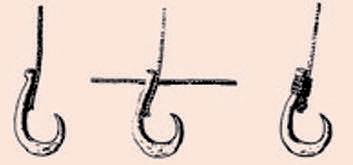
A one-piece bone hook was in use in the Sepik River area(*1a/b) (45): 2223. Reche describes one-piece hooks made of both bone and mother of pearl. (44): 249 Two Se pik bone hooks with barbs, collected by Mead in 1933-34, are in the American Museum of Natural Histor y in New York (#80 0-8186B) HauserSchäublin states that hook fishing was a women ’ s activity on the Se pik, and that men did not practice it
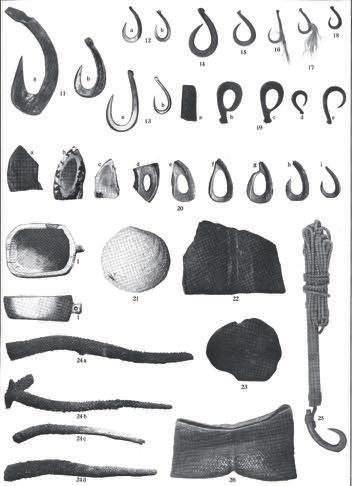
T he islands of Wuvulu and Aua along the nor th coast of New Guinea are described by Finsch as “centers for the mass production of fish hooks”, and constitute a case apar t (40): 130 “On these isolated islands, one works however only to supply one ’ s own needs, and produces hooks that all have the same for m, but may be of var ying size and either entirely of tur tle shell or entirely of sea shell.”
Hambr uch describes the manufacture of these one-piece hooks in g reat detail (*2), (46): 110 Plant fiber mats (for example banana leaf mats on Wuvulu, and coconut bast mats on Nukuoro) are made for hanging g roups of hooks in rows Plate 12 illustrates a mat of this kind, which displays all varieties of one-piece hooks, made of Burg os and Trochus shell, as well as of tur tle shell. Ar tificial hackles are sometimes affixed to these little hooks T hey are made of feathers, as in the case of the hook in the middle (*3), or of plant fibre, as may be seen on the hooks shown on the plates 13 and 14. Hambr uch shows the unusual binding of the lines to the ver y carefully worked sea and tur tle shell hooks (*4), (46): 110
Robust one-piece Trochus shell hooks, ranging in size from a few centimeters to as much as 9 centimeters, are a par ticularity of the Wester n Islands of the Bismarck Archipelag o
“T hey are used with or without bait, de pending on what type of fish one intends to catch. Often the faint glitter of the mother of pearl that the hook is made of can be enough to substitute for bait, if the hook is cleverly thrown ” (47): 215 T hese hooks are made from the lower spiral of Trochus Niloticus or Turbo Mar moratus. “Fish hooks of this type (Awi) (*4) were an expor t item until a few decades ag o, from K aniet to Ag omes and Ninig o ” (40): 130 A hook that is nearly identical to one seen in T hilenius is illustrated in the lower right of the plate 14 (47): 245 It is different from it in that no g roove is present for the tying of the line T his carefully fashioned hook was once used by the fisher men of Ninig o for catching larg er species of fish. Two classic shark hooks from Aua are shown on plate 15
T hey are masterfully crafted with the simplest tools from the lowest spiral of a Trochus shell. T he filed g roove at the top of the shank around which the meticulously tied plant fiber line is attached, is readily recognizable In order to
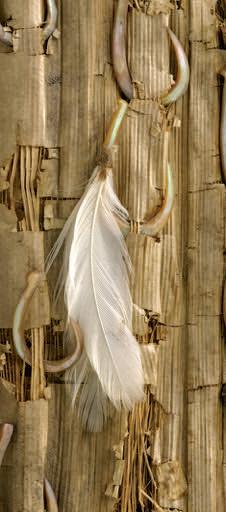
32
Pl 12 Pl 13 Pl. 14 Pl 15
(*1a) A fishing pole with a one-piece bone hook is displayed in the per manent collection of the Ethnologisches Museum in Berlin.
(*5) Hambr uch calls them Awui (46): Pl XIV 11
(*3) Detail of the mat illustrated in plate 12
(*4)
aktuelles hakenbuch 12.okt:miot neu vertikal 30.11.2011 18:08 Uhr Seite 32
(*2) (46): Pl XIV, illustrating the different materials used in fish hook manufacture
make this line more capable of withstanding a shark’s bite, it was strengthened by winding a finer fiber line tightly around it.
T he following hooks also present a cer tain par ticularity T heir lines are equipped with a wooden bite bar T his consists of a longitudinally cut wooden tube, through the middle of which a line is passed. T he two sections of the tube are bound tog ether at the top and at the bottom, and in the case of the long est one, also in the middle (46): Pl XV
T here are hooks from the Admiralty Islands in many collections that have been debated intensely for over 100 years T hey are made up of a wooden shank through which a piece of Trochus shell (*6) or a pig tusk is bored and secured with Parinarium gum T hilenius describes these hooks as tools for picking fr uit Never
mann states that these up to 40 cm long hooks were used in various ways: “T here is probably not just one way of using these hooks, but they rather ser ve alter nately as fr uit pickers, fish hooks, or even suspension hooks, according to the custom of the location or, as on Pitilu, the need of the moment” (48):161 Ohnemus illustrates a shark hook from Andra that is made of a half pig jaw with only one tusk remaining in it All the other teeth are removed, and the g aps filled with Parinarium gum (49): Ill 150 Finally, there is an example at the Linden Museum in Stuttg ar t, whose ver y long shank sug g ests r ules out that it could have been used for anything but picking fr uit
T he one-piece trochus shell hook (*7) from the Admiralty Islands (Manus Island) is similar to an example that Moseley illustrates in his account In 1877, he wrote: “Fish hooks are used made of Trochus shell, all in one piece T hey are of a simple hooked for m without barb. T he natives did not seem to care for steel fish hooks, and apparently did not, at first at least, understand their use ” (209): Pl XXI, fig 12; 27-28

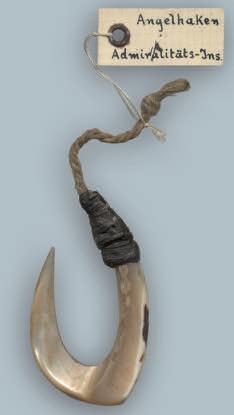
Ohnemus presents a comparable hook, whose three stranded plant fiber line is attached to the hook with a resin paste as it is on this example (*8)
We lear n from Never mann that “T he hooks ( ) are 5 or 6 centimeters long, and at their tops (...) have a dense binding of finely made string, which is sometimes additionally covered by a layer of Parinarium gum paste ( ) Parkinson (1907) already noted that the Trochus shell hooks were being re placed by iron ones (...) Usually, three men fish simultaneously with rods from one canoe ” (48): 162163 As is so often the case, there is unfor tunately no indication given of what kinds of fish these hooks were intended to catch
Never mann illustrates only 3 to 4 cm long tur tle shell hooks from the St. Matthias Islands, all quite cr ude and without barbs (52): Ill 31 T hese had been nearly completely re placed by metal hooks by 1908 Even from New Ireland, with its extensive coasts, there is only ver y sparse infor mation on the practice of hook fishing Beasley illustrates two Trochus shell hooks that probably come from the Wester n Islands. (8): Fig. 30. Neuhaus describes fishing on the reef as more of a pastime or a spor t: “For fish hooks, the natives used a barbed piece of Rotang palm or Mumlang a Mumlang a is a plant which is abundant along the coast, and has long tendrils and thor ns. T he barbs on the Rotang palm and the Mumlang a are small, and the natives could only catch ver y small fish with such hooks ” (53): 92
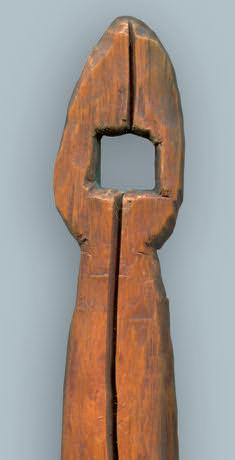
33
16 Pl 17
Pl.
(*7)
(*1b)A bone hook from the Sepik
(*6) Detail of the shank of the left hook on plate 17.
aktuelles hakenbuch 12.okt:miot neu vertikal 30.11.2011 18:08 Uhr Seite 33
(*8) According to Ohnemus, the sap of the Pir u palm is mixed with that of the breadfr uit tree (Kuli) to make this paste on Andra (nor th coast of Manus Island) (49): Fig 148
T he hooks that the natives made of tur tle shell and bent under heat were much strong er, but they were eventually re placed by the introduced metal hooks.
T here is however a type of hook known in museums and mentioned in the literature Beasley illustrates but misattributes it in (8): Pl CXXX Buschan brief ly mentions a tur tle shell hook from Siara in souther n New Ireland. T here are numerous records of such hooks in Ger man ethnological museums In Stuttg ar t’s Linden Museum, Buschan’s hook (*1), (54): Ill 98 is shown alongside several other examples of this type T he half-circle shaped head, the widened and notched shank limb, and the point bent upwards under heat, are the hallmarks of this type of hook. Another variant of this type can be found in the Hamburg er Museum für Völkerkunde (*2) (55): Pl 5 14 It is of special interest because of a stone sinker that is ar tfully tied into the line Unfor tunately, no infor mation is available as to how this hook was used. Was it cast from a reef or from a boat, and what kind of fish was it intended to catch?
Ste phan and Graebner give an over view of fishing equipment from souther n New Ireland. (56): Ill. 61. T he authors attribute the impor tance of fishing to the scarcity of g ame animals on the island, and to the wealth of edible species of fish in the sea “T he original hooks were made of tur tle shell Nowadays, notably in Laur, iron hooks are already being used, but they are tied to a piece of mother of pearl in a traditional manner ” (56): 65 It is difficult to ascer tain to what extent the aforementioned hooks were used on the larg e island of New Britain, due to the dear th of infor mation in the literature on this subject With respect to the Duke of York Islands, which lie between New Ireland and New Britain, Ribbe remarks: “Hook fishing does not appear to have been ver y widespread in the Duke of York Islands Nowadays only European hooks are used Fish hooks from the inland are said to have been made of mother of pearl, wood, and fish bones, but I have never seen such a hook on the Duke of York Islands”. (57): 443. While the hooks attributed to New Britain and illustrated by Powell in 1884 (*3) tur n out to be mostly fantasies, some proper examples are illustrated by Beasley (8) Pl CXII

T he composite hook he shows does resemble those seen in Ste phan and Graebner. (56): Ill 61 Beasley says the following about Powell’s composite hook: “T he shank is of mother of pearl, having a tur tle shell barb, obviously shaped by heating into a pronounced cur ve. ” (8): 73. Next to it, Beasley illustrates the earliest hook collected on New Britain (*4) He writes: “Fig 29 is taken from Hunter’s Voyag e (58): 233, and was obtained in 1791 from the Duke of York Islands T he material is obviously tur tle shell, and (...) is reminiscent of those from Mur ray Island in Tor res Straits ” (8): 73

Similar tur tle shell hooks are known from the Solomon Islands

It is possible to conclude that hook fishing was of ver y little impor tance on New Britain Missionaries like Meyer and Kleintitschen, who spent many years on the island among the natives and investig ated fishing ver y closely, describe hook fishing only peripherally In the comprehensive chapter entitled “Hunting and Fishing” (59): 65-90, Kleintitschen does not even mention it, while Meyer describes it as being ver y primitive. The latter states: “Fish hooks made of shell were unknown here The hook consists of a Rotang palm spine a few centimeters in length

34
(*3) Powells plate of fantasies in: Allg emeine Völkerkunde, A Heilbor n, Leipzig, 1898, Ill 52 (*4)
aktuelles hakenbuch 12.okt:miot neu vertikal 30.11.2011 18:08 Uhr Seite 34
(*1) (*2)
Bait was attached to the end of the spine The line was hand held, or placed in the water with a f loat.” (60): 1078-79, Pl. 10.

Solomon Islands
T he most ar tfully made fish hooks of Melanesia are from the Central and Southeast Solomon Islands T hese composite hooks are used for catching bonito In order to understand why these hooks are so carefully made, and why so much time is devoted to their manufacture, it is impor tant to know a few basics about the bonito cult, which was most widely practiced in the southeast Solomons “T he chances taken in bonito fishing, the constant dang er of bad weather and sharks g enerated a dee p feeling of de pendance on the spirits of the Ocean. T he vision and worship of these g odly beings dominated the religious and to some extend the ar tistic life of these peoples ” (221):209 T he bonito cult plays a central role especially in the initiation rituals for boys. T hey move out to sea with experienced fisher men, in the sacred and richly or namented boats, to catch the first bonito By drinking some drops of its blood the mystical substance of the bonito is passed on to the initiated boy. (*5), (compare (136): 158, 312-314)
Hooks were all the more valued when they had been successfully used, and were passed down from g eneration to g eneration

T he bonito (*6), which weighs up to ten pounds, was a highly coveted fish In the windless weeks from December through March, it was pursued by light and beautifully decorated three-man canoes, and caught with these hooks. T he location of bonito swar ms could be deter mined by the presence of seagulls and frig ate birds hovering above them T he birds were attracted by the surface splashing of small fish being hunted by the bonito.
A paddle blade from Santa Isabel Island (*7) impressively renders the dynamic of the bonito hunt Sea spirits lead the bonito swar ms towards the coast
A sea spirit is shown at upper right on the paddle blade. Ever ything that had to do with the catching of the bonito was of sacred character Bonito hooks were not seen simply as functional tools, but as the prized objects that should tempt the desired fish to catch them. As a result, all of the component pieces of the hook –the Tridacna shell or mother of pearl shanks, the eleg ant tur tle shell points, the bead hackles, and the finely worked plant fiber lines that ar tfully held the par ts tog ether – were made with meticulous care and attention to detail. When one considers the frig ate birds that f ly above the seagulls and steal their small fish, one is tempted to draw a connection between the shape of their eleg antly for med beaks holding prey and the beautiful shape of the tur tle shell hook points T heir inward cur ve seems to imitate the wonderful swee p of the frig ate bird’s beak T he prey can find release from neither the frig ate bird nor the hook.

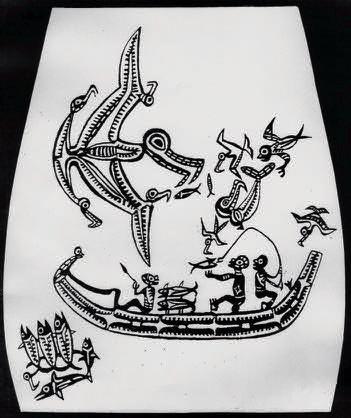
T he bonito hook (*8) has a tur tle shell point which is probably unique, in that the head and beak of a frig ate bird are clearly rendered on it T his of course suppor ts the notion expressed above.
T here are many different types of hooks from the Solomon Islands and
(*6)
Pl 18
Pl. 19
Pl. 20
Pl 21
Pl 22
Pl 23
Pl 24
Pl. 25
Pl 26
Pl 27
Pl. 28
Pl 29
Pl 30
Pl. 31
(*8)
35
(*7) Illustrated here is a r ubbing made from the relief car ving on the paddle.
(*) A frig at bird amulet from New Georgia in the Central Solomons, car ved from mother of pearl (14,5 cm max length)
aktuelles hakenbuch 12.okt:miot neu vertikal 30.11.2011 18:08 Uhr Seite 35
(*5) H Fischer-Har riehausen gives a comprehensive description of the bonito ritual in Central Melanesia, using all available bibliog raphical infor mation
they are among the best researched in Oceania T he first illustrations appear in the Godeffroy catalog of 1881 (2). Edg e-Par tington illustrates nearly all the different kinds in 1890 (3) Additional illustrations and infor mation are found in Woodford (1918) (4), Ivens (1927) (5), Blackwood (1935) (6), and Ber natzik (1936) (7) T he first comprehensive over view of Oceanic fish hooks by Beasley, published in 1928 (8), describes nearly all known types from the Solomons “To deal adequately with all the hook for ms which originate from this g roup would be an almost impossible task It is rare to meet with an example that is properly localised, and it is only by accumulating considerable numbers that one may ar rive at even a rough deduction In this g roup the composite varieties are much in evidence, and var y from the cr ude shank of Tridacna shell down to the minutely car ved for m of some insect, attached to the tur tle shell barb, which, in order to render the contrivance more effective, has chang ed into a complete hook.” (8): 67-68. For ty five years later, Cummings (9) investig ated hooks used for bonito fishing on the basis of examples in Chicag o ’ s Field Museum of Natural Histor y and other examples in the literature He distinguished five different hook types and assigned them to par ticular areas.
T hree years later, K aschko (10) studied hook types on Uki Island and obser ved the process of their manufacture Bell/Specht/Hain (11) examined Cummings’ work in light of the 259 specimens of composite hooks in Australian museums, and came to both identical and dissenting conclusions, with reg ards to their locations of origin Neither study includes infor mation on the one-piece hooks in the UkiUlawa area or the hooks of Sikaiana K aschko (10) made impor tant contributions to knowledg e of the hook types on Uki He obtained infor mation on six types of hooks, including their indig enous names, methods of use, methods of manufacture and value
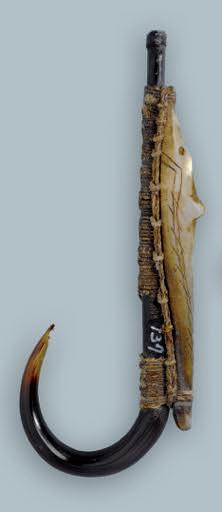
Tw o-piece Bonito Hooks
T he four maps show the regional distribution of five hook types Why some hook types occur in a ver y limited area, and others over a several hundred kilometer region is ver y difficult to ascer tain It is cer tainly tr ue that in spite of cultural and linguistic differences between them, the islanders traded actively and g roups had contact with one another. Fish hooks were among the commodities that thus traveled over wide distances
T hese simply designed hooks (A) were restricted to the islands of Buka and Boug ainville. We know from Blackwood that “T he hooks var y considerably in size ( ) No mention was made of choosing hooks of colour suitable to weather and water, as re por ted by Hiroa for the Samoans, or that one kind was used in the bow and one in the ster n as re por ted by Ivens for the S E Solomons ( ) bonito fishing is usually car ried out from a plank canoe (mon), the smaller ones, with three seats, being used for this pur pose (...). Two rods are taken in each canoe, one to be used from the ster n and the other from the bow T he ster n line is ke pt trailing behind the canoe, the bow line is cast If there are more than two men in the canoe, the man in the bow does not paddle, but devotes all attention to playing for the fish. T he man at the ster n must attend to the steering as well as to his rod and line His

36
Pl. 18
(*) A typical C type hook
aktuelles hakenbuch 12.okt:miot neu vertikal 30.11.2011 18:08 Uhr Seite 36
(*) A typical E type hook.


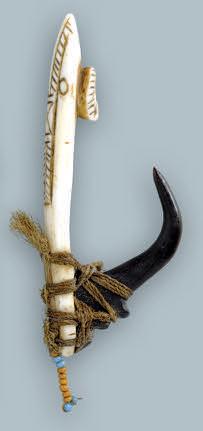

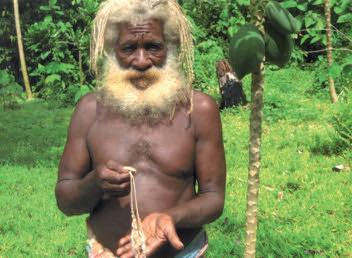
37
(*) A typical D type hook.
(*) A map, illustrating the regional distribution of bonito hooks of types A, B, C, D and E in the Solomon Islands, drawn after Cummings (9) and Bell, Specht, Hain (11)
(*) Chief Hopkins on Ulawa, holding two strings of spider web bait, raotai, to be used with a kite for catching mwanole fish (see also p 19 (*3))
aktuelles hakenbuch 12.okt:miot neu vertikal 30.11.2011 18:09 Uhr Seite 37
Photo: Amu Reiter
rod is not held in the hand, exce pt when landing a fish ( ) When a fish takes the hook, the paddle is thrown into the bottom of the canoe, the rod is caught up, and the fish jerked over the side Only one hook is attached to each rod No bait is used, the resemblance of the hook to the small fish on which the bonito feed being sufficient attraction. T he first bonito caught after a period of bad luck is decorated with paint and put back into the sea T his is supposed to attract the other fish to the hook ( ) In view of the impor tance attaching to bonito fishing in the native mind, it is natural that there should be a larg e number of “medicines” or magic, and an elaborate ritual directed towards ensuring a g ood catch Bonito magic is not common knowledg e, usually only one or two men in each villag e know it.” (6): 329331
T hese type A hooks are the long est in the Solomons “T he leader (attachement knob) is simply a g roove around the top (head) of the shank. (...) T he point is lashed into place with the help of lugs or holes through it Smaller fillersticks of wood on either side of the point ser ve as suppor t ” (9): 10 T his method of securing the tur tle shell point with little sticks of wood is also widespread in Micronesia
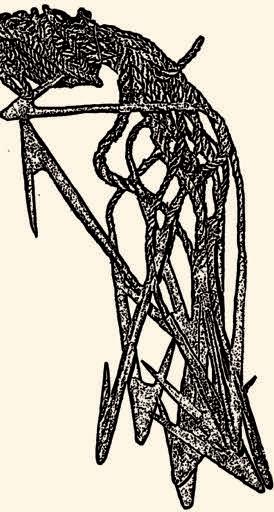
An examination of the distribution maps of composite bonito hooks reveals that Choiseul Island is the only island in the Solomons for which the literature provides no infor mation on any type of hook However, research in the Staatliches Museum für Völkerkunde in Dresden uncovered the existence of some examples attributed to Choiseul (coll 1897 by R Parkinson, no 32091), which are nearly identical to the hook illustrated here on plate 19 T his hook consists of a wooden shank bound with plant fiber line to which a wooden point is tied at a shar p angle T he binding is often strengthened with an application of Parinarium gum In the British Museum, there are also three V-shaped two-piece wooden hooks from the Beasley collection. T hey are attributed to nor ther n Boug ainville (the neighbouring island) and described as Ir okokoito Unfor tunately there is no infor mation on the method of use of these hooks In the Museum für Völkerkunde in Munich, there are two bundles (*1) containing over a dozen of these hooks (12-43-33b), which are incor rectly attributed to the Admiralty Islands T he description states that they are made of one piece of wood, notched and then bent back to for m the stee p angle, and finally bound tightly with strips of plant fibre (in the strictest sense of the word they therefore would have to be filed under “one-piece” hooks)


T he following plates clearly show us the variety and beauty of Solomon Islands bonito hooks T he shanks are most often of mother of pearl, rarely of Tridacna shell (*2) T he points are made of tur tle shell T he hook (*3), which is clearly type C, has a highly unusual and striking shank, which is made from the lip of a cowrie shell Samoan bonito hooks with similar shanks are known (compare plates 83 and 84).
T
understanding of the working of the materials involved So do the bonito hooks on the following plates. T he fisher men who created these objects unfor tunately remain unknown We can only refer to ethnog raphic literature to understand how
h e t wo e x a m p l e s o n p l a t e 2 0 d i s p l ay e v i d e n c e o f a c o m p l e t e
38
Pl 18
Pl 19
Pl. 83 Pl 84 Pl 20
aktuelles hakenbuch 12.okt:miot neu vertikal 30.11.2011 18:09 Uhr Seite 38
(*1) (*3)
they were manufactured, and the time it took to produce them Like all bonito hook shanks, the Tridacna shell shank shown here on Pl. 20 u.l. and (*2) assumes the for m of a stylized fish, but it is exce ptional for its detailed work T he eyes, the fins and additional or namentation are rendered meticulously, all with only stone ag e tools. T he Tridacna shell fish appears to swim towards the eleg antly shaped tur tle shell point of the second hook A fish hook of such vir tuosic for m is without peer in all of Oceania For what reason did its creator summon all of his skills and for mal ideas to make such a hook? Undoubtedly, the idea that the sacred bonito on a sacred fishing mission could only be caught with a “beautiful” hook played a central role in motivating him. T he plates 21, 22 and 23 show all variants of types B, C and D T he compact hook (Pl 22 t m) is of type B, and widely distributed in the Solomons T he shank was par ticularly ar tfully constr ucted in the for m of a stylized fish. Cummings states the following about this type of hook: “It is wide on the top, tapering towards the base, with the thick hing e par t of the shell at the top to for m the knob T he knob itself is car ved to for m two shor t projections which point downward and ser ve to hold the line in place.” (9): 11. T he type B, C and D bonito hooks illustrated here show a g reat deal of variation both in the shape of the tur tle shell point and the manner in which the knobs are car ved to fit the snoods. Cummings states the following with reg ards to type C: “T he knob of these hooks is car ved on the shank near the head; it is triangular in shape and projects out from the inner surface of the shank It is g rooved to hold the line ” With reg ards to the point, he adds: “T he point is attached using small car ved lugs on the point without the help of the holes ” (9): 12 T he two hooks (1 and 4) illustrated in the lowest row are classic examples of type D. Cummings describes them as follows: “Specimens of this type differ clearly from the other recognised stylistic for ms in several respects T he dorsal side of the shank has a car ved ridg e (or, in a mother of pearl shell example, an incised central panel) with cross-hatch, zigzag, her ring-bone, or transverse incised lines ( ) T he knob of all Type D hooks is a projection located on the inner surface of the shank, one-fifth of the way down from the head. T he knobs have either a simple appearance, or are more or less triangular in outline, in which case they closely resemble those on Type C specimens In addition, at the sides of the shank, on the same place as the knob, there are projecting fins or small transverse incised lines. T he head of the shank comes to a point ( ) In shor t, a Type D hook gives the appearance of a highly stylized fish ” (9):13 T he earliest illustration of this attractive type of hook appeared in the Godeffroy Museum catalog published in Hamburg in 1881 (2), on Pl XVII, Fig 10 2 T he smallest hook on plates 22 and 23 could be considered type C on account of its binding It is first illustrated in Edg e-Par tington (3): 209 On plate CIV of his monog raph, Beasley shows other examples of this quite rare type of hook Its place of origin is cer tain, as Codrington collected it on Ulawa Beasley remarks: “Whilst confor ming to the g eneral type of composite spinner hooks, yet in outline and the use of a par ticular shell for the shank they are unique T hese are cut from Trochus tesselatus and preser ve the delicate colours of this shell ” (8): 69, Pl. CIV.
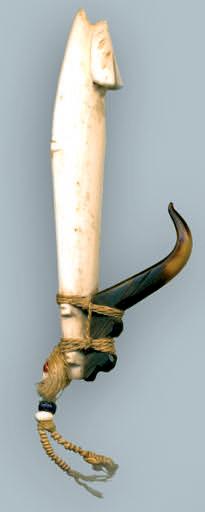
Plate 23 illustrates the back sides of the shanks of type C and D hooks,
Pl. 20
Pl. 21
Pl. 22
Pl 23
(*2)
Pl 22
Pl 22
Pl 23
39
Pl 23 aktuelles hakenbuch 12.okt:miot neu vertikal 30.11.2011 18:09 Uhr Seite 39
Pl 23
Pl 22
Pl 23
Pl. 22
Pl 24
Pl. 25
Pl 26
most of which are decorated T he literature unfor tunately provides no satisfactor y explanation for the meaning of these or namentations. T he question as to whether they are marks of ownership remains open to question T he decorations usually consist of cross-hatching, applied to a convex strip that may r un along the entire length of the shank, or only a par t of it. T hese hatch marks also ador n the sides of the shank beginning at its middle On plate 23, Hook 4 also shows this type of lateral decoration Eleg ant cross hatchings are seen on the beautifully for med shank on plate 22 (u r ) T hey r un along the sides, from the area that re presents the pectoral fins to the shank’s end, where they meet Plate 23 of side views once ag ain demonstrates the ing enuity with which various materials were used in the manufacture of bonito hooks T hey are all type C T he var yingly shaped and eleg antly for med tur tle shell points are bound to the shanks with fine plant fiber twine, and the carefully worked side strip prevents the line from slipping. In the 20th centur y nylon line was also used because it was more resistant to cor rosion from sea water As early as the 19th centur y, finely worked shell beads such as those seen on plate 22 (bottom row) beg an to be re placed in many instances by impor ted European glass beads (Pl 22 first and second rows)
Pl 24
A unique variety of type E bonito hook (*1), restricted to the island of Malaita and the small southeasterly islands of Ulawa and Uki, is shown on plates 24-26 Cummings says the following about it: “T hey differ from the other types recognised in that the shank itself is of tur tle shell, bent in the shape of a conventional metal fish hook, rather than of mussel or pearl shell A strip of mother of pearl or other shell, however, is tied on to the dorsal side of the singlepiece hook (...). T he added strip is car ved to resemble a stylized fish or a cuttlefish or squid or a reef wor m (*2a) T he shank area of the tur tle shell hook is wrapped with native twine ( ) ” (9): 14 No comparable piece is found in the literature for the extremely small hook on plate 24. It appears to be unique. T he hook in the lowest row at right is of exce ptionally ar tful manufacture (*2b) In order not to obscure the imag e of the wonderful stylized mother of pearl fish with the extremely fine plant fiber binding, tiny protr usions around the head and caudal fin areas ser ve to hold the line securely to the tur tle shell shank Cummings, Bell, Specht and Hain all maintain the type E hook occurs only on Malaita However K aschko found it on Uki as well (10): 194. T he indig enous name for the hook is




Ta’i Hinou
Fully sculptural renderings of fish such as (*3) are rare among type E hooks. Edg e-Par tington shows a ver y similar example (3): 209, Fig. 6. T he hooks shown give a g ood impression of the countless variations seen in the mother of pearl lures, which are always bound to their shanks with meticulous care T heir ver y special appearance can be attributed to their for merly sacred character, in the times when the hunt for the highly prized bonito was sur rounded by taboos, and the techniques for the manufacture of hooks was transmitted from g eneration to g eneration
Pl 26
Plate 26 illustrates well the incredibly accurate plant fiber lashings all along and around the shank (bonito hook type (E)).
40
(*2a, 2b)
(*4)
aktuelles hakenbuch 12.okt:miot neu vertikal 30.11.2011 18:09 Uhr Seite 40
(*1) A type E bonito hook collected on the Kor rig ane expedition with a stylized fish made of stone tied to its shank
T he earliest illustrations of these unique hooks are also found in the Godeffroy-Catalog (2) T he hook appears in Edg e-Par tington (3) some ten years later. It is sur prising that these hooks, once ag ain re presentations of fish, remained confined to the islands of Uki and Ulawa nor th of Makira T hanks to Michael K aschko, who inter viewed the then 65 year old Wilson Waisau in 1971, many interesting details on the use and manufacture of these hooks are known For the hooks made of various materials shown on plates 27 and 28 we use K aschko’s studies as a reference. (10). T he fisher men call these hooks Ta’i on Uki. “T he Ta’i is a one-piece bonito hook that is made of various for ms of sea and snail shell But tur tle shell and bone are also used Mother of pearl predominates, and bone Ta’i are fairly rare”. K aschko gives a detailed description of the manufacture of mother of pearl hook “A new shell is broken by bur ning and pecking with a piece of cher t, and a piece is g round on the hau mea (g rindstone) to make it f lat and round T hen the haukala (stone file) is used to make a cut in the middle, and branch hau kau (coral) is used to expand the cut and shape the inside T he stone file is used to finish the shaping, the base, and the knob for attaching the line, and finally to smooth and shine the entire lure. A hau nati (cher t f lake) is used to drill small holes for eyes and make other markings on the body of the Ta’i T he bur nt fr uit of the talo tree is used to blacken the makings on the lure It takes four days of full-time work to make a Ta’i, and each man should have at least three or four ” (10): 195
When a par ticular Ta’i had proved especially successful, it would often be handed down from g eneration to g eneration, and was both stored and used with g reatest care If such a hook broke, it was ke pt, so that similar Ta’i could be made subsequently, using it as a model
T he extent of the Oceanic fisher man ’ s inventiveness with introduced materials is made clear by one of the rows of the one-piece hooks on plate 28, which are inlaid with circular pieces of lead Sur prisingly, K aschko does not allude to these long used hooks. On two of the Ta’i, the lead appears to re present eyes (nrs 5 and 9), and on hooks nrs 1 and 4, it reminds of the punctuate marks on the hooks called Toheo (compare plate 29) Nr 2 is another variant with lead inlay, and also has a small piece of lead tied to the back of its shank with nylon line. T he Ta’i on plate 28 (l l) is unusual for its somewhat compact for m, which results from the inlay, secured with Parinarium gum, on the back of its shank Unfor tunately no infor mation is available on the pur pose of these inlays, but it can be sur mised that the lead adds the right weight to the ver y light tur tle shell hook to facilitate sinking it to the optimal de pth
A few other unusual Ta’i hooks are especially notewor thy (*4) On the previous pag e is an old mother of pearl hook with notches along its rim T he stylized fish on the back of the shank also has these notches on its belly side. T he hook with shell inlay also appears to be unique It was collected in 1865 and is among the earliest hooks known from the Solomons T he shank made from Turbo mar moratus shell was covered with Parinarium gum, into which two shell beads were inser ted as eyes Another unusual hook was in the Hooper collection
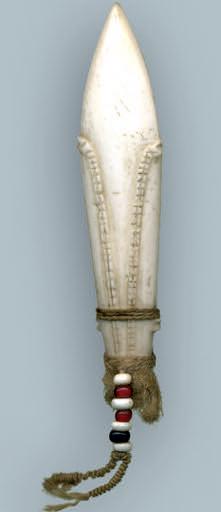
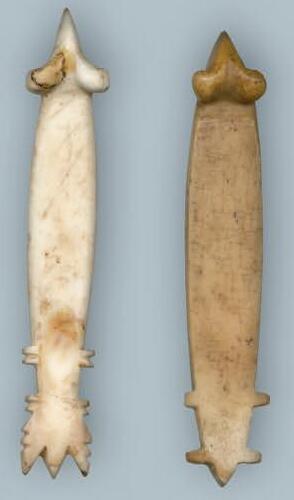
41
The One-piece Bonito Hooks fr om the Uki-Ulawa Ar ea
Pl. 27 Pl 28 Pl. 28 Pl 29 Pl 28 Pl. 27
aktuelles hakenbuch 12.okt:miot neu vertikal 30.11.2011 18:09 Uhr Seite 41
(*) Shanks of type B, left made from Tridacna shell and right made from bone
(*3)
Although of Tridacna and tur tle shell, bound tog ether with the ver y hard dr ying Parinarium gum, it must be classified as being of the Ta’i type. X-shaped pieces of cut Nautilus shell are pressed into the Parinarium gum on both sides of the shank (61): Pl 141, 1120
Two one-piece hook types, which K aschko classifies as Toheo and Toraho, are, like the Ta’i, restricted to the islands of Uki and Ulawa, which lie between Malaita and Makira Edg e-Par tington shows two of these small mother of pearl hooks and attributes them to San Cristobal (Makira) (3): Vol 1, Fig 10, 11
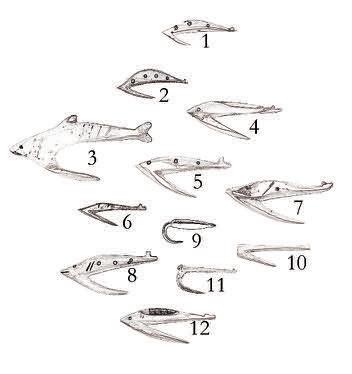

K aschko gives detailed infor mation on this hook type With reg ards to the Toheo on plate 29 he remarks: “T he Toheo is a small U-shaped lure and is made from r oa (pearl shell, usually of the black-lipped variety), wawahiu (an unidentified freshwater bivalve found on Makira), lauhi (Turbo mar moratus), and hato (Trochus shell). T he Toheo is used on a bamboo pole from a platfor m made of sticks and branches over the reef It is dipped up and down inside the water below the platfor m, and is meant to re present the movements of a tiny fish T he fish caught is the puma (mackerel). T he puma appears seasonally in r uns once a year, and in a g ood r un a man can catch a g reat many T he Toheo can break in three places: T he point can break off, in which case it can be reshar pened If the string breaks, the Toheo can be retrieved from the clear water. If a g ood Toheo loses its point limb, the shank may be retained as a model for making a lure A g ood Toheo may last a long time and be passed through g enerations ” (10): 196

Hook 3 on plate 29 (*5) differs from other Toheo in its almost naturalistic treatment of the caudal fin On other Toheo, this par t of the hook is used to fasten the line, and protr udes out from the shank at a right angle. T he shanks of nrs. 7 and 8 are sculpted in the for m of a fish, while the other hooks on this plate are more stylized re presentations of fish bodies
K aschko calls the ver y small hook nr. 11 Toraho. It took two or three days to make one Neither the Toheo nor Toraho hooks were used from boats, but rather from platfor ms T he Toraho was used to fish for a par ticular species of sardine
K aschko offers the following ver y detailed infor mation about Toraho nr. 11:
“T he Toraho is the smallest lure and similar to the Toheo It may be made from the same shell as the Toheo T he sequence of ste ps in the manufacturing process to produce a suitable blank are the same as for the Toheo (...). It takes about two or three days of full-time work to finish one Toraho Each man should have at least three or four Toraho or more T he Toraho is used on a bamboo pole from a platfor m over the reef, as the Toheo is (...). T he fish that is caught is the R aho, a sardine. T his fish appears seasonally in r uns once a year T he R aho strikes the Toraho as it hits the surface of the water T he Toraho and Toheo are used at different times, as the raho and puma appear at different times As with the Toheo, a g ood Toraho may last a long time if well cared for ” (10): 197
Woodford says the following: “T he lure is dropped about a foot dee p into the water and drawn up to the surface with a jerking motion When a fish is hooked it is skillfully dropped direct from the hook into a basket held ready for the pur pose in the fisher man ’ s other hand.” (4): 132. Hook nr. 9 on plate 29 is an unusual tur tle shell hook with a thickened shank Just as the previously described hooks from Uki,
42
Pl. 29
Pl. 29
Pl 29
Pl 29
Pl. 29
(*) A moder n combination of an old shank with a small fish car ved out of g reen plastic, from Ulawa
(*3)
aktuelles hakenbuch 12.okt:miot neu vertikal 30.11.2011 18:09 Uhr Seite 42
(*5) Sketch of Pl 29
it was undoubtedly used only to catch smaller fish Comparable hooks are illustrated by Edg e-Par tington (3): Vol. 1, 209, Fig. 13, who attributes them to San Cristobal (Makira), and by Starzecka and Cranstone, who refer to them as being “probably Central Solomons” (12): 19, unfor tunately with no fur ther explanations
Other hook types from the Solomons are on the plate 30. T hey are made of tur tle shell Exce pt for the exce ptionally well made hook (u l ), which also has a ver y fine plant fiber binding, there are comparable examples in the literature Woodford illustrates this type and states: “T his is a hook of tur tle-shell, and appears a clumsy enough implement in itself, unless it is intended to be both hook and bait in one; it may be meant to re present a wor m, (...) or it may be a por tion only of a complete lure ” (4): 131 T he hooks u r and l l have well sculpted shank heads T he second (u m ) is an unfinished tur tle shell hook, at a stag e of manufacture where the shar pened point still needs to be bent with heat, before it assumes the shape of the one below
T hree One-piece Tur tleshell Hooks and a Prehistoric Bonito Hook Shank from Guadalcanal (windward coast)
T he in-de pth research done by Amu Reiter in 2007 and 2010 is to thank for the identification of the hook types shown here T he one-piece tur tleshell hooks were collected in the area of Marau (on the east coast of Guadalcanal) (*1)
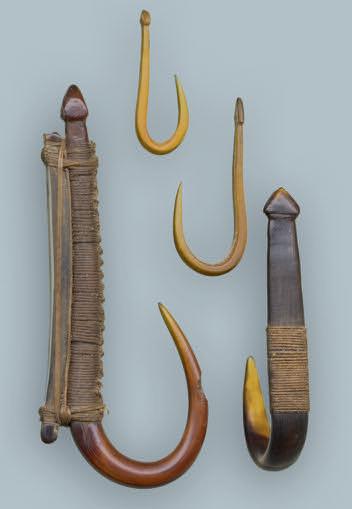
T he triangular shape of the top of the shank distinguishes these hooks from other tur tleshell hooks in the Solomons

T he prehistoric shank (*2a) is notewor thy for two reasons: firstly, because it is so far the only archaeological bonito hook shank known from the Solomons, and secondly because it displays a configuration of the shank top only found on a historic example (*2b) discussed below. T he prominent cross ridg e on the shank ensures that it can be bound to it to its line ver y securely T he ver y old and ar tfully shaped shank is probably made of Tridacna shell and has a binding which is unique not only in the Solomon Islands, but in all of Oceania. Future research and archaeological excavations on the so-called windward coast might bring other examples to light in the future T hat the tradition of making shanks with this cross ridg e for the attachment of the binding endured well into the 20th centur y, is demonstrated by the complete bonito hook with its mother-of-pearl shank T his hook was also collected by Amu Reiter on the windward coast, in Masi villag e
A One-piece Tur tleshell Hook and Two Sinker Stones from Ulawa (*3)
One-piece tur tleshell hooks are known from many regions in the Solomon Islands Exactly how they were used, and what types of fish they were used to catch, is inadequately understood. No infor mation could be obtained about this hook, nor about the two sinker stones, which were collected inde pendently of it T hey are, and will probably remain, silent witnesses to a highly developed fishing culture that once existed (*4). It is possible that tur tleshell hooks of this size were baited, and lowered to the desired de pth with the small sinker stones
(*1) T he two type E bonito hooks, with the stylized bound mother-of-pearl representation of a f i s h , w h i ch a r e t y p i c a l o f M a l a i t a , we r e collected on the windward coast of Guadalcanal, and are readily recognizable by vir tue of this triangular shape at the top of the shank
(*4) Hviding (1996) describes a larg e number of fishing techniques for tiny Marovo Lag oon alone: “More than seventy named and distinct fishing methods exist in ten main categ ories, and t h e nu m b e r i s mu ch h i g h e r i f f u r t h e r classification is made, based on subcateg ories of methods that are species-specific and adapted to n a r r ow l y d e f i n e d m i c r o - e nv i r o n m e n t s ( )
Hook-and line fishing (21 methods) is the most widely used categ or y of fishing in contemporar y Marovo ” (215): 212 It is moreover ver y probable that only a fraction of the many methods once used could still be identified in 2011
43
Pl 30
(*2a; 2b)
aktuelles hakenbuch 12.okt:miot neu vertikal 30.11.2011 18:09 Uhr Seite 43
T he old and unusually shaped tur tleshell hook on plate 31 has a two-stranded twined plant fiber line, and a description tag written by Hans Never mann (*1), identifying it as being from the Solomon Islands Only one comparable hook, for merly in the Konietzko collection, could be found. Although identified as being from Choiseul, it is possible that it comes from a completely different par t of Melanesia (New Ireland or New Britain) T he ver y meticulously executed binding of the line to the shank, additionally covered by a 4 5cm long dense wrapping, was designed to make this hook, which was cer tainly baited, resistant to damag e or breakag e from a ver y substantial fish bite. T hat makes it safe to conclude it was used to catch larg er prey T he several millimeter thick tur tleshell shape r uns out to an ar tfully for med point
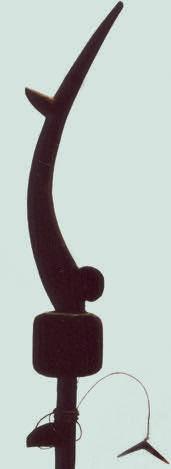
Fishing Floats on Ulawa
Beasley illustrates ver y ar tfully made f loats in the shape of a frig ate bird from the Central and Southeast Solomons (8): Pl CI T hey are decorated with Nautilus pompilius shell inlay, just like the stylized bird f loat here lacking the stone sinker. (29): 151.

Guppy’s remarks are interesting with respect to this: “It should be obser ved that these f loats are used to catch only f lying-fish, and that on account of their extreme shyness In the Solomon Islands f loats, on which the figure of a bird occurs (*2a, 2b, 2c), the line is wound round the hollow of the bird’s back and a projection below made for the purpose. For this the shape of a bird is cer tainly convenient, and the genius of those people leads them to or namented for ms ” (29): 151
Illustrations of these interesting fishing devices appear in Codrington in 1891 (28): 317 and in Edg e-Par tington in 1890 (3): Vol. 1: 197, Fig. 2. Waite describes and illustrates the f loats collected on Ulawa in 1865: “Floats from the Santa Cr uz and Easter n Solomon Islands functioned similarly despite their different appearance. Both consisted of ver tical pieces of wood to the bottom of which was attached a stone weight tightly enclosed in a little net-like bag of strips of cane A long fibre line with a hook or g org e at one end was wound round the wooden shank of the f loat. In f loats from the Solomon Islands, the line could be fastened around the spur that projects from the nar row stick-like por tion of the f loat and might also be wound around the back of the car ved imag e Hooks were of pearl (*3) or tur tle shell.” (64): 56.
Ivens gives a comprehensive description of the f loats from the island of Maramasike just south of Malaita and the island of Ulawa east of Maramasike: “Flying fish are caught in the summer months, long wooden f loats with stones attached being used, twelve f loats for ming a line (5): 385, Fig a T he f loats are all different, and each has its name and its place in the line. T he tops of the f loats are car ved to re present birds or fishes or other objects, or a leg endar y person like Kar eimenu Kar eimenu is a hybrid human shark figure re presenting a shark spirit (a ver y similar figure in (12): Fig. 17). T he line is fastened round a boss just below the car ving, and is three fathoms in length T he bait consists of the f lesh of the robber

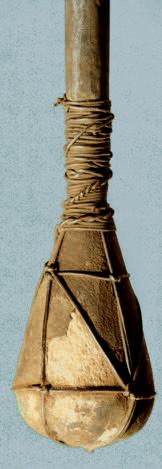
44
(*2c) (*2a) (*2b) aktuelles hakenbuch 12.okt:miot neu vertikal 30.11.2011 18:09 Uhr Seite 44
Pl 31
crab or of prawns ” (5): 385/386
Mead makes the following obser vations with reg ards to the Star Harbour area at the southeast tip of M a k i r a : “ F i s h i n g f o r g a r f i s h ( m a r o r e ) by t h e f l o a t technique in which a set of ten upright, wooden f loats e a ch d e c o r a t e d w i t h f i s h o r b i r d f o r m s a n d e a ch individually baited with small aigausu (g oat fish) or aiganafui fish is set in the harbour and allowed to drift with the wind In a demonstration that I witnessed a g arfish was caught within seven minutes of the f loat being set.” (65): 41
An Unusual Hook Or nament fr om the Solomons
T he exce ptionally beautifully shaped tur tle shell hook (*4) reminds one of Polynesian for ms. But the shell bead hackles, to which two dolphin teeth are attached at their ends, are more reminiscent of the southeast Solomons, where bonito hooks have similar shell bead hackles (compare plates 2123). According to Ivens, bonito hooks were used for ear piercing on Ulawa. He also writes of another use on the island of Makira in the southeast Solomons: “T he hole in the tip of the nose is a convenient place for car r ying a spare fish hook ” (5): 82 Ivens unfor tunately does not illustrate such a hook, so its for m can only be guessed at A drawing (*5) by Alphonse Pellion from 1819 is interesting in connection with this. It shows dancers on the Caroline Islands in Micronesia, two of whom are wearing fish hooks pulled through their right ear lobes T here is unfor tunately no fur ther infor mation on Pellion’s drawing, which is a unique document on the manner in which fish hooks could be wor n in Oceania.
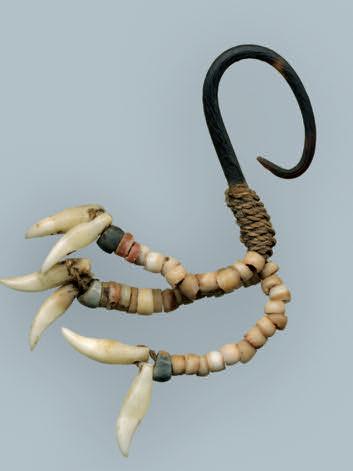
The Unique Rennell Island Shark Hook
Like the small islands nor th of the larg er Solomon Islands, Rennell Island is considered to be one of the “Polynesian outliers ” Polynesian navig ators reached and settled these outer areas of the Solomons between 1200 and 1600AD. Where they found small existing g roups of people, they mixed with them, and the result was that many elements of Polynesian culture are manifest in these places Rennell and its smaller neighbour Bellona are the wester nmost outposts of Polynesia. Because its coasts are larg ely inaccessible, fishing played only a subordinate role on Rennell T he intimacy with the sea for which Polynesians are so well known is not present among the people of Rennell It is therefore not sur prising that only the monumental shark hook is known from there Even it, however, is rare in collections.
Both hooks on plates 35-35 show signs of much use and g reat ag e T he ver y ar tfully made sennit bindings had to be redone from time to time “Shark fishing was a religious and spiritual ritual. T he shark hook, Guan’akao, is an ar tifact of these Polynesian fishing rituals T he hook itself was tapu According to
(*5)
Pl 21
Pl. 22
Pl 23
(*4)
Pl 33
Pl 34
Pl. 35
Pl. 35

Pl 34
Pl 35
(*1) Hans Never mann (1902-1982) must be seen a s o n e o f t h e m o s t s i g n i f i c a n t G e r m a n ethnologists After his g raduation in 1924, he was active at the Berlin Museum für Völkerkunde f r o m 1 9 2 6 t o 1 9 2 8 , a t t h e M u s e u m f ü r Völkerkunde in Dresden in 1930 and 1931, and then ag ain in Berlin from 1931 to 1956 He was on numerous research expeditions, and is the author of countless publications about Oceania
(*3) Mother of pearl hooks are not mentioned in the literature
45
aktuelles hakenbuch 12.okt:miot neu vertikal 30.11.2011 18:09 Uhr Seite 45
d’Obrenan on the voyag e of the Kor rig ane in 1939, “Fisher men took their places in the boat, leaving the centre seat free for a divine spirit; and special prayers were recited as the shark was bludg eoned to death ” (Quoted in Birket-Smith, (13): 7273 ) Birket-Smith says the following about the hook: “It is made of one piece and has a rather butt point, slightly f lattened and shouldered off from the rest of the cur ved limb, but without a barb T he shank limb is straight, ter minating in a knob and f lattened on the upper par t of the inside (*1) T he snood is of heavy sinnet wound around the shank in such a way as to for m two lashings se parated by a slightly projecting ledg e exce pt on the f lat inside of the shank where a her ring-bone patter n is produced. At the top the snood for ms a larg e loop with a seizing of somewhat finer sinnet ” (14): 71-72 Successful shark hunters enjoyed g reat recognition T hey hung the sharks’ caudal fins in their houses (14): 71 Kuschel illustrates an example with a thin plant fiber line beneath the somewhat offset point T his line was used to tie the bait to the hook (31): 74 Both hooks illustrated here show evidence of much use Small pieces of broken shark teeth are found embedded in the hard wood. Birket-Smith sug gests that shark fishing was abandoned with the introduction of Christianity, but was later resumed (14): 73
A rare Ruvettus hook from Nukumanu is illustrated on plate 32 Only its slender appearence and the ver y simple snood attachement distinguish it from those from Ontong Java
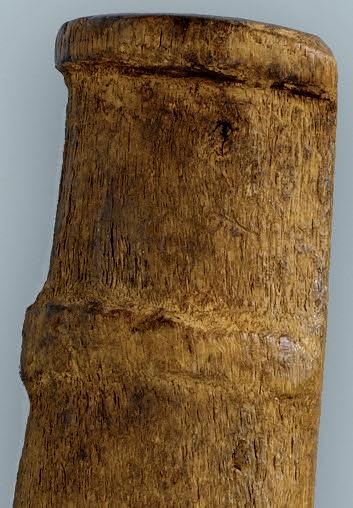
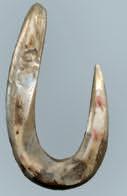
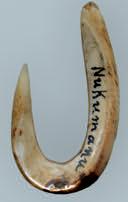

Four Bonito Hooks from Ontong Java
T he bonito hooks on plates 36/37 take us to Ontong Java, the nor ther nmost atoll of the Solomons, with a gig antic lag oon Only some 1500 people of Polynesian descent inhabit the over 100 tiny islands, which rise only a few meters above sea level. Parkinson writes: “In any case, the population of these islands comes from many different par ts of Polynesia, and consequently has characteristics in all respects which testify to its connection with faraway places.” (16):108. Plate X in Parkinson’s work (*2) clarify his statement It includes objects which show Melanesian and Micronesian inf luences as well One-piece hooks of identical for m to the one in Fig. 12 are known from Manus Island and from the Wester n Islands. T he Trochus shell hook from Nukumanu (*3) is also of this type T he hook in Fig 10 could be from the Micronesian island of Ponape and the hooks in Figs. 7 and 16 show evidence of being of Polynesian origin. Sur prisingly, the hook on Fig 17 appears in neither Beasley’s nor Anell’s monog raphs It is identical to the left hook in plate 38, which Parkinson unfor tunately mentions only brief ly, to state that it was used for catching smaller fish On account of its length and compactness, such a hook could have been useful for capturing larg er fish T he word “Choiseul” is written in pencil on the right hand hook. It is cer tainly possible that boats moving on documented inter-tribal trade routes between Ontong Java and the southeasterly Sikaiana atoll g roup might have g otten lost and reached Choiseul. So the hook could indeed be from there. A third ver y similar hook is in the American Museum of Natural Histor y in New York (Cat No:80 1/2228)
46
Pl 36 Pl 37 Pl 38
(*3)
(*2) aktuelles hakenbuch 12.okt:miot neu vertikal 30.11.2011 18:09 Uhr Seite 46
(*1) Pl 32
Parkinson incor rectly designates the hook, lower left in Pl X, as a shark hook T he misattribution can probably be traced back to Finsch (15), who describes a similar hook from the Ellice Islands as a shark hook
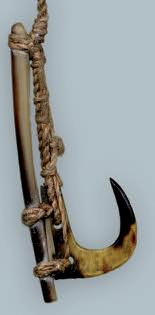
Even thorough research often fails to identify undocumented bonito hooks. T his is because there are many imprecisely identified examples in museums and the literature, and because only small details may differentiate hooks which come from areas ver y distant from one another, but which otherwise have a ver y similar overall appearance T hese details include the drilling of the point, the use of materials, and binding techniques T he four bonito hooks shown here can be attributed to Ontong Java. In an infor mative re por t published by MAN (*4), Lazar us, an inhabitant of the atoll, and Beasley, illustrate four two-piece hooks that also have the same kind of multiple stranded twined line as the examples shown here. Lazar us gives a detailed account of a fishing expedition. Excer pts from that account follow: “It is car ried out only in fine weather, and the fish caught are of three or four kinds, bonito called ( ) He-pa by the local people; secondly a kind of mackerel He-abo and occasionally a few Makobo along the reef-edg e on the retur n jour ney home ( ) T he canoe used was of a small type, plate D1, called Pan-pan and the crew on this occasion consisted of four natives, a small boy and the writer T he equipment was composed of ten long bamboo rods, He-makila, five shor ter ones and five sticks about 2 ft long also used as rods; a coconut leaf basket, 8 ft long by 1 ft dee p, with a rounded bottom and the top stayed out with sticks for holding the live bait was par tly submerg ed (*5) ( ) T he canoe proceeded outside the reef, where Mr Lazar us was instr ucted in the r ules of conduct for such an occasion, which included abstinence from talking, smoking and the throwing of anything overboard ( ) On sighting cer tain birds near the surface of the water, Hosivi (the headman of the canoe) g ave a shar p order and all paddled fast ( ) Seeing the bonito below he commenced throwing out live bait, one or two at a time and calling on his Kipua (in this case the spirit of his father) to make the fish bite ( ) After fishing for some time, the canoe pulled for the passag e in the reef, where, lifting the tabu on talking and smoking, Hosivi g ave a demonstration of the catching of Makabo No live bait was used exce pt on one small hook which was thrown out ag ainst the tide so that it would have sunk by the time it could have drifted level with the canoe. (...) On retur ning to Leueneuwa the fish - 50 in all (...) - were car ried to the house of the owner of the basket - the bonito first – and all laid across the bearer’s ar ms, which were first wrapped with a por tion of one of the centre leaves of a coconut palm. Hosivi shared them out to ever yone, including the owner of the house; the women then car ried them to the recipients’ houses, which in one case of one individual was the house of his prospective wife ” (213): 57/58 Beasley makes the following remarks about these hooks: “T he four hooks contained in the wooden pot, plate D3, are re produced in plate D2B, Kie-kawa or He p-pa Each measures from 8.3 cm to 10.7 cm and is provided with a strong thick twisted line, Hoo-wa, 19 ft long and of neat workmanship, having the ends tapering in the approved Polynesian style ( ) All the four hooks are strongly made, but lack somewhat the fine finish of those found fur ther east. All are constr ucted in exactly the same way, and were probably made by the same hand T he barbs are of strong
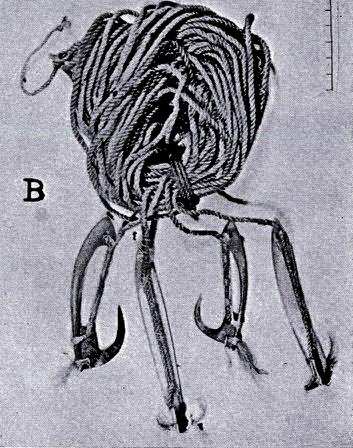
(*) T his ver y small bonito hook from the area of Ontong Java and Sikaiana differs from the Polynesian type in its slender shank and how the snood is tied on T he small shank head does not allow for the drilled hole A notch around the head allows for a secure fastening of the snood t o t h e s h a n k a n d t h e p o i n t T h e p o i n t attachement is fur ther stabilized by slipping fish bones under the line attachement on either side of the point A bunch of eight comparable bonito hooks (from Tobi and 3,5-5,5 cm long) is housed in the ethnog raphical Museum in Munich (Inv nrs 12-43-32 a-h)
(*5) Compare with drawing on pag e 207

47
Pl. 36 Pl 37
aktuelles hakenbuch 12.okt:miot neu vertikal 30.11.2011 18:09 Uhr Seite 47
(*4) Four bonito hooks from Ontong Java illustrated in: MAN, Vol XXXVII, April 1937, Fig 2b
(
(*) Ruvettus fishing in the Ellice Islands (24): Pl 3, Fig 7
Pl 41
T he shank of one of these four hooks has a small g roove filed into the the shank head It therefore re presents almost perfectly the head of a small fish with eye and mouth (*2)
Beasley comments on the similarity of these hooks to those of the Ellice Islands to the east “It is obvious that similar types ag reeing even in small details must have a common source of origin ( ) Weighing up the evidence it becomes clear that Ontong Java has experienced more than one culture inf lux, and from several distinct and far-away localities ( ) ver y obviously these culture-elements have been introduced at different inter vals and over a long period. Most would be chance ar rivals by stor m blown canoes ( ) T he few sur vivors of one such canoe would have little difficulty in introducing new methods and customs among such a small population as Ontong Java is capable of suppor ting” (213): 59. Beasley also discusses the unique “domed wooden box koo-an on four shor t legs T hese boxes (*3) are no long er in use, and the specimen illustrated (pl D3) was obtained from the present chief Makaite, who had retained it as an heirloom.” (213): 59/60.
An Unusual Hook for a Dee pwater Fish, RUVET TUS PRETIOSUS
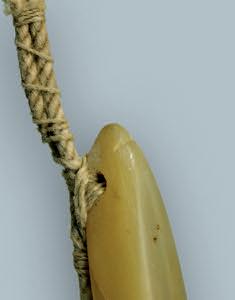
T he hook on plate 39 and those on plates 40 and 41 resemble the previous one in ever y detail It is a Ruvettus hook, a type widespread throughout Oceania, but most commonly known from the Wester n Pacific Anell cor rects several er rors made by Gudg er, and clearly distinguishes this type from shark hooks He gives exact infor mation on its distribution and occur rence in all the island areas of Oceania (19): 228-237 It is sur prising that Hedley was the first to describe this hook type in 1897 (20) Either it escaped the attention of earlier explorers, or it is a for m that developed late, like the New Zealand Kahawai hooks, which Cook would have obser ved and collected had they existed at the time of his visit, but which only begin to be documented in the early 19th centur y
Ruvettus Pretiosus, the Oilfish, is variously described in the literature (21): 258, (18): 211, (19): 229, (17): 38 It reaches a length of about 180 cm and a weight of 60 kilos, and inhabits waters between 200 and 500 meters in de pth T he fish is highly prized for its oily white meat, although its consumption has laxative effects.
Beasley’s statements
(*3) Along with a number of two-piece hooks, Sarfer t and Damm illustrate five ver y different wooden receptacles, all nonetheless ver y typical of Ontong Java and the neighbouring islands of Luangiua and Nukumanu (214): Ills 79, 80 T he authors also make the interesting asser tion that two-piece hooks were introduced by way of a canoe from Sikaiana “At the time Sarfer t was there, the people of Nukumanu still went to Sikaiana to obtain mother-of-pearl hooks” (214): 116
T he oil is used for medicinal pur poses On the Ellice Islands, according to Koch (17): 38, only the “designated master fisher men ” were able to manufacture Ruvettus hooks. For the V-shaped shank and the V-shaped point, they used the hard wood from the cr utches of the Pemphis acidula tree T he two pieces were bound tog ether with bast line in such a way that the point descended at a downward angle back towards the shank, and slightly to the side, so that the Ruvettus could take it Finsch describes the oilfish as having “wonderful larg e eyes ” that see ever ything, so that fisher men only ventured out beyond the reefs to catch it in absolute darkness and in a complete calm T hey baited the hooks with f lying fish sliced open and tied to the point and around a par t of the shor ter side of the shank (15): 258. Gudg er illustrates a hook on which the line for securing the bait fish is clearly visible (18): Fig 32 Few Ruvettus hooks in collections still have the stone

48 t u r t l e - s h e l l , w i t h t h e e d g e s n e a t l y r o u n d e d o f f ( ) ” ( * 1 f o l l ow i n g p a g e )
Pl. 39
Pl 40
Pl 67 * 1 ) T h e h o o k s s h ow n h e r e a l s o s u p p o r t
aktuelles hakenbuch 12.okt:miot neu vertikal 30.11.2011 18:09 Uhr Seite 48
(*2)
sinker attached to the line (compare pl 67), which was used to lower the hook quickly to the desired de pth. Getting the hook to sink quickly also helped to kee p other fish, sharks for example, from taking the bait before it had reached its destination Becke states: “To sink the line, coral stones of three or four pounds weight are used, attached by a ver y thin piece of sennit or bark, which, when the fish is stuck, is always broken by its str ug gles, and falls off, thus releasing the line from an unnecessar y weight It is no light task hauling in a thick, heavy line, hanging straight up and down for a length of from seventy-five to a hundred fathoms or more (with a 6 foot Ruvettus str ug gling at the end of it) ” (22): 149 Ruvettus hooks whose stone sinkers are not detachable also exist. (23): Ill. 89. What was impor tant was that the baited hook should f loat horizontally at the appropriate de pth for the Ruvettus to be able to snap at the bait in its usual swimming patter n
T he wooden hook’s elasticity made it possible for the fish to g et its lower jaw into the small space between the shank and the point T he point then pierced the jaw and thus prevented the fish from escaping Kennedy documents the way in which this occurs with infor mative illustrations (*4, 5). (24): Fig. 7, 9, 11 and 12. A Tahitian fisher man describes an interesting variation, in which the positioning of the long hook in the fish’s mouth causes its neck to break (*6)
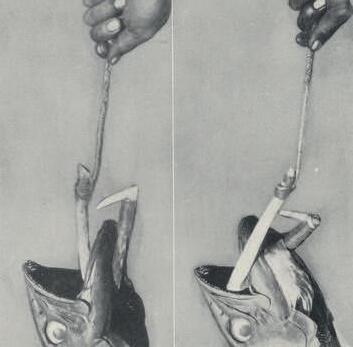
Note: According to Parkinson (23): 536-537 the Ruvettus hook was still in use on Luangiua and Nukumanu in 1907, while it had all but disappeared from Tauu and Nuguria He also describes the dang ers associated with the Ruvettus hunt T he fish can only be found outside the reefs, and if the fisher men lose sight of their island due to a sudden chang e of weather, they risk being lost at sea or being car ried away to other areas. T his may be how the only Ruvettus hook illustrated in the early literature reached the island of Nissan, west of the Mor tlock Islands (25): 126 Uhlig, who spent three years on Nissan and lear ned much about its people’s way of life, associates the hook he collected there with the capture of por poises (Phocaena communis), and so was unacquainted with its tr ue use T hat could be an argument for the position that the Ruvettus hook was not used on Nissan at all. In his publication, Gudg er re peats Uhlig’s infor mation, and also indicates that the Ruvettus hook can be found on Buka (18): 310 In Krause there is clearly a mix-up, and the Ruvettus hook is confused for the bonito hook (25): 126 T he Santa Cr uz Islands at the easter n end of the Solomons maintain d e ve l o p e d t r a d i n g r e l a t i o n s b e t we e n t h e m M e l a n e s i a n p o p u l a t i o n g r o u p s predominate on the larg est island of Ndende, while Polynesians have settled on the Reef Islands and on the distant and tiny islands of Tikopia and Anuta. According to Koch, the manufacture of traditional hooks had all but disappeared in the 1960s, due to the impor t of steel hooks that by then had long been taking place (26): 41 Even on the remote Reef Islands, no one could remember the tur tle shell, mother of pearl and wooden hooks described (but not illustrated) by Speiser and Foy (27): 188.
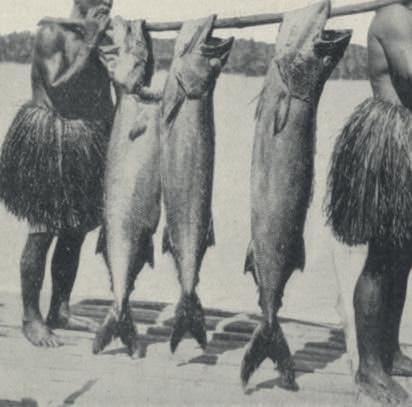
An exce ptionally fine bonito hook, somewhat different in details from the Solomon hooks previously presented, comes from the Reef Islands T he shank is ver y similar to those from the Central Solomons, but the rounded, long and ver y tapered point is ver y reminiscent of the beak shape of the frig ate bird, who leads
Pl. 42
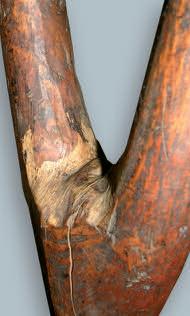
49
(*4)
(*5)
(*) T he r ubbing marks from the Ruvettus’ teeth are clearly visible.
aktuelles hakenbuch 12.okt:miot neu vertikal 30.11.2011 18:09 Uhr Seite 49
(*6) Remy Carbayol in personal cor respondence
Pl. 42
the islanders to the bonito swar ms T he ver y strong plant fiber binding to the shank, and the Parinarium gum applied over it, are also exce ptional on this hook. Parinarium gum occurs in nearly all areas of the Solomons, and is widely used in boat building and for decorating bowls T he question arises as to why, given the perishable nature of the plant fiber bindings, this universally present and so durable adhesive is not used for hooks in all areas – as it was on the Reef Islands for instance Presumably because the hooks’ creators in cer tain cases chose to foreg o an optimal attachment method, deeming it preferable not to obscure the perfect imag e of the prey that the shank re presented, with the application of the gum Koch illustrates a bonito hook from the Reef Islands comparable to the one on plate 42, but without gum (26): Ill 29
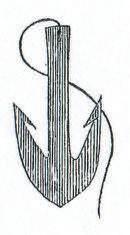

Pl. 43
Pl 44
Pl 45
T he anchor shaped hook on plate 42 collected in 2005 in Lue pe on Graciosa Bay on the Santa Cr uz island of Ndende has almost no comparables in the literature (*1a, 1b) Such hooks were used for catching smaller sharks T he ver y robust plant fiber binding is treated and imbued with a reddish tree bark sap to make it more resistant to salt water cor rosion.
T he Santa Cr uz Islands fishing apparatus known as Teu Malimba (*2), used for catching f lying fish, has been documented for a long time It has a wooden f loat variously decorated with or naments, a stone sinker, a tree bast line and a tog gle shaped tur tle shell hook, and was still in use in 2005 Koch collected the illustrated fishing implements as well as the tog gle shaped tur tle shell hooks during his stay on the main island of Ndende (26): Ill 30 Fisher man Alfred Lea affir med that he still used them Koch states: “T he fisher man g oes out onto the high seas with several f loats, baits the hooks with crab claw meat, and casts them into the water one after another Weighted by stone sinkers, the f loats are ver tical in the water, and therefore the upper par t remains visible above the water’s surface, to the fisher man. ” (26): 41. T he simple unweighted wooden cylinders that Koch did not obser ve were still used to catch f lying fish in 2005
T he first illustration of the Santa Cr uz Islands f loat appears in Codrington’s “T he Melanesians” in 1891 (*2). T he wooden f loat here is also decorated with eng ravings Although it would appear obvious that the fisher men used these marks to identify their equipment, Beasley (8): 65 quotes a Santa Cr uz mission boy saying: “that the marks upon them are not ownership marks, but ser ve to indicate the order in which they are placed in the sea, for they do not throw them in anyhow, but place them in proper sequence T he one with the human figure upon it, he supposed, would be the first, and probably re presents the spirit who has charg e of the f lying fish ”
At the easter n extreme of the Solomon Islands, on the tiny island of Tikopia, a Polynesian population remained larg ely untouched and intact until well into the 20th centur y According to Speiser (1913), it is one of the last islands in Oceania where ethnically pure Polynesians still exist. (32): 304. Fir th studied the culture thoroughly (33, 34) Hurst illustrates one-piece mother of pearl and tur tle shell hooks that resemble examples from the Bismarck Archipelag o, as well as a composite bonito hook that has all the characteristics of west Polynesian examples. (13): 56 Rivers describes all the hook types from Tikopia, but does not illustrate
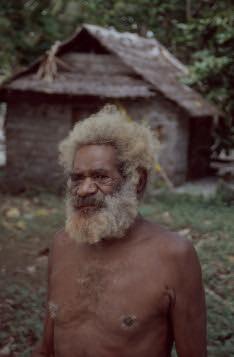
539
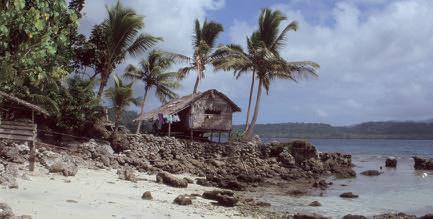
50
(*1b) A ver y similar “anchor-shaped” hook is illustrated in an early publication on Polynesia, but without any additional infor mation (63):
(*) Luepe villag e at Graciosa Bay on Nendo Island, Santa Cr uz and an experienced fisher man living there
(*1a) T he illustration from 1838
aktuelles hakenbuch 12.okt:miot neu vertikal 30.11.2011 18:09 Uhr Seite 50
(*2)
any He mentions one wooden shark hook, which he states was “baited with f lying fish, the whole fish being put on the hook”. With reg ards to the bonito hooks, he says: “One of the most highly prized fish of the Tikopians is the atu or bonito which is caught with a tur tle-shell hook baited with a white feather ( ) When they come near the shoals of bonito the man in the ster n moves the rod so as to draw the feather to and fro on the water ” (35): 331 Although Fir th remained on Tikopia for an extended period of time, he had g reat difficulty obtaining any hooks through trade “T hough I tried on various occasions to substitute fish hooks these were refused ( ) T he bonito-hook is one of the items of supreme impor tance in the native exchang e system, as in the acquisition of a canoe, or indemnity for wrong, and cannot be re placed ” (34): 380
A fish-shaped shell shank can be seen wor n as a neck or nament by a man in a photog raph from 1913, (*3), (32): Pl. 100. A 1973 photo shows an “Elder of Tikopia In addition to his traditional tattoo patter ns, his most prominent or nament is a pearl shell neck pendant in the for m of a trolling fish hook lure ” (36):19 “Fish hook point neck or naments” from Tikopia are illustrated in the same publication, but they are made of tur tle shell, in contrast to those shown on plate 46, which are mother of pearl (36): 163 “Women of Tikopia often wore tur tle shell fish hook points as par t of their jeweller y, usually as a single pendant on a cord around the neck or as a necklace with several attached to the neck cord Occasionally they might also be wor n on a cord around the wrist ” T he tur tle shell hook necklace shown here comes from Matilda Koroa of Nukukasi on the nor theast coast of Makira Many emig rants from Tikopia live there She wrote the following about the necklace in 2008: “T hese are Tikopian traditional fish hooks. T hey were made from tur tle shell T he double one is known as “Mangana” T hey are no long er used for fishing but ke pt as or naments to wear, especially during traditional ceremonies T hey are now quite difficult to find. Some are also made from other sea shells. T hese shells g o back as far as the 1960’s (*4) ” T he three mother of pearl hook or naments were collected on Makira and on Santa Cr uz in 2005 T he stylized fish on Pl. 46 and the double hook were obtained in Nukukasi on the nor th coast of Makira, from Tikopian men who live there (*5) Nukukasi is a larg e villag e, which was founded by emig rating for mer inhabitants of Tikopia over half a centur y ag o T he ver y old mother of pearl point in the right of plate 46 belong ed to Duddley Melona, from Neo Island in the Santa Cr uz Archipelag o Unfor tunately no infor mation could be obtained about its origins, but it is likely that this point came to Santa Cr uz from Tikopia as a result of inter-tribal trade.
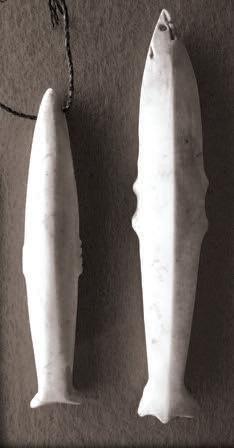
Anell illustrates a notewor thy bonito hook from Tikopia (19): Pl VI b T he arag onite shank resembles those known from Banaba Island, while the point is reminiscent of the west Polynesian for m T his bonito hook incor porates a mixture of Micronesian and Polynesian cultural elements To conclude, there are three types of or nament hooks from Tikopia, which are illustrated here.
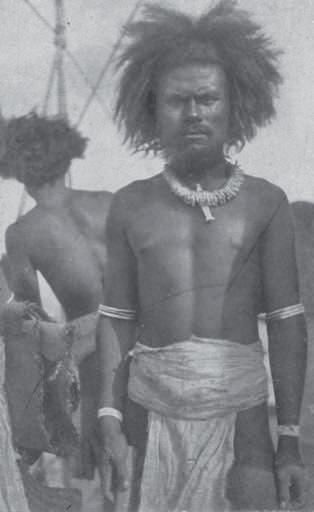
51
Pl 46
Pl 46
(*3)
(*5) Two fish hook shank pendants from Anuta, made from Tridacna shell T hey are now in the collection of the Bishop Museum, Honolulu
aktuelles hakenbuch 12.okt:miot neu vertikal 30.11.2011 18:09 Uhr Seite 51
(*4) Matilda Koroa in personal cor respondence
71 1950 30 486 and 71 1945 5 6 T
Vanuatu (New Hebrides) – Loyalty Islands – New Caledonia An Enor mous Oceanic Area Without Significant Hook Fishing
It is sur prising that here, just as on larg e par ts of the New Guinea coast, in spite of the presence of the same favorable conditions which existed in the Solomons, no significant hook fishing took place Perhaps more thorough archaeological research will broaden the re per toire of known hooks in the future T he few publications that mention hooks describe a one-piece hook of roundish for m, without barbs, and usually of tur tle shell. Beasley says about Vanuatu: “I have not been able to discover any authentic examples; in fact, one recent writer (N Hardy: “T he Savag e South Seas,” London 1907, p 180) g oes so far as to say that “Neither lines or hooks are used in the New Hebrides for fishing. T hey scor n this method in spite of the demonstrations by the whites ” Beasley could not find any hooks from the New Hebrides in British collections Likewise, no mention is made of them in Speiser’s comprehensive monog raph on the New Hebrides. He states:
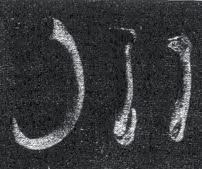
“It is ver y questionable whether the natives actually ever had any fish hooks I myself occasionally found a mother of pearl hook( ) Such hooks were identical in ever y detail to those from the Solomons, and if they actually were a par t of New Hebridean native culture, they would not be so rare( ) Fish hooks from the New Hebrides in European collections are so seldom seen, that one can assume that those few that are so identified, are either misattributed or came from somewhere else I believe that indig enously manufactured fish hooks were absent from the New Hebrides.” (66): 156/157.
Hadfield gives the earliest infor mation available on the one-piece mother of pearl and tur tle shell hooks from the Loyalty Islands (*1) 1920 (67): 83/84, Ill.p.83. T he author says the following: “Fish hooks were cut from pearl or tur tleshell T hey were beautifully pointed and cur ved, but never barbed, and they varied in size and shape In examining these exquisite hooks ( ) one mar vels that the men, with their big clumsy fing ers and without the aid of any car ving tools save the bits of shar p stone or rock they used, could do such delicate work T he making of these hooks cer tainly involved a g reat amount of patience and labour; and one cannot wonder that the native-made fish hooks have long been superseded by the European variety I doubt whether one specimen of the shell fish hook has been seen on the island for a g reat number of years, with the exce ption of those in my own collection.” (67):82/84 Beasley illustrates fur ther examples. (8): Pl. XCVI. T he three hooks published by Sarasin from the island of Mare in the Souther n Loyalties are unique and cannot be compared to any others in Oceania (68): Fig 147
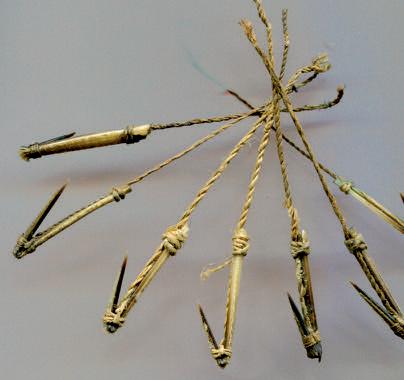
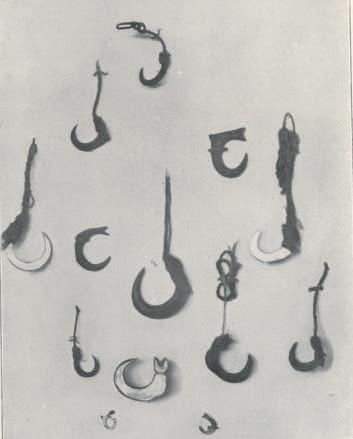
T he for m of the hook is deter mined by the shape of the thick por tion at the opening of the shell of the Placostylus land snail (*2 and *3) of which the hook is made. T his por tion of the shell can be quite easily se parated from the rest of it. Unfor tunately, Sarasin does not discuss how these hooks were used, or what kind of fish they were intended to catch He writes: “T hese were used as fish hooks in the past – Nowadays, they have been nearly or entirely re placed by steel hooks –T hey are ver y attractive devices, made from the thick por tion at the opening of the
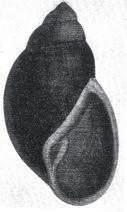
52
nu m b e r s a r e : 7 1 1 9 2 5 3 1 6 , 7 1 1 9 4 3 0 3 9 2 x ,
(*4) T hey come from the Loyalty Islands, which are just east of New Caledonia T he hooks’
he British Museum posts an exactly dated one-piece tur tle shell hook on the inter net, which was collected by James Hadfield on the island of Lifou, at the center of the Loyalty chain (Oc 1944 02 339)
a l s o b e s e e n i n t h e e x h i b i t i o n o f t h e
Two one-piece tur tle shell hooks from Lifou can
Wereldmuseum Rotterdam
(*2), (*3)
(*5a) aktuelles hakenbuch 12.okt:miot neu vertikal 30.11.2011 18:10 Uhr Seite 52
(*1)
shell of the land snail ” (68): 242
A few museums have posted their fish hook collections on the inter net, and although provenances given for them are often either imprecise or incor rect, at least interesting photos of hooks are now available for comparison
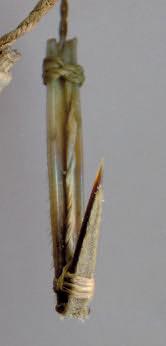
T he Musée du Quai Branly shows several hooks mistakenly attributed to New Caledonia, which match examples illustrated given by Beasley and Hadfield (*4) A unique fishing device in its collections, attributed to New Caledonia, probably comes from the Loyalty Islands as well It consists of a triangular piece of mother of pearl shell with rounded cor ners, from which four one-piece tur tle shell hooks hang at the end of plant fiber lines of var ying length. T he binding of the lines to the hooks is executed with meticulous care As is so often the case, no additional infor mation is available on this ver y interesting fishing apparatus. (#71.1962.72.43).
Seven One-piece Hooks Made from Fish Bones (*5a, 5b)
T hese hooks are made from fish bones or sting ers, which were notched and then bend over at a 30° angle from the shank At the bend the point position is fixed with plant fiber bindings. T his line continues inside and up along the shank to ser ve as snood At the shank head it is tied on with additional fibers around the shank No comparisons can be found in the literature for these hooks T hey could be attributed to New Britain, if one follows the statements made by Finsch, Parkinson and Ribbe, that fish bones and spikes were used here for the manufacture of hooks. Finsch illustrates a hook which was made from a fish spine-sting er (Ag eo) which “is fixed by a fine string also ser ving as the line ” (15):I:108, pl IV, Fig 11 (*6) Parkinson states: T he fish hook was made from a bone of a cer tain fish and quite primitive; due to the unimpor tance of line fishing here, this device was never fur ther developed or perfected ” (23):101 Ribbe, who stayed in the late 19th Centur y in the nor ther n regions of New Britain on the island of Neu Lauenburg (Duke of York Island), only saw European hooks, but had heard of mother of pearl and fish bone hooks having been in use previously
(*) “Among the Natives of the Loyalty Group” (67): Frontispiece
(*5b) (enlarg ed)
(*6) A ver y interesting tablet (St-946) of small hooks collected by Finsch is housed in the American Museum of Natural Histor y in NY T he hooks and lines were collected on Matupi Island in the Blanche-Bay (nor th New Britain) It illustrates hooks made from fish sting ers similar to the one illustrated in his publication (15): fig 11

53
aktuelles hakenbuch 12.okt:miot neu vertikal 30.11.2011 18:10 Uhr Seite 53
New Guinea, Huon Gulf 54 4 aktuelles hakenbuch 12.okt:miot neu vertikal 30.11.2011 18:10 Uhr Seite 54
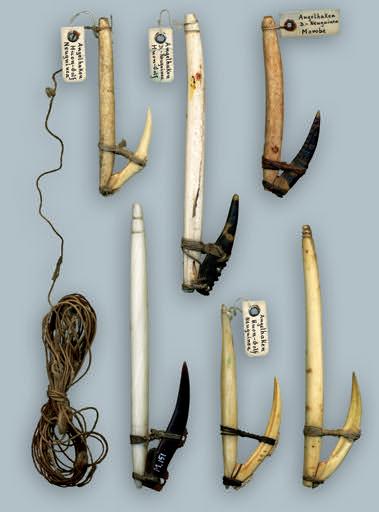
55 aktuelles hakenbuch 12.okt:miot neu vertikal 30.11.2011 18:10 Uhr Seite 55
New Guinea, Huon Gulf 56 5 aktuelles hakenbuch 12.okt:miot neu vertikal 30.11.2011 18:10 Uhr Seite 56

57 aktuelles hakenbuch 12.okt:miot neu vertikal 30.11.2011 18:10 Uhr Seite 57
New Guinea, Siassi 58 6 aktuelles hakenbuch 12.okt:miot neu vertikal 30.11.2011 18:10 Uhr Seite 58

59 aktuelles hakenbuch 12.okt:miot neu vertikal 30.11.2011 18:10 Uhr Seite 59
New Guinea, Massim 60 7 aktuelles hakenbuch 12.okt:miot neu vertikal 30.11.2011 18:10 Uhr Seite 60

61 aktuelles hakenbuch 12.okt:miot neu vertikal 30.11.2011 18:10 Uhr Seite 61
New Guinea, Massim, Kiriwina Island 62 8 aktuelles hakenbuch 12.okt:miot neu vertikal 30.11.2011 18:10 Uhr Seite 62
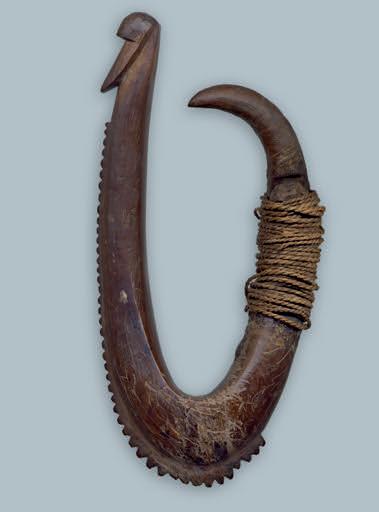
63 aktuelles hakenbuch 12.okt:miot neu vertikal 30.11.2011 18:10 Uhr Seite 63
New Guinea, Massim 64 9 aktuelles hakenbuch 12.okt:miot neu vertikal 30.11.2011 18:10 Uhr Seite 64
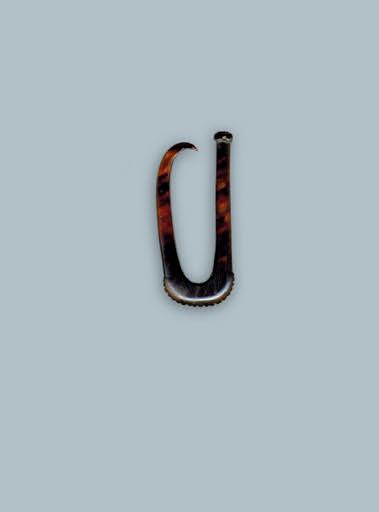
65 aktuelles hakenbuch 12.okt:miot neu vertikal 30.11.2011 18:10 Uhr Seite 65
New Guinea, Tor res Strait 66 10 aktuelles hakenbuch 12.okt:miot neu vertikal 30.11.2011 18:10 Uhr Seite 66
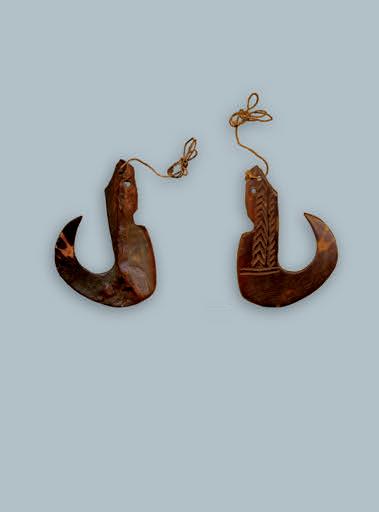
67 aktuelles hakenbuch 12.okt:miot neu vertikal 30.11.2011 18:10 Uhr Seite 67
New Guinea, Tor res Strait 68 11 aktuelles hakenbuch 12.okt:miot neu vertikal 30.11.2011 18:10 Uhr Seite 68

69 aktuelles hakenbuch 12.okt:miot neu vertikal 30.11.2011 18:10 Uhr Seite 69
70 12 aktuelles hakenbuch 12.okt:miot neu vertikal 30.11.2011 18:10 Uhr Seite 70
New Guinea, Wuvulu and Aua Islands (Bismarck Archipelag o)
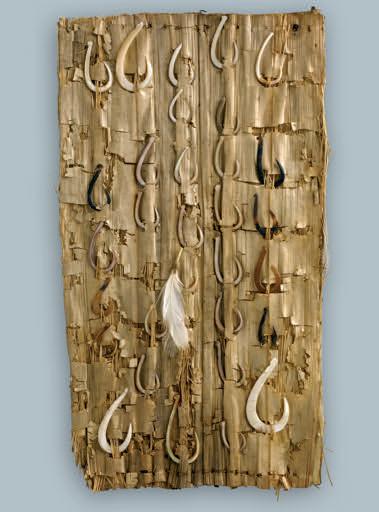
71 aktuelles hakenbuch 12.okt:miot neu vertikal 30.11.2011 18:11 Uhr Seite 71
New
72 13 aktuelles hakenbuch 12.okt:miot neu vertikal 30.11.2011 18:11 Uhr Seite 72
Guinea, Wuvulu and Aua Islands (Bismarck Archipelag o)
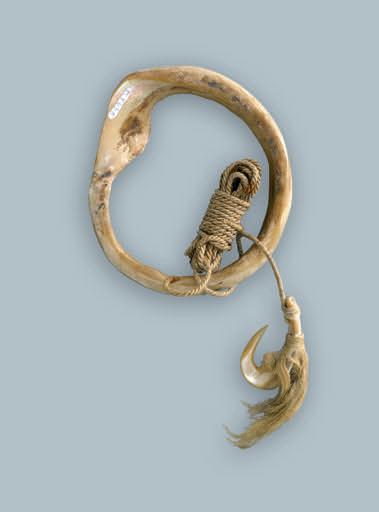
73 aktuelles hakenbuch 12.okt:miot neu vertikal 30.11.2011 18:11 Uhr Seite 73
New
74 14 aktuelles hakenbuch 12.okt:miot neu vertikal 30.11.2011 18:11 Uhr Seite 74
Guinea, Wuvulu and Aua Islands (Bismarck Archipelag o)

75 aktuelles hakenbuch 12.okt:miot neu vertikal 30.11.2011 18:11 Uhr Seite 75
New
76 15 aktuelles hakenbuch 12.okt:miot neu vertikal 30.11.2011 18:11 Uhr Seite 76
Guinea, Wuvulu and Aua Islands (Bismarck Archipelag o)

77 aktuelles hakenbuch 12.okt:miot neu vertikal 30.11.2011 18:11 Uhr Seite 77
New
78 16 aktuelles hakenbuch 12.okt:miot neu vertikal 30.11.2011 18:11 Uhr Seite 78
Guinea, Wuvulu and Aua Islands (Bismarck Archipelag o)

aktuelles hakenbuch 12.okt:miot neu vertikal 30.11.2011 18:11 Uhr Seite 79
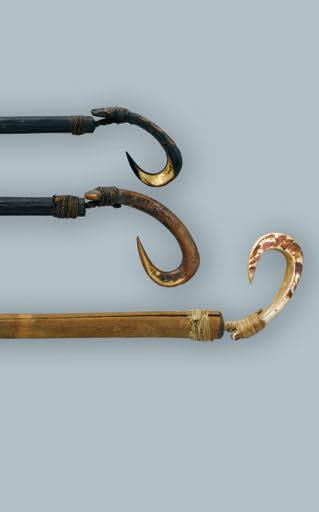
aktuelles hakenbuch 12.okt:miot neu vertikal 30.11.2011 18:11 Uhr Seite I
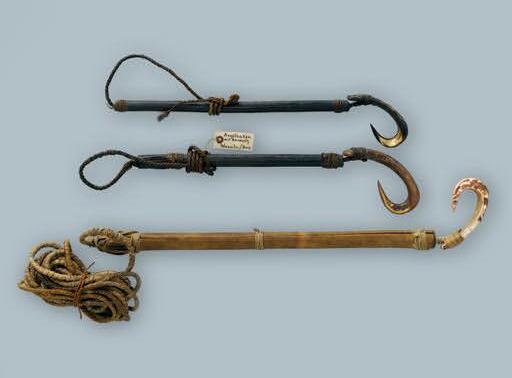
aktuelles hakenbuch 12.okt:miot neu vertikal 30.11.2011 18:11 Uhr Seite II
Admirality Islands 80 17 aktuelles hakenbuch 12.okt:miot neu vertikal 30.11.2011 18:11 Uhr Seite 80

aktuelles hakenbuch 12.okt:miot neu vertikal 30.11.2011 18:11 Uhr Seite 81
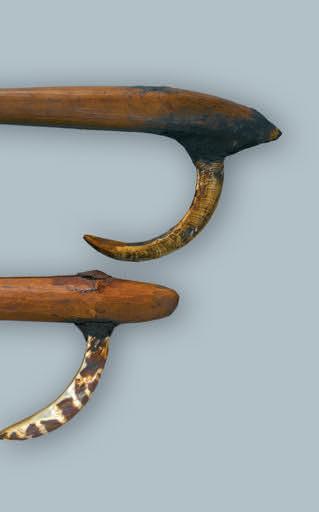
aktuelles hakenbuch 12.okt:miot neu vertikal 30.11.2011 18:11 Uhr Seite III

aktuelles hakenbuch 12.okt:miot neu vertikal 30.11.2011 18:11 Uhr Seite IV
Solomon Islands (Buka and Boug ainville)
82 18 aktuelles hakenbuch 12.okt:miot neu vertikal 30.11.2011 18:11 Uhr Seite 82

83 aktuelles hakenbuch 12.okt:miot neu vertikal 30.11.2011 18:11 Uhr Seite 83
Solomon Islands (Choiseul) 84 19 aktuelles hakenbuch 12.okt:miot neu vertikal 30.11.2011 18:11 Uhr Seite 84

85 aktuelles hakenbuch 12.okt:miot neu vertikal 30.11.2011 18:11 Uhr Seite 85
Solomon Islands 86 20 aktuelles hakenbuch 12.okt:miot neu vertikal 30.11.2011 18:11 Uhr Seite 86
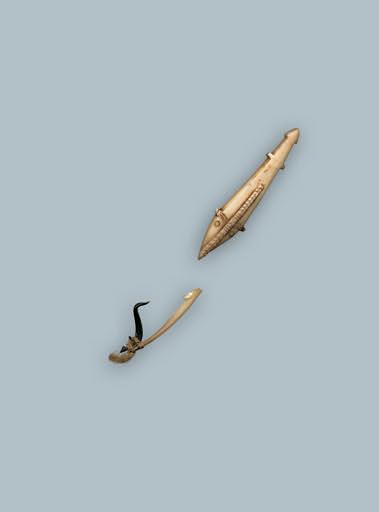
87 aktuelles hakenbuch 12.okt:miot neu vertikal 30.11.2011 18:11 Uhr Seite 87
88 21
aktuelles hakenbuch 12.okt:miot neu vertikal 30.11.2011 18:11 Uhr Seite 88
Solomon Islands

89 aktuelles hakenbuch 12.okt:miot neu vertikal 30.11.2011 18:11 Uhr Seite 89
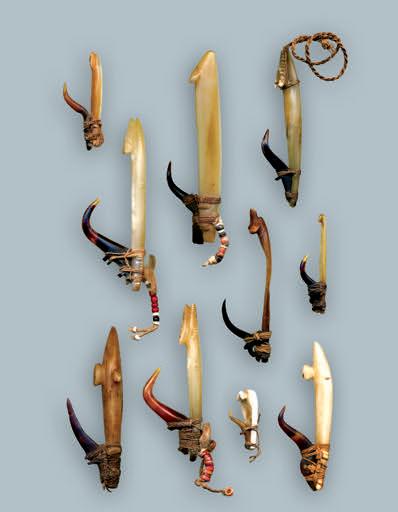
90 22/23
aktuelles hakenbuch 12.okt:miot neu vertikal 30.11.2011 18:11 Uhr Seite 90
Solomon Islands

91 aktuelles hakenbuch 12.okt:miot neu vertikal 30.11.2011 18:11 Uhr Seite 91
92 24
aktuelles hakenbuch 12.okt:miot neu vertikal 30.11.2011 18:11 Uhr Seite 92
Solomon Islands (Malaita)
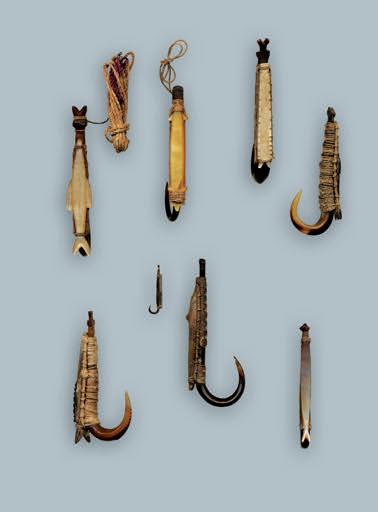
93 aktuelles hakenbuch 12.okt:miot neu vertikal 30.11.2011 18:12 Uhr Seite 93

94 25/26
aktuelles hakenbuch 12.okt:miot neu vertikal 30.11.2011 18:12 Uhr Seite 94
Solomon Islands (Malaita)

95 aktuelles hakenbuch 12.okt:miot neu vertikal 30.11.2011 18:12 Uhr Seite 95
96 27 aktuelles hakenbuch 12.okt:miot neu vertikal 30.11.2011 18:12 Uhr Seite 96
Solomon Islands (Uki, Ulawa)

97 aktuelles hakenbuch 12.okt:miot neu vertikal 30.11.2011 18:12 Uhr Seite 97
Islands (Uki, Ulawa) 98 28 aktuelles hakenbuch 12.okt:miot neu vertikal 30.11.2011 18:12 Uhr Seite 98
Solomon
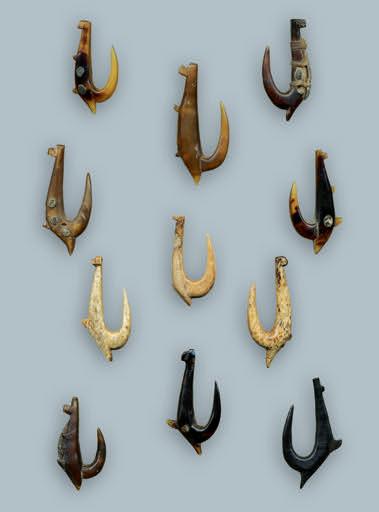
99 aktuelles hakenbuch 12.okt:miot neu vertikal 30.11.2011 18:12 Uhr Seite 99
Solomon Islands (Uki, Ulawa) 100 29 aktuelles hakenbuch 12.okt:miot neu vertikal 30.11.2011 18:12 Uhr Seite 100

101 aktuelles hakenbuch 12.okt:miot neu vertikal 30.11.2011 18:12 Uhr Seite 101
Solomon Islands 102 30 aktuelles hakenbuch 12.okt:miot neu vertikal 30.11.2011 18:12 Uhr Seite 102

103 aktuelles hakenbuch 12.okt:miot neu vertikal 30.11.2011 18:12 Uhr Seite 103
Solomon Islands (Ulawa) 104 31 aktuelles hakenbuch 12.okt:miot neu vertikal 30.11.2011 18:12 Uhr Seite 104

105 aktuelles hakenbuch 12.okt:miot neu vertikal 30.11.2011 18:12 Uhr Seite 105
Nukumanu 106 32 aktuelles hakenbuch 12.okt:miot neu vertikal 30.11.2011 18:12 Uhr Seite 106

107 aktuelles hakenbuch 12.okt:miot neu vertikal 30.11.2011 18:12 Uhr Seite 107

aktuelles hakenbuch 12.okt:miot neu vertikal 30.11.2011 18:12 Uhr Seite V
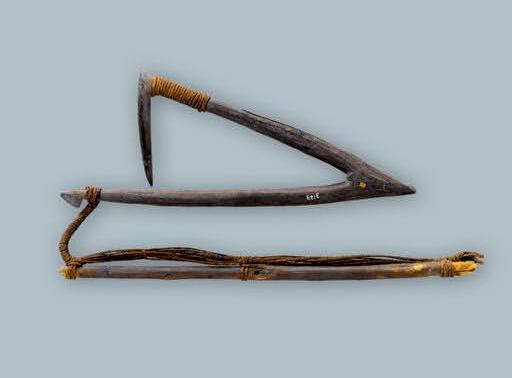
aktuelles hakenbuch 12.okt:miot neu vertikal 30.11.2011 18:12 Uhr Seite 108
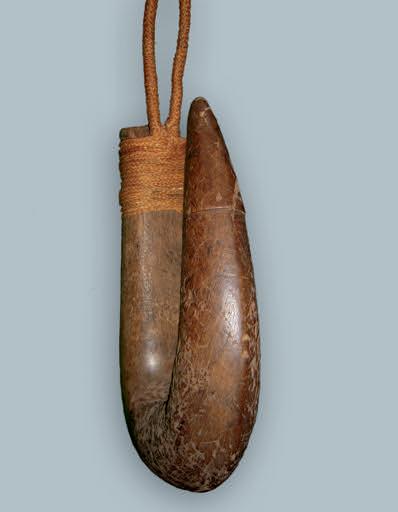
Rennell Island 108 33/34 aktuelles hakenbuch 12.okt:miot neu vertikal 30.11.2011 18:12 Uhr Seite 108

109 aktuelles hakenbuch 12.okt:miot neu vertikal 30.11.2011 18:12 Uhr Seite 109
110 35 Rennell Island aktuelles hakenbuch 12.okt:miot neu vertikal 30.11.2011 18:12 Uhr Seite 110
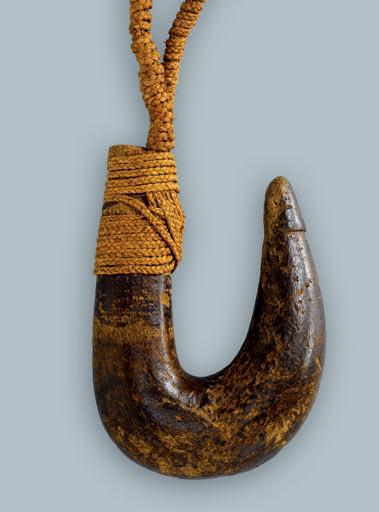
aktuelles hakenbuch 12.okt:miot neu vertikal 30.11.2011 18:12 Uhr Seite 111
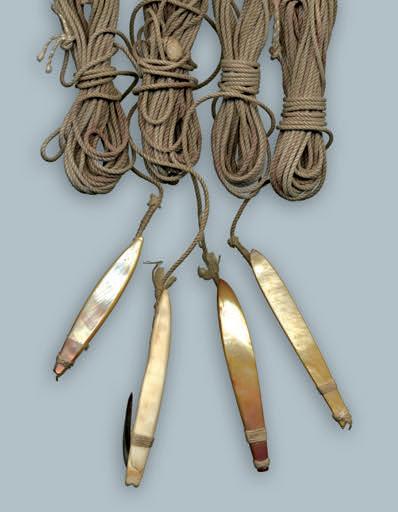
112 36/37 Ontong-Java aktuelles hakenbuch 12.okt:miot neu vertikal 30.11.2011 18:12 Uhr Seite 112

113 aktuelles hakenbuch 12.okt:miot neu vertikal 30.11.2011 18:12 Uhr Seite 113
Ontong-Java 114 38 aktuelles hakenbuch 12.okt:miot neu vertikal 30.11.2011 18:13 Uhr Seite 114

115 aktuelles hakenbuch 12.okt:miot neu vertikal 30.11.2011 18:13 Uhr Seite 115
Ontong-Java 116 39 aktuelles hakenbuch 12.okt:miot neu vertikal 30.11.2011 18:13 Uhr Seite 116

aktuelles hakenbuch 12.okt:miot neu vertikal 30.11.2011 18:13 Uhr Seite 117

aktuelles hakenbuch 12.okt:miot neu vertikal 30.11.2011 18:13 Uhr Seite VII

aktuelles hakenbuch 12.okt:miot neu vertikal 30.11.2011 18:13 Uhr Seite VIII
Ontong-Java 118 40 aktuelles hakenbuch 12.okt:miot neu vertikal 30.11.2011 18:13 Uhr Seite 118

aktuelles hakenbuch 12.okt:miot neu vertikal 30.11.2011 18:13 Uhr Seite 119
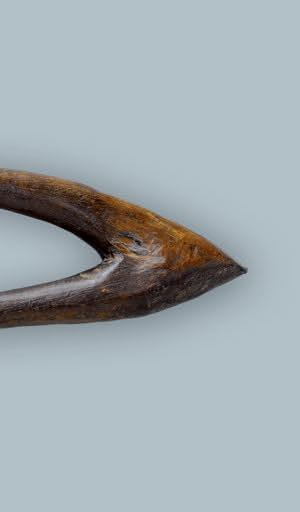
aktuelles hakenbuch 12.okt:miot neu vertikal 30.11.2011 18:13 Uhr Seite IX

aktuelles hakenbuch 12.okt:miot neu vertikal 30.11.2011 18:13 Uhr Seite X
Ontong-Java (illustration is 1/2 natural size) 120 41 aktuelles hakenbuch 12.okt:miot neu vertikal 30.11.2011 18:13 Uhr Seite 120
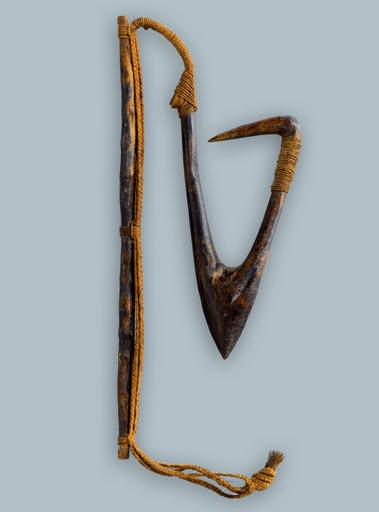
aktuelles hakenbuch 12.okt:miot neu vertikal 30.11.2011 18:13 Uhr Seite 121
Santa Cr uz (Ndende) 122 42 aktuelles hakenbuch 12.okt:miot neu vertikal 30.11.2011 18:13 Uhr Seite 122

123 aktuelles hakenbuch 12.okt:miot neu vertikal 30.11.2011 18:13 Uhr Seite 123
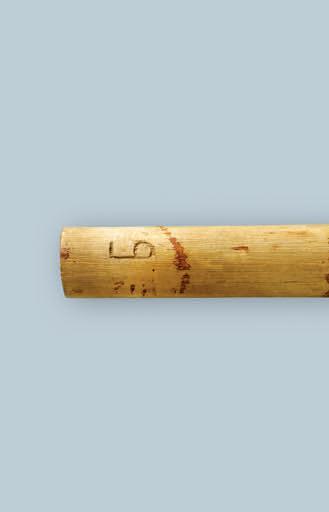
Santa Cr uz 124 43 aktuelles hakenbuch 12.okt:miot neu vertikal 30.11.2011 18:13 Uhr Seite 124
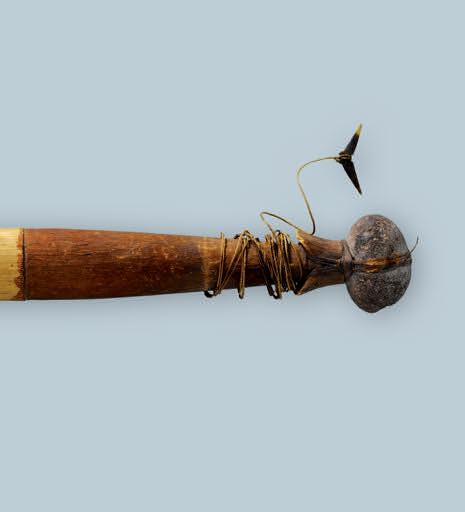
125 aktuelles hakenbuch 12.okt:miot neu vertikal 30.11.2011 18:13 Uhr Seite 125
Santa Cr uz 126 44 aktuelles hakenbuch 12.okt:miot neu vertikal 30.11.2011 18:13 Uhr Seite 126

127 aktuelles hakenbuch 12.okt:miot neu vertikal 30.11.2011 18:13 Uhr Seite 127
Santa Cr uz 128 45 aktuelles hakenbuch 12.okt:miot neu vertikal 30.11.2011 18:13 Uhr Seite 128
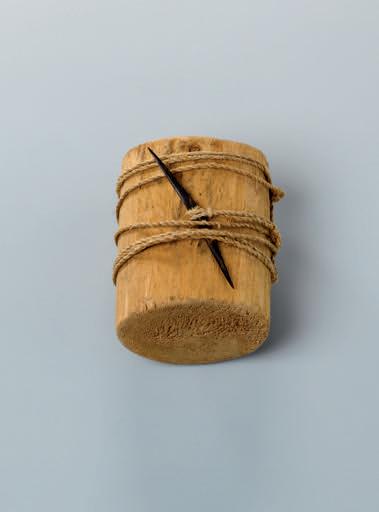
129 aktuelles hakenbuch 12.okt:miot neu vertikal 30.11.2011 18:13 Uhr Seite 129
Tikopia 130 46 aktuelles hakenbuch 12.okt:miot neu vertikal 30.11.2011 18:13 Uhr Seite 130
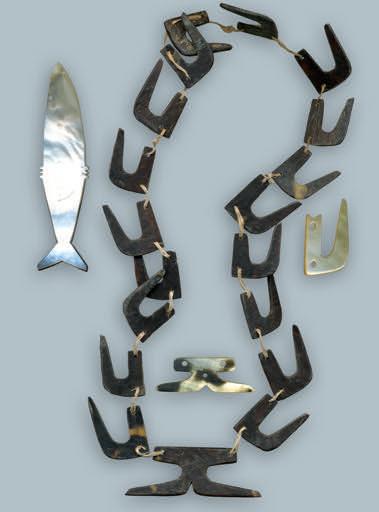
131 aktuelles hakenbuch 12.okt:miot neu vertikal 30.11.2011 18:13 Uhr Seite 131
132 aktuelles hakenbuch 12.okt:miot neu vertikal 30.11.2011 18:13 Uhr Seite 132
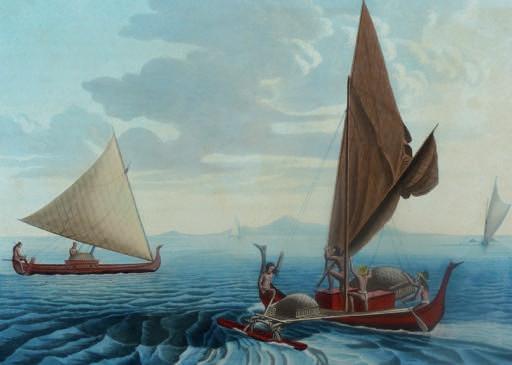
133
aktuelles hakenbuch 12.okt:miot neu vertikal 30.11.2011 18:13 Uhr Seite 133
(*) Fishing canoes outside Yap A plate from: Louis Claude de Desaulces de Freycinet, “Voyag e Autour du Monde, fait par l’ordre du Roi, Sur les cor vettes de S M l’Uranie et la Physicienne, pendant les années 1817-1820 Atlas Historique par MRS Js Arag o, A Pellion & ca Paris, 1825
Micr onesia
Lif e on Coral Islands – Dancing on Knif e ’ s Edge

An endless stream of imag es of coconut palms, sandy beaches, light blue seas and scenes of apparent paradise belie reality Flat coral islands and atolls are among the harshest environments on ear th Extremely difficult living conditions challeng e their inhabitants Living space is ver y restricted, and the sandy, calcified and often salty soil is infer tile Fresh water is scarce as there are no streams or wells, and there are often long periods of drought. Moreover, typhoons and tidal waves frequently hit these archipelag os that extend no more than a few meters above sea level, and with disastrous consequences. T he exce ption are a few high volcanic islands over 700 meters, like Pohnpei or Kosrae, which supply fer tile g round and sweet water
T he settlement of this island world would never have been possible without extensive exploitation of the sea ’ s natural resources T he first settlers to ar rive must already have had founded knowledg e of various fishing techniques T heir skills evolved to a level of efficiency and master y that made Polynesian and Micronesian fisher men without peer anywhere in the world According to Heintze (69), in addition to the simple collection of marine life on the reefs, fishing techniques included herding, the use of spears, traps, poisons, weirs and nets, and hook fishing, torch fishing and kite fishing, among others Wor ms, crabs, many kinds of fish, snails, shellfish and the larg er prey on the high seas –sharks and bonito for example – were among the g reat variety of animals that were sought after T he simpler kinds of fishing and manual methods of collection on the reef were the province of the women and children. Men had the responsibility for the more difficult and dang erous fishing tasks T here was a differentiation of status among the men As a result of ag e or sickness, some were excluded from fishing. Moreover, specialized knowledg e of specific techniques was not equally shared by all of them But because the catch was always appropriately distributed among members of a family, a relatively stable and equitably appor tioned supply was available to the islands’ populations. In bad weather, the boats could not venture out to sea In g eneral, the open sea was richer in fish life than the lag oon
Neither fishing nor collecting on reefs are activities without peril to the atolls’ inhabitants Cer tain species of sharks and bar racudas can be dang erous to man. T he sting of the Conus snail can be fatal.
As the sea is the atoll inhabitants’ primar y food source, poisonous fish are the most present dang er T he consumption of many species at cer tain times in various areas can cause poisoning, while at other times or places not. Occasional poisoning e pidemics are one of the risks associated with life on coral islands
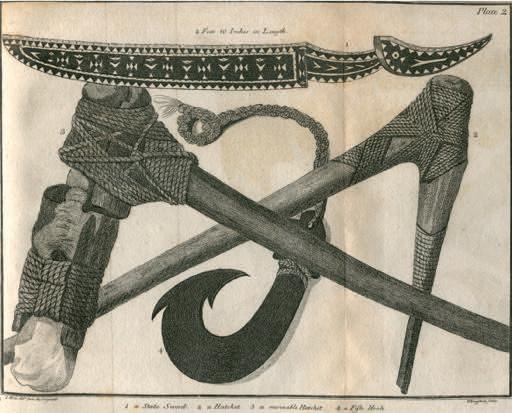
134
(*) Georg e Keate, “An Acount of the Pelew (Palau) Islands ( ) Composed from the Jour nals of Captain Henr y Wilson,” London, 1788, Pl 2
aktuelles hakenbuch 12.okt:miot neu vertikal 30.11.2011 18:13 Uhr Seite 134
(*) An unusual tur tle shell spoon from Palau, decorated with a handle in the shape of a fish (15,5 x 5,2 cm)
Fishing
T here are no other islands for hundreds of kilometers around Naur u Its inhabitants had to rely on fishing, especially since they had no systematic ag ricultural systems and only pandanus and coconut trees to supply them with fr uit. As drought often brought down these trees and whatever plants they had, or because the yield they produced had been used up, the ocean and its resources were all that remained for the islanders “On more than one occasion, when the situation was desperate, the sea has helped to prevent mass famine, and even the exter mination of the population. When there was need, the Nauran fished(...). T he native cannot be long without fish ( ) All of the islanders are fisher men, the men as well as the women T he latter tend to the pre paration of the fish as side dishes(...). T he men fish on the high seas and deal with the heavy tasks. T here are averag e and exper t fisher men T he latter must prove to witnesses their proficiency in cer tain techniques relating to the capture of a par ticular species Some fisher men master the techniques for only one species, others master them for several. I only met one fisher man, the elder Tedabag e from the Menen district in the south, who could successfully catch all 300 of the fish species known on the island He was therefore known on the island as Aman Ian Ar (master fisher man).” (89): 95.
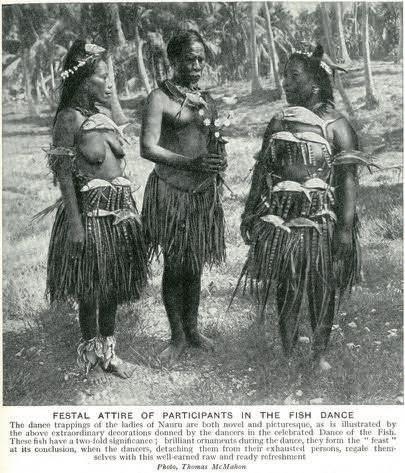
T he larg e V-shaped hook shown here is made of hard and resistant Callophyllum wood T he surface of the unevenly long sides is smoothed T he long est side has a knob at its end which prevents the sennit leader from slipping off T he point is on the shor ter side, and is an L-shaped piece of hardwood inser ted in a notch and attached to the long er piece with a tight plant fibre binding. T he tip of the point is shar pened, and directed inwards at a right angle to the point limb
T he stone sinker is a piece of coral rock, and attached to the line between 50 and 100 centimeters from the hook. T he sinker is wide at the base and tapers to a point. A piece of sennit tied around the stone sinker kee ps it secured to the line K ayser, who was a priest on Naur u over a hundred years ag o, provides ver y interesting infor mation on the use of the stone sinker : “As its name implies, its pur pose is to bring the hook and its line to the desired de pth But it also ser ves as an orientation point on the line, which can be ver y useful to the fisher man when he is catching dang erous animals that can inf lict bites. It could happen on dark nights, when the fisher man is hauling up his dang erous and heavy prey, that his hand would g et too close to it, and it might injure him in its rage But when, while pulling up the line with his hands, the fisher man gets to the stone sinker, he knows exactly what distance remains between him and the animal, and so can avoid coming to har m He stops pulling when he g ets to the sinker, and g rabs it tightly with his left hand, maintaining control of the animal He then uses a wooden hammer with his right hand to kill his prey by beating it on the head When the animal has been rendered har mless, he uses the sinker to pull it onto the canoe. ” (89): 108. According to Hambr uch, this hook is used for catching sharks, Ruvettus, and other fish species (88): 127
Plate 66 illustrates an old and rare composite hook, that shows a strong inf luence from Banaba (Ocean Island), which is far to the east On this example the
Naur u – No Sur vi val W ithout
144
Pl 67
Pl. 66
aktuelles hakenbuch 12.okt:miot neu vertikal 30.11.2011 18:14 Uhr Seite 144
(*) Festival attire of par ticipants in the fish dance on Naur u; in: Peoples of all Nations, Vol II, p 966/967
shank is made of what is probably fossilized Tridacna shell, which has been masterfully polished and worked into its fish-like shape. T he head has a hole drilled through for the attachment of plant fibre line T he point is made of human bone Bone from around the eye socket was prefer red for this pur pose, because it was deemed to be indestr uctible. It can be assumed that the bone point was inser ted into a notch at the base of the shank as it was on Banaba T his bonito hook has a hibiscus bast ar tificial hackle tied in at the shank base, ag ain just like on the Banaba examples T he bone point is secured to the shank with human hair and tree sap Hambr uch mentions notched shanks made of arag onite, as well as of mother of pearl, coming from Banaba. He also illustrates one-piece hooks made of both coconut shell and mother of pearl (88): Ills 211/212
K ayser relates that at the beginning of the 20th centur y, fisher men were making inwardly cur ved one-piece hooks primarily out of the steel spokes of broken umbrellas (89): 107, ills 4c K ayser had thorough knowledg e of fishing on Naur u, and we quote him in closing: “Fisher men were not allowed to eat the fish they themselves had caught. Strang ers were in principle allowed to eat them, but were not to consume any other food at the same time Europeans were often denied fish, because it was deemed that their habit of eating many things tog ether would have adverse consequences on the fisher men ’ s future success. Because the Ani (spirit) of the fish was Egir ow (evil) and did not play g ames ( ) After they had been cooked, the fish had to be consumed immediately where they lay( ) Any leftovers – ribs, scales, etc – and even entire fish were brought back to the open sea packed in baskets, and lowered down ” (89): 129/130
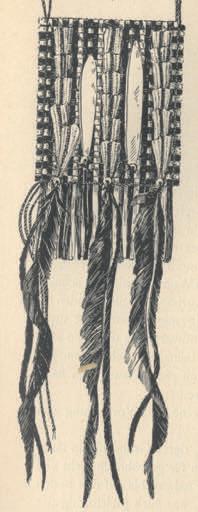

The Stalactite Fish Hooks of Ocean (Banaba) Island
T his is the title of a paper by Maude and Lamper t that deals thoroughly with a remarkable and distinctive type of hook that is known only from this tiny island (90) Like Naur u, Banaba is similarly isolated and lies in an arid zone extending nor th and south of the equator. Its inhabitants can be ver y adversely impacted by persistent drought, just like those of the Gilber t Islands some 500 kilometers to the east Despite the fact that these islands lie in one of the most inhospitable regions of our planet, they have among the highest population densities in Oceania T his can only be explained by the inhabitants’ exce ptional ability to adapt to the hostile environment around them “Lacking the fer tile volcanic soil of the high islands, the coconut-bearing coralline f lats of the low islands, or even the relatively productive coastal rim of Naur u ( ) the inhabitants were reduced to a vir tually exclusive diet of fish ” (90): 415 Because the sea ’ s resources could be relied on consistently, fishing methods and techniques evolved to a ver y high standard “Necessity has made the natives perhaps the most exper t fisher man in the Pacific, and this in spite of the difficulties which the for mation of the islands offers to the exercise of this craft ” (91): 574 “For the Banabans ( ) one of the most popular types of fishing was trolling for the surface-feeding bonito with a composite lure hook known as Kaneati. Among the Gilber tese the shank of the Kaneati was made out of pearl shell ( ) T he Banabans, however, whose skill in
145
Pl 68
(*) Hook shanks used in a family crest from Naur u (88): Pl 99
aktuelles hakenbuch 12.okt:miot neu vertikal 30.11.2011 18:14 Uhr Seite 145
(*) An chest or nament from Naur u in the shape of a fish hook shank made of mother of pearl, covered with weaving of Pandanus and Hibiscus bast (88): Pl 36a/b
bonito fishing, perhaps from dire necessity, sur passed that of the Gilber tese on their home islands, could seldom use pearl shell, which was unable to find a cong enial environment on the nar row reef of the island or its stee p sides plunging almost ver tically to the ocean f loor ( ) As for tridacna shells, they were scarce both on Ocean Island and Naur u. (...) T he traditional raw material for making bonito hooks being, therefore, either absent or too scarce for g eneral use it was for tunate that the g eological str ucture of Ocean Island resulted in its being honeycombed with caves (bangabanga) and that in them were found stalactites and associated stalagmites (*1) for med of carbonate and phosphate of lime ” (90): 418 As the hooks illustrated in plate 68 clearly show, this rare material was perfectly suited for the manufacture of shanks Only women were allowed to collect it from the family owned caves “Any man found in the caves, or hiding near them, being liable to be killed. T his tabu was said to be due to the fact that, owing to the intense heat in the deeper caves, the women were accustomed to shed their clothes ” (90): 417
Aside from the precious material used to make the fish hooks, the caves also contained fresh water reser voirs. We know from one of the few white men (*2) to have visited the caves in 1900 how intensively they were used: “Small pools of water were soon in evidence, and at these the women filled their baskets of coconut shells. T he sides of the cave were more or less beg rimed with the smoke of torches used by g enerations of Banabans ( ) Ver y few stalactites were to be seen, the native having removed them for the pur pose of making their useful bonito hooks ” (92): 23 According to Mahaffy, who visited Banaba in 1896 and 1908, these hooks were ver y highly prized T hey alone were used to fish for bonito, although European metal hooks were already in use for catching other kinds of fish T he first illustration of this type of hook is probably the one which appears in Finsch in 1893 (*3), and he states the following: “T hese shanks or rounded shanks are slightly tapered at the head, where a hole, used for the attachment of the line, is bored through them A lengthwise g roove is g round into the inner face at the base of the shank T he point is inser ted into the g roove, and then fastened to the shank with a fine twine. Holes are not bored into the shank, but a g roove around it (in fact it is a raised band just around the edg e of the base) helps to fix the line securely to it (*4) T he ver y neatly worked point is made of bone, ver y probably sper m whale tooth (*5). Some of these hooks are equipped at the base with the usual hackle of hibiscus fibres T he main line is finely braided from Hibiscus bast ” (15): 55, Pl III,3 Finsch states that around his time – 1880 – these bonito hooks could no long er be found. During a several months’ stay on Banaba in 1931, Maude made the acquaintance of a villag e chief named Eri, who made one of the last bonito hooks Probably the most thorough study ever made of the process of the manufacture of an Oceanic fish hook thus became available (90): 419/420
Despite the fact that different materials were used for the lines, the hooks on plate 68 share many similarities T he line used to secure the bone point to its shank on the hook on the right is par ticularly fine and strong Human hair is braided with hibiscus fibre. T his ver y resistant line is called Nimaer er e. T his hook has another par ticularity It has a second hole, which is filled with a black substance,
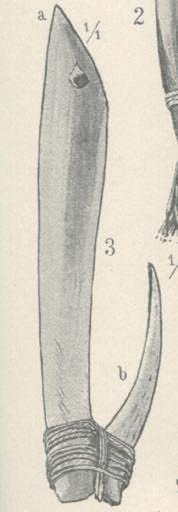

146
Pl. 68
Pl 68
(*1)
(*3)
aktuelles hakenbuch 12.okt:miot neu vertikal 30.11.2011 18:14 Uhr Seite 146
(*2) “( ) when the taboo was removed in my favour”
and which in all probability re presents the eyes of the stylized fish (*6) Only Beasley illustrates a similar hook with two holes. (8): Pl. CXLII.
Even when this unusual hook is found on Naur u or the Gilber t Islands, it originates from Banaba “Drift voyag es between Ocean Island and Naur u were common and many of the immig rants would have eng ag ed in fishing when blown away from their island ” (90): 421
Maude and Lamper t raise the interesting question as to why these fascinating hooks developed only on Banaba “When one considers the deg ree to which the Naur uan culture, and in par ticular the material culture, has been inf luenced by Ocean Island and Gilber tese castaways, who for med one of the twelve tribes on Naur u, it seems sur prising that the ar t of making stalactite hooks did not become established there, where there were both caves and stalactites ” (90): 421. T his could be explained by the scarcity of the materials needed to make the hook shanks which were so vital to the catching of the bonito and to the islanders’ sur vival T he beautifully crafted hooks shown here, and the master y of the various materials they display, are undoubtedly the product of centuries of experience and evolution T he high level stone ag e workmanship obser ved on these and many other Oceanic hooks is reminiscent of that seen on Danish stone battle axes from the time of transition between the stone and bronze ag es. Metal blades eventually re placed these masterfully made stone ones, just as industrially produced metal hooks eventually re placed the fascinating stone ag e fish hooks over Oceania’s vast area in a relatively shor t period of time
The Gilber t Islands (Kiribati)
Just as it is for the peoples of Naur u and Banaba, the sea is the main food source for the inhabitants of the Gilber t Islands. According to Koch, the natives have names for 80 to 100 kinds of edible fish, which are caught in over 50 ways “Totemic beliefs forbid many families from catching cer tain kinds of fish Sharks, rays and moray eels are among these varieties.” (93): 22/23. By the time of Koch’s stay on the islands in 1964/1965, most traditional hooks had long been re placed by European ones Bonito fishing was still practiced, as in many par ts of Oceania Only a few men remained who could make the bonito hook (Kaneati) with the fishshaped mother of pearl shank Koch successfully collected 19 bonito hooks T hree of them had stalactite shanks, and had been impor ted from Banaba T he points on the remaining 16 hooks are made of coconut shell, mother of pearl, ancestors’ bones, puffer fish spines, and even of copper, and are mostly tied to the mother of pearl shank in the easter n Micronesian manner As in other par ts of Micronesia, the mother of pearl shanks are highly valued, and are wor n as neck or naments by men while dancing
Both pieces of this bonito hook (Kaneati) (*7) were collected tog ether a hundred years ag o T he shank is made of mother of pearl It is perforated at one end for the attachment of the fishing line T he human bone point is attached to the shank in the East Micronesian manner (see (*1) on the following pag e). T he shank has a notch on either side of it What is evidently the earliest illustration of this type
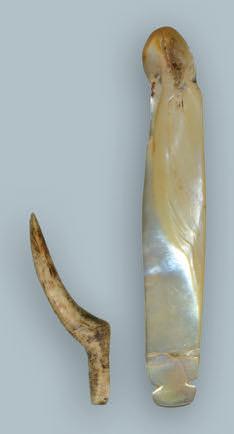
Pl 69
(*4) (*7)
(*5) Finsch is mistaken here. According to Maude and Lamper t (90): 420 this point was made of human bone
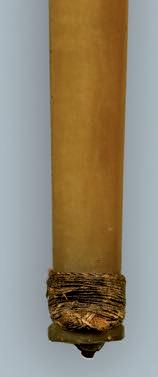
147
(*6) T he shanks of bonito hooks are made in the shape of a stylized fish in all regions of Oceania aktuelles hakenbuch 12.okt:miot neu vertikal 30.11.2011 18:14 Uhr Seite 147
of hook appears in Klemm’s book, published in 1854 (105): Fig 96 (*1) It displays a ver y ar tful binding of the point to the shank. Klemm mentions the use of human hair as a hackle, while similar hooks from Koch have hackles made of pig bristle

T he two hooks collected by Koch and illustrated here (*2) display significant differences. (*2(b)) illustrates a hook type mentioned above related to the ones we know from Banaba, insofar as the point is attached without a drilled perforation However (*2(a)) shows another type of attachment by aide of one hole drilled through the point and a small knob at its base T he hooks on plate 69 compare favorably to Koch’s drawing and illustrate fur ther how the leader line which is looped around the point base is held down by the the two lines attaching the point to the shank
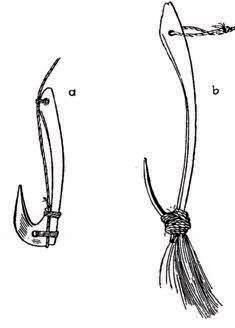
Gilber t-Islands. An „Inter mediate Hook“
T his ancient hook, covered with bite marks, fits in Gudg er’s categ or y of “inter mediate hooks.” T he tree root or branch was trained into the right shape for a fish hook Only the g rown wood gives suffient strengh to withold the powerful bite and pull of Ruvettus or shark T he meticulously car ved and polished point is fitted on the inside of the point limb and ar tfully and safely attached with twisted coconut fiber Also the snood attachment is notably strong A thinner twisted coconut string is wound around the sturdy coconut line at the head of the shank, thus giving additional strength and protection from the fish bite
Unfor tunately all collection histor y has been lost and only by comparing this hook to others in literature and collections with confir med locations can we safely attribute this hook to the Gilber t Islands, yet without being able to give a specific island Gudg er illustrates several hooks most of which are housed in the Bishop Museum and were originally collected in the Gilber t Islands. (18):fig. 26, 26 He describes these hooks as follows: “T hey may fairly be designated as inter mediate between undoubted shark hooks and undoubted Ruvettus hooks ( ) It plainly belongs among the inter mediate for ms since its rounded U-shaped base is that of a nor mal shark hook, while its horizontally placed palu barb allies it to the Ruvettus hooks ” (18): 238,240 Finally he refers to Finsch quoting him thus: “At the Gilber ts, where in 1841, Wilkes was offered hooks in numbers, I found (1880) no specimens save the hug e wooden hooks for catching sharks and the Ruvettus fish ” (40): 132 He continues: “T his we may take as an undoubted reference to our inter mediate hooks.” (18): 242 (*3)
T his shank illustrated in plate 71 was masterfully made from ver y hard Tridacna shell, and meticulously g round and polished. T he circular protr usions on either side of the tapered shank and its g ently arched shape convey the impression of a diving or jumping fish In this respect, this example is different from all other shanks of stylized fish for m, which are more or less straight. T his example has a distinctly sculptural feeling Only the notch for the inser tion of the point and the
An Enigmatic Shank fr om the Marianas Ar chipelago
148
Pl 69
Pl. 70
Pl. 71
(*3) Fur ther examples for inter mediate hooks are illustrated in Beasley (8): pl CXXXVII, CXXXVIII, CXL
(*2)
aktuelles hakenbuch 12.okt:miot neu vertikal 30.11.2011 18:14 Uhr Seite 148
(*1)
g roove around the shank’s base betray its identity as a par t of a fish hook What the complete hook looked like remains open to question, as long as a complete example does not surface T he V-shaped notch is ver y similar to the one obser ved on several of the stalactite shanks from Banaba It is possible that the method of tying the shank to the point on the Marianas was comparable to that used on Banaba T he tying of the line to the circular protr usions was undoubtedly executed ver y ar tfully, perhaps using crossover techniques T he word “Marianen” is inscribed in pencil on the inner face of the shank T his attribution would be questionable, were it not for the fact that an example of identical for m, 2 6 centimeters long er than this one, is illustrated in YAP – Volume 1, with the caption “Jewelr y or nament. Probably an old hook from the Marianas Length 10 5cm (Slg Müller 123) ” (*4), (73): Ill 117

T here is unfor tunately no infor mation concer ning its collection histor y. It may be assumed that fishing with traditional hooks had not been practiced on the Marianas for a long time With the exce ption of the shanks described here, no examples of traditional hooks are known in the literature or in collections. But the question of why a Marianas hook apparently appears in a publication on Yap is one that should be pursued Because the for mer population of the Marianas was already under Spanish and missionar y inf luence in the 16th and 17th centuries, and consequently nearly exter minated by disease, the traditional culture disappeared as well T he famous r uins on Tinian, already illustrated in 18th centur y voyag e accounts, are all that remain of earlier times Treide writes: “Regular contacts existed with the Carolines in the 19th centur y, most notably with Yap and Chuuk (Tr uk), from which ships’ crews intent on trading ar rived.” (77): 26. It may thus have been one of those crews that brought the only other known Tridacna shank to Yap Müller possibly collected it there, and included it in his publication T he origin of the second example remains unclear. It could have been used as a pendant or nament as well It is interesting to note in connection with this that an also ver y perfect Tridacna shell pendant or nament is in the Museum für Völkerkunde in Berlin, but it shows no indication of having had anything to do with a fish hook. (94): 138,VI 49735 and (85): Ill 160/161
In closing, we cite the following remark made by Meinicke: “Fishing among the for mer Chamor ro was considered one of the most honorable occupations and was actively pursued For this they needed hooks of mother of pearl, coconut shell or bone ” (95): Vol II, 401 No reference is made to Tridacna shell shanks in this work either.
(*4) T he line attached to the base indicates the re-use of the shank as an or nament Originally the point would have been attached here and the leader at the heavier end (head) of the shank
149
aktuelles hakenbuch 12.okt:miot neu vertikal 30.11.2011 18:14 Uhr Seite 149

Caroline Islands (Tobi) 150 47/48 aktuelles hakenbuch 12.okt:miot neu vertikal 30.11.2011 18:14 Uhr Seite 150

151 aktuelles hakenbuch 12.okt:miot neu vertikal 30.11.2011 18:14 Uhr Seite 151

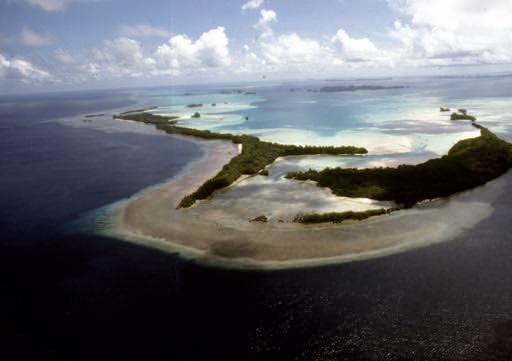
152 49
Caroline Islands (Ulithi
Atoll)
aktuelles hakenbuch 12.okt:miot neu vertikal 30.11.2011 18:14 Uhr Seite 152
Some of the Caroline Islands seen from the air T he second photo shows a look at the heavy surf beating down on the reef Photog raphs by Gerd Kühnen, c 1985
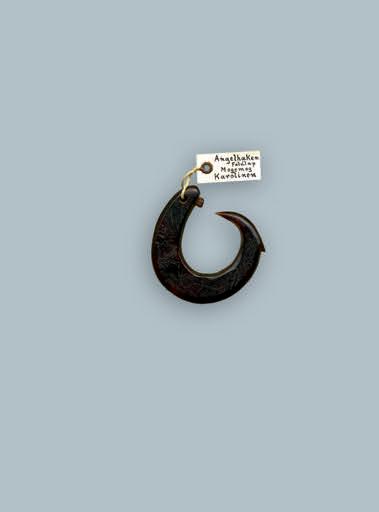
153 aktuelles hakenbuch 12.okt:miot neu vertikal 30.11.2011 18:14 Uhr Seite 153
Marshall Islands and Yap 154 50 aktuelles hakenbuch 12.okt:miot neu vertikal 30.11.2011 18:14 Uhr Seite 154
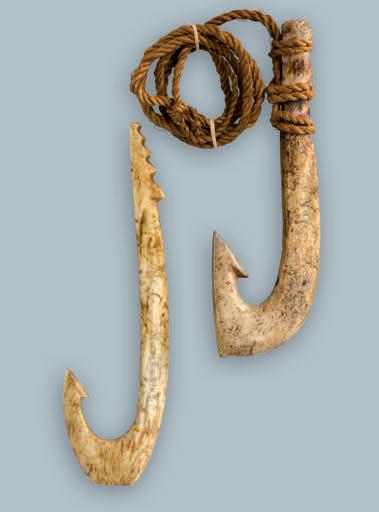
155 aktuelles hakenbuch 12.okt:miot neu vertikal 30.11.2011 18:14 Uhr Seite 155
Marshall Islands 156 51 aktuelles hakenbuch 12.okt:miot neu vertikal 30.11.2011 18:14 Uhr Seite 156

157 aktuelles hakenbuch 12.okt:miot neu vertikal 30.11.2011 18:14 Uhr Seite 157
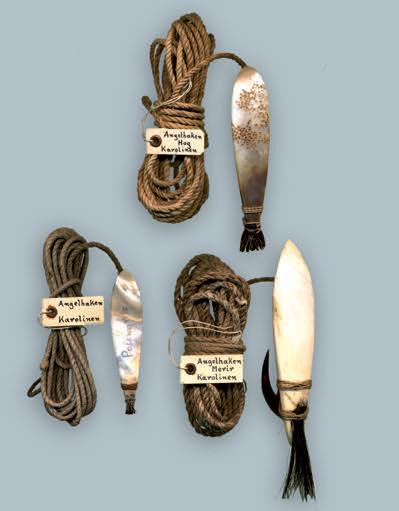
Caroline Islands 158 52/53 aktuelles hakenbuch 12.okt:miot neu vertikal 30.11.2011 18:15 Uhr Seite 158

159 aktuelles hakenbuch 12.okt:miot neu vertikal 30.11.2011 18:15 Uhr Seite 159
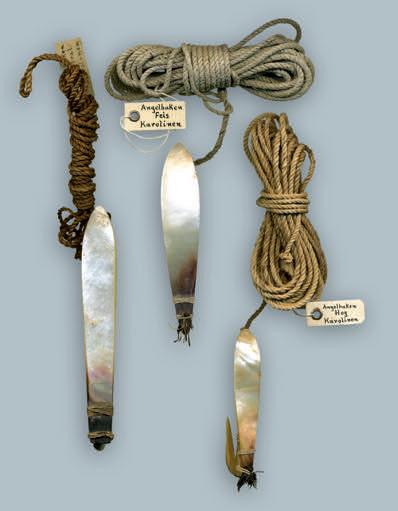
Caroline Islands 160 54/55 aktuelles hakenbuch 12.okt:miot neu vertikal 30.11.2011 18:15 Uhr Seite 160
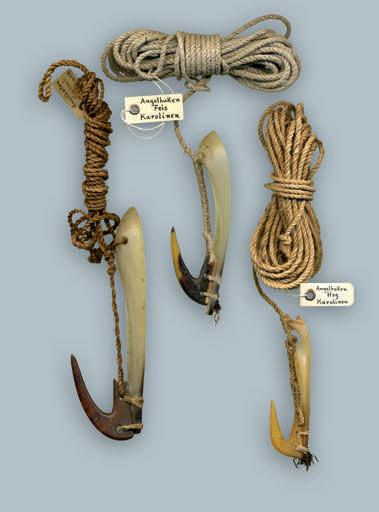
161 aktuelles hakenbuch 12.okt:miot neu vertikal 30.11.2011 18:15 Uhr Seite 161
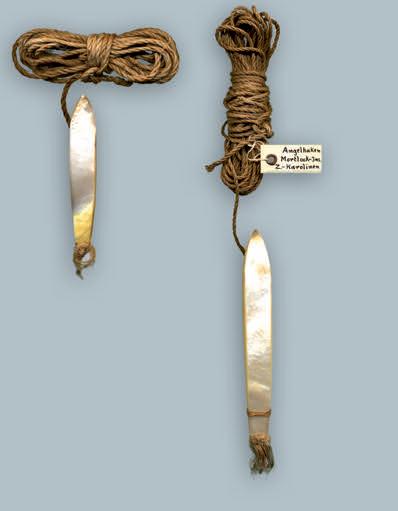
Caroline Islands (Mor tlock Group) 162 56/57 aktuelles hakenbuch 12.okt:miot neu vertikal 30.11.2011 18:15 Uhr Seite 162
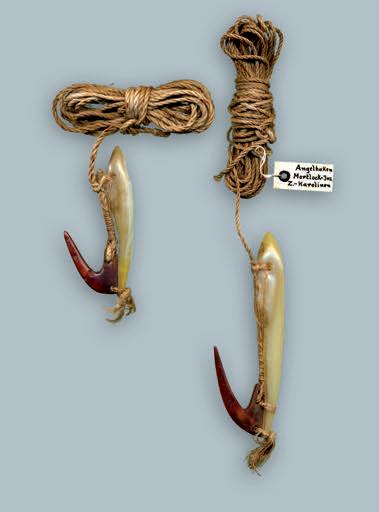
163 aktuelles hakenbuch 12.okt:miot neu vertikal 30.11.2011 18:15 Uhr Seite 163
Caroline Islands 164 58 aktuelles hakenbuch 12.okt:miot neu vertikal 30.11.2011 18:15 Uhr Seite 164
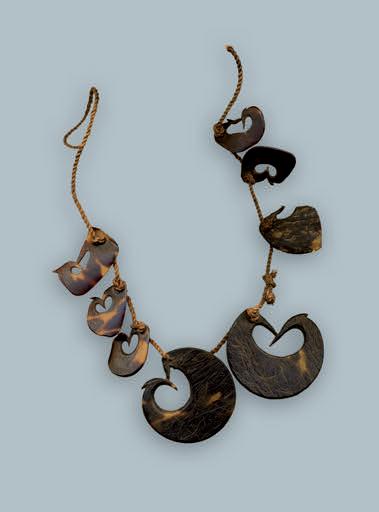
165 aktuelles hakenbuch 12.okt:miot neu vertikal 30.11.2011 18:15 Uhr Seite 165
Caroline Islands (Woleai) 166 59 aktuelles hakenbuch 12.okt:miot neu vertikal 30.11.2011 18:15 Uhr Seite 166
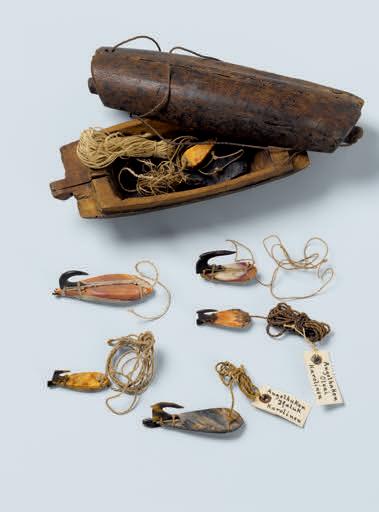
167 aktuelles hakenbuch 12.okt:miot neu vertikal 30.11.2011 18:15 Uhr Seite 167
Nukuoro
168 60 aktuelles hakenbuch 12.okt:miot neu vertikal 30.11.2011 18:15 Uhr Seite 168
T he two hooks with their leaders still attached were collected in the 1830’s by Vincendon-Dumoulin on the Dumont D’Ur ville expedition.
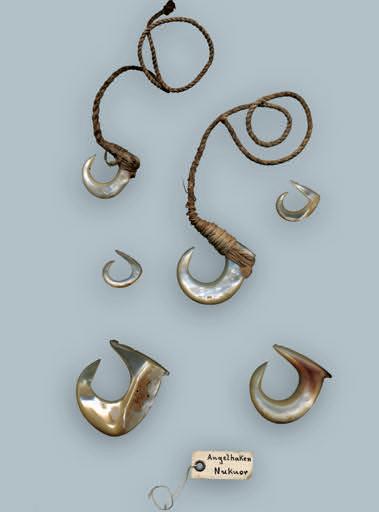
169 aktuelles hakenbuch 12.okt:miot neu vertikal 30.11.2011 18:15 Uhr Seite 169
Nukuoro 170 61 aktuelles hakenbuch 12.okt:miot neu vertikal 30.11.2011 18:15 Uhr Seite 170
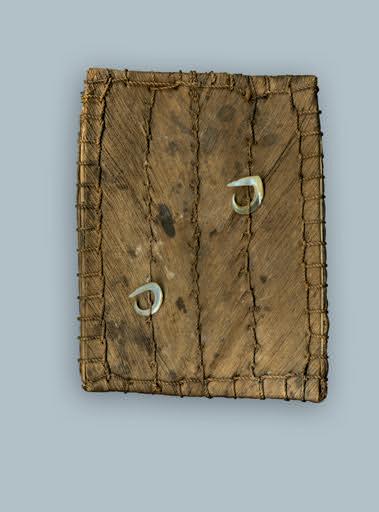
171 aktuelles hakenbuch 12.okt:miot neu vertikal 30.11.2011 18:15 Uhr Seite 171
K aping amarangi 172 62 aktuelles hakenbuch 12.okt:miot neu vertikal 30.11.2011 18:15 Uhr Seite 172
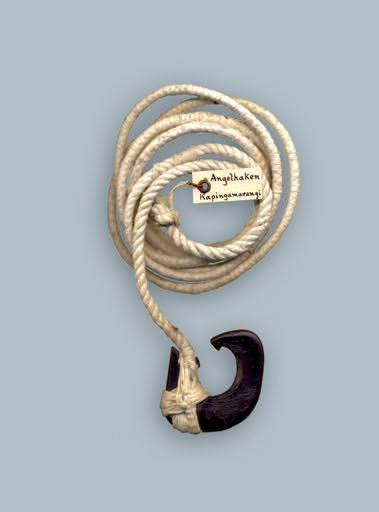
173 aktuelles hakenbuch 12.okt:miot neu vertikal 30.11.2011 18:15 Uhr Seite 173

Marshall Islands 174 63/64 aktuelles hakenbuch 12.okt:miot neu vertikal 30.11.2011 18:15 Uhr Seite 174

175 aktuelles hakenbuch 12.okt:miot neu vertikal 30.11.2011 18:15 Uhr Seite 175
Marshall Islands 176 65 aktuelles hakenbuch 12.okt:miot neu vertikal 30.11.2011 18:15 Uhr Seite 176
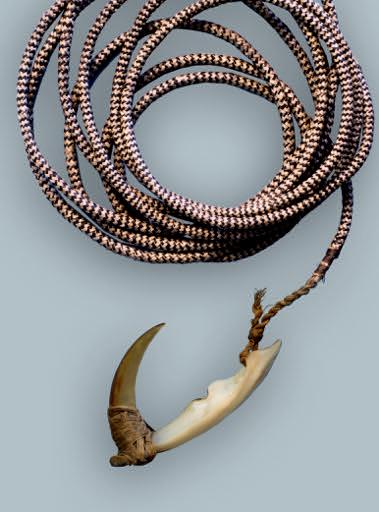
177 aktuelles hakenbuch 12.okt:miot neu vertikal 30.11.2011 18:15 Uhr Seite 177
Naur u 178 66 aktuelles hakenbuch 12.okt:miot neu vertikal 30.11.2011 18:15 Uhr Seite 178
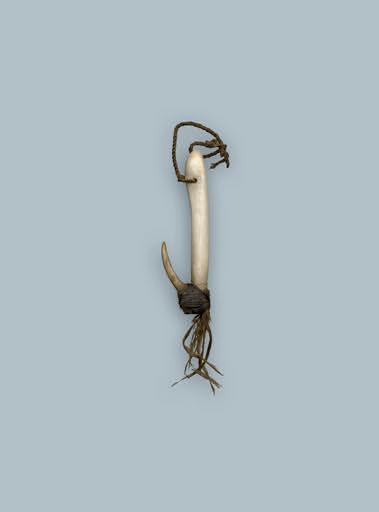
aktuelles hakenbuch 12.okt:miot neu vertikal 30.11.2011 18:16 Uhr Seite 179
Naur u 180 67 aktuelles hakenbuch 12.okt:miot neu vertikal 30.11.2011 18:16 Uhr Seite 180

181 aktuelles hakenbuch 12.okt:miot neu vertikal 30.11.2011 18:16 Uhr Seite 181

aktuelles hakenbuch 12.okt:miot neu vertikal 30.11.2011 18:16 Uhr Seite XIII

aktuelles hakenbuch 12.okt:miot neu vertikal 30.11.2011 18:16 Uhr Seite XIV
Banaba 182 68 aktuelles hakenbuch 12.okt:miot neu vertikal 30.11.2011 18:16 Uhr Seite 182

183 aktuelles hakenbuch 12.okt:miot neu vertikal 30.11.2011 18:16 Uhr Seite 183
Gilber t Islands 184 69 aktuelles hakenbuch 12.okt:miot neu vertikal 30.11.2011 18:16 Uhr Seite 184
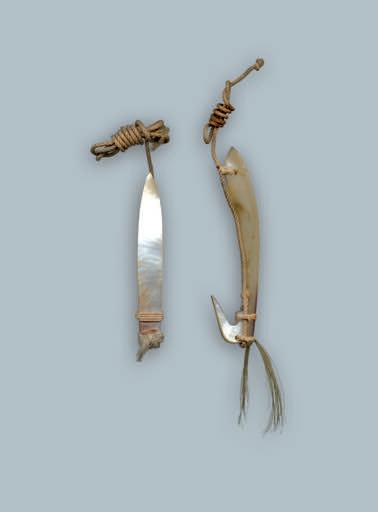
185 aktuelles hakenbuch 12.okt:miot neu vertikal 30.11.2011 18:16 Uhr Seite 185
Gilber t Islands 186 70 aktuelles hakenbuch 12.okt:miot neu vertikal 30.11.2011 18:16 Uhr Seite 186

187 aktuelles hakenbuch 12.okt:miot neu vertikal 30.11.2011 18:16 Uhr Seite 187
Mariananas Archipelag o 188 71 aktuelles hakenbuch 12.okt:miot neu vertikal 30.11.2011 18:16 Uhr Seite 188
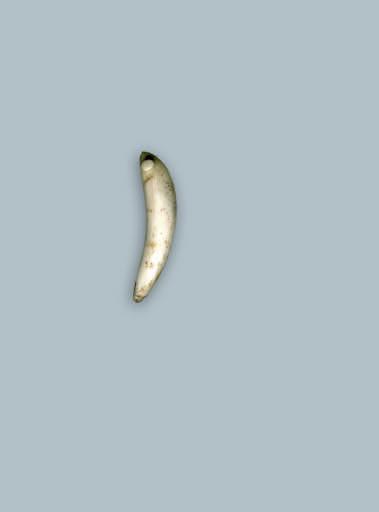

189 aktuelles hakenbuch 12.okt:miot neu vertikal 30.11.2011 18:16 Uhr Seite 189
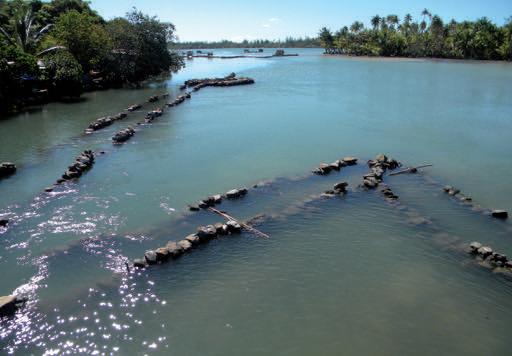

190
Fish weirs on Huahine, Society islands
aktuelles hakenbuch 12.okt:miot neu vertikal 30.11.2011 18:16 Uhr Seite 190
Fish pond in the Hawaiian Islands Photog raph by Alonso Gar tley, c 1900
Polynesia
T he several thousand Polynesian islands with var ying but g enerally small land areas extend over a hug e par t of the Pacific Ocean Hawaii, Easter Island and New Zealand are the three cor ners of what is refer red to as the “Polynesian Triangle ”
The use of the sea ’ s food resources led to the creation of highly perfected and beautifully made fishing equipment This is clearly demonstrated by the fish hooks presented here, which in both for m and function are precisely designed to match the characteristics of the numerous species which occur in Polynesian waters (*1).
In some areas Polynesian fisher men sought to enhance the efficiency of their hooks by using the bones of high ranking individuals, celebrated war riors or especially successful fisher men for their fabrication. Such bones were believed to contain a force called mana that could be transmitted to the hooks Since this force could also be dang erous, the handling of objects imbued with mana required compliance with defined r ules.
T he manufacture of fish hooks combined knowledg e transmitted through g enerations about the habits of the various fish species with a similarly acquired understanding of the ways to use and work the many materials involved. T he hook had to fit the jaw of the fish it was intended to catch It had to hold the prey securely T he materials had to be suited to the pressure applied by the biting and pulling fish, and finally, the line had to be secured to the shank and be strong enough to withstand the animal’s str ug gles
Ellice Islands (Tuvalu)
T his tiny island g roup consists of nine atolls, which tog ether have an area of barely 25 square kilometers but which are densely populated Life on these islands is more difficult than it is on Polynesia’s volcanic islands, which are covered with luxuriant veg etation. T he Ellice Islanders were remarkably successful at adapting to their meag er environment But just as on the coral islands of Micronesia, the population could not sur vive from what the land alone would yield, and the food resources of the sea were vital to its sur vival.
“Like their lifestyle as a whole, the Islanders’ ways of fishing are a mixture of ver y primitive methods and other ver y thought out and complex ones, the results of long experience and a precise understanding of the natural world around them ” (17): 19 According to Koch, the master fisher men of the Nukufetau Atoll have 47 methods of catching the many species of fish they hunt in the sea and in the lag oon Bonito fishing is especially well loved, as is fishing for Ruvettus, which might take all night, and requires special patience Koch makes the interesting obser vation that a boat does not always set out to fish in one par ticular way, but rather that the method used is subject to chang e according to the prevailing circumstances and oppor tunities To acquire the needed abilities, little boys begin to help with cer tain aspects of the work at a ver y early ag e, and by the time they reach the ag e of 15, they are tr usted with a majority of the difficult tasks and
(*1) Titcomb, M: Native Use of Fish in Hawaii, Honolulu 1972 T he author describes the many species of fish that played a role in beliefs, and the worship of fish g ods (152)
191
aktuelles hakenbuch 12.okt:miot neu vertikal 30.11.2011 18:16 Uhr Seite 191
methods Only a few however, will attain the status of the Tautai (master fisher man), who is well versed in even the most complex techniques.
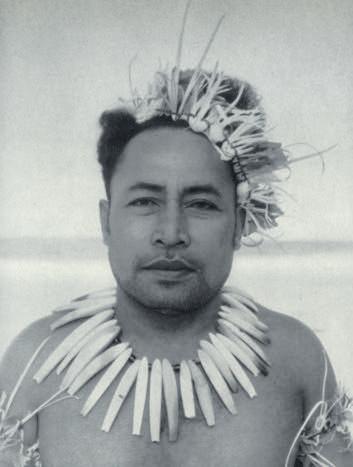
Plates 72, 73 and Koch’s drawing (17): fig 21 illustrate bonito hooks with bone points T he hook illustrated in plate 78 (bottom right) is similar to the threeholed points illustrated by Koch (17): Ill. 21a. Two similar hooks with bone points pierced in three places have been housed in the collection of the Staatliches Museum für Völkerkunde in Dresden since 1903 (No’s : 17619 and 17620) (*1) Kennedy mentions tur tle shell points attached to mother of pearl shanks on Vaitupu in the Central Ellice Islands (24): 39, and according to Hedley there were mother of pearl shanks with bone, mother of pearl and tur tle shell points on Funafuti (20): 39 T he remains of a feather f ly hackle are apparent on the hooks on plates 72/73 Beasley and Koch both illustrate complete hackles Like Kennedy, Koch examines bonito fishing in detail. We lear n from him that: “T he bonito hook was attached to a tree bast line some five meters in length, which was in tur n tied to a somewhat shor ter rod Most often, several lines with hooks were spaced along this rod. In this way, with the various colours and tint of his hooks at his disposal, the fisher man could be prepared for any situation, and also had plenty of hooks in reser ve ” (17): 41
Koch (*2) illustrates an extremely rare necklace made of 34 stylized fish mother of pearl shanks of var ying length (17): plate XII (*3) It had been handed down through eleven g enerations Koch remarks: “T he eldest sons of the master fisher men of Niutao wore 20 to 30 mother of pearl bonito hook shanks (paa) around their necks T hese were str ung on a thin sennit line (kolokolo) Four or five of these mother of pearl shanks were similarly considered a valuable family heirloom (pakasoa) on Nukufetau ” (17): 91
One-piece Hooks
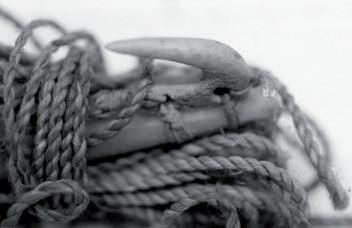
T he one-piece tur tle bone fish hooks on plate 74 are among the unmistakable types from Oceania (*4).
Beasley calls them the “earliest types of primitive hooks to be found anywhere in the Pacific ( ) None offer less practicable outlines combined with unsuitability of material. (...) T he use of these is now long obsolete, and they are highly valued by the natives, though more as heirlooms than as being imbued with magical powers ” (8): 25 (*5) Anell illustrates nine hooks of var ying sizes from the Pitt Rivers Museum, one of them even with its complete leader. He states it is “undoubtedly ver y archaic in for m ” (19): 95, and that it is the most common type in the Ellice Islands It is however seldom seen in public collections, and is probably also scarce in private ones T he notches on these nearly 9 centimeter long hooks were g enerally ver y carefully made, in order to ensure that the line remained well bound to the hook.
T here are unfor tunately no indications in the literature as to what kinds of fish they were used to catch
192
Pl. 72 Pl. 72 Pl 73 Pl. 74
(*2) Gerd Koch was the director of the Oceanic collections in Berlin from 1957 to 1985, and spent nine months conducting research on the Ellice Islands
(*4) T he words “Phoenix Islands” are inscribed on a tag that hangs from the hook, and on the shank as well.
(*5) T he one-piece hooks from K aping amarangi also have a similar shape
(*1) Detail (Museum für Völkerkunde Dresden, Inv Nr 17621 (*3) aktuelles hakenbuch 12.okt:miot neu vertikal 30.11.2011 18:16 Uhr Seite 192
Pl 73
Pl 78
R uvettus Hooks
According to Koch, only the Tautai (master fisher men) were per mitted to manufacture Ruvettus hooks “T hey car ve both the shank and the point out of Pemphis acidula wood (which is denser and therefore heavier than water), and tie the two pieces tog ether with a kafa binding Tree bast line is used to secure the bait (to the point) (*6) It was only at night, in a complete calm and the absence of rain, that this hook was lowered to a de pth of 150 to 200 meters from a boat about a mile from the island’s shore T he hook was baited with a half or entire f lying fish and tied to a sennit line (kafa), to which a stone sinker was attached some 30 centimeters above the hook ( ) One might be alone in the little boat, or one of several, in which case there would be two lines, and if one had success other boats would soon follow. As many as ten crews, far from one another, might be fishing for Palu at one time A larg er boat might bring home nine or ten of these larg e fish after a successful night’s hunt ” (17): 38 T he plate 75 shows a par ticularly sturdy binding. Koch publishes a ver y similarly made Ruvettus hook. (17): Ill. 20.b.
Futuna
With reg ards to fishing, little is known about this island of volcanic origin
It has neither reef nor lag oon, rises abr uptly from the sea, and so offers only limited possibilities for fishing “In fishing the people of Futuna are less advantag eously situated than those of Uvea On the whole fishing is a less impor tant industr y than in most Polynesian islands.” (96): 298.
The hooks on plates 77 and 78 were used for bonito fishing We know from Bur rows, who did research on Futuna in the 1930s, that: “Trolling for bonito and, probably, for other deep-sea fish was for merly an impor tant fishing method (...) and composite bonito hooks with shell shanks are not uncommon ( ) Pa is the general name for composite hooks for trolling, with shell shanks ( ) Whole hooks are called Pa tofe. The shanks, called ika (fish), are of pearl shell (tofe) (...). They are of the usual wester n Polynesian for m All the complete specimens have hackles (henga) ( ) ” (97): 107/108 Bur rows fur ther gives a detailed description of the bonito hook (*7)
According to Bur rows, a row of fish hooks, whose mother of pearl shanks var y in colour, are taken along T his pre pares the fisher man for any weather conditions T he Tautai at the ster n of the boat g ave instr uction to the two or three other fisher men, who also paddled. “When the boat approached a school of bonito, the fisher men took his pole from a rest on the outrig g er booms and sat in fishing position behind him, to the right side T he butt end was caught under his seat ( ) T he pole was at such an angle that the hook skimmed along the surface of the water T he paddlers made their best speed to g et into the midst of the bonito school. When a fish took the hook the fisher men pulled it inboard by swinging the pole around to the right and in front of him, at the same time raising the tip so the fish swung clear of the water and came in above the sides of the canoe Frequently it str uck the fisher man in the chest. It might be knocked off the hook by this blow and fall into the bottom of the canoe ” (97): 109 (*8)
Pl. 75
Pl 76
Pl 75
Pl. 77
Pl 78
(*6) Not present on any of the published hooks except (3): vol II, plate 96, fig 1
(*7) T he point was attached to the shank by a cord r un through holes in the point base and around the shank ( ) Separate pieces of lashing line were used for each hole T he fishing line was r un through the proximal hole in the base and doubled back to for m a snood ( ) the two ends were joined by seizing, all the way from the point to the hole in the proximal end of the shank T he doubled line was ( ) attached at two points by lashing with the cord used for seizing the snood ” (97):107/108
(*8) Kennedy documented all the phases of the bonito hunt with photog raphs over 80 years ag o (24): Pl 7-10
193
aktuelles hakenbuch 12.okt:miot neu vertikal 30.11.2011 18:16 Uhr Seite 193
Pl. 79

Pl 80
Pl 81
Pl 82
Tokelau Islands
T he g roup consists of three atolls in the border area between Micronesia and Polynesia Meinicke states in 1875: “Ag riculture is unknown to them, which is why they fish assiduously with nets and cleverly made hooks, made of wood, shell and bone ( ) T hey show a g reat deal of clever ness in the manufacture of fishing equipment ” (95): Par t II: 130 He mentions the primitive tools, including stone and shell blades, drills with stone bits, shark skin files, and “especially the ver y handsomely car ved wooden boxes with lids ” (95): 130
Pl 82
Pl 81
T he most complete account of fishing in the Tokelau Group is given by MacGreg or, who spent two months doing research on Atafu in 1932, and who was able to lear n a g reat deal from a native man bor n in the middle of the 19th centur y Plate 82 shows a beautifully for med hook made of coconut shell, with a complex and perfect attachment to the leader (*1)
Pl 81
Pl 81
Pl 79
Pl 80
Plate 81 shows a wooden box for hooks mentioned above, called Tuluma, along with two of the ver y distinctive one-piece hooks (upper row) and two small Ruvettus-type hooks (lower row) T hey rank among Oceania’s most perfectly shaped hooks It impresses with its combination of g reat eleg ance and complete functionality. T he beautiful work on the thin and brittle coconut shells is also remarkable, given the r udimentar y tools available to execute it T hese hooks are seldom seen in public collections, even though Beasley illustrates a whole series of them (8): Pls: XLVI/XLVII An example of a bone hook ver y similar to the one on plate 81 also appears in Beasley, along with the infor mation that it is unique His contention that these one-piece hooks were manufactured in imitation of similarly shaped Ruvettus hooks seems plausible because their points are also directed inwards towards the shank With reg ards to the secure and ar tful method of attaching the leader, he states: “ a strong lug projecting from the back affords a fir m hold for the leader, which may either be plain or looped ” (8): 33 These characteristics of the binding of the hook to the line are apparent on the two purposefully crafted small Ruvettus hooks on the plate. The very exact fit of the wooden point into its shank is also noteworthy MacGregor describes the difficult process of making the g rooves for the point: “A V-shaped g roove is cut along the outer par t of the upper end of the point limb, and a dee p notch is cut in the tip. T he inner par t of the point tip has an angular face to fit this g roove, and the angular under side of the point fits into the notch ” (98): 103 (*2) T he drawing above shows how precisely these complex fittings were made. T he second Ruvettus hook (lower left of plate 81) has an aber rant shape, which is due to the shape of the tree limb it was made from T he larg e Ruvettus hooks on plates 79 and 80 are significantly different from the previously described example T hey also differ from comparable hooks from the Ellice Islands in that coconut bast is added to protect the lashings on the hooks. T he bast is covered with an additional sennit binding in three areas, and the meticulously made coconut bast line is also wound with sennit, which protects it ag ainst damag e from fish teeth In light of the care and attention to detail with which these Ruvettus hooks were made, it is quite sur prising that MacGreg or states that Ruvettus fishing was of only minor impor tance to the Tokelau Islanders “Only

194
(*1)Tokelau hook, detail
aktuelles hakenbuch 12.okt:miot neu vertikal 30.11.2011 18:16 Uhr Seite 194
(*2) a drawing from Gudg er illustrating how a Ruvettus hook point is fit into the shank tip (18):Fig 38
two Palu-fishing expeditions took place during the 10 weeks of the field trip to Atafu.” (98): 105. According to him, the methods used by the Atafu fisher men to catch the Ruvettus are identical to those described by Kennedy for the Ellice Islanders
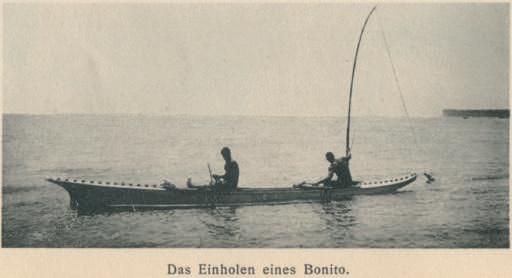
MacGreg or describes various composite hooks from t h e To ke l a u I s l a n d s i n d e t a i l , w h i ch h e i n d i c a t e s a r e manufactured like the bonito hooks (98): 106/107 T hese bonito hooks are identical to those from the Ellice Islands and Futuna, and examples lacking reliable collection data cannot be attributed with cer tainty to any one of these places specifically.
“ I n f i s h i n g a n d t e ch n i q u e s o f m a nu f a c t u r i n g f i s h i n g equipment, the Tokelau and Vaitupu (Ellice-Island) cultures are almost identical. T he fishing culture of these atolls is also closely parallel to the Samoan ” (98): 169 MacGreg or obser ves that each bonito hook is made with the g reatest attention to detail, and that the mother of pearl shanks are variously coloured. Which colour will be most likely to tempt the fish to bite is deter mined by the prevailing weather conditions “A fisher man has three or four lines to his pole, each with a bonito hook having a differently coloured shank ( ) T he only variation in the constr uction of this bonito hook from the Samoan hooks is a third hole at the base of the point in the Tokelau hook, which is used only for the attachment of the shank In this characteristic it cor responds to the hooks of Vaitupu, Ellice Islands ” (98): 109
Samoa
T he following obser vations primarily cite the work of Demandt (1913) and Te Rangi Hiroa (1930), as it was they who did the most complete research on fishing on the Samoan Islands (99), (100) Krämer, who begins a chapter entitled “Hook Fishing” in his monog raph published in 1902/1903 by stating that “T he Samoan hooks, called Matau, are not so ar tfully made as those of neighbouring island g roups,” is criticized by Demandt for his failure to become acquainted with most of the hook types present Beasley did not know Demandt’s monog raph, and wrote: “T he Samoan, as judg ed by his hooks, must have been both a poor fisher man and an indifferent maker of hooks ” (8): 22 Even Herdrich and Ar mstrong’s “Historic Fishing Methods in American Samoa,” published in 2008, ignores the most impor tant source, and quotes Krämer instead
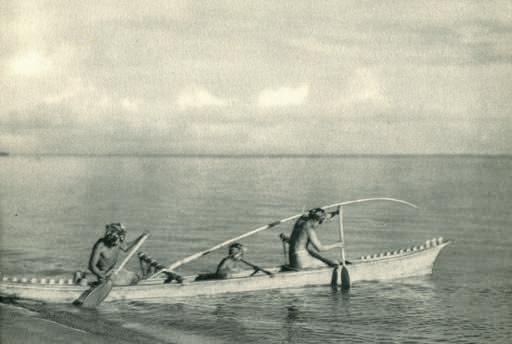
According to Demandt, the Samoan fished mainly in the lag oons, as the high seas had much fewer fish to offer him. He wrote: “Because the native fished primarily in the lag oon, he adapts his fishing methods ver y closely to the rise and fall of the tides, and is forced to fish in cer tain ways and for cer tain species according to their movements. T he ebbing tide (...) is the right time for fishing smaller fish and sea creatures T he rising tide, which always brings in a larg e variety
Pl 83
Pl 84
Pl 86
195
(*) “Bringing In” of the bonito. (99): Pl. II
aktuelles hakenbuch 12.okt:miot neu vertikal 30.11.2011 18:16 Uhr Seite 195
Samoan fisher men setting out for bonito Pl p 175 in: Flaher ty, Rober t J : Samoa, Berlin, 1932 (photog raphed by the author)
A
y
3,1
of fish, also offers oppor tunities, while high water is the best time to use fishing methods designed to catch larger prey.” (99): 11. According to Demandt, the Samoan fished with both the one-piece hook called Matau, as well as with the composite hook, called Pa There is no indication that Ruvettus fishing was practiced.
Demandt presents a variety of composite hooks, and describes their use in detail He distinguishes three g roups: T he small Pa laiti (*1), the Pa ala, and the bonito hooks, Pa atu T he Pa laiti have f lat shanks made of various sea or snail shells (*2), which are wider at their heads and drilled with two holes T here is a g roove at the base of these shanks which helps kee p the plant fibre line securely bound to the point It is vital that “the line or its leader should first be tied to the point, and not the shank T he line and point can only be attached to the shank once this connection has been made.” (99): 29. From the edg es of the reefs, as the water was coming in, one fished for smaller fish using these small hooks, pulling them across the water by means of a rod (*1) is a hook of this type
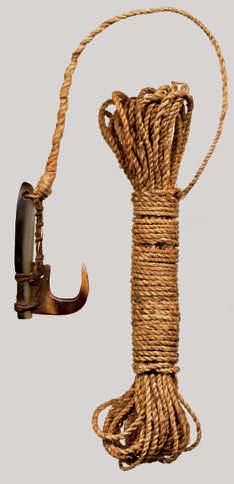
The Pa ala are the second composite hook type. They are in many respects similar to the Pa atu bonito hooks But the Pa ala always have feathers of the Tropicbird (Phaeton aethereus) tied to their bindings from the head to the base of the shank (*3).
T he hooks illustrated on plates 83 and 84 are of the Pa ala type According to Demandt, the Pa ala is the only Samoan hook “that has, since a long time ag o, had a leader It consists of a thin and spun meter long Soga bast (Piptur us) line, while the main line itself (Ta’a) is made of specially braided sennit (Afa) ” (99): 31
T he hooks with leaders and lines (*4) on the plates are outstanding examples of Pa ala, even if only fragmentar y remains of the white Tropicbird feather hackles are still present T he shanks are made of various kinds of sea and snail shell, while the points are always made of tur tle shell. T he pe ppered shanks made of Conus virg o and called Pa ala lau are especially appealing (first in plate 83), as are those made of Cypraea Mauritania (third in plate 83 and first in plate 84), on which the lip area of the shell displays beautiful colour contrasts. T hey demonstrate how ar tfully the colourful lip and its ser rated edg e are made into shanks T hese hooks, called Pa ala foafoa, are to be counted as among the most attractive in all of Oceania Hiroa went into g reat detail on the fabrication and bindings of Samoan composite hooks, and illustrated the phases of manufacture ver y clearly (100): 495-503 He writes: “T he making of hooks was exper t work and a master fisher man (Tautai) was not always a g ood hookmaker. A cer tain amount of ceremony is obser ved in making bonito hooks ( ) T he tools were the drill, r ubbing stone and cutting implement ( ) In ancient times stone f lakes must have been used for cutting the shell ” (100): 495
(*2) Pearl shell shanks are rarely seen, because the shell does not occur on the Samoan coasts, and had to be impor ted from other islands
(*3) Only Demandt, the most knowledg eable ethnologist on Samoan fishing methods, points this out (99):77
(*4) Beasley: “T hese lines are always a work of ar t T he light brown colour of the fibre is in itself pleasing, but what is so remarkable is the wonderful evenness of the plait ” (8): 24
T he illustration “bonito hook ( ) ” is fascinating (*5), (100): Fig 286
Herdrich and Ar mstrong (2008) emphasize the meaning and impor tance of the bonito hook and its cor rect binding. T hey refer to Krämer, according to whom failure to obser ve ver y strict r ules would bring bad luck and cause the hunt to be unsuccessful (102): 19
We lear n that: “Bonito fishing was so special that there were many taboos, or restrictions, reg arding it To begin with, bonito was considered a fish for chiefs,
196
Pl 83 Pl 84
Pl 83 Pl 84
aktuelles hakenbuch 12.okt:miot neu vertikal 30.11.2011 18:16 Uhr Seite 196
(*1)
ver
small,
cm long, composite hook with a two colured mother of pearl shell shank
and even the supreme g od, Tag aloa, wanted a bonito ( ) T he first bonito of the season (...) should be given to the high chief; the first bonito in a new canoe is called Tagaloa's fish; sopoliu means to transg ress the laws of bonito fishing by ste pping over the canoe, and so on ” (102): 19 Demandt’s remarks on bonito fishing are of interest: “Although one would be hard pressed to find a Samoan who did not practice fishing in the lag oon, the opposite is tr ue of dee p-sea fishing ( ) At least half of the people, however capable they might be of doing so, do not g o on shark and bonito hunts, ( ) because they simply have no experience or training for it ( ) T he best times for the bonito hunt are the beginning and the end of the rainy season, that is to say April and May, and November T hese are the times at which the sea is ver y calm, and that is a prerequisite for success ” (99): 71
Two fur ther fishing methods described and illustrated by Hiroa need to be mentioned here: “Fish g org es ( ) with shar ply pointed wooden g org es ( ) also made of fish bone were used ” (100): Fig 280, p 490 Hiroa also describes the phases of the manufacture of the eel hooks called Matau tuna, which are made of hard wood (100): Fig 281 Eels up to 2 meters in length live in the mang rove swamps that for m where waters r un into the sea T hey also occur in the rivers in the mountainous areas.
T he octopus lure on plate 86 (O le ma ’ a ta’i f e ’ e) resembles the examples illustrated by Demandt and Hiroa T he body of the lure consists of a ver y meticulously g round conical piece of calcite (*6) T he gleaming brown speckled Pule shells (Cypraea tig ris) are bound onto this stone with sennit, in such a way that the entire top of the shell is covered by it. T he Samoan ter m Pule ta’i f e ’ e for the lure is derived from the name of the shell “A sor t of tail, made of f lexible twigs with feathers and fring es attached to it, is secured to the shell ( ) T he line is tied to the binding on the upper par t of the shell in such a way that the Pule ta’i f e ’ e hangs in horizontally balanced equilibrium, with its tail extending from it, when suspended from the line ” (99): 88/89 T he fisher man moves the Pule ta’i f e ’ e around when it drifts in the water, and its dancing motions are supposed to entice the octopus to attack Herdrich and Ar mstrong describe this attraction as follows: “T his motion was said to look like a rat, and when the shells click the stone, it was said to sound like the squeaks of a rat (this method is still used). T he octopus was attracted to the lure and as the lure was drawn away, it held onto it even more with its tentacles T he fisher man drew it out of the water and ( ) the octopus was bitten between the eyes to kill it. T his fishing method, perhaps more than any other, is accompanied by a mythological stor y, which explains the style of the lure and why it should resemble the actions of a rat Hiroa gives a version of the tale ” (100): 438, (102): 25
Tongan Islands
T he octopus lure from Tong a on plate 91 differes from the Samoan type only in not having any Pandanus leaves tied on to the stick In all other aspects it is made and used in the same way. (*7).
T he “classic Tong an hooks” are among those which were already collected
(*5) Bonito hook in the position for lashing the snood and head T he craftsman sits cross leg g ed on the f loor If the snood is shor t, a long cord (1) is tied to its end. With the point of the hook to the craftman’s left, the long cord (1) is passed over the right tight (2), brought back under the knee to pass across under the the left knee (3), and over the left tight to the middle line where it is hooked around the cur ved point of the hook (4) T he cord is retur ned over the left tight under the left knee and across the right big toe (5) around which it is twisted
Pl 86
Pl 91
Pl 85
Pl. 87
Pl 88
(*) Tasman’s ships lie at anchor at Tong atapu in the Tong an Islands, g reeted by islanders in threeman canoes. T his is the earliest illustration of fishing in all of Oceania, published in 1643, and showing Tong an fisher men eng ag ed in bonito fishing and using the hook described below (112): 296
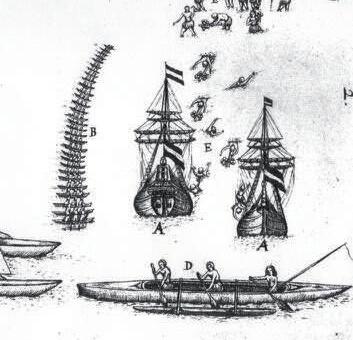

(*6) We lear n from Demandt that calcite was impor ted from the neighbouring island of Niue He did not obser ve the use of endemically occur ring Samoan stones for the manufacture of the lures
(*7) Koch tells us the Tong an octopus lure (Makafeke): ( ) is made from a c 10 cm long stone, g round to a conical shape, to which are tied: two pieces cut from the Tig er cowrie (“back”), a piece of coconut palm root and a few strips from it’s leaf as “tail” (about 50cm long) and a few leaf pieces as “legs” so that the whole looks similar to a “rat ” Early in the mor ning and during low-tide one moves with the outrig g er canoe over the reef, lowers the lure 20 to 50 cm down into the water holding it by the string, with jerking moves T he octopus g rabs the “rat” and is taken and killed ” (216): 178
T he illustration on pag e 53 shows a boy from the Loyalty Islands fishing with an octopus lure
197
aktuelles hakenbuch 12.okt:miot neu vertikal 30.11.2011 18:16 Uhr Seite 197
Pl 89
Pl. 90
Pl. 91
and published in the 18th centur y (113): Pl 32 (*1) Plate 85 shows notewor thy examples of these composite hooks, each assembled from four different materials (*2) T he first and third of these have special characteristics that will be examined T he fabrication of a hook like this requires experience, thorough understanding of the materials involved in making it, a developed sense of for m, and consummate skill in the use of the simple stone-ag e tools that were available All par ts of it had to be manufactured with g reat precision, and then bound tightly tog ether with plant fibre line T he hooks, called Ipa or Aipa, impress with the finely polished surfaces of all their par ts, and the precision with which the shanks, the tur tle shell points and the mother of pearl overlay pieces are drilled. T hese ver y distinctive hooks are not only highly functional and efficient, but testimonials to the highly developed aesthetic sense of their makers Duff explains why it was usually necessar y to make the shank out of whale bone: “Because pearl-shell was not thick enough to shape into the “minnow” lure, this was shaped from dense whalebone, faced with an inlaid base plate of shell ” (104): 53
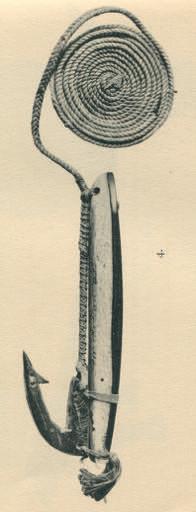

Pl. 85
(*) (113): Pl 32, Fig 27
(*1) Abel Tasman mentions a trade in his 1643 j o u r n a l , i nvo l v i n g a b o n i t o h o o k t h a t wa s brought by three Tong ans in a canoe He writes:
“In retur n for our gift, the people tied one of their fish hooks to the stick T he hook was made of a piece of mother of pearl shell in the shape of a small sardine ” (112)
(*2) T he shanks are made of whale bone or wood and mother of pearl, the points of tur tle shell, all tied tog ether with plant fibers
(*3) Hooks with early collection dates were often e r r o n e o u s l y a t t r i b u t e d t o O t a h e i t e S o, f o r example, five of the six hooks on a plate are attributed to Tahiti, when they are actually of Tong an origin (107): Fig 49
Pl 85
T he hooks are frequently described as bonito hooks in the literature, but there can be doubt as to whether this is cor rect T hey are markedly different from other bonito hooks in ter ms of length and weight, and because they have barbed points. Duff states: “T he Tong an lure hook was twice as larg e as the standard bonito lure (Pa atu) from other Groups where also the recur ved point on the tail was unbarbed to enable the fisher man to swing the bonito in-board in one dextrous motion Intended to hook larg e tunny or kingfish too larg e to swing in-board, the Tong an hook was provided with a barb to hold the fish in dee p water until it tired and could be drawn alongside.” (104): 53. Back to the first hook on plate 85: T his Ipa is the oldest of this g roup and has a wooden shank It has numerous bite marks from long and re peated use T he use of wood instead of whale bone as a shank material is extremely rare. Klemm was probably the first to mention a wooden shan k in 1854: “T he fish hook s of Otaheit i are worked with admirab le meticulousness (*3) T heir shanks are made from the middle por tion of a bone, or of wood, and a piece of mother of pearl is laid onto the backs of them.” (105): 58. Despite the fact that shanks made from wood, in some cases even decorated wooden club fragments, can be found in collections, the only hook with a wooden shank illustrated in the literature is in the Cook/ Forster collection at the University of Götting en (Oz213), (106): 238b It appears to have been little used, if at all T hat easily accessible wood was re placed by whale bone, which was ver y difficult to obtain, as the material of choice for the manufacture of shanks might be because the light coloured bone tog ether with the mother of pearl overlay were more attractive to the tunny and kingfish, and thus more likely to be taken
The third hook differs from the others in that it has a two-piece tur tle shell point It is likely that the absence of a single piece large enough made it necessar y to use two pieces, carefully made to be joined neatly to one another and “sewed together” with plant fibre line in two places The joint is so well made that the point’s two-piece constr uction is only obvious upon close examination Three other examples with two-piece points are known in the literature. Those in Stockholm (*4) and Vienna can be traced to Cook The third, illustrated by Klemm, is apparently in
198
(*4) A Tong an composite hook collected on Cook’s second voyag e (108): Pl XII
aktuelles hakenbuch 12.okt:miot neu vertikal 30.11.2011 18:17 Uhr Seite 198
the Leipzig Museum für Völkerkunde (108): Pl XII, 4; (109): Ill 50; (105): Fig 98
This hook type could also be found on neighbouring island g roups, because the Tong ans were extraordinar y navig ators and maintained regular relations even with ver y distant islands A hook in the Fiji Museum is identified as a “fine example of a Samoan type of lure”. It is fur ther stated that: “Samoan in origin, these lures were also used in Tong a, whence they probably came to Viti in the late 18th centur y, when Lemaki craftsmen from Manono in Samoa settled in Lau ” (110): 147

Bonito Hooks
T hese composite hooks are about half the size of the classic Tong an hooks, and consist of a mother of pearl shank and a tur tle shell point Both examples on plate 89 are typical of this type, which appears in a ver y similar for m in Samoa as well Different in a few aspects (for instance that in most cases the upper par t of the shanks are pierced twice), these hooks, which are exclusively for bonito fishing, are also found on Futuna and the Tokelau and Ellice Islands. Illustrations of hooks of this kind collected on Cook’s voyag es appear in Götting en ’ s Cook/ Forster collection catalog (*5a/b) Kr üg er remarks: “Such composite fish hooks cor respond to the Wester n Polynesian type and occur in such a similar for m especially in Samoa ” (106): 322 Tong an hooks were ver y highly prized, and were also presented to people of high rank Ma’afu, a prominent Tong an notable, g ave the Gover nor of Fiji “ a splendid larg e fish hook made of tur tle shell, pearl and sinnet”, and said to him: “You have g ot the land, I bring you the water, as land without water is useless. Here it is with all the fish and living creatures in it ” (111): 120
It should also be mentioned that what is probably the earliest illustration of fishing in all of Oceania, published in 1643, shows Tong an fisher men eng ag ed in bonito fishing and using the hook described above (ill p 197) (112): 296
Tongan R uvettus Hooks
Like the west Polynesian bonito hooks, similarities between them make the Ruvettus hooks difficult to attribute to any specific island g roup. In his thorough work on the subject, Gudg er shows several examples from Tong a (18): Fig 43, 44 The one illustrated on plate 90 is similar to those, but also shows some resemblances to hooks from Tokelau and the Ellice Islands. Anell doubts the occur rence of the Ruvettus hook on Tong a, because it is not used on Samoa, Fiji or Futuna, but forgets to mention that its use is widespread on Niue, east of Tong a Gudger writes: “there is one account of Ruvettus fishing in the Tong as However, there is ever y reason to believe that Ruvettus could be taken in all of the Tong as for they are low, steepsided, coral atolls (...). Indeed Becke says that while Ruvettus is found at Tong a it is repor ted as rare ” (18):263
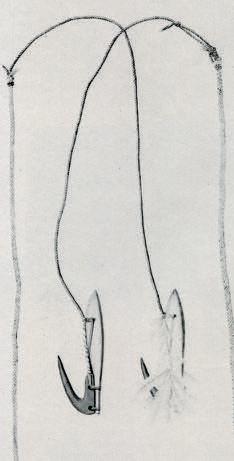
Our hook, and the hook illustrated on Gudg er’s Fig 44, show a notch in the bend, resulting from the r ubbing skin and teeth of the hooked Ruvettus. Labillardière, who presents the Tong an composite hooks described above,
Pl. 88
Pl 89
Pl 90
Pl 90
(*5b) Two fur
bonito
collected on C o o k ’ s 3 r d voy a g e a r e n ow ke p t i n t h e Historisches Museum in Ber n (Inv Nr Tah28, 29; length 9,5 cm and 7 cm)
199
ther
hooks
(*5a) A bonito hook collected on Cooks 2nd voyag e, now kept in the Ethnological museum in Vienna (length 9,7 cm)
aktuelles hakenbuch 12.okt:miot neu vertikal 30.11.2011 18:17 Uhr Seite 199
(*) Drawing by John Clevely of two bonito hooks collected on Cook’s second voyag e
(*2) “Its chief peculiarity is that the barb is lashed on with the interlaced binding so often found on Tong an work ”(18): 20
(*3) (19): 223
(*5) T his hook type is hardly ever seen in Ger man collections T he ethnog raphic collection of the University of Götting en houses a few examples, up to 5.8 centimeters in length. (Oz 559, 562, 566, 567, 568, 569)

as well as a octopus lure ver y similar to those from Samoa, illustrates a wooden hook on plate 32 of his atlas (*1), which Gudg er (*2) and Anell (*3) discuss. It was ver y likely used for catching shark and Ruvettus (113): Pl 32

Niue
Niue, the larg est raised coral island in the world, lies east of the Tong a Islands It was first settled by Samoans about 1000 years ag o, and Tong ans followed in the 16th centur y Few hook types were passed on Good examples are seen in Beasley (8): Pls. L/LI. Anell states: “Niue Ruvettus-hooks (*4) are well known. T hese have a rather wide base with long parallel shank and point-limb At the base they end in a pointed peg projecting under the base ( ) As on Ontong Java, the natives here used the stick-device, to which the line was tied fast. It sometimes happens that they ar rang e whole series, with the main line r unning from stick to stick, downwards ending with a big stone sinker ” (19): 232/233 Gudg er, Loeb and Miles demonstrate this with g ood illustrations (8): Fig.60, (114): Pl. XI, A; (115): Pl. XIX Loeb writes: “Fish hooks (Matau), made from the roots of the maile tree, were usually on a line of banyan root, five or six to a line, with stone sinkers attached ” (114): 96. He also illustrates an octopus lure ver y similar to those from Samoa, and writes that it was first impor ted by a missionar y from Samoa, just like the bonito hook (114): 96
Nor ther n Cook Islands
T he Nor ther n Cook Islands lie at the intersection of the g reat Polynesian cultures T he nor ther n island g roup, which includes the atolls of Pukapuka, Manihiki, Rakahang a and Tong areva (Penrhyn), belongs to the wester n Polynesian cultural area T he Souther n Cook Islands, over 1200 kilometers away, are of volcanic origin Among them are Aitutaki, Mitiaro, Rarotong a and Mang aia T hey were most probably settled about 1500 years ag o by Society Islanders, although connections with the Austral Islands to the southeast are also apparent T he tiny and isolated island of Pukapuka, with its population of only a few hundred inhabitants, produced several notewor thy types of hooks. Plate 92 shows three of these eleg antly shaped mother of pearl hooks, which are readily identifiable due to their sickle shaped barbs (*5) Beasley illustrates an impressive g roup of these appealing hooks, whose barbs have no comparables in Oceania, but er roneously attributes them to an island in the Tuamotu Archipelag o with the same name (8): Pl XLIX a/b Beaglehole calls this hook type Matau and Waka vae He says: “T he first man to make the barbed hook is said to have been Te Upe, a man of Loto who lived ( ) twelve g enerations ag o ” (116): 19
The hook (*6) illustrated alongside also displays perfect workmanship of materials and master y of for m Another ver y similar hook from the Emerson collection is housed in the Bishop Museum in Honolulu (BPBM 3755) It is wrongly attributed to K auai (Hawaii). Along with another mother of pearl shell hook it originates from the tiny island of Pukapuka in the Northern Cook Is (163): Fig 142
200
Pl. 92
Pl 93
Pl 94
Pl. 92
(*) Shark fishing illustrated on a wooden club from Tong a
aktuelles hakenbuch 12.okt:miot neu vertikal 30.11.2011 18:17 Uhr Seite 200
(*4) Ruvettus hooks from Niue, illustrated in: Ethnologica Cranmorensis; Chislehurst, 1938, No 3, Pl XIX
According to Beaglehole, the one-piece mother of pearl shell hooks were manufactured in g reat numbers and in var ying sizes “to catch all the varieties of lag oon fish and most of the smaller dee p-sea fish T he hooks are named according to their size and shape For accurate classification, the name of the fish which the hook is made to catch is usually added to the type name of the hook. T he hooks are made from black- or g old-lipped shell and usually provided with leaders of wao cord T hey may be classified by shape into three types: a U-shaped hook, a circular hook that is usually barbed, and a slanted U-shaped hook that may be barbed ” (116): 194/195 Hook (*6) is of the U-shaped type, called Tope on Pukapuka
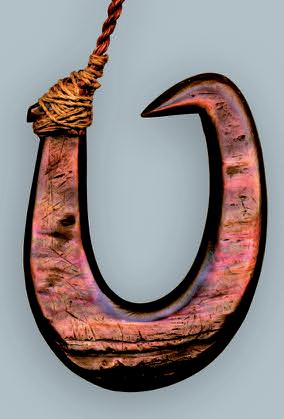
T he three bonito hooks on plates 93 and 94 show clear signs of being related to west Polynesian bonito hooks T he mother of pearl shanks and the twoholed mother of pearl points (*7) are carefully worked and ar tfully shaped T he points r un essentially parallel to the shanks, but are cur ved slightly outward at their tips Presumably this makes the bonito somewhat easier to remove from the hook Beaglehole says: “T he point of the bonito hook is shaped from shell cut from the lip edg e of the pearl shell. One side shows the inner surface of the shell, the other side the black or g old outer surface ” (116): 199 T he bindings are made with equally g reat care T he shank and the point are fir mly tied tog ether with fine plant fibre. On the top one, the point was additionally secured with filler sticks of coconut leaf midrib inser ted on either side of the binding (*8) T he line, drawn through the upper hole on the point, was fur ther wrapped with ver y fine plant fibre line to prevent slippag e and was additionally strengthened by the addition of yet another fine plant fibre binding, clearly distinguishable from the original one T he one in the middle has a hackle which is found only on Pukapuka bonito hooks. Beasley says of it: “T he hackle is peculiar, consisting of nine or more lengths of twisted fibre, each ending in a knot ” (8): 34 T he shank bases on two of the hooks also have a par ticularity that Beasley remarks upon: “T he base of the shank on the outer face is cross-hatched to prevent the point-shank lashings from slipping ” (116): 198 T his is clearly visible in plate 93
Since references in the literature to the care and maintenance of hooks, which are so laborious to manufacture, are so rare, Beaglehole’s obser vation is interesting: “After use, the bonito hooks and leader are detached from the bonito rod and soaked in fresh water to wash out the salt from cord and lashings. T he hooks are hung to dr y in the shade ” (116): 202
Bonito hooks from Manihiki, Rakahang a, and the nor theasterly Tong areva Atoll (Penrhyn) are also of the west Polynesian type
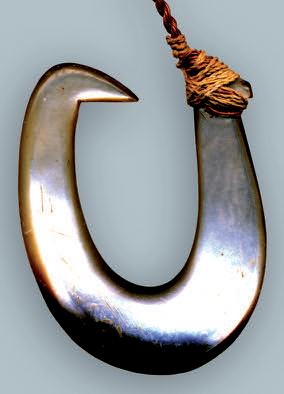
Hiroa gives ver y detailed infor mation on the bindings (117): Fig 89-100 “T he line or leader is looped around the base of the point where it is included under the point lashings T he leader is also attached to the shank by a lashing passing through a hole pierced through the thick head of the shank.” (*1 next pag e), (117): 172 He also describes the manufacture of the mother of pearl shanks and points ver y thoroughly: “T he shank is cut from the pearl shell in a long, nar row strip so as to include a par t of the hing e to for m the head, while the thinner base includes some of the coloured par t toward the lip of the shell ( ) T he shell was
Pl. 93
Pl. 94
(*6)
Pl 93
(*1) T he first illustration of a Ruvettus hook (Tong an Islands), (113): Pl 32, Fig 29

(*7) Beaglehole also mentions bonito hooks with mother of pearl shanks and tur tle shell points (116):197
(*8) T his way of stabilizing bonito hooks is widespread throughout Micronesia
201
aktuelles hakenbuch 12.okt:miot neu vertikal 30.11.2011 18:17 Uhr Seite 201
(*) Bonito hook from Manihiki. (10,4 x 2,4 x 2,2 cm)
(*1) T his binding is seen on bonito hooks from all of the nor ther n Cook Islands
(
* 2 ) A c c o r d i n g t o H i r o a , t h i s p r a c t i c e i s ubiquitous in Polynesia He obser ved it on Samoa, Nordhoff on Tahiti, and Kennedy on the Ellice Islands (117): 175
(*3) T hese hooks show an amazing resemblance to examples illustrated by Hiroa from Fag atau, over 2000 kilometers away in the Tuamotu Archipelag o (117): 192 and Fig 106, b
(*4) Hiroa refers to this hook which Beasley also illustrates (8): Pl. LIII: “Mr. Dr ury Lowe collected two similar hooks on the island of Mauke ( ) Lowe states that his hooks ( ) were used for catching kura vena (Ruvettus) Though conveniently regarded as shark hooks, they were used for catching other large fish as well ” (120): 239

originally cut with thin pieces of hard coral r ubbed along the lines of the section and assisted with a little water. (...) T he shaping was also done by r ubbing with coral ” (117): 172-73 Since the iridescent colour of the shank is impor tant, it is re peatedly dipped in water during the process of its manufacture to be examined for its tint (*2). T he hooks are ver y similar to those from Pukapuka, Tong areva (Penrhyn) and West Polynesia Hiroa writes: “All the hooks I have seen from Manihiki and Rakahang a resemble the Tong arevan hooks in having the points made from the outer par t of the pearl shell One side of the point is thus white and nacreous and the other side, which cor responds to the outer surface of the shell, is dark. T he outer surface is not g round down sufficiently to bring out the iridescent colours of the shell, as it is unnecessar y in this par t of the hook ” (117): 176
Our hooks cor respond in ever y respect to those illustrated by Hiroa But since there are no significant differences between them and examples from Tong areva, they could also be from this island (*3) An attribution for this kind of bonito hook, exce pt to Pukapuka, will always be problematic in the absence of collection data. In our case the place of origin is inscribed on the shank: Manihiki.
Ruvettus hooks from the Nor ther n Cook Islands are described by Beaglehole for Pukapuka, and by Hiroa for Manihiki, Rakahang a and Tong areva (116): Fig. 36, 37c; (117): Fig. 77; (118): 208, Fig. 61. With reg ards to the Tong arevan hook, Hiroa remarks: “T he typical hook is now used in Tong areva, but the inhabitants think it was introduced None was seen (1932), but they are said to be made of ngangie wood (Pemphis acidula) and shaped like those used in Rakahang a and Manihiki ” (118): 208

Souther n Cook Islands
Only a few hooks are known from these islands, which were already visited by European explorers in the second half of the 18th centur y T he rare larg e onepiece wooden hooks, elevated to the status of ar t works by their beautiful shape, surface treatment and exce ptionally ar tful binding, have been published often. T he most perfect sur viving example of this type was first illustrated by Edg e-Par tington in 1895, and could be admired on display in 2006 at the outstanding “Pacific Encounters” exhibition (*4). (3): Vol. II, plate 18, fig. 4 and (119): Fig. 220.
Another hook collected ver y early on, which Beasley considers one of the most beautiful from Oceania and gives a full-pag e illustration – (8): Pl CLXXV –has similarities to the preceding one “but from below the shank knob it is car ved in transverse nar row panels with the patter n characteristic of Mang aia ( ) T here is no definite infor mation reg arding the use of these hooks but they were possibly symbols retained by chiefs or head fisher men to bring success into fishing ” (*5), (120): 242
Sur prisingly, bonito hooks, which occur in nearly all regions of Oceania, are not known from the Souther n Cook Islands g roup According to Hiroa, the inhabitants of the volcanic Souther n Cook Islands never hunted the bonito, and that of course would explain their absence. People from Manihiki living on Rarotong a supposedly used their own hooks to catch bonito But Hiroa states: “It
202
Pl 95
(*5) (29,3 cm)
aktuelles hakenbuch 12.okt:miot neu vertikal 30.11.2011 18:17 Uhr Seite 202
is probable that the Cook Islands were too far south for bonito schools to visit them frequently enough to excite the interest of the Cook Islanders, though their ancestors must have acquainted this for m of fishing in the Society Islands.” (120): 243. Hiroa also mentions the Ruvettus hooks, and calls attention to their similarities to those from the Nor ther n Cook Islands He describes a method for sinking the hook into the dee p sea waters that is probably unique in Oceania: “the hook was bound to the stone by a series of tur ns with a slip knot that was released by a jerk of the line at any required de pth.” (*6), (120): Fig. 151, c.
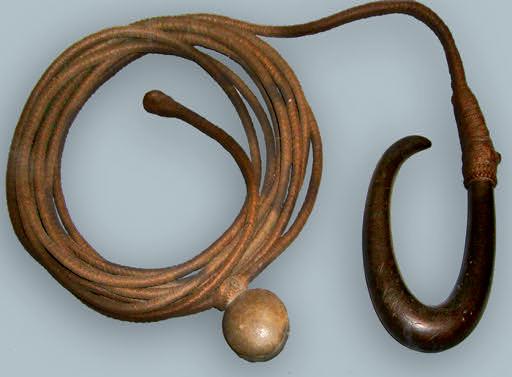
Society Islands
For the European explorers of the 18th centur y, Tahiti (or Otaheite, as the most impor tant island of the archipelag o was called at the time) was a vital stopping point for the re plenishing and taking on of needed supplies, and the refreshment of their crews During the often months-long stays there, it was possible to make useful obser vations and to collect many ethnog raphic objects A considerable number of fish hooks of various types were thus obtained by Cook between 1768 and 1779 in the course of his sojour ns there In 1928, Beasley wrote: “Old and authentic specimens are for tunately fairly common in our Museums, although but rarely encountered elsewhere ” (*7), (8): 38
T here are few Polynesian island g roups for which detailed infor mation on fishing, fishing equipment, and its manufacture and use, is as abundant as it is for the Society Islands Descriptions from the 18th centur y are typically fairly precise Unfor tunately, the ar tists of Cook’s voyag es only occasionally drew ethnog raphic objects Only a few sketches were actually made in situ during the expeditions T he objects collected, which included many fish hooks, were brought to England, drawn there, and then printed as copper eng ravings illustrating the voyag e accounts (*1a, 1b next pag e) Plate 96 and (*2 next pag e) show two unusual and eleg antly shaped one-piece hooks from the times of the earliest Wester n voyag es of discover y. T hey are among the earliest historic examples of Tahitian hooks, and testimonials to the native fisher men ’ s ability to achieve amazing results with the simplest of tools Dr Sinoto kindly pointed out that they are made from the black shell of the Giant Mussel and not “black-lip pearl shell as stated in most ethnog raphical descriptions of these hooks (Arina Vexillum (Pinidae familiae), “O’ota” in Tahitian.) T he quality of the ver y fine but solid binding of the hook to its line is fur ther evidence of an enduring tradition of hook making Unfor tunately, the early re por ts on these ar tfully for med hooks, whose sizes varied substantially, add little concrete infor mation as to how they were used (*8). Anell says: “To give an accurate account of the Tahitian modes of fishing with simple hooks is not
(*4) (Hight of hook: 22,7 cm)
Pl 96
Pl. 97

Pl 98
Pl 99
Pl. 100
Pl 101
Pl. 102
(*6)
Pl 96
(*) A stone anchor in the shape of two Ti’i (27 x 18 x 14 cm)

(*7) Beasley’s statements are based on British collections In the 80 years that have passed since h e m a d e t h e m , a nu m b e r o f i m p o r t a n t publications on Cook’s voyag es (104), (109), (119), (107), (106), (121), (122) have appeared a n d m a ke i t p o s s i b l e t o e x p a n d o n t h e m s u b s t a n t i a l l y T h e f o l l ow i n g S o c i e t y I s l a n d s h o o k s a r e n ow k n ow n t o e x i s t i n t h e s e collections: 17 in Götting en, 8 in Cambridg e, 7 in Florence, 4 in Vienna, 2 in Rome, 4 in Oxford, 2 in Lening rad, 2 in Wellington, 1 in Sydney, 1 in B e r l i n , a n d 1 i n L o n d o n , w h e r e t h e r e a r e probably more examples
(*8) T he best over view of the one-piece mother of pearl hooks from the Society Islands collected on Cook’s voyag es is in Götting en University’s m o nu m e n t a l t h r e e - vo l u m e wo r k o n t h e Cook/Forster collection (122): Vol II: 214-217
203
aktuelles hakenbuch 12.okt:miot neu vertikal 30.11.2011 18:17 Uhr Seite 203
(*2) (Hight of hook: 6,2 cm)
(*1b) Pl XIII in Parkinson’s A Journal of a Voyage to the South Seas in his Majesty's Ship, the Endeavour, London 1773 illustrates eight hooks from the Society Islands with noteworthy accuracy

(*3) Wer nhar t refers to Mor rison (123), who lived on Tahiti for several years at the end of the 18th centur y, when he writes: “To make their fish hooks, they used water and sand for r ubbing, with a stone as a working surface T hey also used a shark tooth as a drill T he hook’s shape was obtained through drilling and later filing with a piece of coral T he hook had no barb, but the point reached so far inward that it actually pointed downward, and Mor rison remarks that they rarely lose a fish ” (124): 130
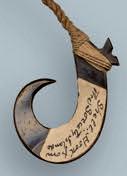
(*4) Examples do not appear to exist in Ger man mu s e u m s, e ve n t h o s e w i t h c o m p r e h e n s ive Oceanic collections
(*5) These can be readily recognized on the large hook in plate 97 They ensure a secure fastening of the snood
(*6b) T here are several smaller one-piece mother of pearl hooks from the Tuamotu Archipelag o in the University of Götting en ’ s collection, that have a similar binding around the base of the hook, possibly for attaching a small stone sinker (examples can be found in the Hawaiian section of this book), and a fur ther binding under the tip of the point for attaching the bait (Oz 558, 571, 572, 573, 574) T he additional line in this location can only be for the attachment of bait
possible In old sources we have accounts of a number of different methods; but the hooks used in this connection are not described. In moder n sources, ag ain, there are descriptions and reproductions of various types of hooks; but nothing is known as to the way in which they were used, since for at least a centur y all fishing has been done with metal hooks There is thus no connection between the preser ved hook-types and the descriptions of the actual fishing methods, a lack that is felt all over Polynesia, though nowhere so strikingly as on Tahiti ” (19): 100
Anell’s comments also apply to the hooks on plates 97/98. These examples, undoubtedly among the most beautifully shaped of the large Polynesian shell hooks, were made in the 18th centur y with stone-age tools (*3) and are rarely seen in collections (*4).
Bar row illustrates one of the two larg est of these hooks (the other being illustrated on plate 98) measuring 15 5 centimeters, and juxtaposes it with one of the smallest examples of its type, only 2 centimeters long (125): Fig. 60/61 Both of these examples were collected on Cook’s first voyag e and are in the collections of the Cambridg e University Museum in England Anell also illustrates the larg e hook with three smaller ones of the same type, and adds: “T he leaderattachment consists of one or several projections on the back of the shank (*5)
T he leader to these hooks is as a r ule tightly twined throughout the whole of its length, and they were doubtless used for catching the big g er and more rapacious fish, possibly dolphin and albacore ” (19): 101 T he larg est hook on plate 97 has a vellum label with the words “O’Tahite hook” written on it. Its binding is in perfect condition, which Beasley calls “ an uncommon occur rence with these hooks ”
(8): 40
A comparison of all of the hooks in the literature reveals that there are two ways of tying the leader : the loop shaped braided and plaited type (Pl 97 middle and 98 ), and the double-twisted line type (Pl 97 left and right) For both varieties, the binding to the shell shank consists of a tightly wound fine plant fibre line. Another notewor thy mother of pearl hook is in Copenhag en ’ s National Museum and is the only known example of a hook with a fine plant fibre line that, after extending from the head/leader lashings down to the base of the hook, is slung multiple times around the hook’s base, and ends in a splayed fring e T his line was either used to attach a small sinker stone or the bait to the hook (*6a, 6b) T he larg e hooks on plates 97/98 are exce ptionally old and rare mother of pearl hooks. Masterfully crafted from a ver y compact piece of shell, the one on Pl 97 is 1 4 centimeters thick at its thickest par t Two small protr usions stick out at the head of the shank, which assure a solid connection between the hook and the plant fibre leader Beasley shows a similar example (8): Pl LVIa He mentions that it is unusually massive and that there are “two lugs at the back of the shank for fixing the leader ” (8): 40 With a length of 15,5 cm the hook on Pl 98 is the larg est pearl shell hook published to date
Giglioli already wrote about the Tahitian one-piece hooks in 1893: “Gli ami da pesca di madreperla sono senza dubbio tra i più belli ed eleg anti che si conoscano,
204
Pl 98
Pl 97
Pl. 97
Pl 98
Pl. 97
Pl 98
Pl 98
Pl 97
aktuelles hakenbuch 12.okt:miot neu vertikal 30.11.2011 18:17 Uhr Seite 204
(*1a)
Cook dà loro il nome di W ittee-wittee, ma Ellis forse con mag giore esattezza, scrive il nome tahitiano Aviti” (“The fish hooks of mother of pearl are without doubt among the most beautiful and eleg ant known; Cook calls them W ittee-wittee, but Ellis, possibly more precisely, gives the Tahtian name Aviti ”), (*7), (103): 226, Pl V 31
T here is a drawing by John F. Miller of several hooks collected on Cook’s first voyag e Next to a Tahitian hook, which ver y much resembles the hooks on plate 96, there is another compact and circular mother of pearl hook on the drawing that clearly has the protr usion at the head of the shank, and whose leader is bound on in ver y similar manner (126): Vol I: 219, fig 3 With hooks this sturdy, larg er fish could also easily be caught (*8).
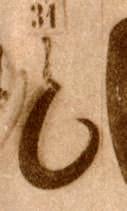
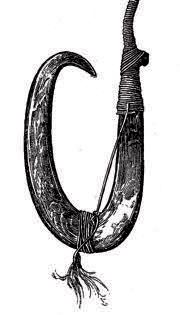
(*9) is one of the small excellently worked mother of pearl hooks of which Beasley illustrates only one (8): Pl LVIII 3 Anell says: “As reg ards to the lineattachment, it may be pointed out that they have no projection on the back of the shank like other shell-hooks from here Instead, the shank tapers upward in a point T hey may possibly have had fine g rooves on the outside to kee p the lashings of the line in place, the latter being obviously laid along the inside of the shank.” (19): 101. (*9) has a fine line binding beneath the point, comparing favourably to the one illustrated by Beasley T he bait was attached with this line T here is unfor tunately once ag ain no infor mation in the literature as to how these hooks were used and what fish were caught with them Lavondes makes a few vague remarks, using Mor rison (123) as a reference: “T he small pearl-shell or shell hooks were reser ved for lag oon or shallow water fishing Lines were ballasted with small g rooved stones or stones with a hole Small pearl-shell lures with a point, resembling the large lures for bonito fishing were used to catch ‘i'ihi (Myripristis sp.), or squir rel fish that conceal themselves in the intricacies of the coral ” (127): 31
Unfor tunately there is some confusion in the attribution of hooks to their g eog raphical origin in the chapter on the Society Islands in Beasley’s book. T he mats and many hooks illustrated in plates LX and LXI originate most likely in Micronesia, specifically the island of Nukuoro T he typical shar p angle in which the point limb swings away from the shank in some of the hooks on the mats points clearly to that island Fur ther on he illustrates some hooks on plates LXII and LXIII which definetely originate in the Hawaiian Islands
Hooks for Bonito Fishing
“It seems to me that the bonito hook reaches its highest development in the islands from Samoa eastward ( ) In design, constr uction, and all round efficiency, I think that the hooks of the Society Islands are second to none, ” (128): 233, (*10) writes Nordhoff, who on account of his many years of experience with Tahitian fisher men is considered the leading authority on fishing in the Society Islands The full range of the bonito hooks from the Society Islands is shown on plates 99-102.

A number of these have barbs T hey also occur in collections that were made at the time of Cook’s voyag es Consequently contentions that only examples without barbs were used for bonito fishing cannot be suppor ted (*11). Bonito hooks from the Society Islands always have a mother of pearl shank, while the
( * 6 a ) A h o o k i n t h e N a t i o n a l mu s e u m , Copenhag en (131): 364
(*9)
Pl. 99
Pl 100
Pl 101
Pl 102
( * 8 ) G u d g e r i l l u s t r a t e s a c o m p a c t r o u n d e d mother of pearl hook 7 centimeters in length, which, due to its point being bent shar ply inwards and the protr usion which is present for t h e a t t a ch m e n t o f l i n e, h e c o n s i d e r s “ a n undoubted Ruvettus hook ” (18): Fig 53 If one accepts Gudg er’s contention, then this would be the only known mother of pearl Ruvettus hook
(*10) Nordhoff was most probably unaware of the phenomenal variety of bonito hooks from the Solomon Islands
(*11) (129): 159
205
aktuelles hakenbuch 12.okt:miot neu vertikal 30.11.2011 18:17 Uhr Seite 205
(*7) A one-piece shell hook in the collection of the Ethnog raphical museum in Rome.
point can be made of bone (*1) or mother of pearl (*4) “It has only one hole through which the loop of the leader as well as the upper lashing are drawn. T he point base g enerally has a projecting par t intended to prevent the lower lashing from slipping off ” (19): 176 All of the hooks illustrated on the four plates (plates 99-102) clearly show these characteristics. Some still have their hackles attached to them Refer ring to Cook (First Voyag e, 1773), Beasley states: “To these hooks a tuft of white dog's or hog's hair is fixed as somewhat to resemble the tail of a fish ” (8): 43 Nordhoff makes impor tant remarks about the bonito hooks’ shanks: “T he shank of the hook, in the fisher man ’ s eyes, is the only really valuable par t ( ) Ever y first-class shank has (...) a g eneric name for the class of pearl-shell to which it belongs ( ) T he names of the different kinds of pearl-shell suitable for bonitohooks are curious, and seem to be ver y old; ( ) a real bonito-fisher man knows the names of ever y kind of shell from ever y district of ever y island in the g roup, and it is said that such a man will recognize nine out of ten of them at a glance ( ) In addition, each successful shank was given an individual name by its proud owner (*2). All of these kinds of shell are local varieties of the black-lipped pearl “oyster,” differing slightly in appearance after the dark outer surface of the valve has been g round away to expose the full lustre of the nacre ” Nordhoff g oes on to say, that after eight years of fishing with the natives, he is convinced that the bonito distinguish between the various shadings of the shank colours, and can react to them For this reason, the fisher man g enerally car ries about a dozen hooks with him, and selects the appropriate one according to weather conditions and the time of day “T here will be only one at which the fish will strike freely; yet all twelve have been chosen by an exper t fisher man. ” (128): 241-243.
Plate 100 shows two old bonito hooks, whose barbed bone points have been ver y carefully executed T he barb is only present in a ver y r udimentar y way on the top one. T he var ying shapes of the barbs on the mother of pearl points in plates 100 and 101 are interesting T hey are extremely rare in collections, and hardly ever mentined in the literature Nordhoff refers to a “fine old barbed Aviti” in the Museo Etnog rafico in Rome (*3). Hooper illustrates the long est of these hooks (16 2 centimeters), and says: “T he pur pose of these barbs is not to retain the fish after the point has penetrated its jaw, but the exact reverse; they are designed to prevent the point penetrating too dee ply and to per mit the hook to fall free the moment the tension on the line is relaxed ” (128): 246 T he long hook on the left of plate 100 was made in the 18th centur y, and has a vellum label inscribed: “Fish hook O’Tahite (f lying fish).” T he mother of pearl shank and the bone point are masterfully worked, and meticulously and ver y tightly bound tog ether with fine plant fibre line


Plate 102 shows three bonito hooks, whose shanks and points are made of mother of pearl T he line drawn through the hole in the point, the way a second and thinner line is passed over the first, through the hole in the point and around the shank base and the fine wrapping of a twisted string around the main leader line are clearly seen in the detail illustration (*4) As with all Polynesian hooks, the leader is attached to the hole in the head of the shank. According to Nordhoff, all of the bonito hooks on hand were extremely valuable: “An old and highly
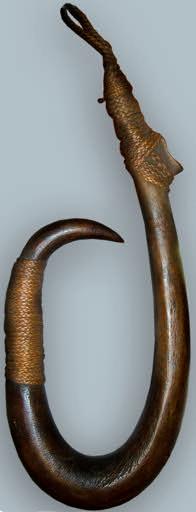
206
Pl. 100
Pl. 100
Pl 101
Pl 100
Pl 102
(*2) Nordhoff mentions 61 varieties, considered only a small selection, which all had individual names known to the fisher men
(*1), (*4)
aktuelles hakenbuch 12.okt:miot neu vertikal 30.11.2011 18:17 Uhr Seite 206
(*5) A Tahitian Shark hook collected on Cook’s first voyag e, now in the Ethnog raphical Museum in Vienna, 34 cm long w/o binding
successful bonito hook is proper ty almost beyond price, cherished not only for its utilitarian value, but because in the course of for ty or fifty years it has acquired in the catching of countless fish a tremendous charg e of mana ” (128): 239
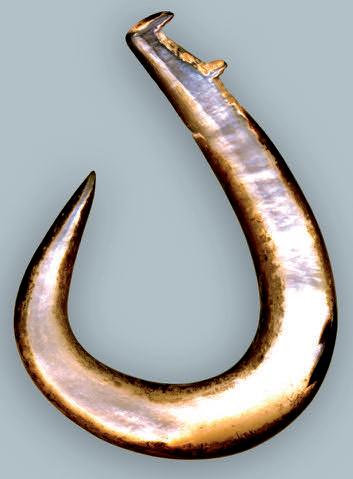
T he bonito was hunted during nine months, from October through June
As in west Polynesia and other areas, a long bamboo rod was used, whose held end was attached to a heavy g rip “T his was then fitted under the ster n thwar t of the canoe, and it had a second suppor t in the ster n itself, so that it stood at an angle of about 45° It was movable and could be swung sideways and lifted ” (19): 176
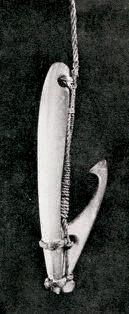
Ruvettus fishing was not practiced in the Society Islands area For shark fishing, large eleg antly shaped wooden hooks similar to those from the souther n Cook Islands were used (*5) A method of catching larger fish, especially the albacore, caught the attention of early explorers Oliver mentiones three methods of catching the albacore: “Smaller ones were often caught with pearl-shell hooks in connection with bonito fishing A second method, usually employed by a single fisher man in a small canoe, involved deep-line fishing in an albacore “hole” , using stones to sink the long lines, baited hooks and chum. The third was by means of tira, which Ellis described ” (200): Vol I, 297 There is an early but inaccurate illustration of it in Ellis (1829), (130) A much better one is published by Dreyer in 1898 (131): Fig. 238 (*6). Perhaps large hooks such as those seen on plates 97, 98 or in (*7) were being used here Lavondes offers the following description: “Two special types of canoes with an oblique rear board were tied together with two beams; the front beam was ver y solid as it also ser ved as a suppor t for a long pole (tira) ( ) This movable mast ( ) consisted of several elements joined one to the other Its base was (...) eng aged between the forward beam and another par tially mobile beam. To its forked extremity were fastened two lines and a bunch of feathers destined to attract the fish, when the mast was lowered into a fishing position A large f loating basket containing quantities of “ ouma fish” that ser ved as live bait, was hung between the two canoes The head of the fisher men (Tahua), who obser ved the movement of birds above the shoals of fish directed the double canoe by giving orders to the paddlers. When the moment had come he threw some live bait into the water, then the baited hook ” (127): 31 Lavondes fur ther writes: “This is how James Mor rison described the method of fishing: “The man on the bow who attends to bait the hooks keeps throwing now and then a small fish while the other with a scoop keeps a constant shower about the hooks; the fish soon f ly at their prey and get hooked when the men who attend the crane rope, having notice given them, haul up and the fish swing in to the man who attends to receive them and bait the hooks afresh.”
(123) “The pole was then raised almost ver tical by means of a rope pulled from the ster n and with the help of the men who were on the forward platfor m of the canoe While the fish slid to one side and was immediately knocked out, the hook of the other line was baited and tossed into the water In this way the two lines were worked alter natively at a ver y rapid rhythm.” (127): 31.

Oliver writes: “Tira fishing was highly productive and much more efficient, apparently, than ordinar y rod or hand-line trolling, for the larg e fish were landed more easily and more quickly by means of the tira device. On occasion an individual dee p-line fisher man might g et a larg e catch for himself, but on the

207
Pl. 97 Pl 98
(*3) John Fredrick Miller’s drawing in Bank’s Jour nal I, of a Tahitian bonito hook collected on Cook’s 3rd voyag e, now in the collection of the Ethnog raphical museum in Rome (Left a photo of the same hook)
Other examples are in the Cook collections in Götting en (Oz380, 391) and Vienna (#46)
(*6)
aktuelles hakenbuch 12.okt:miot neu vertikal 30.11.2011 18:17 Uhr Seite 207
(*7) An unusual shell hook from Tahiti Comp : (126): Vol I, Pl 1 170, p 219
(*) Tuamanu, an old war rior of Tereia Island, Tuamotu g roup. (from: National Geog raphic Mag azine, Vol XLVIII, No 4, 1928, p 384)
(*2) T he Ethnologisches Museum in Berlin displays a Tuamotu hook in its Oceanic collection p ur p o r ted l y co l l ected by Fo rster o n C o o k’s second voyage. Another 18th centur y hook is in the Pig orini Museum in Rome It is illustrated in (107): Fig 184 There are undoubtedly other unrecognized examples attributed to “the Society Islands” in private and public collections
(*7) T hese hooks are apparently not present in Ger man Oceanic collections, but do exist in French ones: T he Musée du Quai Branly has a 7 9 centimeter long example with the typical meticulously worked shank knob ( I nv N o 72 1987 2 36), and a second with the line still present (Inv No 71 1960 112 17) Hiroa illustrates other examples from the Mission Museum in Braine-le-Comte, Belgium, and the Musée de la Propag ation de la Foi in Lyon
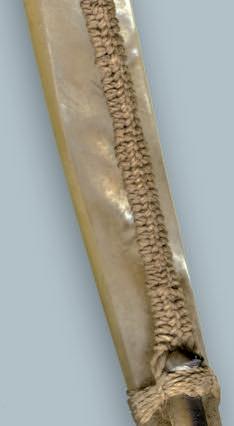
averag e the cooperative tira fishing crew probably brought in better shares all around.” (200): Vol.I, 298.
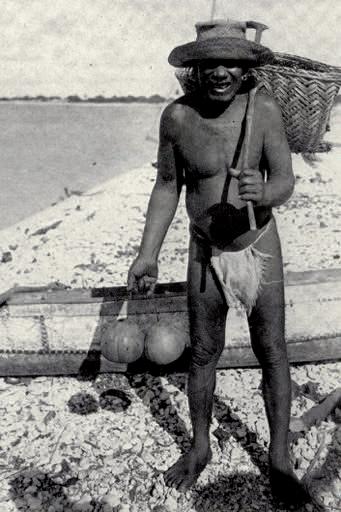
Tuamotu Ar chipelago
T his enor mous archipelag o consists of over 60 coral islands and lies at the easter n edg e of Polynesia Neither Anell nor Beasley offer a satisfactor y over view of fish hooks and fishing techniques from this area Emor y conducted studies on the islands in 1929-1930 and ag ain in 1934 He found a relatively intact culture there, and with the help of available existing literature and drawing on museum collections, it was he who was first able to piece tog ether a fairly complete account of the hook types from the archipelag o (132): 187-223
In 1876 Meinicke mentions the dear th of natural resources on the islands, saying: “All the more reason they are so meticulous about fishing, which they have developed to a ver y high level, and at which they excel ” (95): Vol II: 217 In Pacific Islands, one reads: “In contrast to the limited ag riculture, fishing is well developed. T he ramifications of the reef waters offers an abundance of fish, taken by hook and line or with spears, as well as in the fish weir traps ” (96): Vol II: 203
T he hooks shown on plates 103 and 104 are exce ptional examples of ver y old bonito hooks T hey are the products of an uncommon level of technical skill, coupled with a highly developed sense of aesthetics (*1)
Anell maintains: “All Polynesian bonito-lures have holes drilled in the base (of the point) ” (19): 188 He mentions the different regions in which one, two, or three holes are present. But he overlooks the fact that the points from the Tuamotu Archipelag o are not drilled at all, but instead have carefully worked protr usions that allow for their secure binding to the shank Hiroa, comparing Polynesian bonito hooks, concludes that the shanks are larg ely alike, and therefore concentrates in detail on the points whose shapes make it possible for even undocumented examples to be quite accurately attributed to a par ticular island g roup He writes: “It is quite probable that originally the proximal prolong ation was g rooved instead of pierced ( ) T he g rooved proximal prolong ation happily sur vives in the Tuamotus ” (117): 192
Emor y attributed these hooks, seldom seen in collections, to the Tuamotu Archipelag o (*2) T hey have ar tfully made hackles He says: “T he hackle consisted of the wider vane of a frig ate bird’s long wing or tail feather, stripped from the shank and then clipped, or clipped close to the shank and rolled into a bundle 2 to 2,5 cm long, and tied to the distal end of the shank by the middle ” (*3), (132): 212
According to Emor y, hooks of more recent date were equipped with hackles made of white horse hair Horses were common and widely distributed in the Tuamotus in the 1930s when he was doing his research
Another characteristic that is unique to the Tuamotu bonito hook: the ver y compact shank head has a trapezoid shaped cross-section According to Emor y, the bonito hunt is the same as it is in the Society Islands, as so thoroughly and impressively described by Nordhoff. (132): 213.
T he plates 105 and 106 show six one-piece hooks One hook (1st on Pl
208 Pl 103 Pl 104 Pl 105 Pl 106 Pl. 107 Pl. 103 Pl 104 Pl 105
(1*) T his detail illustrates the ver y fine fiberwork on a bonito hook from the Tuamotus
aktuelles hakenbuch 12.okt:miot neu vertikal 30.11.2011 18:17 Uhr Seite 208
106) is made of mother of pearl (*4), the others of tur tle shell T hese old and much used hooks with their beautifully preser ved leaders do not suppor t Anell’s and Emor y ’ s contention that the most common one-piece hooks were made of oyster shell “As on Tahiti, pearl shell (oyster) is the predominant material of which hooks are made in the Tuamotus, though both tur tle shell and bone are also mentioned ( ) ” (19): 102 Emor y writes: “Of the simple hooks, the most common was a pearl-shell hook of the for m known as Tangor o throughout the Tuamotus T hey had a well-rounded outline and rang ed from 3 8 to 8 cm in height T he point was lower than the head and cur ved inward, but not at an angle T he head had a backward f lang e to facilitate attaching to a line (...). T he leader, from 12 to 20 cm in length, was made of coconut fibre, g enerally a heavy two-ply cord, but examples of a larg e loop of braid are known T he leader was bound on with a wrapping of fine sennit braid or a fine cord of va vai or ongaonga fibres.” (132): 198. Members of the Wilkes expedition collected four Tangor o hooks on Napuka in 1839, including some ver y fine examples (132): Fig 162f T he hooks on plates 105 and 106 are remarkable for their perfectly preser ved leaders. T hey have an ar tfully shaped length of looping braided sennit, fur ther strengthened with a fine plant fibre line wrapping Such bindings are also seen on the one-piece hooks from the Society Islands According to Emor y, the Tangor o hook was supposed to catch Kito and Hoka (sea bass), (*5). T hese are presumably fish that occur red in the lag oons
Shark fishing (*6) played an impor tant role Beasley illustrates three hooks collected by Beechey on Vairaatea in 1826 “In all three cases the excellence of the lashings is remarkable, both in the even quality of the plaiting and the method of attachment.” (8): 45. T he larg est hook measures 25.9 centimeters, the smallest 15.3. Emor y maintains that the small hooks were used to fish for small sharks on the reefs and in the lag oons On larg er hooks, the meticulously attached points are made of wood. On smaller examples they are made of mother of pearl or of bone.
T he Ruvettus hook is not used in the Tuamotu Archipelag o
Emor y illustrates a ver y singular type of hook with a mother of pearl point. He writes: “An impor tant class of hooks, called Reke (heel) on account of their shape, are eel hooks of pearl shell, which were mounted in a piece of hard wood or between two long splints to protect the line from the eel’s bite ” (132): 204
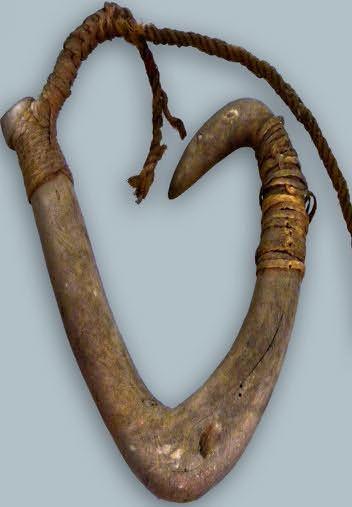
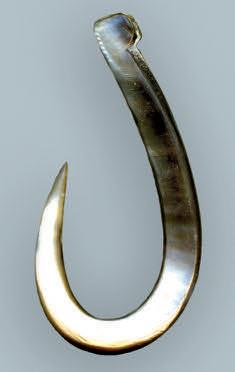
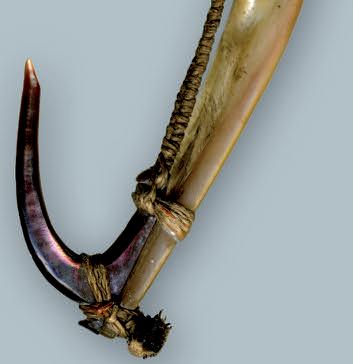
Mangar e va Gr oup
T here is little infor mation in the literature on hook fishing in this island g roup, which lies some 1800 kilometers southeast of Tahiti As for many Polynesian regions, the most reliable and complete source is Hiroa, who offers detailed descriptions of the unmistakable one-piece mother of pearl hooks from this area (133): 290-293
Plate 107 shows classic examples of these hooks, which are only rarely seen in collections (*7) Hiroa writes: “T he U-shaped hooks have a characteristic shank knob in the pronounced outward projection with upper and lower cur ved notches which undercut the ends of the knob and make them acutely pointed.” (133): 291 He fur ther says that the hooks on this plate are “perfect U-shaped
Pl 106
Pl 105
Pl. 106
Pl. 107
Pl. 107
Hoka
209
(*5) Kito = Epinephelus maculatus
= Variola louti (135): 245
(*3)
(*4) Another hook missing the line See also (132): fig 168 a,b
aktuelles hakenbuch 12.okt:miot neu vertikal 30.11.2011 18:17 Uhr Seite 209
(*6) A Tuamotu Islands Ruvettus or shark hook in the collection of the ethnog raphical museum in Papeete, Tahiti (length c 35 cm)
hooks ( ) showing point limbs long er than shank limbs ” (133): 291 T his characteristic makes these hooks markedly different from similar one-piece mother of pearl hooks in neighbouring island areas (*1) T he hooks are of var ying size, but show “the constant feature of the g reater length of the point limb than the shank limb. T he direct attachment of the leader to the shank knob without the use of a se parate thread to kee p the leader tur ns in place, has so far not been obser ved in any other par t of Polynesia and is hence unique (*2) T he g reater projection of the shank knob with cur ved notches above and below was thus inf luenced by the technique of direct attachment ” (133): 293 T he Mang arevan mother of pearl hooks are extremely meticulously worked and highly polished. According to Hiroa, a piece of shark skin, or of Ume fish skin, was used for this pur pose
The largest hook on the plate still retains a fine line wound around the point limb, which was used for the attachment of bait. “Bait (mounu) consisted of shellfish or other fish and was tied to the hook with a bait string (takara) ” (133): 293

It should be mentioned that bonito fishing did not occur in the Mangareva area

A Unique East Polynesian Bone Hook
T he hook presented here is impressive for its unusually eleg ant shape. It is made from whale- or another larg e sea mammal’s bone Its prominent knob at the shank head, which is ar tfully integ rated into the contour of the hook as a whole, would have ensured the secure attachment of the line It must be considered one of the most beautiful one-piece Polynesian hooks in existence T he powerful shank thickens almost imperce ptibly as it descends towards the base of the hook, and then tapers ag ain as it rises and approaches the perfectly shaped point T he fisher man who long ag o created this work of ar t, must have had an uner ring feeling for how the brittle material he was working with could be transfor med into a fishing tool that embodies a perfect mar riag e of for m and function Attribution for this hook is difficult, because comparable hooks can be found neither in the literature nor in museum collections. Heyerdahl illustrates a hook from Rapa Nui that has some similarities to this one (*3) He writes: “T he material is probably whale bone T he hook is unbarbed and of the rotating type with straight shank and incur ved point (...) the bend and point have f lattened sides which converg e slightly outwards T he rounded outer edg e of the shank nar rows and assumes a g radually increasing tendency to keeling towards the point, whereas, in contrast, the inner edg e simultaneously becomes increasingly f lat. T he esthetic effect is remarkable.
T he tip is pointed and shar p ” (134): Fig 106, 429
Unfor tunately, the shank head, essential for positive identification of the hook, is absent, and all known comparable bone hooks from Rapa Nui have somewhat different shank heads (*4) Likewise, comparison with other one-piece bone hooks from other Polynesian areas yields some g enerally similarly shaped examples, but all have differently shaped shank heads Much smaller bone hooks from Hawaii, mostly from archaeological sites (*5), have similar shank heads, but these are not seen on the larg er hooks produced in this island g roup in the 18th and 19th centuries Our hook is however not the accidental creation of some
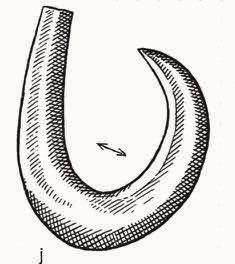
210
Pl 107
Pl. 108
(*1) T he only other Oceanic hooks whose points extend higher than their shank heads are the mother of pearl hooks from Nukuoro, but their shanks are shaped differently (see Pl 60) T he one-piece hooks from the Tokelau Islands also display for mal similarities to these hooks, but are predominantly made of coconut shell (see Pl 79/82)
(*5) Emor y, Bonk and Sinoto call this fish hook head for m “pointed with protr uding knob” (172): 12.
(*3)
(*2) Detail illustration of a hook collected in the 1830’s by Vincendon-Dumoulin on the Dumont D’Ur ville expedition
aktuelles hakenbuch 12.okt:miot neu vertikal 30.11.2011 18:17 Uhr Seite 210
(*) A young man posing in a studio photog raph from c 1900 with Tahitian or Tuamotuan hooks on a string around his neck He is also wearing a bark belt from New Guinea At the time it was common to use ethog raphical “props” that came handy without considering their origin
fisher man, but clearly the result of a long evolutionar y process, and would have to have had many predecessors. T he old label on the shank reads in French: “Hameçon deter ré dans l'ile de Bora Bora,” a somewhat questionable statement T herefore, for as long as no comparable hook appears, its place of origin will remain a myster y.
Marquesas Islands
T he Marquesas Islands have fewer fish hook types than the Hawaiian or Society Islands. No hooks attributed to these islands were collected there by the navig ators of the 18th centur y (Cook visited the island g roup in 1774), presumably because they were not as common there as in other island areas Hauser-Schäublin writes: “Fishing was undoubtedly ver y impor tant” (106): 228, but then g oes on to cite Kr usenster n: “Fishing is an occupation which is disdained by anyone who has a sizable piece of land It is thus only the poorer classes of people who busy themselves with it, and who so obtain their livelihood.” (137): 233.
Anell also refers to Kr usenster n: “Hookfishing seems not to have been ver y common on the Marquesas, and the fisher man ’ s occupation, contrar y to the conditions on e.g. Tahiti, was not held in any g reat esteem.” (137): 233. Other remarks to this effect about fishing and fish hooks are made by other authors Meinicke, for instance, speaks of “clumsily worked hooks made of mother of pearl or bone ” (95): 24 T his raises the question of why a fishing culture comparable to that of the Society Islands apparently did not develop on the Marquesan Archipelag o. Anell says: “One contributor y cause of the poor fishing was doubtless the steepness of the coast on these islands, as well as the absence of reefs ” (19): 177
T he bonito hooks seen on plates 109 and 110 are rarely seen in collections (*6). T hose on pl. 110 have a characteristic that seems to be unique in Polynesia: a double mother of pearl shank (*7) T he outer and strong er shank has another smaller one laid on it, which ends at the base of the bone point T he strong er shank is ver tically drilled at its head, the weaker one is transversally drilled. Both are tied tog ether with a plant fibre line that r uns from the bone point up the inner face of the shank Marquesan bonito hooks can be distinguished from Hawaiian or Tahitian ones by the presence of two drilled holes in the human bone point, used to fasten it to the shank Another characteristic feature of the Marquesan bonito hooks is the presence of four to six dee p g rooves on the side of the shank at its base, which make an especially strong binding to the bone point possible. Both the lateral g rooves and the ver tical hole at the head of the shank are clearly visible on the outside view of the bonito hooks on plates 109 and 110 (*8) Fragments of the pig bristle hackle fastened to the outside of the shank’s base are also visible in this illustration In spite of all the criticisms made of Marquesas Islands’ hooks, it remains tr ue that its bonito hooks are among the best in Polynesia. T his is undoubtedly the result of a long tradition relating to the hunt of the coveted fish, which takes place in the “Offshore Habitat” described by Reinman “Regular use of this region in aboriginal times seems to have been limited to a relatively few techniques – some of these rather specialized – involving the use of different kinds
Pl 109
Pl. 110
Pl. 111
(*4) Only one archaeologically excavated stone hook from Pitcair n, which is in the Otag o Museum in Dunedin (Inv #D 34 1006), has a somewhat similarly shaped shank head (135): Fig 74 A drawing is illustrated in: StephenChauvet, L’Ile de Paques et ses mystères, Paris, 1935, p 34, Fig 71bis
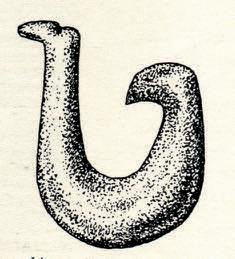
Pl 109
Pl 110

Pl 109
Pl 110 (*6) T he earliest examples, collected in 1802 and 1817, are in the Peabody Museum in Salem, M a s s a ch u s e t t s B e a s l e y i l l u s t r a t e s t h e s e f o u r hooks (8): plate LXXVI
T he Musée du Quai Branly in Paris has two bonito hooks (No. Inv.: 71.193 0.22.13. 1-2. Other examples probably exist, most likely in French collections
(*7) Beasley illustrates a double-shank hook on plate LXXVI, III, and an equally old doubleshank hook was sold at auction in Paris in 2009
211
aktuelles hakenbuch 12.okt:miot neu vertikal 30.11.2011 18:17 Uhr Seite 211
(*8) A close-up photo showing the notching on the base of the shank of a bonito hook from the Marquesas
(*3)
(*7)
(139)
(*1) Two fur ther mother of pearl hooks, which we r e c o l l e c t e d by vo n L a n g s d o r f f o n t h e K r u s e n s t e r n e x p e d i t i o n , a r e n ow i n t h e
Staatliches Museum für Völkerkunde in Munich
(Inv #89) (140): Fig 2
(*2)
(141):
of fish hooks in trolling for various kinds of fish such as the bonito and dolphin, Shark fishing with the hook (...) and the catching of ver y deep-dwelling species of fish such as the Ruvettus ” (138): 115 There is no indication in the literature that Ruvettus fishing was practiced in the Marquesas Von den Steinen illustrates two large hooks “from more recent times.” (139): Vol. III, #8/#10). Both hooks with tied on wooden points resemble shark hooks from the Society Islands, and were ver y possibly imported from there Simple mother of pearl hooks that were collected ver y early are also worthy of mention T hey are similar to those from Tahiti “but lacking its g raceful cur ves and ill fitted for retaining the fish when caught ” (8): 47 Von den Steinen illustrates three hooks of var ying size that were collected by the Kr usenster n expedition of 1803-1806, and the mother of pearl hooks shown by Beasley were collected in 1802 (139): Vol III, #9, and (8): Pl LXXIV (*1)
A bait line is conspicuously absent on these examples with early collection dates Perhaps the glitter of the mother of pearl surface was sufficient to attract the fish to bite (*2)
Unfor tunately no obser vations were made as to how this type of hook was used, or what kind of fish it was used to catch
T he following plate 111 also shows one-piece mother of pearl hooks, which however, have only been known for about half a centur y. From 1956 through 1958, Sug gs perfor med the first archaeological digs on several islands of the Marquesas Archipelag o and found a series of fish hooks His chronolog y was substantially improved seven years later as a result of fur ther archaeological research conducted by Sinoto (142), (143) T he hooks on the plate 111 and (*3) show similarities with those unear thed by both archaeologists. Nos.1-4 and 6-8 were published for the first time in 2008, (144): 139 #1-7 Hooks 2 and 6-8 come from Uahuka (the Hane sand dune site) an assumption which has kindly been confir med by Dr. Sinoto. T hey date from the initial Settlement Period (300-1000 AD) and are consequently among the oldest hooks known from the Marquesas Islands T he ver y unusual Y-shaped hook is of g reat rarity, as only a few have been found. T he unusually shaped mother of pearl hook no. 5 also comes from the Hane sand dune site, but dates from the Developmental Stag e (1000-1300 AD) (145): Fig 5 5 It is a “compound-shank hook” from which possibly the double shank bonito hooks with two shanks tied tog ether side-by-side and ag ain later on top of each other were developed Sinoto says the following about this hook (no 5:) “At this time appears, in incipient for m, the typical Marquesan compound-shank hook, which later developed into a double shank fish hook. T here are two parent for ms: on one the single shank has a rounded stem (Fig 5 5 k-m), which does not provide for the fastening of a second shank stem (side by side); on the other the back of the shank is f lat (*4), (Fig 5 5m-p) T hese unique Marquesan compoundshank hooks of early type have been uncovered recently at the Vaitootia site Huahine.” (Sinoto 1976). (145): 117.
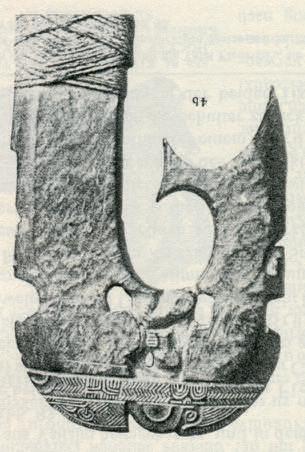
It is also notewor thy that in the Marquesas Islands these compound-shank hooks, whose two shanks could be tied tog ether side by side, sur vived in a slightly modified for m in the historically collected bonito hooks, whose two shanks rest on top of one another
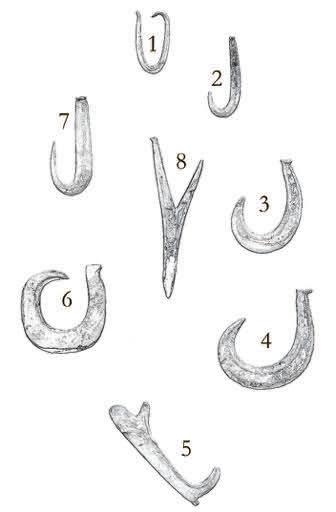
212
Pl 111
Pl 111
Linton expresses the following opinion: “Simple shell hooks were laboriously g round out of a thick pearl shell T he gleam of the nacre ser ved as a lure and made bait unnecessar y ”
398.
T his sketch refers to the hooks on plate 111
aktuelles hakenbuch 12.okt:miot neu vertikal 30.11.2011 18:17 Uhr Seite 212
T he other side of the ceremonial hook in:
Vol II, P 111, Fig 4
The remaining hooks on plate 111, nos 1, 3 and 4 date from the Expansion Period (1300-1600 AD) and were probably found in Hanamaimai on Tahuata. Sinoto gives ver y detailed infor mation on all of these predominantly onepiece hooks, which display amazing similarities with archaeologically excavated hooks from the Hawaiian and Society Islands. He writes: “The usual for m was the rotating type, either the shank or the point was incur ved Two other for ms were significant to this phase (Initial Settlement) One was a jabbing type of hook with a straight shank and point The cross sections of the shank and point of this hook were round, that of the shank being much thicker than the point (*5) The line-lashing device was a single, horizontal g roove just below the flat, blunt head.” (145): 112.
Cer emonial Hooks
Just as the fish hooks from the Marquesas Islands appear unimpressive when compared to the elaborate wood and stone sculpture and jewelr y or naments from the islands, so do they when compared with the ver y few remaining “ceremonial hooks ” In both size and shape, the latter have their place at the summit of Marquesan ar tistic achievement
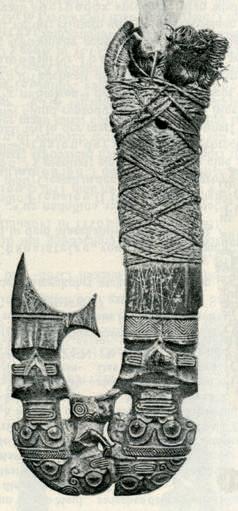
T he “fish hook of the hero Maui, with which he fished the island Tona’eva” (*6) and (*7), (148): 211, which K arl von den Steinen procured for the Berliner Museum für Völkerkunde with g reat difficulty in Atuona on Hiva Oa Island in 1897, g oes beyond the boundaries of the imaginable It was apparently lost or destroyed during the Second World War (*8) Von den Steinen was able to record the myth of Maui. (150): 110/111. He says the following about this ceremonial hook: “It was used as a sacrificial hook in the world of the living, placed into the mouths of the human sacrifices, when the bodies were hung from a tree on the Marae (*9 ), to designate the victims as the “fish of the g ods.” According to another visually inter preted account, one speaks of “the hook of Tapa,” Te Metau a Tapa, the hor rible old woman of the heavens, the cannibal, who cast her fishing line down to ear th, to catch and haul up victims for her cooking pit. She is the larg e Tiki at right, to whom the small seated Maui Tikitiki figure belongs, while the Tiki at left remains unidentified T he two faces at the base, at either side of Maui’s head are Heana, sacrificial heads.” (150): Vol. II: 112.

T he ver y ar tful shape of the tur tle shell hook is complemented by the meticulously made braided sennit lashing, similar to those seen on the ceremonial axes from Rarotong a and Mang aia in the Souther n Cook Islands.
A hard-wood ceremonial hook with a similar lashing and a re presentation of a Tiki beneath the lashing is in the Musée d’Ethnog raphie in Neuchâtel, and is illustrated and described by Beasley in g reat detail He gives no infor mation concer ning its use (8): Pl CLXXVII, 118/119 A photog raph of this hook can be found in the Pacific Ar ts jour nal (146): Fig. 3.
Beasley illustrates a fur ther tur tle shell ceremonial hook, collected on Tahuata, which is held by the Academy of Sciences in San Francisco According to Edg e-Par tington, who was the first to illustrate this hook in 1898, it was called Matau-Reana A four th published hook, which like the previous example has no
(*4) T
(*5) Hooks nos 2, 7 are of the “jabbing” type
(*8) “T his is how a number of old Polynesian treasures were lost, for example the beautiful “Fish hook of Maui” cult object, and ( )” (149): 153
(*9) A Polynesian place of worship; the location for religious ceremonies. It has stone ter races and seating areas
213
Pl 111
he back of hook 5 on plate 111 and (3*)
aktuelles hakenbuch 12.okt:miot neu vertikal 30.11.2011 18:17 Uhr Seite 213
(*6) (139). Vol.II, P. 111, Fig. 4.
r i
c a t
r t h e
Pl 112
Pl 113
Pl. 114
Pl 115
Pl 116
Pl. 117
Pl 118
Pl 119
Pl 120
Pl 121
Pl. 122
Pl 123
Pl 124
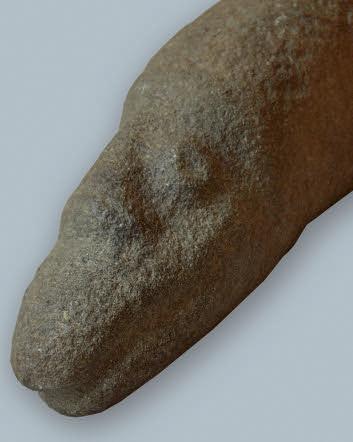
Pl 125
Pl. 126
Pl 127
Pl. 128
Pl 129
re presentation of a Tiki on it, is in the collection of the Muséum d’Histoire Naturelle in La Rochelle (Inv. H 2861.1) and was recently displayed for the first time at the Char tres Marquesas Islands exhibition (144): 143
Lastly, a tur tle shell ceremonial hook with a perfectly preser ved and typical lashing is on per manent display at the Ethnologisches Museum in Berlin (Inv. #VI. 155 47) T his example also lacks a Tiki re presentation, which fur ther underscores and makes clear the exce ptional nature of the hook von den Steinen collected, and the ver y impor tant role it must have played
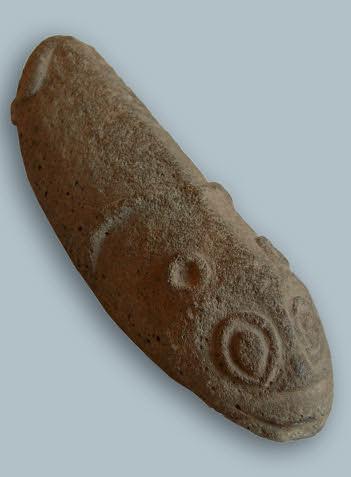
Hawaiian Islands
A Cosmos of Polynesian Fish Hooks
“In my opinion, no people ever lived who had a more intimate knowledg e of fish and their habits, and knew so well how to catch them as the Hawaiians (...).” (151): 9 T his asser tion of Kelly’s may seem exag g erated, but it is similarly cor roborated and concur red with by other authors on the subject of fishing
T hese Polynesian islands of volcanic origin, par tly sur rounded by coral r e e f s, we r
xc e l l e n t possibilities for establishing g ood living conditions Because of the richness of the marine environment that sur rounded them, and the varied nutritional resources it made available, the Hawaiians developed and used a larg e number of methods and devices for fishing As the following plates demonstrate, fish hooks played a prominent and central role in their fishing activities We begin by quoting Hiroa, one of the foremost authorities on Polynesia: “Fishing was the most varied and extensive food-producing occupation of the Hawaiians. Ag riculture, though of g reat impor tance, did not require the varied tools and methods necessar y for fishing T he ag riculturalist knew well the limited plot of land he had for cultivation, but the fisher man had to know the character of the bottom of the sea both within and beyond the reef ( ) T he fisher man relied on his experience, inherited knowledg e, and skills He knew the use of various types of hooks for different kinds of fish and the kind of bait best for each (...). Like other fields of activity, fishing had it g ods or ’aumakua, who brought luck to the respectful fisher man who paid homag e to them by some offerings ( ) Fishing shrines (Ko’a) consisted of heaps of stones on the water’s edg e, and men g oing out to fish contributed a stone to the shrine It is evident from the remains of hooks found on these shrines that they also were given as offerings On retur ning from a successful fishing expedition, the fisher man made offerings of fish on their local altars (...). Respect having been paid to the g ods, the catch was distributed among the people ” (153): 285-287
Pl 112
The composite hooks shown on plate 112 were used for bonito fishing The meticulously worked pearl shell shanks are drilled (*1) at the head for the attachment of the plant fibre line. “Here, as elsewhere, the par ticular shade of the lure is impor tant for the fishing We thus find mention of white-shining lures, Pa hau which are used especially in the mor ning, and Pa anueanue (rainbow Pa), which are used in the middle of the day when the water is clearest.” (19): 177/78. According to Ar ning, these hooks are especially highly valued, because fish will take them at any
–
e d i s c ove r e d l a t e T h e y o f f e r e d t h e i r s e a g o i n g s e t t l e r s e
214
(*1) Beasley illustrates a bonito hook with two holes in the shank to attach the leader, an exception possibly dictated by the fragility of the shell it was made of (8): Pl 87, II)
(*) A Marquesan fisher man ’ s char m, made of stone, in the shape of a fish-lizard Sculptured stones, sometimes only vaguely representing a fish shape, were dug into the beach sand facing t h e o c e a n , t o a t t r a c t a
ch
ch f o
fisher man (25 x 6 x 6 cm)
aktuelles hakenbuch 12.okt:miot neu vertikal 30.11.2011 18:17 Uhr Seite 214
(*) Another Marquesan fisher man ’ s char m made of stone in the shape of a fish (28 x 6 x 8 cm)
time of day Hooks with darker shanks were used in the after noon ” (154): 51
T he points of most lures are made of bone (*2). One prefer red points made from the bones of prominent people or accomplished fisher men, who during their lifetimes had bequeathed them to their friends T he fisher man sought to increase the efficiency of his hooks through the mana (*3) that was contained in these bones T he point has a drilled hole at its base, which is used for attaching the fine plant fibre line to the shank A binding of two or three strands of twisted Olona fibre (*4) line with a thinner line wound around it is also passed through this hole, and r uns along the slightly concave inner face of the shank to the hole at its top T he point is secured in this manner. “T he point base is g enerally without any projection, and in this respect the Hawaiian bonito lures are without counter par ts in Polynesia ” (19): 178 T he second hook on plate 112 being the exce ption to the r ule. Black or white pig bristles were most commonly used as hackles. “It was peculiar in that it was lashed crosswise to the long axis of the shank, instead of trailing directly behind, as in the bonito hooks of other Polynesian islands ” (153): 336. Ar ning, who lived in Hawaii between 1883 and 1886, and had a thorough understanding of traditional culture, makes an interesting remark about bonito fishing: “While fishing with these composite hooks, smaller fish (iiau) were thrown into the water by the handful.” (154): 51.
One-piece Hooks
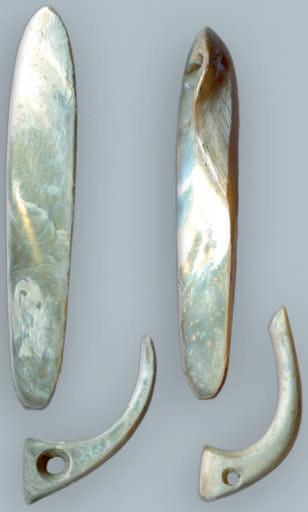
A comment Beasley makes applies especially well to these three one-piece hooks: “Hooks from this g roup are extremely varied in for m and material, and par ticularly notewor thy in view of the excellence of their finish T he old-time Hawaiian workman was decidedly skilful ” (8): 48/49
T he upper hook on the plate 113 is made of whale tooth, and was called Makau palaoa (*5) Hiroa discusses the barbs in detail: “To prevent easy extraction the barbed point of a fish hook should completely pierce the lip or throat T his is possible with inner barbs; but with outer barbs, it is only possible with the high and medium-high barbs T hese then comply with the function of barb in preventing easy extraction ” (153): 327 Dr Sinoto sug g ests fur ther that the outer barb could also prevent bait which has been put directly on the hook from slipping off in the water (*6)
T he left hook on the plate 113, which is made of tur tle shell like the one beneath it, has its barb at the level of the hook’s base. Hiroa writes: “T he low outer barb is below the inner level of the bend; and as fur ther penetration would be prevented by the bend, or bottom, of the hook, so to speak, it could not penetrate the lip A recognition of this is implied by the fact that all hooks with a low outer barb are provided with an intur ned point T he low outer barb probably ser ved as a cleat for tying on the bait with a bait string (mali).” (153): 327. (As can be seen for comparison on the upper left hook on Pl 134 in the section on New Zealand)
T his tur tle shell hook is also notewor thy for its ver y eleg ant for m, and its perfectly intact 135 centimeter line. T he three-stranded line is made from lengths of the bark fibres of the Mamaki tree, and is additionally wound by a spiraling winding of Olona
Pl 112
Pl 112
Pl 113
Pl. 122
Pl. 123
Pl 125
Pl 129
Pl 113
(*3) Mana represents a kind of extraordinar y power, which can be seen as a life force, and can reside in people, animals, nature, as well as inanimate objects Hooks made of bones imbued with mana had g reatly increased value, and were used by fisher men for their entire lives, and passed on through inheritance
(*4) Olona fibre is obtained from the bark of the Touchardia latifolia shr ub T he bark is softened and worked on a wooden surface with a tur tle bone or mother of pearl scraper until the fibres are extracted T he fibres are then twisted into string by rolling them across the thigh with the ball of the hand and subsequently either twisted or braided
Pl 134
Pl 113
(*5) Makau = hook
Palaoa = whale
T his hook is illustrated in (55)
(*6) Personal cor respondence
215
aktuelles hakenbuch 12.okt:miot neu vertikal 30.11.2011 18:17 Uhr Seite 215
(*2) Two prehistoric bonito hooks, with shell points, from the island of Hawaii
(*1) T he Bishop Museum in Hawaii not only h o u s e s t h e l a r g e s t c o l l e c t i o n o f Po l y n e s i a n material in the world, but also has the most comprehensive collection in existence of the many types of Hawaiian fish hooks Especially notewor thy is the larg e number of whale tooth and tur tle shell “barbed rotating fish hooks” described above It can be sur mised that larg e tur tle shell hooks are a ver y late development in Hawaii T he vast majority of them compare in shape to the whale tooth hooks, which are all of historic manufacture However, six examples comparable to this type, but made of mother of pearl, were collected on Cook’s voyag es: Inv Oz 225 and 226 in Götting en, #104, 105, 106, 107 in Vienna, illustrated in (106): 331; (155): Fig 200
(*2) Ea = tur tle shell
(
* 3 ) A h i = H awa i i a n t u n a , e s p e c i a l l y t h e yellowfin (T hunnus Albacares) (157): 103
fibre along its entire length A 35 centimeter long bait line, also of Olona fibre, is loosely wound around the line at the head of the shank. A reddish brown substance used to treat the line is readily recognizable, and according to Ar ning, was applied to make the line “less visible in the water ” (154): 50 T he secure attachment of the bone or tur tle shell shank to the line was made possible by the clearly visible protr usion worked into the hook on the outer side of its shank head Also interesting to note is Ar ning’s obser vation that the fisher man cr ushes the heads of smaller and medium sized fish with his teeth in order to kill them (154): 51
Examination of the larg e one-piece tur tle shell hook leads one to conclude that only a ver y capable fisher man could have created such a perfect and timelessly beautiful object, one that is tr uly a master piece of pure for m, utterly free of extraneous elements It is the embodiment of an unbelievably developed feeling for material and for m, and the culmination of the experiences and skills of many g enerations of fisher men T his hook differs from comparable examples in the shape of its shank head, but we refer to Ar ning, who received a tur tle shell hook that had been a treasured heirloom from a family in Waimea and by his description could be our hook: “Later I obtained other fish hooks of this type that had only minor differences between them But one of these hooks (1,341), which comes from K alapapa (Molokai), differs from the others in that it has its barb car ved onto the inner face of the hook’s bend At the top of the shank of this 10 centimeter long and 5 5 centimeter wide hook, there are three g rooves for the attachment of the line ” (154): 50 T his hook is now in the Museum für Völkerkunde in Berlin
Tur tle shell hooks of this size appear to be ver y rare, while the smaller examples are “the most numerous in the Bishop Museum collections (*1).” (153): 328 Archaeologically excavated tur tle shell hooks are only rarely medium sized, and much more frequently small Beasley gives a g ood over view of the different sizes and shapes of the tur tle shell hooks (8): Pl. LXXXII and says: “T hey are invariably beautifully finished, and unlike those from some g roups where the natives have discovered that the shell can be shaped by being heated, are cut from the solid ” (8): 51. T hese tur tle shell hooks are called Makau ea (*2). T hey were baited and, according to Ar ning, were used to catch Ahi (*3) in K ailua (Kona) T he hooks that were used had “outward facing barbs ” (154): 50
It can be infer red from Ar ning’s remarks that these hooks were ver y highly valued: “W hen King Tembenuku of Apamama (Gilber t Islands) entr usted K alakaua’s envoy with the gift of a whale tooth in Se ptember 1882, K alakaua reciprocated with the gift of a tur tle shell hook. (...) And added that he hoped Tembenuku would always wear the hook when g oing to war ” (154): 50 K alakaua was a fond collector of Hawaiian ar t and may have spur red fish hook production in the 19th centur y with his interest

Hooper also mentions the impor tance of the tur tle in the life of the Hawaiians: “Tur tles were closely associated with chiefs and divinity, and were a highly valued sacrificial offering T he shell of the carapace ( ) was adapted to a variety of pur poses, including the manufacture of fish hooks ” (119): 113
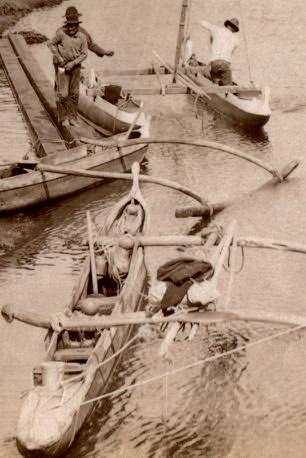
216
113
Pl.
(*) Detail of a photog raph from c 1880 showing fishing canoes on Waiakakea-River in Hilo on Hawaii T he g ourds containing hooks, bait and line are stored in the hulls
aktuelles hakenbuch 12.okt:miot neu vertikal 30.11.2011 18:17 Uhr Seite 216
(*7)
Tw o-piece Bone Hooks
The three two-piece hooks on plates 114 and 115 are rare and outstanding examples of their type (*4) These hooks are made from the bones of high-ranking individuals. Both pieces are made with such g reat precision, that once they have been bound together with Olona fibre, the hook appears to be a single piece of bone Hiroa mentions the protr usions on the base of shank and point, which ensure that the binding cannot slip off He also writes: “A constant feature of the complete hooks was the use of small wooden wedges, driven in between the lashing and the hook to tighten up the lashing, which were used on both sides of the hook.” (153): 332 Only Giglioli, in his description of the Cook collection in Florence, gives a name for this type of hook: “These fish hooks are called Makau (hook) iwi (bone) kanaka because it seems that the bone used in making them was human.” (107): 149.
T he hook on the right of plate 115 is unique as the point is made of pearl shell and not of bone Hooper illustrates a two-piece bone hook with an extremely unusual point (*5), and states: “Hooks of this kind have been found as offerings at temples ” (119): 113 T his asser tion is fur ther evidence that the mana laden hooks were valued especially highly T he black shank on plate 114 is a rare sur viving example of a shank made from black-coral (par t of the base is broken off, revealing the inner g rowth rings) (*6)
It is sur prising that the two-piece hook type shown here occurs with some differences, but many unmistakable similarities, on Rapa Nui at the extreme easter n edg e of Polynesia Métraux writes: “T he point is made of human tibia, the shank sug g ests the human femur.” (158): 180. T he points of these hooks cur ve shar ply inwards, and do not have barbs Métraux illustrates several hooks of the two-piece type Hook C illustrated in Fig 11 is a typical example from Rapa Nui (*7) (158) Whether this hook and its Hawaiian counter par t evolved se parately and inde pendently of one another is a question that cannot be answered It is relatively cer tain however that seafaring Marquesas Islanders (*8) settled both the Hawaiian Islands (*9) and Rapa Nui possibly as early as 2000 years ag o. T he most recent literature sug g ests dates as late as 800 AD
Shark Hooks
When comparing the hooks with wooden shanks shown here with examples collected on Hawaii on Cook’s third voyag e (1778-1779) and by Vancouver, who visited the islands three times between 1792 and 1794 (*9) it must be bor ne in mind that the two hooks here were archaeological finds rather than historically traded, and consequently may be older than the examples collected in the last third of the 18th centur y T he latter give the impression of never having been used. T he wonderfully shaped and polished shark hook in Vienna has five g rooves around the head of its shank that would probably have been insufficient for the secure attachment of a line T hey could not have withstood the pull of a larg e shark. Comparison with the notched and ste pped head on the two hooks in the plates and (*1) (following pag e) confir ms this asser tion T hese dee per g rooves

A ver y early
(*9) A ver y early hook from the Hawaiian Islands

(*4) During Cook’s stay on the Hawaiian Islands (1778 and 1779), about 25 hooks were collected, of which five were of this type: Cambridg e #1922 926, Götting en Oz 228 and 229, Florence (no number), and Rome #1193

(*5) Fur ther variants are in Beasley (8): Pl LXXX, with a wooden shank and a pearl shell point; and in K aeppler (107): Fig 229, with a tur tle shell shank and a bone point Hooper illustrates a bizar rely made bone point with two outer barbs and one inner one, and a bone shank (119): Fig 43 A drawing of this hook is found in Anell (19): Fig 7, #6
(*9) In Ber n HAW 5 (107): Fig 115, in Vienna #45 (155): Fig 196, in Lening rad (St Petersburg) #505-24(155): Fig 197 T he shark hook collected on Vancouver’s voyag e is in the British Museum in London VAN 316 (119): Fig 42
217
Pl
Pl. 114 Pl 115 Pl 115
114 Pl 116 Pl. 117 Pl 118 Pl 119 Pl 120 Pl 121
(*6) A two-piece hook shank from the Glaisyer collection on K auai made of black coral
aktuelles hakenbuch 12.okt:miot neu vertikal 30.11.2011 18:17 Uhr Seite 217
(*8)
hook from the Marquesas Islands
Pl 119
Pl. 120
Pl. 117
would have allowed for a binding strong enough to resist such a pull Hiroa describes the process of lashing the shank head with several illustrations (153): Fig. 232a-d. It can thus not be r uled out that some of the hooks collected by Cook and Vancouver are examples that were made for other pur poses than fishing King, who accompanied Cook on the third voyag e, speaks of this impressive hook type: “T hose with which they fish for sharks, are of a ver y larg e size, being g enerally six or eight inches long Considering the materials of which these hooks are made, their strength and neatness are really astonishing; and in fact we found them, upon trial, much superior to our own ” (159): 150 T he hooks were called Makau mano (*2), and were made from pieces of uhiuhi, a par ticularly hard and resistant wood, “which were specially trained to the eleg ant cur ved shape (*3) T his provided strength which a hook cut from a wood block could not provide A bone point with a ridg e to stop slippag e is bound into the end.” (119): 112. While most wooden shark hooks are 20 centimeters or more in length, like the two illustrated in plates 118-121, significantly smaller ones of similar for m (plate 117) are also known. T he shark hook in the Hooper collection (#288) measures only 12 7 centimeters (61): Pl 35 All three of the shark hooks illustrated here lack the recess for the introduction of the bone point An excavated archaeological bone point was attached to the small hook on plate 117 to demonstrate what a complete hook looked like T he shark hooks found in caves which Kirch illustrates (162): Fig 151, 179 are likewise incomplete One-piece shark hooks made of whale bone are known, but ver y rare T he most impressive example is that collected on Cook’s third voyag e (*4), which has both an inner and an outer barb, and which is published by Beasley (8): Pl. LXXVII. It must have been the proper ty of a highranking individual Beasley says: “Hooks made for the use of the Chiefs are remarkable for their fine workmanship and high polish ” (8): 52
Many authors have discussed shark fishing. Titcomb states that the up-to9 meter long niuhi were hunted exclusively for their highly coveted teeth T hese were used as tools for the car ving of weapons and utilitarian objects (152): 108 She refers to Beckley, who wrote: “that catching the niuhi was the g ame of kings; it was a dang erous spor t ( ) Favoured persons were given the right to fish for niuhi; it was tabu for others to fish for it, breaking of this tabu punishable by death ” (161): 19. Brigham refers to a larg e shark hook called kiholo, and writes: “(...) he was always baited with human f lesh ( ) A human victim, usually a slave, was cooked and left to decompose for several days, then ( ) car ried to sea in a double canoe T he hinu or oil which was allowed to drip into the water attracted the sharks, and the trail thus laid drew them into dee p water where the king and alii (chiefs) fought them with g reat courag e and skill ” (160): 68

(*2)
(*3) “
Pl 117
Pl. 119
Pl 121
How impor tant a role in fishing these impressive shark hooks still played in the second half of the 19th centur y is difficult to deter mine on the basis of existing literature. One notes that neither the shark hooks with bone points nor the one-piece whale bone hooks appear in collections that were assembled on the Hawaiian Islands during that time (*5) T he three hooks shown in plates 117-121 were found in caves, like the ones in Kirch’s publication. (162): Fig. 151 and 179. Titcomb g oes into g reat detail in her description of the special role that

218
shark
(*) A shark hook point from the Glaisyer collection with visible bite marks (6,7 cm long)
makau = g eneral ter m for fish hook mano = g eneral name for shark
Uhiuhi An endemic plant (Mezoneuron kauaiens), a tree with pink or red f lowers and thin, broad, wing ed pods T he wood is hard and heavy and for merly was used for holua (sleds), tapa beaters, spears and dig ging sticks ” (157): 106.
aktuelles hakenbuch 12.okt:miot neu vertikal 30.11.2011 18:18 Uhr Seite 218
(*4) A shark hook collected in Hawaii on Cook’s third voyag e, 23 cm tall and made of whale bone is now housed in the British Museum (Inv no : Oc, HAW 62) (21,6 x 10,7 cm)
fishing played in the life of the Hawaiians (*6) and of the taboos it was connected with. (152): 106-109.
Although Titcomb maintains that Ruvettus fishing was known in Hawaii“It was caught off Kona, Hawaii, a favourite place for dee p sea fishing ” (152): 159 - there is no illustration in the literature of a typical Ruvettus hook. Only in Gudg er, one finds a drawing of an enor mous 43 centimeter hook “of inter mediate design” that could be used for catching both shark and Ruvettus (18): Fig 23 Anell’s comments are interesting in connection with this matter : “T he Ruvettus hook thus has a more restricted area of distribution than the shark hook, and it is, moreover, quite coherent. T he eastward spreading is clearly discer nible, and in cer tain cases also historically documented Proceeding from these two factors, the distribution and the variation of for m, it is not hard to decide which of the two types is the elder. T he tr uth seems to be, as a matter of fact, that the Ruvettus hook is a relatively recent invention which has doubtless developed from some of the older larg e wooden hooks chief ly intended for shark and presumably used already by the first Polynesian immig rants.” (19): 236.
Eel Hooks
T hese fishing devices, which Ar ning calls eel hooks, are rarely mentioned in the literature, and appear to be ver y uncommon in collections Beasley, Buck and Anell do not mention them, and only Ar ning g oes into some detail about them T he hooks in his collection (nr 1,432) seem to resemble the one shown on plate 124. Ar ning writes: “An eel hook in the collection consists of a 33 centimeter long line which is attached to two spindle shaped little pieces of wood 8 or 9 centimeters long, extending outward to either side of a lashing around the center where they meet. T he wooden pieces are shar pened to a point at their ends. A small piece of line just above the little pieces of wood is used for the attachment of bait ” (154): 52 T here is another hook in the Ar ning collection on which the two spindleshaped and shar pened pieces of wood are tired tog ether in such a way that they cross in the middle (*7)
Other eel hooks made of bone and wood are illustrated by Sinoto and Emor y. They were found during excavations on Oahu (K awekiu and Kuliouou shelter) Notewor thy is a small eel hook of only 20mm length; all others are between 100 and 120 mm long Emor y and Sinoto quote from Emerson's manuscript in the Bishop Museum: “An ar m of the squid is the favorite bait for this kind of fishing, being wrapped about the forward end of the haoa The other sharp end of the stick is thr ust into a split end of another stick which is the handle ” (168): 53, fig 47
According to Titcomb, there are a larg e number of eel and moray species (152): 144-147 She calls them puhi T he ter m appears to apply to the moray family of eels as well as to other species. T he morays are wild, prone to bite, and feared by the fisher men Catching them is associated with dang ers Titcomb writes the following about the puhi paka (fierce): “One of the best liked; found throughout Hawaii; teeth ver y shar p, a ferocious eel.” “T hey remain in their haunts at night and venture out when enticed by bait ( ) When lured out in this way they will catch at
Pl
(*1) T he tree branch from which this hook would later be fashioned was trained to g row in a “U” shape lengthways as well as an “S” shape sideways
(*5) Ar ning (154) and Emerson (163) were collecting at the same time in the 1880s
(*6) Malo explains: “In the kahala method, a net of ver y strong cord was used to take the shark; called also the hihi-mano ” He mentions another method: “Ku-mano was taking the shark with bait and a noose ” (164): 213
( * 7 ) T h e r e i s a n i l l u s t r a t i o n i n t h e n e w
publication on the Ar ning collection, which is in the Ethnologisches Museum in Berlin (165): Fig 156 Other examples made of bone and wood were found by Emor y and Sinoto on Oahu in the course of archaeological excavations

219
124
aktuelles hakenbuch 12.okt:miot neu vertikal 01.12.2011 17:01 Uhr Seite 219
Such stones, sometimes sculpted into the shape of a fish, but usually left in their natural shape, were thrown into the ocean from the beach or the canoe to attract a g ood catch It is said that the fisher man would find his “Fish God” on his retur n at the beach (29,5 x 5 x 7,8 cm)

hooks with any kind of bait ” (Kinney) She fur ther quotes M K Pukui of Lanai: “(...) one (eel) is a ter rible fellow. (...) He often baff les the effor ts of the fisher man( ) T his dang erous eel, the puhi paka, inspired ter ror among the Hawaiians He will take off a toe, or snap off an exposed naked foot, if he g ets a chance.” (152): 145. Titcomb also cites Mar y K awena Pukui (*1): “Eels were highly prized as food T he eel was a fish of which chiefs were fond ” (152): 146 According to Titcomb, eels were not only caught with hooks and lines, but also with scoop nets and basket traps To catch baby eels, the manual technique of “eel pinching” was used
Octopus Lur es (Leho He’e)
T his fishing device consists of a coffee-bean shaped stone weight (*2), and a cowrie shell of almost equivalent size, which are tied to a piece of wood inser ted between them by means of an Olona fibre line A wooden point (more commonly bone), also secured with Olona fibre, is tied to the lower end of the piece of wood. T he usual fibre bundle hackle is not present T he three stranded twisted fibre line is drawn through a hole in the point and secured to it T he line then r uns upwards nearly parallel to the piece of wood, through a hole in the bottom of the cowrie shell and emerg es through a hole on its opposite side A small tog gle is often used here to hold the string with which the cowrie is attached to the shank, allowing for swift re placement of the cowrie with a differently coloured one, better suited to the weather and water situation T he line is knotted once passed through the upper hole in the cowrie, thus holding the device tog ether, and continues on above the knot Brigham infor ms us that: “Among the products of the sea few were more g enerally acce ptable to the Hawaiians than the squid or hee Both fresh and dried it was a favourite concomitant of poi the national dish. To capture it on the reefs where it abounds, a peculiar hook was used ( ) When lowered to the bottom the stone falls beneath and is hidden by the shell (*3): the hook is par tly concealed by the blades of g rass bound to the spindle near it. When the squid g rasps the coveted shell, the fisher pulls the line and if all g oes as planned, the hook enters the soft body of the mollusk which is then drawn in through the ink which it emits ” (166): 19
( * 1 ) T i t c o m b w r o t e h e r e s s e n t i a l b o o k i n collaboration with this native Hawaiian woman (152)
(*2) Brigham gives a comprehensive over view of “ H awa i i a n S q u i d - H o o k S i n ke r s ” w i t h 7 9 examples, which also includes discussion of the m a t e r i a l o f w h i ch t h e y a r e m a d e. ( 1 6 6 ) : P l .
XXXVI-XXXIX
(*3) Usually Cyprea tig rina, which is a favorite bait for squid” (166): 19
(*4) “T he spots on the back must be ver y small and red, breaking through a reddish brown g round, such a shell would have the strong est attractions for an octopus, and is called ipo (lover) ”
T he bound cowrie shell has special significance. Hiroa says: “It is evident that the fisher man car ried a number of shells with the lifting cord attached so that he could chang e them on the lure to suit the different periods of the day ” (153): 361. Ar ning’s comments are also wor thy of note: “In order to be useful, the Leho shells had to have cer tain fabled characteristics: T hey had to be larg e, ver y shiny, and dark reddish brown on the back T heir white dots, called Maka (eyes), could not have too harsh a glare, as the octopus did not tolerate a “staring g aze ” T he reddish brown colour (and also the odor of the shell) could to some extent be altered by a process involving smoking the shells over sug ar cane husks. Good Leho were so valuable that violence and murder in connection with their possession was not unheard of ( ) T he Hawaiians thought of the Leho shell as the octopus’s lover, whom he embraced as soon as she approached him (*4).” (154): 52. Young adds another interesting comment: “Selected for colours, the Leho was considered the
220
Pl 123
(*) A Hawaiian “Fish God” made of lava
aktuelles hakenbuch 12.okt:miot neu vertikal 01.12.2011 17:01 Uhr Seite 220
“female” and was “mar ried” to a handsome stone sinker, the “husband”, to for m a lure.” (157): 68. He refers to K amakau for this obser vation. (167): 67.
Pr e-historic Hooks
Yosi Sinoto established with Kenneth Emor y in the 1950’s that fish hooks are a ver y impor tant mig ration and dating tool for the prehistor y of Hawaii and subsequently most other Pacific Islands T he book: “Hawaiian Archaeolog y - Fish hooks” published in 1959 and the additional texts by Sinoto: “Solving a Polynesian fish hook riddle” (1959), “Chronolog y of Hawaiian Fish hooks” (1991) and “A revised system for the classification and coding of Hawaiian fish hooks” (1991) are the essential standard texts on the subject Sinoto’s questioning curiosity has encourag ed the study of fish hooks throughout the Pacific and resulted in many answers and more questions and last but not least this publication
T he following plates show the incredible variety of hooks that are known from the distant past. T his time frame extends from the earliest settlements of the Hawaiian Islands, estimated to have taken place 2000 to 1200 years ag o, to the ar rival of Europeans in 1778 About two dozen hooks can be traced back to Cook’s last voyag e (*5). T hey are the first pieces of evidence of the fascinating fishing culture that existed in 18th centur y Hawaii In his introduction to the Archaeolog y of Hawaii, Kirch writes: “T he Hawaiians of Cook’s day practiced a wide rang e of fishing strategies ( ) Some of these techniques had been developed by ancestral Polynesians thousands of years earlier and were car ried to Hawaii by the early settlers. Others were local developments, ref lecting experimentation with unique aspects of the Hawaiian environment ( ) While ethnog raphic and historical accounts reveal much about Hawaiian fishing and aquaculture at European contact, only the archaeologist can deter mine how Hawaiian fishing techniques and strategies developed over time ” (162): 199 It can be assumed that as a r ule the par ts of fishing devices made of perishable materials such as wood and plant fibre, among others, would not have sur vived for extended periods of time. But under cer tain exce ptional conditions, for example in dr y caves, even items as fragile as the finest plant fibre lines did in fact remain intact for centuries T his is evident from looking at the hooks in plate 129. T he two shark hooks already discussed were also able to stand the test of time As a result of these exce ptional circumstances, archaeologists, who g enerally only have hooks made of resistant materials like mother of pearl and bone available to them, can reconstr uct a more comprehensive picture of fishing techniques Extensive archaeological excavation work throughout Polynesia included intensive work on the coasts of the Hawaiian Islands According to Reinman, the fish hook is a ver y frequently found ar tifact in these digs
In 1959, Emor y, Bonk and Sinoto published the first major study on archaeological hooks, using 4159 examples found at 33 sites on the Islands of Hawaii T hey distinguish three main types: T he one-piece hooks, which are fur ther divided into two categ ories T hose in the first categ or y are “jabbing hooks,” whose shanks and points r un more or less parallel to one another, and those in the second are “rotating hooks” whose rounded points tur n back inwards towards the shank
Pl 122
Pl 125
Pl 126
Pl 127
Pl. 128
Pl. 129
( * ) A n a r ch a e o l o g i c a l H awa i i a n F i s h e r m a n ’ s Aumakua, in the shape of a shark, made from a sea urchin’s spine From the Glaisyer collection on K auai (BPBM neg nr K166 - K P Emor y letter to Dr A R Glaisyer, Sep 18, 1959) (length 6,6 cm)

Pl. 129
(*) Hawaiian fisher men sometimes had personal “Fish Aumakua (Char m or God),” which were stones vaguely shaped like a fish by nature or sculpted by hand Such “Fish Gods” could be worshipped in the seclusion of a cave or out in t h e o p e n U p r i g h t s t o n e s s u r r o u n d e d by o f f e r i n g s ( s h e l l s, p l a n t l e ave s o r f o o d ) c a n frequently be seen along the Hawaiian coasts (39 x 9 x 6 cm)
(*5) Archaeological evidence has shown that cer tain types of fish hooks had already been a b a n d o n e d b e f o r e t h e t i m e o f t h e Pa c i f i c explorations by Europeans and that such types of hooks were not represented in the ethnological collections Archaeological evidence has also shown, conversely, that cer tain types of hooks which were developed in the late stag e are not found in the early archaeological collections ” (170: 58)

221
aktuelles hakenbuch 12.okt:miot neu vertikal 30.11.2011 18:18 Uhr Seite 221
Pl 128
Pl 125
Pl. 128
(*1) T he authors also distinguish between two types of “two-piece fish hooks”: a) those whose shanks and points are se parate pieces, lashed tog ether at the base, and b) crescent shaped bone points (*2) that are tied to a larg e wooden hook or a shank (plate 128) According to the authors, the first type of “two-piece fish hook” (*3) was found at all of the investig ated sites, and “appears to be a local Hawaiian innovation, probably an adaptation to the lack of larg e pearl shells and the need to substitute bone for hooks ( ) Of special impor tance in the classification of twopiece hooks is the for m of the bases of both point and shank, which were car ved with either notches or knobs to aid in the lashing process T hese notched and knobbed styles appear to have chronological significance. T he crescent type of two-piece hook is relatively rare in Hawaiian sites ( ) T here is considerable g eog raphic variation in the styles of one and two-piece fish hooks K aua’i sites, for example, yield distinctive one-piece fish hooks with barbs on the inner sides of both point and shank ” (Two examples may be seen on plate 125 (*4 nos 5 and 19)

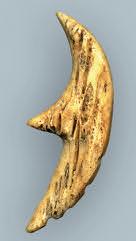
“Likewise, the multiple-notched base type of two-piece fish hook appears to be confined to South Point on Hawaii (Big Island).” (Examples are on plate 128).
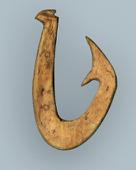
“Composite fish hooks are also of two types: a) trolling hooks for bonito and tuna; and b) octopus hooks ( ) Material used for fish hooks include mammal bone (commonly pig and dog, and also human bone), mother of pearl shell, cowrie, bird bone, tur tle shell, wood, and even teeth Mother of pearl was prized for hook manufacture, but was not readily available on all islands K aua’i and Oahu ( ) were the major sources for pearl shell ( ) On Hawai’i Island, mother of pearl hooks are only rarely found At South Point, the larg e pieces of pearl shell used for trolling lures were impor ted from one of the easterly islands. (...) T he larg est one-piece and two-pieces hooks were made from human long-bones ( ) T he use of human bone for fish hooks seems to have g reatly increased in the late prehistoric period, and was relatively uncommon earlier in Hawaiian prehistor y. ” (162): 200-204.

Pl. 122
Pl 125
A glance at plates 122 and 125 shows the astonishing variety of shapes and sizes these hooks can have T heir unknown makers did not make them so varied simply out of an over-exuberance of creativity, but rather each hook’s for m is the result of the fisher men ’ s extensive knowledg e of the species of fish it was intended to catch T his knowledg e included an understanding of species’ behavior, of the times at which they would appear, and of their eating habits. T he different hooks allow inferences to be made about the fishing strategies that were practiced hundreds of years ag o In places where fishing for smaller species near the coast was predominant, archaeological excavation tur ns up mainly smaller hooks. Fish bones were also found, which infor m on what species were prefer red At the souther nmost tip of Hawai’i Island, numerous larg e and compact hooks were found, because it was here that fisher men hunted the larg er species that were par ticularly abundant on the leeward side of the island (162): 205 T he Hawaiian fisher man ’ s vast re per toire of for ms is as fascinating to behold as it is difficult to explain While relatively simple hooks, with points tur ned shar ply inwards towards their shanks (*4 nos 28, 32, 35, 36 and 38) are known from the early settlement era, their shapes chang ed over the centuries, sometimes resulting in seemingly bizar re looking examples with inner and outer barbs (*5) T here are also unique examples,
222
(*4) Sketch of plate 125. aktuelles hakenbuch 12.okt:miot neu vertikal 30.11.2011 18:18 Uhr Seite 222
(*1) (*2) (*3)
such as the nar row bone hook with the unusual knob on the outside of the shank below the head (*4 no. 1) or the small hook (*6) with a finely worked protr usion at its base, presumably for the attachment of a stone sinker, as illustrated on plate 129
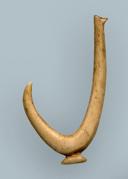

T he Hawaiians developed a larg e ar ray of methods for the optimal exploitation of the resources in each ocean zone. Since these zones are often ver y unlike one another, and best exploited in different ways, the devices used for fishing are similarly ver y varied But even within a single zone, many differences between hooks can be obser ved, even though the type of fish that occur red in it presumably did not In a fur ther study Sinoto analyzes the differences in shank heads and their connections, and elaborates a typolog y and a chronolog y according to which shank heads ter minating in a notched or squared off end are the oldest (*7), (the lower rows on plates 122 and 125), and those with shank heads ending in a pointed head with a knob protr uding below the outside are a later development. (*8) (seen on the upper par t of both plates) (170): Fig 1/2 Already in the early 1950's Sinoto came up with the idea of using fish hooks as a dating tool in Hawaii, since potter y cannot be found archaeologically here. T he abundance of fish hooks in archaeological digs favored this possibility
As earlier mentioned, the two-piece hook owes its existence to the fisher man ’ s need to find a way of making larg e hooks without having larg e and strong enough shells available “Because of its cross-laminated str ucture, shell is much strong er than bone, which tends to break at weak points (such as the bend of a hook) when stress is applied By ar tificially “breaking” the hook into two par ts, and re placing the weak section with a strong and f lexible lashing of fine cordag e, the Hawaiians ing eniously overcame this raw material constraint and were able to manufacture bone two-piece hooks of sizable propor tions ” (162): 201
With reg ards to the complexity of two-piece hooks, Kirch writes: “T he most striking chronological chang e in the South Point fish hooks occurs between the two for ms of two-piece hook points and shanks, those with notched bases and those with knobbed bases ( ) the notched base for m preceded the appearance of knobbed bases in the early H1 site (c.1240 A.D). In Site H8, the relative frequency of the two styles chang ed regularly over time, with an early emphasis on notched bases g radually giving way to a predominance of knobbed bases ” (162): 206 So while for the period 1230 AD to 1650AD the archaeological record shows that both types of hooks existed, only hooks with “knobbed bases” existed after 1650AD T he hooks on plate 126 date likely later than 1650AD Kirch fur ther states: “Unfor tunately, the notched/knobbed fish hook sequence has not proven to be applicable outside the South Point region, probably because the notched style was a local g eog raphic variant ( ) T hus, while the South Point chronological sequence seems valid for that area, it is evidently not useful as a g eneral relative dating tool for other areas in the Hawaiian Islands (162): 206 (*9)
Here ag ain, on plate 127, the special circumstances previously described allowed for the preser vation of the otherwise perishable wooden shanks Only the string had deteriorated, and is here re placed with new string Such wooden shanks with bone points are extremely rare. A comparable bone shank in the literature is seen only in Emor y, Bonk and Sinoto (172): plate 3, #25 Beasley also illustrates


Pl. 125
Pl. 129
Pl 122
Pl 125
(*6)
(*7)
Pl. 127
(*9)
223
T he later type of two-piece hook in which point and shank are fit tog ether on their f lat (or slightly convex/concave sides also existed on Easter Island
(*5) T he first illustration of this type of hook is in: Dalton’s paper (169): plate XVI, 17
aktuelles hakenbuch 12.okt:miot neu vertikal 30.11.2011 18:18 Uhr Seite 223
(*8) Detail of a larg e hook made from the bone of a human shoulder blade
(*1) Dr Sinoto recognized the misattributions of such Hawaiian two-piece hooks in the British Museum, the Royal Scottish and the Peabody M u s e u m D a l t o n h a d a t t r i b u t e d i t t o t h e American Nor th-West Coast (169): 225-245 Skinner attributed them to the Murihiku region on the South-Island of New Zealand (177): 256 Sionto says: “After classifying several thousand fish hooks recovered in the recent archaeological e xc ava t i o n s o f t h e B i s h o p M u s e u m i n t h e Hawaiian Islands, both Dr Kenneth Emor y and I were str uck by the similarity of cer tain bone points of two-piece hooks with the bone points lashed to long wooden shanks in question T he hooks in the British Museum were collected by a member of Captain Vancouver’s voyag e (179095) which touched Hawaii, and so could cer tainly have come from Hawaii ” (219): 23
(*2) A comparable bone point is in Emor y, Bonk, Sinoto (172): Pl. 2, #83.
Pl. 3
Pl. 126
Pl 127
some old Hawaiian hooks with straight wooden shanks in his chapter on Tahiti (8) Pl.LXII/LXIII (*1). T he Australian wooden shank on plate 3 is also similar to the ones on the hooks seen here in plates 126 and 127 T he lightly bowed bone shank in plate 127 is possibly made from a dog’s rib and typical of what Sinoto calls the “slender type” (171): Fig. 4, A/B. Similar shanks are illustrated in Emor y, Bonk and Sinoto on plate 3, numbers 23/24 “Dog rib bone” is cited as the material of which th ey a re m a de Bo n e p o i nts wi th o ut sh a n ks a p p ea r i n g rea t num b ers a t archaeological dig sites T hey were without a doubt once tied to wooden shanks which rotted away over the centuries T he extent to which Hawaiian fisher men prized and were skillful at using bones and teeth for the manufacture of their hooks is especially obvious on the points made of teeth, the hardness and natural shape of which they took full advantag e of T he larg e bone point with the inner and outer barbs (Pl. 126, l.r.) is rare (*2). Most bone points only have inner barbs. T he small barbed bone shank without a point (Pl 126 l m ) is ag ain a testimony to the g reat skill of the fisher man who created it, and who was able to combine such eleg ance of for m with such g reat functionality. Even the most minute details of its manufacture are f lawlessly executed It is a master piece wor thy of admiration!
Pl 128
Pl 116
T he bone points illustrated in plate 128 are mostly typical examples of “crescent points”, which Sinoto considers to be among the “slender and massive points” “Massive points” are illustrated on plate 116 T hey have no notches at their bases, and according to Sinoto were used exclusively as points for shark hooks Sinoto classifies the “crescent points” as being among the “shark-hook type hooks”, but adds: “T he type name is based on the similarity of its shape to that of examples of ethnological shark hooks, but these hooks are not necessarily used only for fish such as tuna (ahi) or yellow Jack (ulua) ( ) Bone point tips for sharkhook type hooks are called crescent points as their profiles indicate ” (171): 88

According to Sinoto, all “slender type points” have inner barbs. He distinguishes between “4 types of lashing devices at the base High notches ( ) are cut halfway up or higher from the base ” (*3 no 12) “Lower notches appear usually about 1/3 up from the base.” (*3 no. 7) “Base end notches are cut on the lower por tion and on the end of the base ” (*3 nos 13 and 15) “Plain points do not have any special feature ” (*3 no 3), (171): 90 Emor y, Bonk and Sinoto illustrate a larg e number of hooks for comparison on plate 2. (172).
Pl 129
Pl 129
T he par ticular circumstances that allowed for the preser vation of even the finest fibre lines over a period of centuries have already been discussed We are for tunate enough not only to be able to examine tied hooks, but also the still present stone sinker and the bundle of line that was attached T hat nearly identical hooks were lashed with many different kinds of thick plant fibre lines is as interesting to note as the various materials of which the hooks themselves were made A hook made of a pig’s tooth is seen at the center of plate 129, and three ver y thin jabbing hooks made of bird bone are at the lower left. T hree somewhat triangular hooks made of dog teeth, with their points ver y far from their shanks, are to the left and below the larg e hook with string T here are six small tur tle shell rotating hooks at the right center edg e of the plate, and beneath them are three larg er tur tle shell examples Anyone wishing to g ain a fuller understanding of the
224
aktuelles hakenbuch 12.okt:miot neu vertikal 30.11.2011 18:18 Uhr Seite 224
(*3) Sketch of plate 128
archaeologically excavated hooks from the Hawaiian Islands, of the locations and circumstances they were discovered in, and of their chronological sequence, will necessarily have to refer to the works on the subject by Emor y, Bonk and Sinoto (172), Sinoto alone (170) and (171), and Kirch (162).
New Zealand
T he waters around New Zealand, the larg est Polynesian island, team with uncountable fish and other sea animals, an impor tant food resource to the Maori But ar tistic references to fish and the ocean in g eneral are rare in their ar t (*4)
In order to understand the variety and uniqueness of New Zealand’s fish hooks, it is useful to have some infor mation on the settlement of its two major islands, which lie at Polynesia’s southwester n extremity As the last of the major Polynesian areas to be settled New Zealand was probably first reached by East Polynesian seafarers some one thousand years ag o (*5) T he much cooler climate of these islands, landscapes ver y different from the tropical ones to which they were accustomed, and the in many respects ver y different f lora and fauna, made it necessar y for the first settlers to make significant chang es to their way of life Fishing had traditionally played an impor tant role in the nutrition of the first mig rants, which was par tially supplanted by the meat of the 3 5 meter tall f lightless Moa bird, present on the islands until it became extinct a few hundred years later. Moa bones were the prefer red material for the manufacture of fish hooks Archaeological digs on both Nor th and South Island resulted in the excavation of a ver y larg e number of Moa bone hooks and points (*6) Duff coined the ter m “Moa hunter period” (*7) to describe this initial period of settlement.
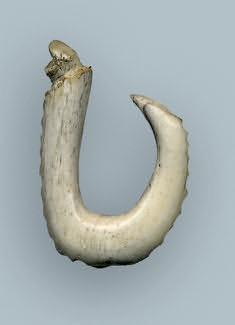
Golson calls it the “Archaic Phase (1350 AD) and later Classic Phase ( ) which ran through to European contact ” (173): 134
Plate 130 shows six beautifully worked one-piece hooks made of various materials T he hook in the upper left, probably made of human bone, embodies what Hjar no calls the “ser rated one-piece hook” (*8) (179): Pl IX He states: “it is quite remarkable that all sites which on midden content appear early, have a ver y high percentag e of one-piece hooks, whereas the percentag e of one-piece hook material in the three Classic sites is ver y low (*9) A similar high propor tion of onepiece hook material in early sites seems g eneral for the whole of New Zealand.” (179): 37 Hjar no considers the “ser rated one-piece hooks” to be a variant of a later date While they are found occasionally in sites of var ying ag e, they occur only in those which also include “some late material” “It is not found in the big assemblag es from Shag River, Papatowai and Pounawea ” (*10), (179): 32
Fur ther examples of bone one-piece hooks with ser rated edg es are discussed in Skinner’s impor tant work (177): Fig 4 and 5), and in Beasley (8): plate XIIA Skinner and Baucke both illustrate another one-piece hook from the Chatham Islands east of New Zealand, and remark: “An interesting specimen of a whalebone hook decorated with notches along the shank and with a rectilinear
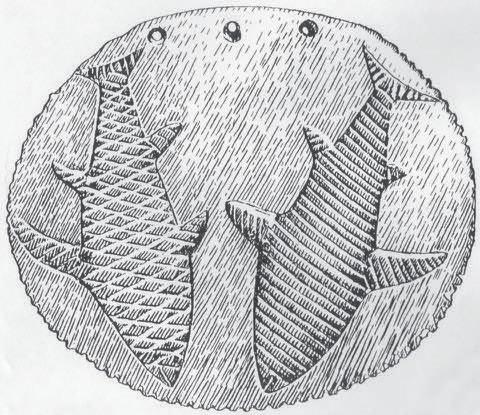
Pl 130
Pl. 131
Pl 132
Pl 133
Pl. 134
Pl 135
Pl 136
Pl. 137
Pl 138
Pl. 139
Pl. 140
Pl 141
(*4) “T he two fish are ver y unlike bar racoota, kingfish, and proper, the commonest of the larg erscaled fish in South Island waters ( ) But the closest likeness seems to be with the tunnies, either scaled or scaleless ( ) I think it probable that the fish of fig 69 are a traditional rendering of the bonito or the Albacore ” (201): 310/311 D a r k S e r p e n t i n e p e c t o r a l , B a n k s Pe n i n s u l a .
Pl 130
Canterbur y Museum No E 148 79 Horizontal diameter, c 17,8 cm (201): Fig 69 (*8)
(*5) Bellwood says: “T he origins of the Maori have never been established with cer tainty, but a r ch a e o l o g i c a l , l i n g u i s t i c a n d g e o g r a p h i c a l considerations make the Cook, Society and Austral Islands the most likely candidates ” (173): 133
(*6) T hey were published in many ar ticles and works, several of which appeared in the Jour nal of the Polynesian Society, for example (174), (175), (176), and (177)
( * 7 ) S k i n n e r s t a t e s t h a t “ T h e b o o k i s a fun da menta l con tribution to anthropological research in Polynesia ” (178): VII
(*9) T his asser tion by Beasley is suppor ted by the hooks with fine bait lines seen in this and many other publications
(*10) Hjar no ’ s research refers to hooks that were excavated in the southeaster n par t of South Island. T he hook on Pl.130 u.l. is also attributed to this area (see map 1, Murihiku sites (179): 4))
225
aktuelles hakenbuch 12.okt:miot neu vertikal 30.11.2011 18:18 Uhr Seite 225
(*) “Various kinds of Instr uments Utensils &c, of the Inhabitants of New Zealand”, Pl XXVI in Parkinson (1773), (detail) (191)
patter n at the bend is shown in plate LII, A ” (180): 347 Beasley also illustrates a whale bone hook with a ser rated edg e from the Chatham Islands whose point tip, like on Baucke and Skinner’s example but unlike on our hook, r uns parallel to its shank. (8): Pl. I. He makes reference to many similar Maori hooks and sees the ser rated edg e as essentially decorative, but adds: “it may owe its conce ption to the necessity of having some ir regularities on the otherwise smooth surface as a means of providing a hold for the bait string. It is, I believe, a fact that the bait was never impaled on the hook as it is with us, but was tied on with a special cord ” (*1), (8): 3

The three one-piece shell hooks seen on the plate 130 are rarely found in collections Beasley illustrates six variously made hooks (8): Pl XIIA, of which all but one have a notch at the base, presumably for the attachment of the bait string In two of the examples illustrated here a fragment of the bait string is still visible A comparable hook to Pl 130 t r in the Cook/Forster collections (in the University of Göttingen), also has a complete line, but the bait string extends from the head of the shank, where the leader is tied on (*2), (Inv Oz 330)
(*2) T he 17 New Zealand fish hooks known to have been collected on Cook’s voyag es are in the University of Götting en ’ s collections A wooden one-piece hook in Götting en (inv Oz 206), illustrated in the most recent publications (122): Vol I: 221 and (181): 94 as #205, should be attributed to New Zealand on account of its f lax binding, even if K aeppler attributes it to the Society Islands (122): Vol II: 82 T he inventor y numbers of the other hooks from New Zealand in the Götting en collections are: Oz 327, 328, 329, 331, 332, 333, 334, 335, 336, 337, 338, 339, 340, 341, 342 and Hann #35 Götting en thus has the most comprehensive collection of New Zealand fish hooks with early collection dates
One-piece shell hooks have been found in cer tain layers in the course of archaeological excavations on the south coast of Nor th Island T hese “Black and Crescent middens” are dated to 1300 AD (182): Fig 3 “In the Black midden were (...) fragments of bone and stone trolling lures, while the Crescent midden mainly contained fragments of shell and bone rotating hooks T he shell hooks were all fashioned from Haliotis australis and the lure shanks in moa bone ” (182): 56 Leach illustrates a series of hooks, including examples in various phases of manufacture He writes: “Fragments belonging to 13 one-piece shell fish hooks (Fig 21) and a fur ther 11 in the process of manufacture (Fig 22) were found in the Washpool site (...). T he fish hooks are of ver y unifor m size and design with moderately incur ved points ( ) Apparently, shell fish hooks were present in Palliser Bay from about 1180 A D through to about 1350 A D , and illustrate conser vatism in manufacture throughout this time.” (183): 109. Leach also indicates that “shell fish hooks” are rare on South Island, and more common on Nor th Island He takes issue with Rowlands’ explanations (184): 8, according to which the earliest fish hooks from the Coromandel Region (nor ther n Nor th Island) were made of moa bone, and shell hooks followed later “On the contrar y it might be expected that the first settlers in New Zealand would have attempted to copy the shell fish hooks, so entrenched in the cultural assemblag es of tropical Polynesia, in local shell Green (185): 26 has raised the interesting point that in the process of conversion from pearl shell to moa bone, these early inhabitants were required to produce counter par ts with more substantial bases to offset the inferior material T he Palliser Bay evidence sug g ests quite the reverse ” (183): 111 We fur ther cite Hiroa on this hook type: “Most of the Murihiku hooks were made of moa bone and some of human bone In the Nor th Auckland area, numbers of small hooks

226
Pl 130
(*1) T he remains of the bait string are still tied around the base of the hook
aktuelles hakenbuch 12.okt:miot neu vertikal 30.11.2011 18:18 Uhr Seite 226
were made of paua shell (Haliotis australis) in the U-shaped and sub-circular for ms. ” (186): 218. T he bone hook illustrated on this pag e (*3) is an extraordinarily well preser ved hook showing many bite marks and scratches from fish teeth Like those on plate 130 it still has its complete snood attached An in all respects ver y similar hook is located in the Cook/Forster collection at the University of Götting en (Oz 327), which is illustrated in (122): Vol I, 224 Hjar no illustrates a bone hook with a stylized head comparable to ours (*4) at the edg e of its base He calls it a “bait knob car ved to re present a human head ” (179): 33


T he ver y ar tfully made and most probably unique jade Hei Matau (decorative hook) (*5) can be seen as the predecessor of the bone hook illustrated here (*3) Ar mytag e says the following about this hook, which is in the Wellington National Museum (ME 2157): “One of the most remarkable Maori jade ar tifacts in existence (...). T he boss for holding the snood is in the for m of a so-called “manaia” head and this head is re peated twice on the lower par t of the hook Possibly these latter re present lugs for holding the bait string T his specimen confor ms to early types of Maori hooks (...). T here are similar types in bone (...) but this is the only specimen I know of in jade ” (187): 68 It is in any event cer tain that the one-piece hook for m can be traced back to New Zealand’s earliest settlement period While complete one-piece bone or shell hooks were rarely found in the course of archaeological excavations, the larg e number of fragments that were unear thed made it possible to reconstr uct the for m Moreover, comparison with hooks collected later, in the 18th and 19th centuries, shows an astonishing continuity of for m over such extended periods of time
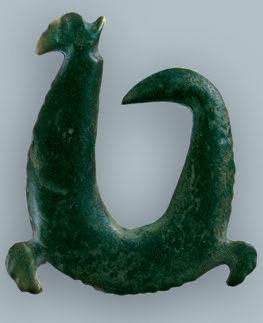
Plate 137 shows a two-piece hook, two bone points and a ne phrite point. T hey date to the Classic phase, which Bellwood however maintains should not really be seen as completely distinct from the Archaic phase: “Many of the chang es took place over several centuries, and since ar tefacts made of org anic materials have so rarely sur vived from Archaic contexts we are oblig ed to restrict obser vations to those made of stone or bone Never theless, by 1500 AD a fairly homog eneous cultural assemblag e (...) shows some marked differences from its Archaic predecessor ( ) One-piece bait-hooks for fishing are re placed almost entirely by two-piece for ms, and har poons and the Archaic types of trolling hooks disappear, to be re placed by different for ms as the Kahawai hook in the Nor th Island, and the “bar racuda lure” in the South ” (173): 144/145 T he eleg antly shaped ne phrite point is seldom seen in collections, despite Best’s asser tion to the contrar y: “It should be noted that fish hook barbs in g reenstone, like those figured above, are common in collections ” (188): 5, Fig 6, 7, 10 He calls these ne phrite pendants Tautau, and sug g ests that they are derived from the bone points of Bar racuda hooks When the latter were of par ticularly fine manufacture and not inser ted into shanks, they were used as ear or naments or necklace pendants Best says: “T hus, becoming purely or namental, they were copied in g reenstone. Fig. 6 shows several of these or namental g reenstone barbs ” (188): 3 Skinner illustrates a ne phrite point similar to the one on plate 137 He writes: “T he craftsman who made it has added notches presumably for their magical power rather than for aesthetic effect ” (189): 197, Pl XII D Skinner illustrates additional examples of
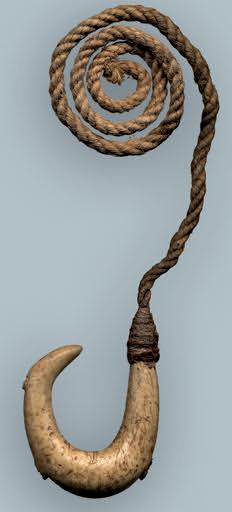
227
Pl 137
(*3) A one-piece hook made of human bone, collected in the 19th centur y by Dennis Collings
(*4) Close-up views of two of the three small “head”-protr usions on the outside of the shank
(*5)
Pl. 137
aktuelles hakenbuch 12.okt:miot neu vertikal 30.11.2011 18:18 Uhr Seite 227
Pl 130
Pl 137
ne phrite points He calls them “fish hook point amulets ” T hey were found in the Otag o area, and are housed in the Otag o Museum. Example D.24.1206 has crenellations on its outer edg e; D 10 258 has a hole drilled in it, and an inner and outer barb, while D 39 1501 is smooth and is pierced at its extremity (190): Fig 4.126, 4.127, 4.130.

T he ar tfully worked bone points on plate 137 are typical examples from the Murihiku region (*1) of souther n South Island T he lower loose point on the plate has a tr uly vir tuosic and unique appearance, as if all of the possibilities of the material from which it is made had been exploited and exhausted in its manufacture. But similar points are seen in Skinner (177): Fig. 28 (Otag o Museum #D 27 002) Hjar no calls these points “ser rated and multi-barbed points type C 4” (179): Fig 21, and says: “T he word baroque seems to suit this type It varies somewhat in shape as well as size and in the number of barbs. T he main criterion, but a ver y marked one, is the plethora of notches and supplementar y barbs on all sides of the point ” (179): 29 T hese points were found in the upper layers of excavated sites. T he type is characteristic of the Classic phase.
Many wooden hooks with these beautifully made bone points, with early collection dates, have been published in the literature Parkinson, the ar tist who accompanied Cook on his first voyag e, illustrates all four of the types of two-piece hooks mentioned here, alongside five other New Zealand hooks, on plate XXVI of his Jour nals (see (191): Pl XXVI and p 227)
Beasley shows over a dozen of these impressive hooks (8): Pl XXIV A through Pl XXVII Plate 61 of the Oldman catalogs shows fur ther outstanding examples of these hooks, which var y g reatly in for m and size. (192)
Pl. 137
T he complete hook on plate 137 also exhibits not only highly developed technical abilities on the maker’s par t, but also a keen sense of for m and propor tion. T he eleg ant swing extends even to the binding which secured the hook to its now absent leader T he g radual thickening of the wooden shank at its base and its thinning towards the point at which the eleg antly shaped bone tip is tied on, and the manner in which the small adjacent barbs “targ et” the binding at the top of the hook, elevate this example to an aesthetic level that sur passes that of many other nonetheless ver y beautifully made two-piece hooks
Pl. 133
Pl 134
Pl 133
T he Murihiku hook on the plate 133 is an example of the g reat variations in hook manufacture that were possible As the smaller hooks on the following plate 134 fur ther demonstrate, such wide variations are not encountered elsewhere in Polynesia. T he wooden shanks were primarily made of “trained roots” (*2), which g ave them the strength to withstand the pull of larg e fish when hooked T his hook is complete in all respects, and it has bite marks on its shank, presumably produced by shark teeth T he bone point, which is equipped with both an inner and outer barb, is meticulously tied to the shank with f lax fibre line T he masterfully braided leader lashed to the shank is additionally reinforced with a covering of multi-stranded twined f lax fibre, extending from above the shank head to the bottom of the binding, to prevent the caught prey from biting through it A comparable hook may be seen in Skinner (177): Fig. 24. Another hook in the collection of the Museum für Völkerkunde Dresden (Inv no 13806) compares
228
(*1) T he ter m “Murihiku” is often used in archaeological research, especially per taining to the east coast, and appears in many publications See especially (177) and (179)
aktuelles hakenbuch 12.okt:miot neu vertikal 30.11.2011 18:18 Uhr Seite 228
(*) A ver y old jade amulet in the shape of a shark tooth
favorably to the one illustrated here, inasmuch as the somewhat heavy base has here been car ved into a head (*3).
Drawings #19 and #20 in Skinner’s publication (177) are of par ticular interest because they show wooden hooks without bindings or points, and so allow for examination of how both the shank head, and the tip to which the bone point was attached, were made According to Skinner, this hook can be attributed to the Murihiku area (*4)
Hjar no investig ates the “two-piece bait hooks” from this area in g reat detail and asser ts that the many bone points are readily identifiable as belonging to these two-piece hooks. T he hook he illustrates shows how the bone point is laid into the wooden shank, before being lashed onto it (179): Fig 13
According to Skinner, no other area in New Zealand has so g reat a variety of hooks as Murihiku. He says: “T hat this is due to conser vatism rather than to inventiveness is indicated by the fact that ever y Murihiku type and most varieties are present in other par ts of Oceania ” (177): 209
T he two-piece hooks on plate 134 are also variously shaped. T he upper hook has comparables in Beasley (8): Pls XVII and XIX as well as in Hjar no (179): Fig 15 T he latter states: “T he line attachment consists of a knob at the back, and from here the shank tapers to a point. T he bend ends in a g roove, in which the point was placed To secure the point lashing the lower outside of the shank is g rooved on the underside ” He g oes on to say: “No wooden example of this type has yet been recovered in Murihiku ” (179): 23 Skinner similarly remarks: “On open sites wood covered by sand decays rapidly, and as caves of any kind are infrequent in Murihiku and caves suitable for settlement are nonexistent, the number of wooden fish hooks or wooden fish hook shanks preser ved in collections is small ” (177): 209 T he lower left hook with its bone point tur ned acutely inward still has its bait line. T he bone point of the ver y unusual upper left hook also still has a por tion of bait line attached T his perhaps unique two-piece hook is meticulously bound with f lax fibre line all the way to its bone point, and the wooden shank beneath the binding is thus not visible. Unfor tunately only little infor mation is available on this hook, and comparable examples are unknown in the literature, but it may be assumed that the binding was intended to strengthen the hook and protect it from the fishes’ teeth (*5).
T here is barely any infor mation available for a larg e number of hooks on what types of fish they were used to catch Reed writes: “T he sea, lakes and rivers teemed with fish which were a valuable par t of the Maori’s food supply” (150): 70, and describes nearly 100 species of fish that he calls “more common ” But which specific hook types were used to fish for which species is known only in a fraction of cases In their 2008 publication, Davidson and Leach write: “Classifications of fish hooks in New Zealand and the Pacific have tended to focus on for m, with less attention to function. Discussions of hanging baited hooks often distinguish between jabbing hooks and rotating hooks, which are thought to function differently ( ) Allen found that functional aspects of hook mor pholog y are still poorly understood. Most studies however, have concentrated on for m without considering what kinds of fish were targ eted and how the hooks actually captured
Pl. 134
(*2) Hiroa mentions a practice in the nor ther n Au ck l a n d a r e a : “ t h e b e n d wa s p r o d u c e d ar tificially by tying the stem of young tanekaha plant in a loose overhand knot so that the natural g rowth fixed the cur ve in circular for m ” (186): 219 Best describes another practice from the Bay of Plenty “A peculiar submarine g rowth t e r m e d t o t a r a - m o a n a wa s u s e d f o r t h e manufacture of wooden hooks Suitable g reen and pliable pieces of wood were bent into the desired for m T hey were then allowed to dr y, and thus became extremely hard and resistant ” (193): 38
(*4) “T here are doubtless a g ood many complete hooks from Murihiku in British collections, but in all cases evidence as to locality has been lost ” (177): 209
(*5) Beasley illustrates four examples of twopiece hooks from East Polynesia (Rapa Iti) which are completely bound except for their points, and expresses the opinion that the purpose of the binding was to protect the hook from damag e caused by fish teeth (8): 46, Pl LXXIII

229
aktuelles hakenbuch 12.okt:miot neu vertikal 30.11.2011 18:18 Uhr Seite 229
(*3) Museum für Völkerkunde Dresden, Inv Nr 13806 (18,5 cm high)
Pl 136
and held them ” (194): 195 Fur ther infor mation on the subject of what kinds of hooks were used to catch what kinds of fish can unfor tunately only be hoped for in the future from archaeological excavations, when and if fish bones are found in strata in association with hooks In his descriptions of old hooks from Nor th Island, Fairfield makes the following remark about how they might have been used:
“As to the detailed use of these hooks, it is evident from their diversity, both of size and barbing, that each different type was used to catch different types of fish ( ) the larg er hooks would be used for dogfish and hapuku (g roper) fishing, and the medium sizes for catching snapper (tamur e) while the smaller sizes were for catching smaller fish, such as gur nard, etc.” (195): 153.
T he following hooks on plates 135 (*1) and 136 were baited and used to fish for larg er species T here is an almost identical hook in Beasley (8): Pl XXII
(*5) One of several larg e hooks in the Vienna Museum für Völkerkunde: P12/1891 - 42395, 42396, 42400, 42401 All lack their line bindings T hey all have a drilled hole a few centimeters below the shank head A g roove extends upward to the top of the shank head from either side of the hole for the securing of the line T he line r unning inside this recess, will therefore be protected from the fish teeth (20,5 x 12,5 cm)
Pl. 131
T he binding of the leader is intact on the Beasley example, but the ag e-induced brittleness of the braided f lax line on the one illustrated on plate 136 has caused it to break off T he carefully executed lashing of the bone point to the shank is perfectly preser ved, however. T he ar tful manner in which the point takes over and continues the shape of the wooden shank is notewor thy Only a few examples like it are known (*2) About these hooks, which exist in so many different variants, Anell writes: “Whether all these hooks were used for catching sharks or other big fish is not known, but from a purely classificator y point of view they all belong to the categ or y of shark-hooks ” (*3), (19): 227
Tw o Unusual Wooden Hooks
One-piece wooden hooks are seldom seen in collections although, as mentioned above, many two-piece hooks with wooden shanks and bone points do exist. T he hook shown on Pl. 131 is of extraordinar y eleg ance, and is superior from an aesthetic point of view to all other known examples (193): Fig 17 and (8): Pl XXIII T his hook’s solidity is due to the fine quality of the piece of wood from which it is made, which was trained by manipulation to g row into the desired shape (*4) T he carefully smoothed surface, abundantly dented with shark bites, and the beautifully shaped point with its small outer barb for the attachment of a bait line, or to kee p bait put directly on the hook from slipping off, demonstrate masterful comprehension of the selected material, and elevate the hook to the status of an ar t work Both the leader and its wrapping are also meticulously executed
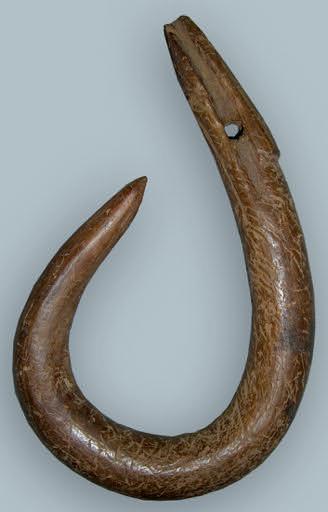
(*1)
(*2)
(*3) Michel T hieme witnessed at a funeral in N e w Z e a l a n d , t h a t a wo o d e n f i s h h o o k comparable to our Pl 135, was placed on the coffin and buried with it
(
* 4 ) B e s t s t a t e s : “ Fo r t h e m a nu f a c t u r e o f wo o d e n h o o k s c e r t a i n t o u g h wo o d s we r e e m p l oy e d , s u ch a s r o o t s o f t h e t a u h i nu , hardened by fire ” (193): 37
Pl. 132
T he one-piece hook on plate 132 combines two uncommon features: a point with an inner and outer barb and a g rooved and pierced shank head If we assume that the barb on such larg e hooks ser ves to prevent the bait or bait line from slipping off, one such barb would suffice What then could be the pur pose of a second barb? Future research may find a satisfying answer
T he g rooved and pierced shank head, however, has strictly functional reasons T he line passing through the hole and up the shank lies protected in its channel and can not be damag ed by the teeth of the fish T here would have been additional lashing around the shank head and the leader, which unfor tunately has been lost on our hook (*5)
230
Pl. 135
T his hook was collected by missionaries of the cong reg ation of the Fathers from the Sacred Hear t in the 19th Centur y
Another, almost identical, example is housed in the American Museum of Natural Histor y in NY (cat No 80 0/5628)
aktuelles hakenbuch 12.okt:miot neu vertikal 30.11.2011 18:18 Uhr Seite 230
An Unusual Hook with Questionable Pur pose: the Albatr oss Hook
Best illustrates two richly decorated examples in 1924, and describes them as albatross hooks, without however supplying any additional infor mation (196): Fig. 122. It also seems as if all later discussion of “albatross hooks” in literature refers only to this brief mentioning by Best (*6)
A similarly decorated example appears in the publication “Te Maori” with the following commentar y: “Most fish hooks used by the Maori have incur ved points with only occasional jabbing hooks from East Cape collected in the 19th centur y which are described as hooks for catching albatross. They are all jabbing hooks In the 19th and early 20th centuries the Whanau-a-Apanui were noted shorebased whalers Albatross could have been commoner in the area at that time than before or since. The heads and car ving style on this hook would sug gest an early date, as the for m is that of the Te K aha car vings ( ) Such hooks were collected in 1863 The earlier Te K aha car ving style may have sur vived until then ” (197): Fig 94

It must be noted, that the car ving style of the illustrated examples seems consistent with a collection date in the late 19th or even in the early 20th centur y
T he question remains open as to how and why such hooks, especially with a bait string attached, should have been used for catching albatross, or if the attributed pur pose is simply an early misunderstanding by Best
A New Zealand Hook with Haliotis Shank and Bone Point
T his exce ptionally well crafted hook appears to be rare in collections. T he shank is made from the hard edg e of the Haliotis shell (Pana), and the point of bone T he plant fiber bindings are additionally strengthened with resin paste Neither Beasley nor Anell present this type of hook. Oldman illustrates two examples that he classifies as being of the Kahawai type (192): Pl 62, #106J and #107k A hook with a ser rated Paua shell shank and an iron point appears in the Hooper catalogue, and is also identified as being of the Kahawai type (61): Pl. 3, #28 T hat these hooks were already in use at the beginning of the 19th centur y is demonstrated by an interesting g roup of hooks that were sold at auction in London in 1983. T he label gives an incor rect location of origin, but states that they were “given by Sir Edward Par r y to General Sir Ralph Darling in 1830 ” T hree of these four hooks with early collection dates, complete with their bindings and lines, have Kiwi feather hackles. All have Paua shell shanks with ser rated edg es. T he bone points are also notched and barbed (210): 25 Two additional hooks, with Haliotis shell shanks and points, were sold at auction in Auckland in 2002, ag ain identified as Pa Kahawai (211): 70 While on account of their shor t shanks, these hooks could have been used to catch Kahawai, the hook from the Christie’s auction and the one presented here were probably used to catch larg er fish. Why Haliotis shell was used in the manufacture of hooks is explained by Janet Davidson: “T he lack of pearl shell in New Zealand prompted some early adaption Lure shanks were initially of bone or stone (...) although some use was made of local iridescent shells, both the paua (Haliotis spp , a New Zealand for m of abalone) and a g astropod of the Turbo
231
Pl. 138
aktuelles hakenbuch 12.okt:miot neu vertikal 30.11.2011 18:18 Uhr Seite 231
(*6) T he two questionable hooks (196): fig 122
(*6) “Line-outrig g ers used by Kahawai trollers
family Suitable bone was abundant in the for m of moa bone and, to a lesser extent, sea mammal bone and ivor y (...). T he development of two-piece bait hooks appears to have begun in the south and spread nor th Trolling for ms utilising the iridescent proper ties of paua developed At first these had a shank made of the thick rim of the shell, but in the nineteenth centur y a highly standardised for m consisting of a wooden shank with a thin paua shell plate became widespread In the south a wooden shank and bone point were used” (212): 17-18 According to Davidson, hooks of the type shown here were used in the 18th centur y T hey were the predecessors of the Kahawai hooks, of which many examples are shown here. T hat it is safe to assume this is tr ue is suppor ted by the fact that the bone points are ver y ar tfully crafted and ser rated, in a manner which is typical of the Maori Classic phase of the 18th centur y
Pa Kahawai – The Best Known Fish Hooks fr om New Zealand
(*1) Ver y rarely of whale bone, like the example in the middle of the bottom row of Pl 139
(*2) T he Kahawai inhabits the waters of the southwest Pacific, and g rows to a length of up to 90 centimeters and a weight of up to 9 5 kilos

Juveniles are found in swar ms in bays and river delta areas until they are fully g rown, and adults swim in hug e swar ms along the coast
(*3) No hook of this type can be traced to Cook
(*4) Examples with metal points are described by Wakefield at Wang anui in the 1840s” (198): 51
(*5) Beasley laments the manufacture of Kahawai h o o k s f o r s a l e t o 1 9 t h c e n t u r y t r ave l l e r s :
“Unhappily even larg er numbers (of Kahawai hooks) have been produced at the behest of the curio-hunting tourist Many of these last being but sad travesties of the older for ms ” (8): 15
T he eight Kahawai hooks on plate 139 provide an over view of the many variants of this nonetheless unmistakable hook type T hey all have a slightly bowed and boat-shaped wooden shank (*1), the inner face of which is covered with a perfectly fitted piece of haliotis shell, reminiscent of Polynesian bonito hooks. T he easter n Polynesians seafarers, accustomed to tropical conditions, who ar rived in New Zealand’s much cooler climate, found neither pearl shell nor the prized bonito in their new environment But at specific times of the year, the Kahawai (*2), a fish comparable to the bonito, was present T he Polynesian bonito hook with a mother of pearl shank ultimately evolved into the Kahawai hook, probably in the late 18th centur y (*3) Its manufacture required g reat skill, as the haliotis overlay had to be secured to the inner shank face with only the lashing holding the shank to the bone point, and the lashing attaching the shank head to the leader. T he ver y ar tful lashings are illustrated in ever y phase of their production in Hiroa (186): Fig 61 T he securing of the human bone point to the lower shank end with f lax fibre line is also described in detail. T he smallest hook in the upper row is of special interest because it has a native Maori re pair to the haliotis overlay Two holes drilled through the broken haliotis shell and the shank allow the two pieces to be “ sewn ” tog ether. T his demonstrates what g reat value even small hooks had. With the introduction of iron, heavy metal wire points beg an to be widely substituted for bone ones (*4) T he hook at left in the lower row is a g ood example (*5) A hackle made of kiwi, kingfisher or penguin feathers is no long er present on any of the examples here Kahawai hooks were used only by the Maori on Nor th Island
Best describes fishing for the Kahawai: “A different kind of outrig g er was employed in some par ts in connection with fishing for Kahawai T he fish was taken by trolling, along the canoe T he hooks employed were the Pa kahawai, already refer red to. Here ag ain the difficulty was the entanglement of lines. Hence poles were secured in a horizontal position, or nearly so, on either side of the vessel, and a line at the ster n passed through a notch in the upper end of a rod secured in a ver tical position. T he side line passed through forks at the outer ends of the poles.”
(*6) (193): 49, Fig 23
232
Pl. 139
aktuelles hakenbuch 12.okt:miot neu vertikal 30.11.2011 18:18 Uhr Seite 232
”
T he hook on plate 141 consists of a meticulously manufactured whale bone shank and a forg ed nail point T he iron point is inser ted through a hole in the lower por tion of the shank, and bent in such a way as to make it r un upwards and parallel to the shank A hole drilled with non-metal tools is present at the base of the shank beneath where the point passes through it for the attachment of a hackle of reddish feathers A de pression which encircles a button-like protr usion is ar tfully worked into the head of the shank. T his ser ves to assure a secure binding of the braided f lax line to the shank Remains of red colour are still visible inside the drilled holes In contrast with Kahawai hooks, bar racuda hooks were used ever ywhere in New Zealand T hey usually consisted of a bone point inser ted into a wooden shank. As wooden shanks were subject to rotting over time, archaeological excavations have unear thed many bone points, but ver y few shanks or shank fragments Hiroa illustrates several variants of bar racuda hooks that show different ways in which the line was attached (186): Fig 55 He writes: “T he straight and somewhat massive shank was for med of a dark wood such as rimu ( ) Rarely the snood knob was on the inner side (...). After European contact, a bent nail usually re placed the bone point.”
(186): 220 Two of the hooks with Cook provenance, one in the Götting en collection (Oz 337) and another in the Taranaki Museum (No 46 832), have this rare type of leader attachment knob Bullen gives a vivid account of bar racuda fishing, which is cited by Anell According to it, the hook was attached to an approximately 170 centimeter long rod. “Seated in the boat with sail set, they slip along until a school of bar racuda is happened upon T he peak of the sail is dropped, so as to deaden the boat’s way, while the fisher men play their poles with a sidelong swee p that f lashes the bit of shining red through the water, making it ir resistibly attractive to the str ug gling horde of ravenous fish One by one, as swiftly as the rod can be wielded, the lithe for ms drop off the barbless hook into the boat.“ (199): 329. Best states that the Bar racuda season begins in November and ends in April (193): 54 Anell refers to Duff with respect to the origins of the bar racuda hook, when he says: “the bar racuda lures had already made their appearance during the moa-hunting period; but they are much commoner in young er sites and have continued in use up to moder n times T heir rare occur rence in the oldest periods indicates that they were not used by the first Polynesian emig rants; and it seems likely that they did not appear until “the minnow shanks” had proved ineffective On the other hand, the absence of barb would indicate that they are older than the Kahawai-lures ” (19): 181

233
The Okooko Bar racuda Hook
Pl 141
aktuelles hakenbuch 12.okt:miot neu vertikal 30.11.2011 18:18 Uhr Seite 233
Bar racuda / Sphyraea qenie © Greenpeace / Axel Heimken
(*1)
Metraux
Pl. 142
Five Archaeological Bone Points from the Southeast Coast of New Zealand’s South Island
T hese five undocumented bone points can be attributed to the Murihiku a r e a , t h a n k s t o t h e m a n y
archaeologists and ethnologists (see Hjar no (179): Map 1). T he two points on the left appear to have for merly been attached to the wooden shanks of bar racuda hooks Beasley (8): Pl 10, Hjar no (179): Figs 3 & 4, Hiroa (186): Fig 55, and Skinner (171): Fig 54, all provide infor mation on how these ser rated points were attached to their shanks T he bone points are par tially dee ply eroded, which is an indication of their considerable ag e. Golson gives dates for the Murihiku sites: “Radiocarbon dates r un from 1185 A D +/- 30 and 1195 A D +/- 30 in the lowest level of occupation to 1490 A D +/- 50 halfway through the de posits” (198): Fig 41. T he bone points are made of different materials. T he light one could be made of Moa bone An example comparable to the drilled point can be seen in Lockerbie (176: Fig 40) It appears to be made of canine jaw bone T here are also comparables for the point at lower center in Lockerbie (176): Fig. 27, and Hjar no (179): pl III As a comparison to the lower right point see: (171): fig 30 Over the course of the centuries, the less resistant wooden shanks disinteg rated, but thousands of bone points are known to have sur vived, protected underg round, and collected primarily by archaeological excavation Most of these points are in the collections of the Otag o Museum which is located in the hear t of the so-called Murihiku area
An Or namental or Amulet Hook

T he two-piece hook shown here (*1) is similar in some respects to a functional hook, but cannot be considered as such for several reasons. T he wooden shank has a carefully smoothed surface, but it is not made from trained branch wood, and would lack the strength needed to hold the weight of a fish T he crab pincer point, although ar tfully secured to the shank, would likewise not be up to the tests that a real fishing device would encounter T he shape of the shank head is reminiscent of the heads on one-piece wooden hooks, such as those in the Vienna Museum für Völkerkunde. T he answer to the question of what this hook, which shows clear signs of extensive care over a long period of time, was used for, could be that it ser ved as an or nament, just like the well known Hei-Matau (*2) Master fisher men wore such hooks and recited magical incantations or sayings in order to create favorable conditions for successful fishing
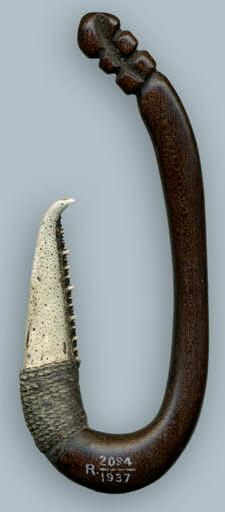
R
apa Nui
Rapa Nui, lost in the endless reaches of the Pacific ocean, is the most easter n Polynesian island Stee p cliffs mark the coast of this volcanic island, with its highest peak reaching 600m above sea level
Metraux states that the waters around the island teem with fish. T his wealth was well used in prehistoric times, judging by the abundance of fish hooks
t h e s u b j e c t
N e w Z e a l a n d
p u b l i c a t i o n s o n
by
234
Pl. 140
(*2) A Jade Hei-Matau collected in the late 19th centur y by Ar thur Lewis in the collection of the Vienna Museum für Völkerkunde (6,6 x 6,2 cm)
(*3) Another perfect basalt hook is in the collection of the Kontiki Museum in Oslo It was collected and published by Heyerdahl (134): fig 102, Cat no 1006 He also illustrates the different stag es of manufacture. (134): fig. 102, 103.
infor ms us on all hook types from Rapa Nui in his monog raph (158): 174-182, fig 7-11
aktuelles hakenbuch 12.okt:miot neu vertikal 30.11.2011 18:18 Uhr Seite 234
(*5) Only the Otago Museum houses a basalt hook which was collected on Pitcairn (135): fig 74
found and excavated in the caves Myths describing fisher men as heroes and countless petroglyphs of fish underline the significance of fishing to the islands’ inhabitants T he stone fish hooks are most impressive amongst the Easter Island h o o k s T h e s e we l l p r o p o r t i o n e d a n d p e r f e c t l y p o l i s h e d b a s a l t h o o k s a r e masterworks of neolithic craftsmanship. T he stone hook illustrated here entered into the collection of the Ethnog raphical Museum in Vienna (*3), tog ether with some bone hooks, two of which are shown here (*4)
“T he absence of pearl-shell or any bone other than human bone, which was too small, caused Easter Islanders, like the ancient people of Pitcair n (*5) to use basalt stone for making one-piece bait hooks in the g raceful for m of the Polynesian ‚rotating’ hook with recur ved unbarbed point Such hooks, up to 5 inches long, used with sinker and bait for larg e fish (kahi) of the Tunny family were called mangai kahi. ” (104): 60 A larg e number of broken stone hooks lead one to imagine the g reat difficulties in their manufacture
T he two-piece hook illustrated here shows many similarities to Hawaiian examples which could sug g est a common ancestor. (*6)
Upon comparison of this complete two-piece hook with the few examples illustrated in literature (*7), we can assume that it is a ver y old example made before Wester n contact. (*8) T he two par ts made from human bone (*9) are ar tfully shaped at the base to allow the compact lashings, of two-ply twisted Hibiscus string covered with a f lat bark fibre line, to pass around its four sides T he attachment of the leader is just as ar tfully secured ag ainst shar p fish teeth with a fine two ply twisted plant fiber string below the knob and above the head with the winding of a f lat bark string around the two-ply twisted Hibiscus fibre leader. (*10)
Many two piece hook par ts found in caves and digs allow for easy study of the indig enous design of different hook par ts which are nor mally covered on complete examples. T he best sur vey can be found in Heyerdahl’s book. (134): Pl. 73f; fig 107


With many of the collected bone or stone hooks one has to ask about their authenticity. Metraux states: “Most specimens in Bishop Museum (...) are recent and it is uncer tain whether they were used or manufactured for trade ( ) I know that moder n natives (*11) have forg ed ‚ancient’ hooks from the skeleton of a whale which had drifted ashore.” (158): 179
Also the double hooks illustrated by Chauvet (206): pl XXX, fig 69 and Beasley are rated as trade specimens by Metraux: “I am inclined to consider them moder n products with no ethnological significance.” (158): 178 Especially stone hooks were manufactured soon after the first contact with European sailors Such hooks made from lighter and softer stone than basalt could easily be recognized But Metraux writes: “for throughout our stay the Easter Islanders offered us ar ticles counterfeited with such skill that despite our precautions we were not always able to avoid being taken in. T hese imitations of ancient utensils were often so faithful and their patina so authentic that the forg ers deser ved the payment they received for their trouble ” (207): 25 Metraux is saying this after he had traded a “splendid stone fish hook” which later tur ned out to be a “fake.”
Pl
(*6) “At any rate, it is clear that colonization par ties from the Marquesas were responsible for the settlement of Easter Island by about AD 400, and of Hawaii possibly by AD 300 ” (162): 58 Two-piece bone hooks have so far not been found on the Marquesas Islands
(*7) (8): Pl XCV (Beasley coll );
(8): Fig 21 B (Museé National, St Ger main); Museé du quai Branly: No Inv : 72 66 462 1;
(*8) A comparable hook is illustrated in: (205): p 188, fig 4 T he small illustration shows a hook with lashings and leader but does not allow to distinguish the fibre materials
(*9) Brown writes about the bone material:
“ human bone has a special vir tue ( ) that stone can never have Maui, the hero who pulled up the islands of New Zealand, had the same faith in human bone ” (205): 188/189
Interesting is the myth: “Origin of the bone fish hooks” which Metraux put down (158): 363
(*10) T he snood is of evenly twisted fibre from the hibiscus ( ) the lashings at the base of the hook ( ) would appear to be strips of the outer bark of some plant ” (8): 57
(*11) Metraux visited Rapa Nui in 1934/35 to conduct his research
235
142 Pl 143 (* Museum für Völkerkunde, Vienna.
aktuelles hakenbuch 12.okt:miot neu vertikal 30.11.2011 18:18 Uhr Seite 235

Ellice Islands (Tuvalu) 236 72/73 aktuelles hakenbuch 12.okt:miot neu vertikal 30.11.2011 18:18 Uhr Seite 236
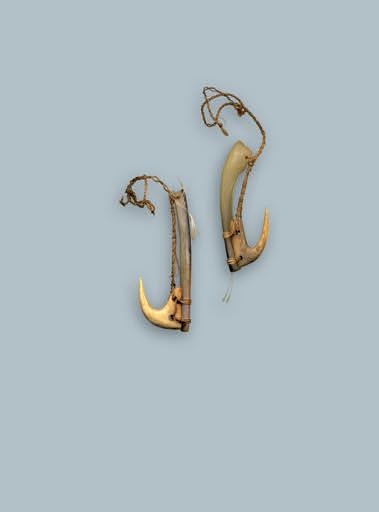
237 aktuelles hakenbuch 12.okt:miot neu vertikal 30.11.2011 18:18 Uhr Seite 237
Ellice Islands (Tuvalu) 238 74 aktuelles hakenbuch 12.okt:miot neu vertikal 30.11.2011 18:18 Uhr Seite 238

239 aktuelles hakenbuch 12.okt:miot neu vertikal 30.11.2011 18:18 Uhr Seite 239
Ellice Islands (Tuvalu) 240 75 aktuelles hakenbuch 12.okt:miot neu vertikal 30.11.2011 18:18 Uhr Seite 240

241 aktuelles hakenbuch 12.okt:miot neu vertikal 30.11.2011 18:18 Uhr Seite 241
Ellice Islands (Tuvalu) 242 76 aktuelles hakenbuch 12.okt:miot neu vertikal 30.11.2011 18:18 Uhr Seite 242
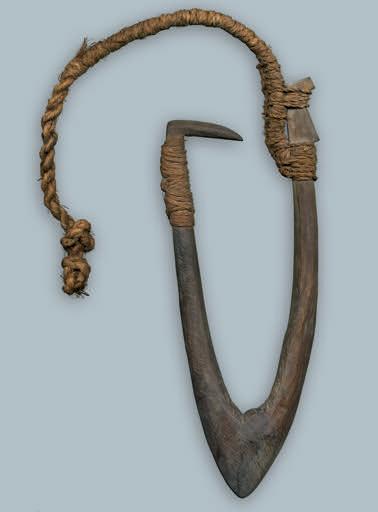
243 aktuelles hakenbuch 12.okt:miot neu vertikal 30.11.2011 18:18 Uhr Seite 243

Futuna 244 77/78 aktuelles hakenbuch 12.okt:miot neu vertikal 30.11.2011 18:19 Uhr Seite 244
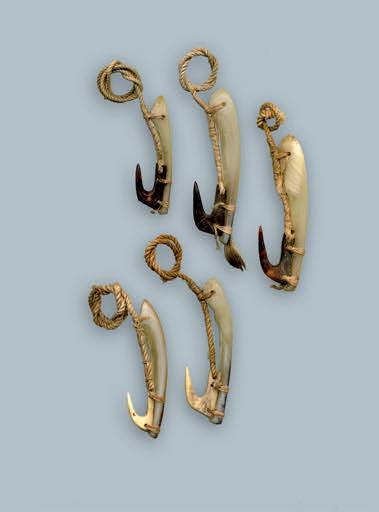
245 aktuelles hakenbuch 12.okt:miot neu vertikal 30.11.2011 18:19 Uhr Seite 245
Tokelau 246 79 aktuelles hakenbuch 12.okt:miot neu vertikal 30.11.2011 18:19 Uhr Seite 246

aktuelles hakenbuch 12.okt:miot neu vertikal 30.11.2011 18:19 Uhr Seite 247
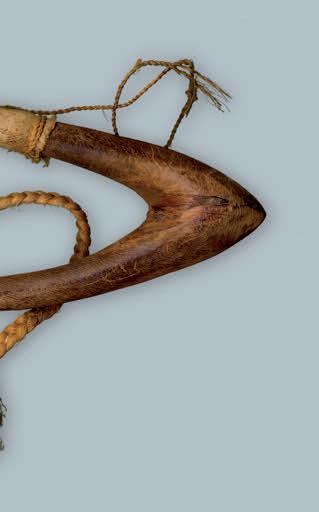
aktuelles hakenbuch 12.okt:miot neu vertikal 30.11.2011 18:19 Uhr Seite XVII

aktuelles hakenbuch 12.okt:miot neu vertikal 30.11.2011 18:19 Uhr Seite XVIII
Tokelau 248 80 aktuelles hakenbuch 12.okt:miot neu vertikal 30.11.2011 18:19 Uhr Seite XIX
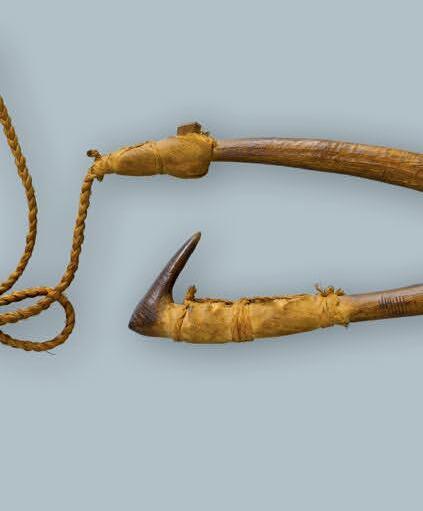
aktuelles hakenbuch 12.okt:miot neu vertikal 30.11.2011 18:19 Uhr Seite XX
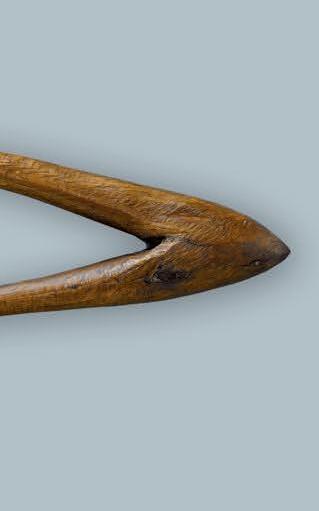
aktuelles hakenbuch 12.okt:miot neu vertikal 30.11.2011 18:19 Uhr Seite XV

aktuelles hakenbuch 12.okt:miot neu vertikal 30.11.2011 18:19 Uhr Seite XVI
Tokelau 250 81 aktuelles hakenbuch 12.okt:miot neu vertikal 30.11.2011 18:19 Uhr Seite 250
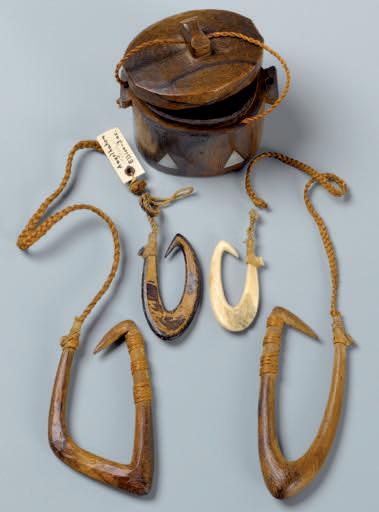
251 aktuelles hakenbuch 12.okt:miot neu vertikal 30.11.2011 18:19 Uhr Seite 251
Tokelau 252 82 aktuelles hakenbuch 12.okt:miot neu vertikal 30.11.2011 18:19 Uhr Seite 252

aktuelles hakenbuch 12.okt:miot neu vertikal 30.11.2011 18:19 Uhr Seite 253
Samoa 254 83 aktuelles hakenbuch 12.okt:miot neu vertikal 30.11.2011 18:19 Uhr Seite 254
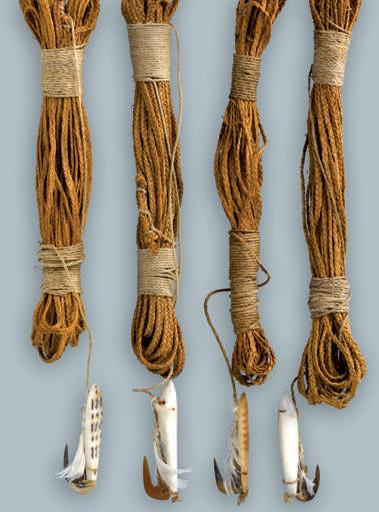
255 aktuelles hakenbuch 12.okt:miot neu vertikal 30.11.2011 18:19 Uhr Seite 255
Samoa 256 84 aktuelles hakenbuch 12.okt:miot neu vertikal 30.11.2011 18:19 Uhr Seite 256

257 aktuelles hakenbuch 12.okt:miot neu vertikal 30.11.2011 18:19 Uhr Seite 257
Samoa 258 85 aktuelles hakenbuch 12.okt:miot neu vertikal 30.11.2011 18:19 Uhr Seite 258
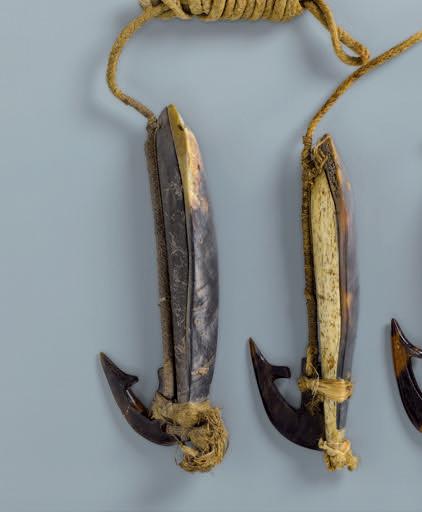
aktuelles hakenbuch 12.okt:miot neu vertikal 30.11.2011 18:19 Uhr Seite 259
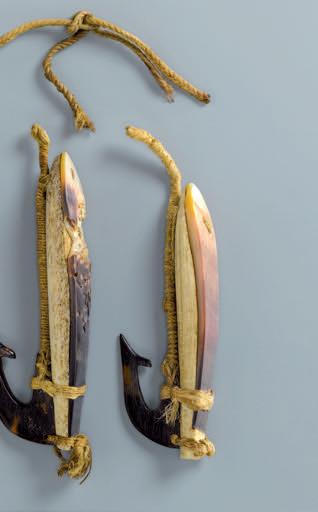
aktuelles hakenbuch 12.okt:miot neu vertikal 30.11.2011 18:19 Uhr Seite XIX

aktuelles hakenbuch 12.okt:miot neu vertikal 30.11.2011 18:19 Uhr Seite XX
Tong a 260 86 aktuelles hakenbuch 12.okt:miot neu vertikal 30.11.2011 18:19 Uhr Seite 260

261 aktuelles hakenbuch 12.okt:miot neu vertikal 30.11.2011 18:19 Uhr Seite 261
Tong a 262 87 aktuelles hakenbuch 12.okt:miot neu vertikal 30.11.2011 18:19 Uhr Seite 262

263 aktuelles hakenbuch 12.okt:miot neu vertikal 30.11.2011 18:19 Uhr Seite 263

Tong a 264 88/89 aktuelles hakenbuch 12.okt:miot neu vertikal 30.11.2011 18:19 Uhr Seite 264

265 aktuelles hakenbuch 12.okt:miot neu vertikal 30.11.2011 18:19 Uhr Seite 265
Tong a 266 90 aktuelles hakenbuch 12.okt:miot neu vertikal 30.11.2011 18:19 Uhr Seite 266
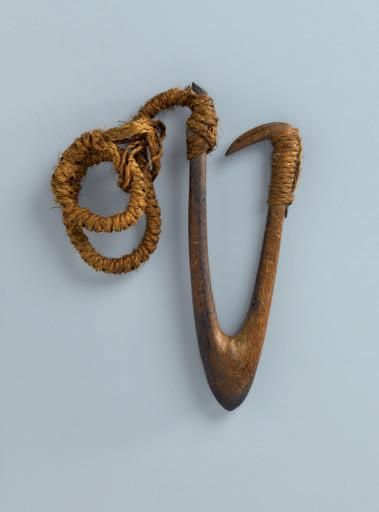
267 aktuelles hakenbuch 12.okt:miot neu vertikal 30.11.2011 18:19 Uhr Seite 267
Tong a 268 91 aktuelles hakenbuch 12.okt:miot neu vertikal 30.11.2011 18:19 Uhr Seite 268
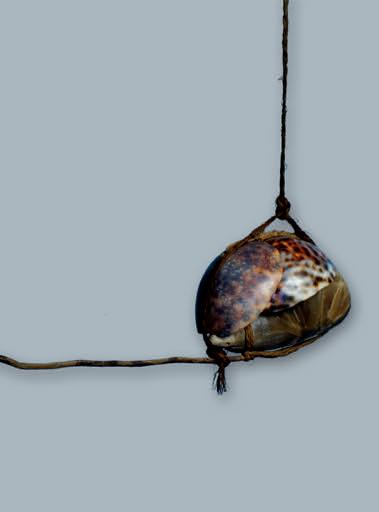
269 aktuelles hakenbuch 12.okt:miot neu vertikal 30.11.2011 18:19 Uhr Seite 269
Pukapuka (Nor ther n Cook Group) 270 92 aktuelles hakenbuch 12.okt:miot neu vertikal 30.11.2011 18:19 Uhr Seite 270
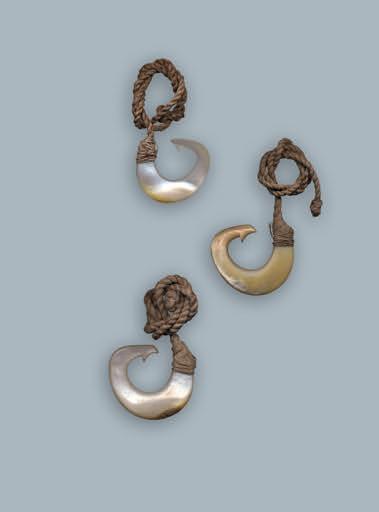
271 aktuelles hakenbuch 12.okt:miot neu vertikal 30.11.2011 18:19 Uhr Seite 271

ther
272 93/94 aktuelles hakenbuch 12.okt:miot neu vertikal 30.11.2011 18:20 Uhr Seite 272
Pukapuka (Nor
n Cook Group)

273 aktuelles hakenbuch 12.okt:miot neu vertikal 30.11.2011 18:20 Uhr Seite 273
Manihiki
274 95 aktuelles hakenbuch 12.okt:miot neu vertikal 30.11.2011 18:20 Uhr Seite 274
Collected by missionaries of the cong reg ation of the Fathers from the Sacred Hear t in the 19th centur y.

275 aktuelles hakenbuch 12.okt:miot neu vertikal 30.11.2011 18:20 Uhr Seite 275
Society Islands. Circumstantial evidence indicates that the left hook was possibly collected on one of Cook’s voyag es. 276 96 aktuelles hakenbuch 12.okt:miot neu vertikal 30.11.2011 18:20 Uhr Seite 276
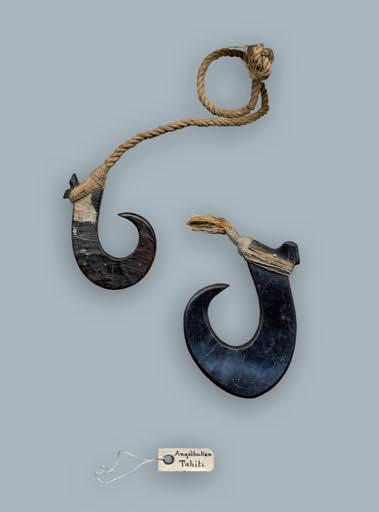
277 aktuelles hakenbuch 12.okt:miot neu vertikal 30.11.2011 18:20 Uhr Seite 277
Society Islands 278 97 aktuelles hakenbuch 12.okt:miot neu vertikal 30.11.2011 18:20 Uhr Seite 278
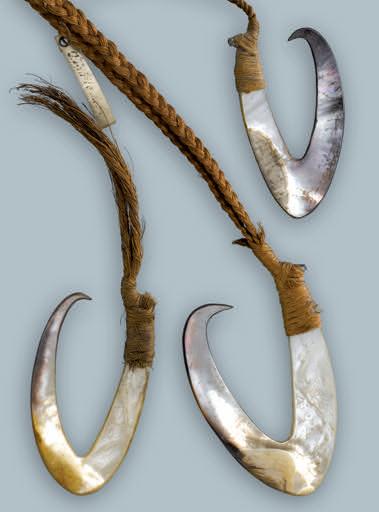
279 aktuelles hakenbuch 12.okt:miot neu vertikal 30.11.2011 18:20 Uhr Seite 279


Society Islands 280 98 aktuelles hakenbuch 12.okt:miot neu vertikal 30.11.2011 18:20 Uhr Seite 280
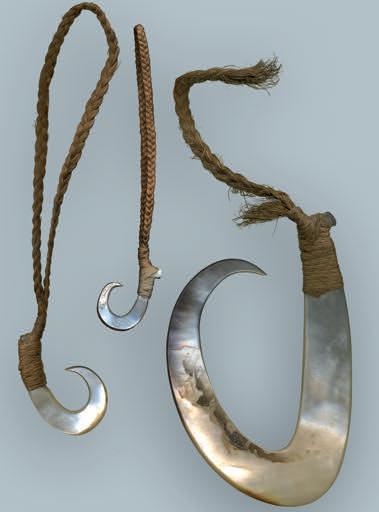
281 aktuelles hakenbuch 12.okt:miot neu vertikal 30.11.2011 18:20 Uhr Seite 281
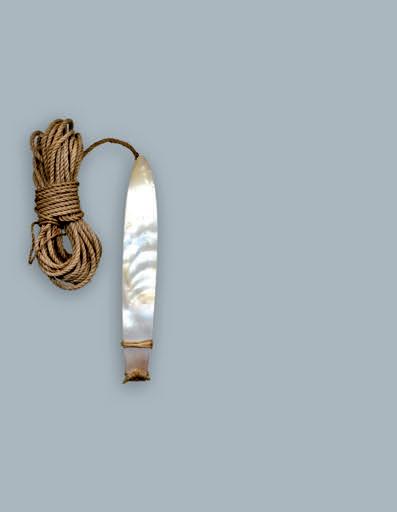
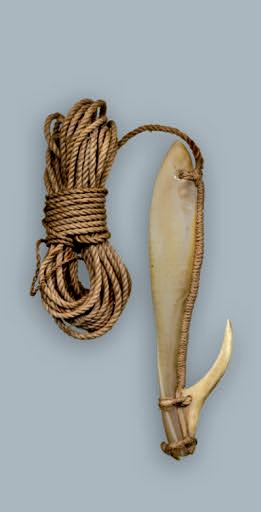
Society Islands 282 99/100 aktuelles hakenbuch 12.okt:miot neu vertikal 30.11.2011 18:20 Uhr Seite 282
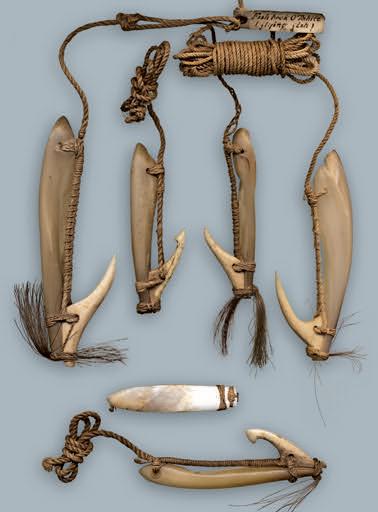
283 aktuelles hakenbuch 12.okt:miot neu vertikal 30.11.2011 18:20 Uhr Seite 283
Society Islands 284 101 aktuelles hakenbuch 12.okt:miot neu vertikal 30.11.2011 18:20 Uhr Seite 284
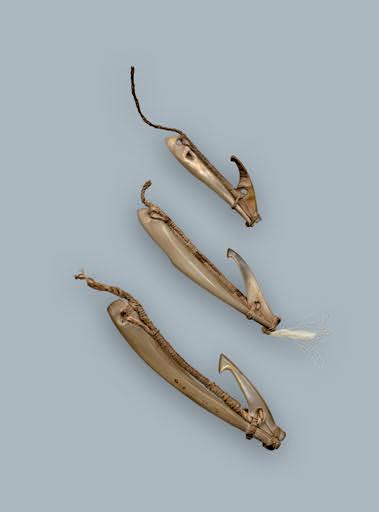
285 aktuelles hakenbuch 12.okt:miot neu vertikal 30.11.2011 18:20 Uhr Seite 285
Society Islands. Circumstantial evidence indicates that the hook in the middle was possibly collected on one of Cook’s voyag es. 286 102 aktuelles hakenbuch 12.okt:miot neu vertikal 30.11.2011 18:20 Uhr Seite 286

287 aktuelles hakenbuch 12.okt:miot neu vertikal 30.11.2011 18:20 Uhr Seite 287
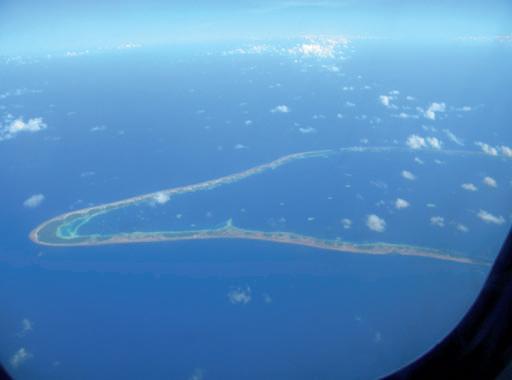
Tuamotu Islands 288 103
aktuelles hakenbuch 12.okt:miot neu vertikal 30.11.2011 18:20 Uhr Seite 288
One of the Tuamotu Islands An Atoll island, made of corall raising only slightly above the level of the ocean

289 aktuelles hakenbuch 12.okt:miot neu vertikal 30.11.2011 18:20 Uhr Seite 289
Tuamotu Islands 290 104 aktuelles hakenbuch 12.okt:miot neu vertikal 30.11.2011 18:20 Uhr Seite 290

291 aktuelles hakenbuch 12.okt:miot neu vertikal 30.11.2011 18:20 Uhr Seite 291

Tuamotu Islands 292 105/106 aktuelles hakenbuch 12.okt:miot neu vertikal 30.11.2011 18:20 Uhr Seite 292

293 aktuelles hakenbuch 12.okt:miot neu vertikal 30.11.2011 18:20 Uhr Seite 293
Mang areva T he two hooks with their long leaders still attached were collected in the 1830’s by Vincendon-Dumoulin on the Dumont D’Ur ville expedition 294 107 aktuelles hakenbuch 12.okt:miot neu vertikal 30.11.2011 18:20 Uhr Seite 294

295 aktuelles hakenbuch 12.okt:miot neu vertikal 30.11.2011 18:20 Uhr Seite 295
East Polynesia 296 108 aktuelles hakenbuch 12.okt:miot neu vertikal 30.11.2011 18:20 Uhr Seite 296

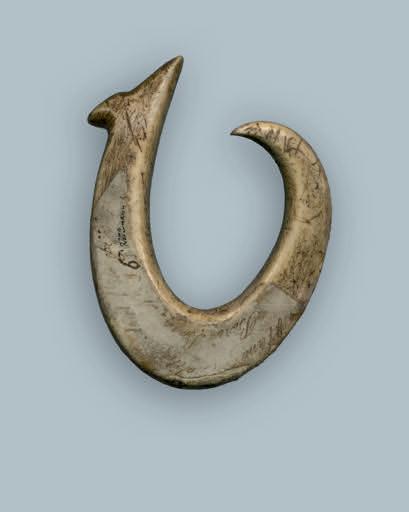
297 aktuelles hakenbuch 12.okt:miot neu vertikal 30.11.2011 18:20 Uhr Seite 297
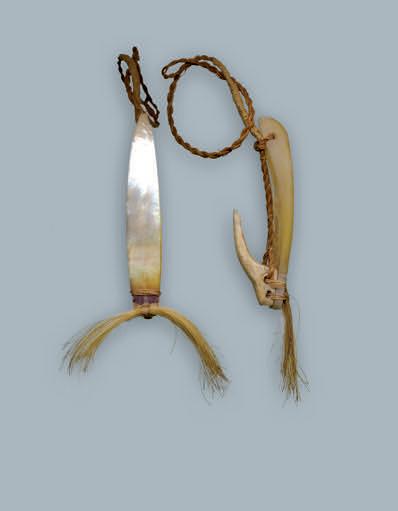
Marquesas Islands 298 109/110 aktuelles hakenbuch 12.okt:miot neu vertikal 30.11.2011 18:20 Uhr Seite 298
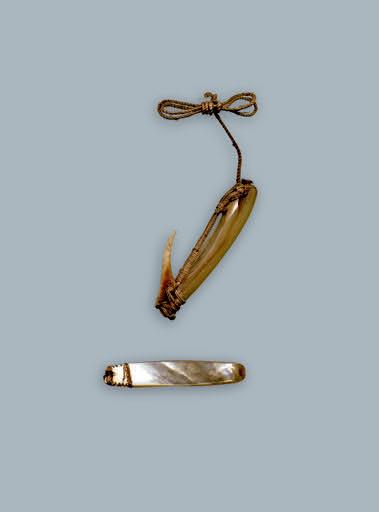
299 aktuelles hakenbuch 12.okt:miot neu vertikal 30.11.2011 18:20 Uhr Seite 299

Marquesas Islands 300 111 aktuelles hakenbuch 12.okt:miot neu vertikal 30.11.2011 18:20 Uhr Seite 300
Hatuatua Bay on Nuku Hiva, Marquesas Islands An impor tant archaeological site was excavated here; last by Dr Yosi Sinoto in 1965, unear thing several fish hooks and other fishing related ar tefacts
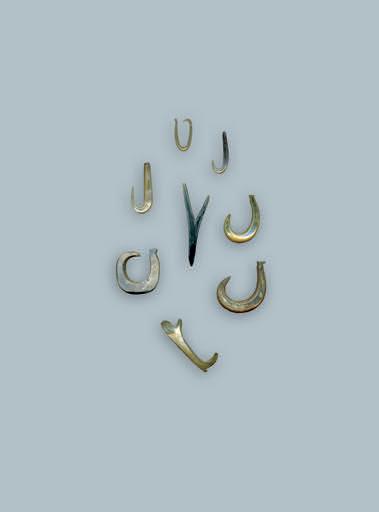
301 aktuelles hakenbuch 12.okt:miot neu vertikal 30.11.2011 18:20 Uhr Seite 301
Hawaiian Islands 302 112 aktuelles hakenbuch 12.okt:miot neu vertikal 30.11.2011 18:20 Uhr Seite 302
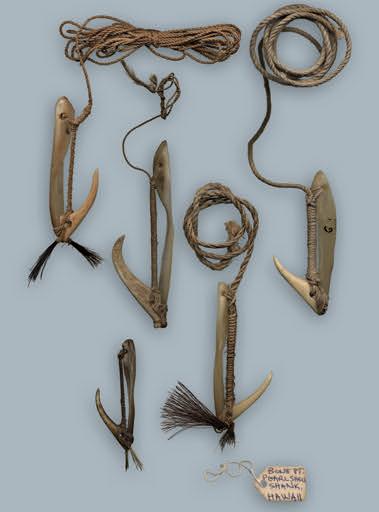
303 aktuelles hakenbuch 12.okt:miot neu vertikal 30.11.2011 18:21 Uhr Seite 303
Hawaiian Islands 304 113 aktuelles hakenbuch 12.okt:miot neu vertikal 30.11.2011 18:21 Uhr Seite 304
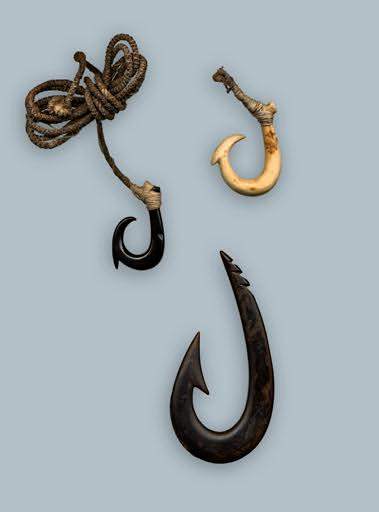
305 aktuelles hakenbuch 12.okt:miot neu vertikal 30.11.2011 18:21 Uhr Seite 305

Hawaiian Islands 306 114/115 aktuelles hakenbuch 12.okt:miot neu vertikal 30.11.2011 18:21 Uhr Seite 306
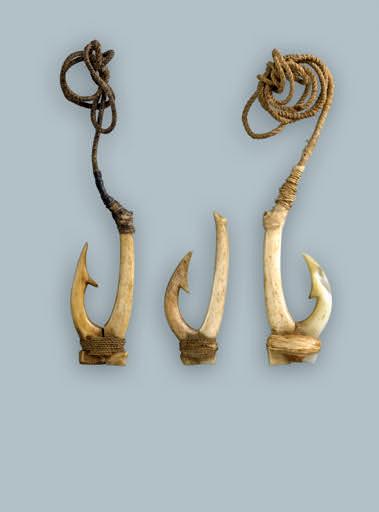
307 aktuelles hakenbuch 12.okt:miot neu vertikal 30.11.2011 18:21 Uhr Seite 307
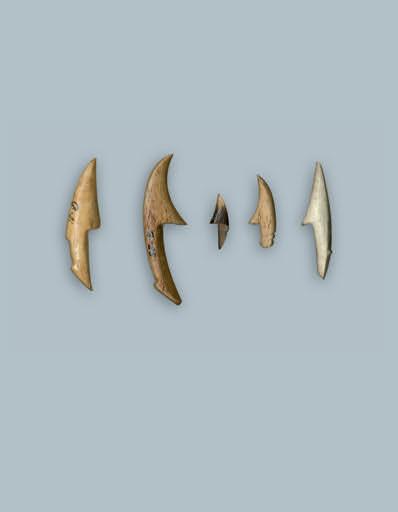
Hawaiian Islands 308 116/117 aktuelles hakenbuch 12.okt:miot neu vertikal 30.11.2011 18:21 Uhr Seite 308
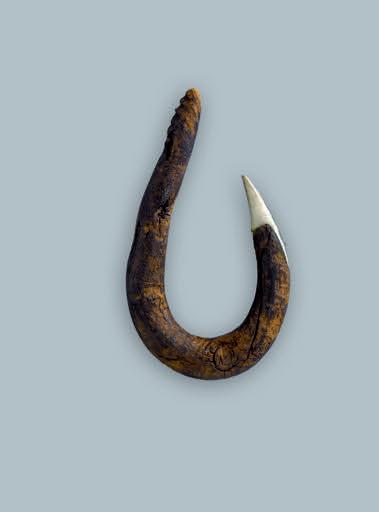
309 aktuelles hakenbuch 12.okt:miot neu vertikal 30.11.2011 18:21 Uhr Seite 309

Hawaiian Islands 310 118/119 aktuelles hakenbuch 12.okt:miot neu vertikal 30.11.2011 18:21 Uhr Seite 310

311 aktuelles hakenbuch 12.okt:miot neu vertikal 30.11.2011 18:21 Uhr Seite 311
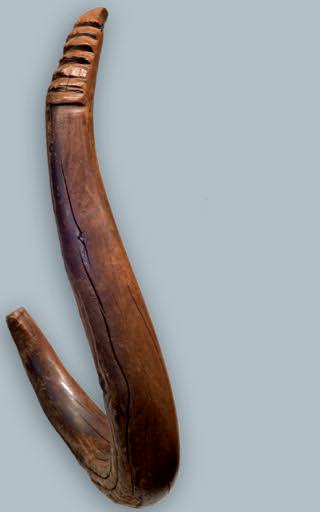
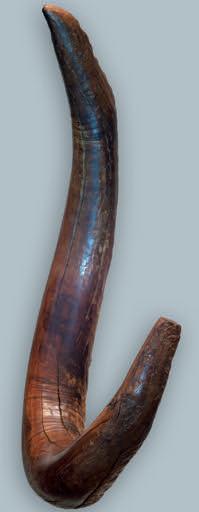
Hawaiian Islands 312 120/121 aktuelles hakenbuch 12.okt:miot neu vertikal 01.12.2011 17:01 Uhr Seite 312

313 aktuelles hakenbuch 12.okt:miot neu vertikal 01.12.2011 17:01 Uhr Seite 313
Hawaiian Islands 314 122 aktuelles hakenbuch 12.okt:miot neu vertikal 01.12.2011 17:01 Uhr Seite 320

315 aktuelles hakenbuch 12.okt:miot neu vertikal 01.12.2011 17:02 Uhr Seite 321
Hawaiian Islands 316 123 aktuelles hakenbuch 12.okt:miot neu vertikal 01.12.2011 17:02 Uhr Seite 316
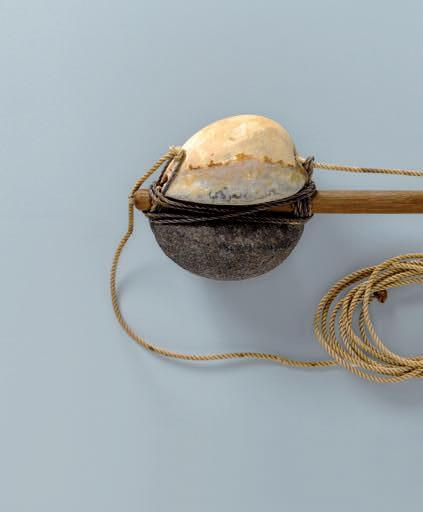
aktuelles hakenbuch 12.okt:miot neu vertikal 01.12.2011 17:02 Uhr Seite 317
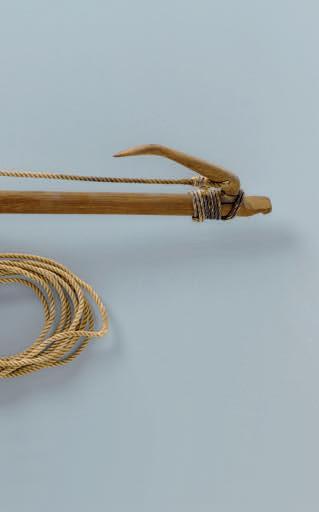
aktuelles hakenbuch 12.okt:miot neu vertikal 01.12.2011 17:02 Uhr Seite XXI

aktuelles hakenbuch 12.okt:miot neu vertikal 01.12.2011 17:02 Uhr Seite 319
Hawaiian Islands 318 124 aktuelles hakenbuch 12.okt:miot neu vertikal 01.12.2011 17:02 Uhr Seite 318

319 aktuelles hakenbuch 12.okt:miot neu vertikal 01.12.2011 17:02 Uhr Seite 319
Hawaiian Islands 320 125 aktuelles hakenbuch 12.okt:miot neu vertikal 01.12.2011 17:02 Uhr Seite 320
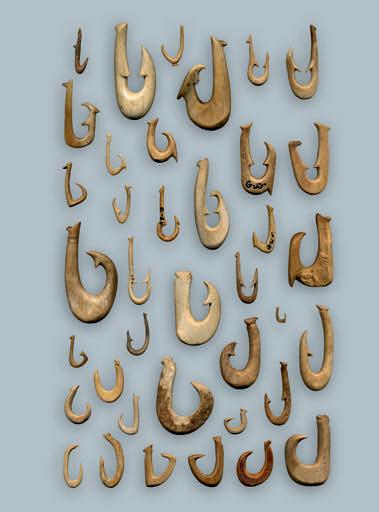
321 aktuelles hakenbuch 12.okt:miot neu vertikal 01.12.2011 17:02 Uhr Seite 321
Hawaiian Islands 322 126 aktuelles hakenbuch 12.okt:miot neu vertikal 01.12.2011 17:02 Uhr Seite 322

323 aktuelles hakenbuch 12.okt:miot neu vertikal 01.12.2011 17:02 Uhr Seite 323

Hawaiian Islands 324 127
aktuelles hakenbuch 12.okt:miot neu vertikal 01.12.2011 17:02 Uhr Seite 324
Waimanalo Bay on the island of Oahu T he impor tant archaeological “Bellows Sand Dune Site” was excavated here, revealing one of the earlier Hawaiian sites

325 aktuelles hakenbuch 12.okt:miot neu vertikal 01.12.2011 17:02 Uhr Seite 325
Hawaiian Islands 326 128 aktuelles hakenbuch 12.okt:miot neu vertikal 01.12.2011 17:02 Uhr Seite 326
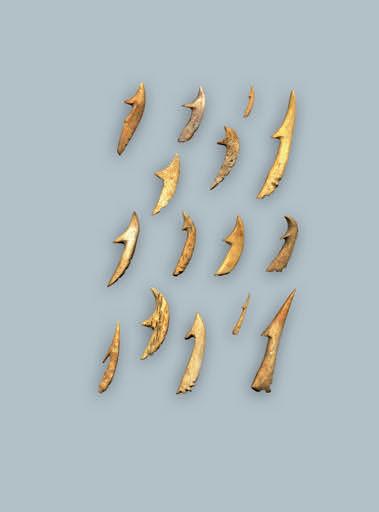
327 aktuelles hakenbuch 12.okt:miot neu vertikal 01.12.2011 17:02 Uhr Seite 327
Hawaiian Islands 328 129 aktuelles hakenbuch 12.okt:miot neu vertikal 01.12.2011 17:02 Uhr Seite 328

329 aktuelles hakenbuch 12.okt:miot neu vertikal 01.12.2011 17:02 Uhr Seite 329
New Zealand 330 130 aktuelles hakenbuch 12.okt:miot neu vertikal 01.12.2011 17:02 Uhr Seite 330
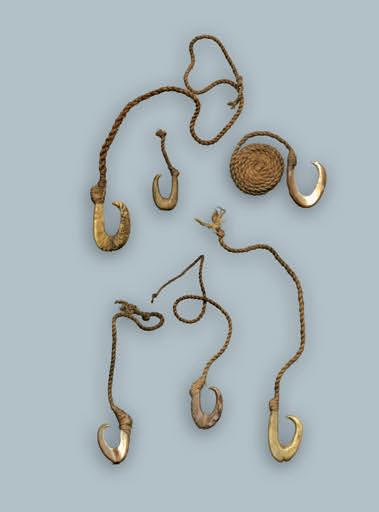
331 aktuelles hakenbuch 12.okt:miot neu vertikal 01.12.2011 17:02 Uhr Seite 331
New Zealand 332 131 aktuelles hakenbuch 12.okt:miot neu vertikal 01.12.2011 17:03 Uhr Seite 332

333 aktuelles hakenbuch 12.okt:miot neu vertikal 01.12.2011 17:03 Uhr Seite 333
New Zealand 334 132 aktuelles hakenbuch 12.okt:miot neu vertikal 01.12.2011 17:03 Uhr Seite 334
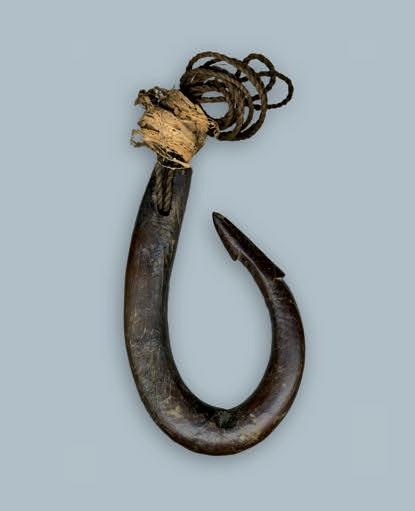
335 aktuelles hakenbuch 12.okt:miot neu vertikal 01.12.2011 17:03 Uhr Seite 335
New Zealand 336 133 aktuelles hakenbuch 12.okt:miot neu vertikal 01.12.2011 17:03 Uhr Seite 336
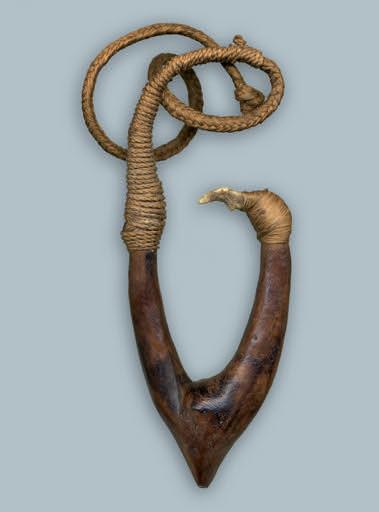
337 aktuelles hakenbuch 12.okt:miot neu vertikal 01.12.2011 17:03 Uhr Seite 337
New Zealand 338 134 aktuelles hakenbuch 12.okt:miot neu vertikal 01.12.2011 17:03 Uhr Seite 338

339 aktuelles hakenbuch 12.okt:miot neu vertikal 01.12.2011 17:03 Uhr Seite 339
New Zealand 340 135 aktuelles hakenbuch 12.okt:miot neu vertikal 01.12.2011 17:03 Uhr Seite 340

341 aktuelles hakenbuch 12.okt:miot neu vertikal 01.12.2011 17:03 Uhr Seite 341
342 New Zealand 136 aktuelles hakenbuch 12.okt:miot neu vertikal 01.12.2011 17:03 Uhr Seite 342

343 aktuelles hakenbuch 12.okt:miot neu vertikal 01.12.2011 17:03 Uhr Seite 343
New Zealand 344 137 aktuelles hakenbuch 12.okt:miot neu vertikal 01.12.2011 17:03 Uhr Seite 344

345 aktuelles hakenbuch 12.okt:miot neu vertikal 01.12.2011 17:03 Uhr Seite 345
New Zealand 346 138 aktuelles hakenbuch 12.okt:miot neu vertikal 01.12.2011 17:03 Uhr Seite 346

347 aktuelles hakenbuch 12.okt:miot neu vertikal 01.12.2011 17:03 Uhr Seite 347
New Zealand 348 139 aktuelles hakenbuch 12.okt:miot neu vertikal 01.12.2011 17:03 Uhr Seite 348

349 aktuelles hakenbuch 12.okt:miot neu vertikal 01.12.2011 17:03 Uhr Seite 349

New Zealand 350 140/141 aktuelles hakenbuch 12.okt:miot neu vertikal 01.12.2011 17:03 Uhr Seite 350

351 aktuelles hakenbuch 12.okt:miot neu vertikal 01.12.2011 17:04 Uhr Seite 351
352 142 Easter Island aktuelles hakenbuch 12.okt:miot neu vertikal 01.12.2011 17:04 Uhr Seite 352

353 aktuelles hakenbuch 12.okt:miot neu vertikal 01.12.2011 17:04 Uhr Seite 353
354 143 Easter Island aktuelles hakenbuch 12.okt:miot neu vertikal 01.12.2011 17:04 Uhr Seite 354
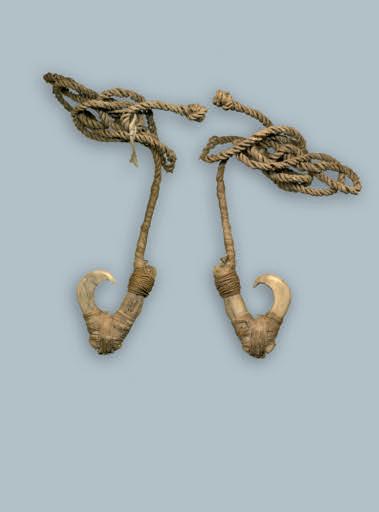
355 aktuelles hakenbuch 12.okt:miot neu vertikal 01.12.2011 17:04 Uhr Seite 355
aktuelles hakenbuch 12.okt:miot neu vertikal 01.12.2011 17:04 Uhr Seite 356
Whenever possible, hooks are illustrated in their tr ue sizes (1:1) For the few hooks which are illustrated smaller than life, the sizes are given in the text
Details of hooks are enlarg ed for better understanding


In this publication the different par ts of one-piece, two-piece and composite fish hooks are named as illustrated above Fish hook par ts mentioned by other authors and quoted here have been accordingly translated for better understanding and to have a consistent ter minolog y in this publication
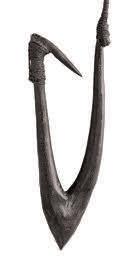
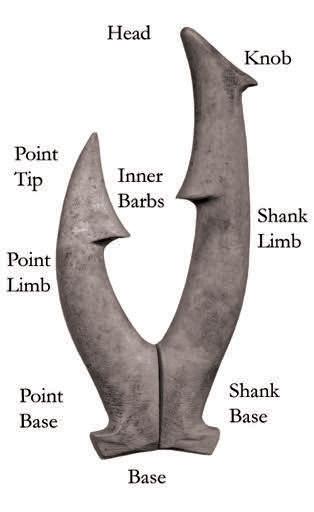
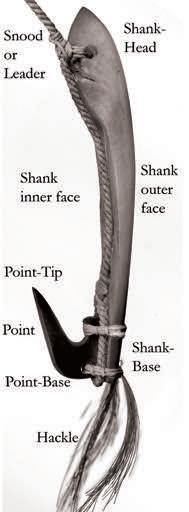
357
One-piece hook
Two-piece hook
aktuelles hakenbuch 12.okt:miot neu vertikal 01.12.2011 17:04 Uhr Seite 357
Composite hook
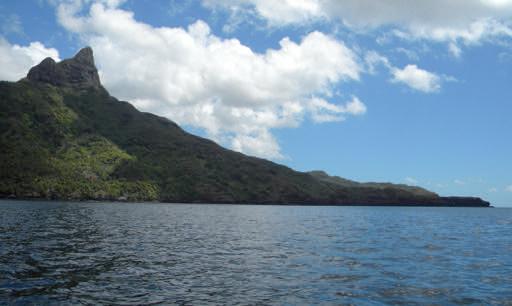
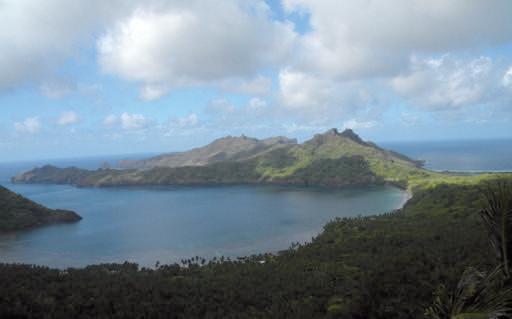
358
aktuelles hakenbuch 12.okt:miot neu vertikal 01.12.2011 17:04 Uhr Seite 358
A small section of the steep NE coast of Nuku Hiva, Marquesas Islands
(1) Fischer-Har riehausen, H : Das Bonito-Ritual in Zentralmelanesien Götting en 1961
(2) Schmeltz, J.D.E. & Krause, R.: Die ethnog raphisch-anthropologische Abteilung des Museum Godeffroy in Hamburg (plate XVII) Hamburg 1881
(3) Edg e-Par tington, J. & Heape, C.: An Album of the Weapons, Tools, Or naments, Ar ticles of Dress etc , of the Natives of the Pacific Islands, vols I, II, III Manchester 1890-98
(4) Woodford, C.M.: Solomon Islands: fish hooks, in: MAN 18(9): 130-132 London 1918
(5) Ivens, W G : Melanesians of the South-east Solomon Islands London 1927
(6) Blackwood, B : Both Sides of the Buka Passag e Oxford 1935
(7) Ber natzik, H.A.: Owa Raha Wien 1936
(8) Beasley, H G : Pacific Island Records: Fish Hooks London 1928
(9) Cummings, H : T he Distribution of Compound Fish hook Types as a Gaug e of Population Interaction in the Solomon Islands Chicag o 1973
(10) K aschko, M : An Archaeological Consideration of the Ethnog raphic Fish hook Set on Uki Island, Southeast Solomon Islands, in: Royal Society of NZ, Bulletin no 11 Wellington 1976
(11) Bell, D , Specht, J & Hain D : Beyond the Reef: Compound Fish hooks in the Solomon Islands, in: Traditional Fishing in the Pacific, ed by A Anderson. pp.45-57 Honolulu 1986
(12) Starzecka, D & Cranstone B A L : T he Solomon Islanders London 1974
(13) Hurst, N : Power and Prestig e Cambridg e, Mass 1996
(14) Birket-Smith, K : An Ethnological Sketch of Rennell Island: A Polynesian Outlier in Melanesia
Kopenhag en 1956
(15) Finsch, O : Ethnologische Erfahr ung en und Belegstücke aus der Südsee
Erste Abtlg.: Bismarck-Archipel. Neu-Guinea
Zweite Abtlg : Neu-Guinea
Dritte Abtlg : Mikronesien I Gilber t-Inseln II MarshallArchipel III Ruk und Mor tlock
Wien 1888, 1891, 1893
(16) Parkinson, R.: Zur Ethnog raphie der Ontong Java- und Tasman- Inseln etc Inter nationales Archiv für Ethnog raphie, vol X, S 104-118, 137-151
Leiden 1897
(17) Koch, G : Die materielle Kultur der Ellice-Inseln
Berlin 1961
(18) Gudg er, E.W.: Wooden Hooks used for catching Sharks and Ruvettus in the South Seas; a Study of their Variation and Distribution
New York 1927
(19) Anell, B : Contribution to the Histor y of Fishing in the Souther n Seas Studia Ethnog raphia Upsaliensia IX
Uppsala 1955
(20) Hedley, C : T he Ethnolog y of Funafuti. Australian Museum, Memoir III. p. 229-304
Sydney 1897
(21) Krämer, A : Hawaii, Ostmikronesien und Samoa
Stuttg ar t 1906
(22) Becke, L : By Rock and Pool on an Austral Shore
New York 1901
(23) Parkinson, R.: Dreißig Jahre in der Südsee Stuttg ar t 1907
(24) Kennedy, D G : Field Notes on the Culture of Vaitupu. Ellice Islands. Memoirs of the Polynesian Society, vol. 9. New Plymouth 1931
359
Bibliog raphy:
aktuelles hakenbuch 12.okt:miot neu vertikal 01.12.2011 17:04 Uhr Seite 359
(25) Krause, F : Zur Ethnog raphie der Insel Nissan. Jahrbuch des Städtischen Museums für Völkerkunde zu Leipzig, vol 1, 1906
Leipzig 1907
(26) Koch, G : Materielle Kultur der Santa Cr uz-Inseln Berlin 1971
(27) Speiser, F und W Foy: Völkerkundliches von den Santa-Cr uz-Inseln Ethnologica, vol. 2. S.153-213 Leipzig 1913
(28) Codrington, R H : T he Melanesians Oxford 1891
(29) Guppy, H B : T he Solomon Islands and their Natives London 1887
(30) Wichmann, A.: Nova Guinea. Vol.II. 1re Par tie. Entdeckungsg eschichte von Neu Guinea (1828-1885) Leiden 1910
(31) Kuschel, R: Matahenua - Livet i en polynesisk landsby Kopenhag en 1977
(32) Speiser, F : Südsee, Urwald, K annibalen Leipzig 1913
(33) Fir th, R : We, the Tikopia London 1936
(34) Fir th, R.: Primitive Polynesian Economy London 1939
(35) Rivers, W H R : T he Histor y of Melanesian Society Cambridg e 1914
(36) Neich, R and Fuli Pereira: Pacific Jeweller y and Ador nment Auckland 2004
(37) Menter, U.: Ozeanien - Kult und Visionen München 2003
(38) Bodrogi, T : Ar t in Nor th-East New Guinea Budapest 1961
(39) Schlesier, E : Eine ethnog raphische Sammlung aus Südost-Neuginea Götting en 1986
(40) Finsch, O : Südseearbeiten
Hamburg 1914
(41) Haddon, A C : Decorative Ar ts of British New Guinea Dublin 1894
(42) Williams, F.E.: Drama of Orokolo
Oxford 1940
(43) Wirz, P : Die Marind-anim von Holländisch-Süd-Neu-Guinea, Teil 1, 2, Hamburg 1922/1925
(44) Reche, O : Der K aiserin-Augusta-Fluß
Hamburg 1913
(45) Hauser-Schäublin, B.: Frauen in K ararau Basel 1977
(46) Hambr uch, P : Wuvulu und Aua (Matty-und Duror-Inseln)
Hamburg 1908
(47) T hilenius, G : Ethnog raphische Erg ebnisse aus Melanesien, Teil 2 Halle 1903
(48) Never mann, H : Admiralitäts-Inseln Hamburg 1934
(49) Ohnemus, S.: Zur Kultur der Admiralitäts-Insulaner in Melanesien Basel 1996
(50) Brough Smyth, R : T he Aboriginies of Victoria, vol.I London 1878
(51) Lewis, S : Australian Aboriginal Material in Manchester Museum Manchester 1977
(52) Never mann, H.: St Matthias Gr uppe Hamburg 1933
(53) Neuhaus, P K : Beiträg e zur Ethnog raphie der Pala - Mittel Neuirland Köln 1962
360
aktuelles hakenbuch 12.okt:miot neu vertikal 01.12.2011 17:04 Uhr Seite 360
(54) Buschan, G : Illustrier te Völkerkunde, Bd.II Stuttg ar t 1923
(55) Har ms, V (Hrsg ): Völkerkunde Museen 1990, Lübeck 1990
(56) Ste phan, E & Graebner, F : Neu-Mecklenburg (Bismarck-Archipel) Berlin 1907
(57) Ribbe, C.: Ein Sammelaufenthalt in Neu-Lauenburg Dresden 1910
(58) Hunter, J : A Historical Jour nal of the Transactions at Por t Jackson and Norfolk Island, plate p. 233 London 1793
(59) Kleintitschen, P A : Die Küstenbewohner der Gazellehalbinsel Hiltr up 1906
(60) Meyer, P O : Fischerei bei den Uferleuten des nördlichen Teils der Gazellehalbinsel und speziell auf der Insel Vuatom, NeuPommer n, Anthropos vol.VIII, 1913
(61) Phelps, St : Ar t and Ar tefacts of the Pacific, Africa and the Americas, T he James Hooper Collection London 1975
(62) Harcombe, D : Solomon Islands Hawthor n 1993
(63) Williams, J.: A narrative of missionar y enterprise in the South Sea Islands; with remarks upon the natural histor y of the Islands, origin, languages, traditions, and usages of the inhabitants London 1838
(64) Waite, D.B.: Ar tefacts from the Solomon Islands in the Julius L. Brenchley Collection London 1987
(65) Mead, S.M.: Material Culture and Ar t in the Star Harbour Region, Easter n Solomon Islands Toronto 1973
(66) Speiser, F : Ethnog raphische Materialien aus den Neuen Hebriden und den Banks-Inseln Berlin 1923
(67) Hadfield, E : Among the Natives of the Loyalty Group London 1920
(68) Sarasin, F : Neu-Caledonien und die Loyalty-Inseln Basel 1917
(69) Heintze, D : Wir tschaft und Leben auf einem Atoll im Pazifik (Beiheft zur Diareihe 102247), Stuttg ar t 1975
(70) Eilers, A.: Westkarolinen, 2. Halbband Hamburg 1936
(71) Krämer, A : Palau, 3 Teilband Hamburg 1926
(72) Eilers, A : Westkarolinen, 1 Halbband Hamburg 1935
(73) Müller, W.: Yap, 1 Halbband Hamburg 1917
(74) Damm, H : Zentralkarolinen, 2. Halbband Hamburg 1938
(75) Krämer, A : Zentralkarolinen, 1 Halbband Hamburg 1937
(76) Kubar y, J : Die Palau-Inseln in der Südsee Jour nal des Museum Godeffroy, par t IV, pl 4 Hamburg 1873
(77) Treide, B.: In den Weiten des Pazifik, Mikronesien Wiesbaden 1997
(78) Krämer, A : Inseln um Tr uk, 1. Halbband Hamburg 1935
(79) Damm, H & Sarfer t, E : Inseln um Tr uk, 2 Halbband Hamburg 1935
(80) Skinner, H D : Review of Anell, B : “Contribution to the Histor y of Fishing in the South Seas Uppsala 1955”, in: T he Jour nal of the Polynesian Society, vol 64, No. 3, pp. 356-358
Auckland 1955
361
aktuelles hakenbuch 12.okt:miot neu vertikal 01.12.2011 17:04 Uhr Seite 361
(81) Eilers, A : Inseln um Ponape Hamburg 1934
(82) Buck, P H (Te Rangi Hiroa): Material Culture of K aping amarangi Honolulu 1950
(83) Sarfer t, E : Kusaie, 1 Halbband Hamburg 1934
(84) Schneider, O.: Muschelg eldstudien Dresden 1905
(85) Lautz, T h : Steinreich in der Südsee Köln 1999
(86) Erdland, P A : Die Marshall-Insulaner Münster 1914
(87) Krämer, A. & Never mann, H.: Ralik-Ratak Hamburg 1938
(88) Hambr uch, P : Naur u, 1. und 2. Halbband Hamburg 1914 and 1915
(89) K ayser, P A : Die Fischerei auf Naur u (Pleasant Island) Wien 1936
(90) Maude, H E & Lamper t, R J : T he Stalactite Fish Hooks of Ocean Island, in: T he Jour nal of the Polynesian Society vol 67, Auckland 1967
(91) Mahaffy, A.: Ocean Island. in: Blackwood's Mag azine, 188: 569-585 Edinburgh 1910
(92) Ellis, A F : Ocean Island and Naur u, T heir Stor y Sydney 1935
(93) Koch, G : Materielle Kultur der Gilber t- Inseln Berlin 1965
(94) Koch. G.: Südsee Berlin 1969
(95) Meinicke, C : Die Inseln des Stillen Oceans. 1. u. 2. Teil Leipzig 1875/76
(96) Pacific Islands Geog raphical Handbook Series
Naval Intellig ence Divison: Vol. II, Vol. III
Cambridg e 1943, 1944
(97) Bur rows, E G : Ethnolog y of Uvea (Wallis Island)
Honolulu 1937
(98) MacGreg or, G : Ethnolog y of Tokelau Islands
Honolulu 1937
(99) Demandt, E.: Die Fischerei der Samoaner Hamburg 1913
(100) Te Rangi Hiroa (P H Buck): Samoan Material Culture
Honolulu 1930
(101) Krämer, A : Die Samoa-Inseln, 2 vol Stuttg ar t 1902/03
(102) Herdrich, D. & Ar mstrong, K.: Historic Fishing Methods in American Samoa
Honolulu 2008
(103) Giglioli, E H : Appunti intor no ad una Collezione etnog rafica fatta durante il terzo Viag gio di Cook (Archivio l'Antropologia e la Etnologia 23: 173-242)
Firenze 1893
(104) Duff, R.: No Sor t of Iron. Culture of Cook's Polynesians Christchurch 1969
(105) Klemm, G : Allg emeine Culturwissenschaften Werkzeug e und Waffen
Leipzig 1854
(106) Hauser-Schäublin, B & Kr üg er, G (Eds ): James Cook: gifts and treasures from the South Seas Munich 1998
(107) K ae ppler, A.L.: Cook voyag e ar tefacts in Lening rad, Ber ne and Florence Museums, Honolulu 1978
(108) Söderström, J : Anders Spar r man ' s Ethnog raphical Collection from James Cook's 2nd Expedition (1772-1775) Stockholm 1939
(109) Moschner, I : Die Wiener Cook-Sammlung, Südsee-Teil, in: Archiv für Völkerkunde, 10: 136-253 Wien 1955
362
aktuelles hakenbuch 12.okt:miot neu vertikal 01.12.2011 17:04 Uhr Seite 362
(110) Clunie, F : Yalo i Viti. Shades of Fiji: a Fiji Museum Catalogue Suva 1986
(111) Roth, J and St Hooper (Eds ): T he Fiji Jour nals of Baron Anatole von Hüg el, 1875-1877 Suva 1990
(112) Abel Janszoon Tasman's Jour nal (Facsimile re print of the 1643 original) Amsterdam 1898
(113) Labillardiére, J.J.H. de: Voyag e in search of La Pérouse ( ) during the years 1791, 1792, 1793 and 1794 Paris 1800
(114) Loeb, E.M.: Histor y and Traditions of Niue Honoloulu 1926
(115) Miles, G P L : Notes on the Material Culture of Niue Ethnologia Cranmorensis, vol.3 Chislehurst 1938
(116) Beaglehole, E & P : Ethnolog y of Pukapuka Honolulu 1938
(117) Te Rangi Hiroa (P H Buck): Ethnolog y of Manihiki and Rakahang a Honolulu 1932
(118) Te Rangi Hiroa (P.H. Buck): Ethnolog y of Tong areva Honolulu 1932
(119) Hooper, St : Pacific Encounters, Ar t & Divinity in Polynesia 1760-1860
London 2006
(120) Te Rangi Hiroa (P H Buck): Ar ts and Crafts of the Cook Islands Honolulu 1944
(121) Tanner, J : From Pacific Shores, 18th Centur y Ethnog raphic Collections at Cambridg e Cambridg e 1999
(122) Little, St & Ruthenberg, P (Ed ): Life in the Pacific of the 1700’s, T he Cook/Forster Collection of the Georg August University of Götting en Honolulu 2006
(123) Mor rison, J : Jour nal de James Mor rison, second maître à bord de la “Bounty”, trad. B. Jaunez Paris/Papeete 1966
(124) Wer nhar t, K R : Mensch und Kultur auf den Inseln unter den Winden in Geschichte und Geg enwar t Wien 1974
(125) Bar row, T : Ar t and Life in Polynesia Wellington 1972
(126) Joppien, R & Smith B : T he Ar t of Captain Cook's Voyag es, vols I, II, III, IV, Melbour ne 1985-87
(127) Lavondes, A.: T he Polynesians and the Sea Papeete 1971
(128) Nordhoff, CH : Notes on the Off-Shore Fishing of the Society Islands, in: Jour nal of the Polynesian Society, vol.. 39, nos. 2 and 3
(129) T hode-Arora, H : Tapa und Tiki, Die Polynesien-Sammlung des Rautenstrauch-Joest-Museums
Köln 2001
(130) Ellis, W : Polynesian Researches 2 vol London 1829
(131) Dreyer, W.: Naturfolkenes Liv Kopenhag en 1898
(132) Emor y, K P : Material Culture of the Tuamotu Archipelag o Honolulu 1975
(133) Te Rangi Hiroa (P H Buck): Ethnolog y of Mang areva Honolulu 1938
(134) Heyerdahl, T hor and E N Ferdon Jr , (Eds ): Re por ts of the Norwegian Archaeological Expedition to Easter Island and the East Pacific, vol I: Archaeolog y of Easter Island
Santa Fe 1961
(135) Simmons, D R : Craftsmanship in Polynesia
Dunedin 1963
363
aktuelles hakenbuch 12.okt:miot neu vertikal 01.12.2011 17:04 Uhr Seite 363
(136) Byer, Doris: Die Große Insel, Südpazifische Lebensg eschichten, Autobiog raphische Berichte aus dem südöstlichen Salomon-Archipel seit 1914 Wien/Köln/Weimar 1996
(137) v Kr usenster n, A J : Reise um die Welt in den Jahren 1803–1806, (...) (1. par t) Berlin 1811
(138) Reinman, F M : Fishing: An Aspect of Oceanic Economy, An Archaeological Approach Chicag o 1967
(139) von den Steinen, K : Die Marquesaner und ihre Kunst, vol I, II, III Berlin 1925, 1928
(140) Appel, M : Die fr ühesten Südsee-Bestände des Staatlichen Museum für Völkerkunde München, par t 2, in: Münchner Beiträg e zur Völkerkunde vol 9 München 2005
(141) Linton, R : T he Material Culture of the Marquesas Islands Honolulu 1923
(142) Sug gs, R.C.: T he Archaeolog y of Nuku Hiva, Marquesas Islands, French Polynesia New York 1961
(143) Sinoto, Y.H.: A Tentative Prehistoric Cultural Sequence in the Nor ther n Marquesas Islands, French Polynesia, in: Jour nal of the Polynesian Society, vol 75: 286-303, 1966
(144) Gorg es, J -P : L’Ar t ancestrales des Iles Marquises Musée des Beaux-Ar ts de Char tres 2008
(145) Sinoto, Y H : T he Marquesans, Chapter 5, in: Jennings, J.D.: T he Prehistor y of Polynesia Cambridg e, Massachusets 1979
(146) K aehr, R : Neuchâtel-on-South-Seas, in: Pacific Ar ts, No 5, Januar y 1992
(147) Leenhardt, M.: Ar ts de l’Oceanie Paris 1947
(148) Never mann, H : Götter der Südsee, Die Religion der Polynesier Stuttg ar t 1947
(149) Koch, G : Hunder t Jahre Museum für Völkerkunde Berlin: Abteilung Südsee, in: Baessler-Archiv, Neue Folg e, Bd.XXI Berlin 1973
(150) Reed, A W : An Illustrated Encyclopedia of Maori Life
Wellington 1963
(151) Kelley, H L : Problems connected with the fishing industr y in Hawaii, in: Haw For and Ag riculturist, vol 27 (1): 9, 1930
(152) Titcomb, M.: Native Use of Fish in Hawaii
Honolulu 1972
(153) Te Rangi Hiroa (P H Buck): Ar ts and Crafts of Hawaii
Honolulu 1964
(154) Ar ning, E : Ethnog raphische Notizen aus Hawaii 1883-86
Hamburg 1931
(155) K ae ppler, A L : Ar tificial Curiosities An Exposition of Native Manufactures Collected on the T hree Pacific Voyag es of Captain James Cook
Honolulu 1978
(156) Oldman, W O : T he Oldman Collection of Polynesian Ar tifacts New Plymouth, N Z 1943
(157) Young, D.: NA MEA MAKAMAE, Hawaiian Treasures K ailua-Kona 1999
(158) Métraux, A : Ethnolog y of Easter Islands
Honolulu 1940
(159) Cook, J and James King: A Voyag e to the Pacific Ocean ( ) for Making Discoveries in the Nor ther n Hemisphere (...) 1776-1780, vol.III London 1784
(160) Brigham, W T : Bishop Museum Handbook, Part I: The Hawaiian Collections
Honolulu 1915
(161) Beckley, E.M.: Hawaiian’ fisheries and methods of fishing ( ) fishing implements used by the natives of the Hawaiian islands
Honolulu 1883
364
aktuelles hakenbuch 12.okt:miot neu vertikal 01.12.2011 17:04 Uhr Seite 364
(162) Kirch, P V : Feathered Gods and Fish hooks, An Introduction to Hawaiian Archeaolog y and Prehistor y Honolulu 1985
(163) Summers, C C : Material Culture, T he J. S. Emerson Collection of Hawaiian Ar tifacts Honolulu 1999
(164) Malo, D : Hawaiian Antiquities
Honolulu 1951
(165) Kaeppler, A L , Schindlbeck, M and G E Speidel (Ed ): Old Hawaii, An Ethnog raphy of Hawai’i in the 1880s based on the research and collections of Eduard Ar ning in the Ethnologisches Museum, Berlin Berlin 2008
(166) Brigham, W T : Stone Implements and Stone Work of the Ancient Hawaiians Honolulu 1902 (Re print 1974)
(167) K amakau, S M : T he Works of the People of Old, transl Mar y K awena Pukui
Honolulu 1976
(168) Emor y, K P and Y H Sinoto: Oahu Excavations
Honolulu 1961
(169) Dalton, O.M.: Notes on an Ethnog raphical Collection ( ) for med during the Voyag e of Captain Vancouver 1790-1795, in: Inter nationales Archiv für Ethnog raphie, vol X: 225 ff Leiden 1897
(170) Sinoto, Y.H.: Chronolog y of Hawaiian Fish hooks, in: Jour nal of the Polynesian Society, vol 70, No 2 Wellington 1961
(171) Sinoto, Y.H.: Hawaiian Fish hook Classification, in: Bishop Museum Occasional Papers, vol 31
Honolulu 1991
(172) Emor y, K.P., J. Bonk, and Y.H. Sinoto: Hawaiian Archaeolog y: Fish hooks
Honolulu 1959
(173) Bellwood, P : T he Polynesians, Prehistor y of an island people London (rev. ed.) 1987
(174) Teviotdale, D : Notes on stone and moa-bone fish hook shanks in the Otag o University Museum, in: Jour nal of the Polynesian Society, vol 38: 270-280 1929
(175) Teviotdale, D : Prog ress Re por t on the Excavation of a Moa-hunters’ Camp at the Mouth of the Tahakopa River, in: Jour nal of the Polynesian Society, vol 46: 134-153 1937
(176) Lockerbie, L : Excavations at Kings Rock, Otag o, with a Discussion of the Fish hook Barb as an Ancient Feature of Polynesian Culture, in: Jour nal of the Polynesian Society, vol 49: 393–446 1940
(177) Skinner, H D : A Classification of the Fish hooks of Murihiku with Notes on Allied For ms from Other Par ts of Polynesia, in: Jour nal of the Polynesian Society, vol 51: 208-221, 256286 1942
(178) Duff, R : T he Moa-Hunter Period of Maori Culture
Wellington 1950
(179) Hjar no, J : Maori fish hooks in Souther n New Zealand Dunedin 1967
(180) Skinner, H D , and W Baucke: T he Morioris, in: Memoirs of the B P Bishop Museum, vol IX, No 5
Honolulu 1928
(181) Cook’s Pacific Encounters T he Cook-Forster Collection of the Georg-August University of Götting en
Canber ra 2006
(182) Anderson, A.J.: Prehistoric Exploitation of Marine Resources at Black Rocks Point, Palliser Bay, in: Leach, B F and H M Leach: Prehistoric Man in Palliser Bay
Wellington 1979
(183) Leach, B.F.: Excavations in the Washpool Valley, Palliser Bay, in: Leach, B F and H M Leach: Prehistoric Man in Palliser Bay
Wellington 1979
(184) Rowland, M.J.: Cellana denticulata in middens on the Coromandel Coast, New Zealand, Possibilities for a temporal horizon, in: Jour nal of the Royal Society of New Zealand 6 (1): 1-15
365
aktuelles hakenbuch 12.okt:miot neu vertikal 01.12.2011 17:04 Uhr Seite 365
(185) Green, R C : Adaption and Chang e in Maori Culture, in: G. Kuschel (Ed).: Biog eog raphy and Ecolog y in New Zealand. pp 591-641
T he Hague 1975
(186) Te Rangi Hiroa (P H Buck): T he Coming of the Maori Wellington 1970
(187) Webster, K A : T he Ar mytag e Collection of Maori Jade London 1948
(188) Best, E : Evolution of the Tautau, a Maori Pendant, in: MAN, no 2, 1915
(189) Skinner, H D : Excavations at Little Papanui, Otag o Peninsula, in: Jour nal of the Polynesian Society, vol 69 1960
(190) Skinner, H.D.: Comparatively Speaking, Studies in Pacific Material Culture Dunedin 1974
(191) Parkinson, S : A Jour nal of a Voyag e to the South Seas, in his Majesty’s Ship the Endeavour London 1773
(192) Oldman, W O : Skilled Handwork of the Maori. Being the Oldman Collection of Maori Ar tifacts Wellington 1946
(193) Best, E : Fishing Methods and Devices of the Maori Wellington 1977
(194) Davidson, J and F Leach: A cache of one-piece fish hooks from Pohara; Takaka, New Zealand; in: Islands of Inquir y Canber ra 2008
(195) Fairfield, F G : Maori fish hooks from Manukau Heads, Auckland, in: Jour nal of the Polynesian Society, vol 42, 1933
(196) Best, E.: T he Maori as he was Wellington 1924
(197) Mead, S M (Ed ): Te Maori Maori Ar t from New Zealand Collections New York 1985
(198) Golson, J : Culture Chang e in Prehistoric New Zealand, in: Anthropolog y in the South Seas. Ed. by Freeman, J.D. and W R Geddes New Plymouth 1959
(199) Bullen, F : T he cr uise of the “Cachalot“ London 1860
(200) Oliver, D : Ancient Tahiti Society, 3 vols Honolulu 1974
(201) Skinner, H D : Maori Amulets in Stone, Bone and Shell, in: Jour nal of the Polynesian Society, vol 42, par t 5 (1933)
(202) Plischke, H.: Der Fischdrachen Leipzig 1922
(203) Massola, A : Australian Fish Hooks and their Distribution Melbour ne 1956
(204) McCar thy, F : Australian Aboriginies, their Life and Culture 1957
(205) Brown, J Macmillan: T he Riddle of the Pacific London 1926
(206) Chauvet, St.: L’Ile de Paques et ses mystères Paris 1935
(207) Metraux, A : Easter Island London 1957
(208) Kubar y, J S : Ethnog raphische Beiträg e zur Kenntnis des K arolinen Archipels 3 vol Leiden 1889, 1892, 1895
(209) Moseley, H N : On the Inhabitants of the Admirality Islands, in: Jour nal of the Anthropological Institute of Great Britain and Ireland (Re print, May, 1877)
(210) Christie’s, London, 29 June 1983: Impor tant Tribal Ar t
(211) Dunbar Sloane, Auckland, 21 Nov 2002: Ar tifacts
366
aktuelles hakenbuch 12.okt:miot neu vertikal 01.12.2011 17:04 Uhr Seite 366
(212) Davidson, J : Maori Prehistor y, in: Starzecka, D C (Ed ) Maori Ar t and Culture London 1996
(213) Lazar us, D M : Live Bait Fishing in Ontong Java Beasley, H.G: Notes on the Fishing Appliances from Ontong Java, in: MAN, XXXVII, April, 1937, no 71 and no 72
(214) Sarfer t, E und Damm, H : Luangiua und Nukumanu, 1. Halbband Hamburg 1929
(215) Hviding, E : Guardians of Marovo Lag oon Practice, Place, and Politics in Maritime Melanesia Honolulu 1996
(216) Koch, G : Südsee- g ester n und heute Braunschweig 1955
(217) Davidson, J : An Archaeological Assemblag e of Simple fish hooks from Nukuoro, in: Jour nal of the Polynesian Society, Vol 76, No 2, 1967
(218) Davidson, J and F Leach: Fishing on Nukuoro Atoll Mémoire de Pier re, Mémoire d’Homme Publication de la Sorbonne, 1996
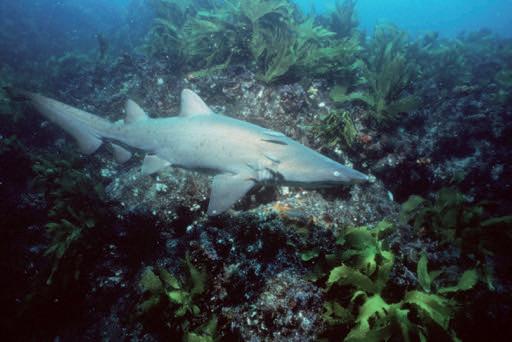
(219) Sinoto, Y H : Solving a Polynesian Fish hook Riddle, in: Jour nal of the Polynesian Society, vol. 68, no.1, Wellington 1959
(220) National Geog raphic Vol 146, No 6, Dec 1974
(221) Stöhr, W.: Kunst und Kultur aus der Südsee Köln 1987
367
aktuelles hakenbuch 12.okt:miot neu vertikal 01.12.2011 17:04 Uhr Seite 367
Sand Tig er shark or Grey Nose shark (Carcharias taur us) © Greenpeace/Doug Per rine
East Polynesia 230, 108
Ellice Is (Tuvalu) 46-48, 191, 192, 194, 199, 202, 72-78
Er ub (Tor res Strait) 31
Fag atau (Tuamotu Archipelag o) 202
Faraulip 143
Fiji (Viti) 199
Friedrich-Wilhelm Hafen (Madang) 29
Funafuti 192
Futuna 193, 199, 77, 78
Geelvink Bay 29
Gilber t Is (Kiribati) 147, 148, 69, 70
Graciosa Bay 49
Guadalcanal 43
Hanamaimai (Marquesas Is ) 213
Hane site (Marquesas Is.) 212, 111
Hatuatua Bay (Marquesas Is ) 300
Hawaiian Is 6, 7, 139, 190, 205, 211, 214-225, 324, 112-129
Hilo (Hawaiian Is ) 216
Hiva Oa Is (Marquesas Is ) 213
Hog Is. (Caroline Is.) 138, 53, 54, 55
Huahine (Society Is ) 190, 213, 280
Huon Gulf 29, 4, 5
Ifaluk 139, 140, 59
K ailua (Kona) Hawaiian Is. 216
K alapapa (Molokai, Hawaiian Is ) 216
K aping amarangi 141, 142
K aniet 32
K arolinen (see Caroline Is )
K awekiu and Kuliouou shelter (Oahu) 220
K aua’i 200, 217, 222, 223
Kiribati (see Gilber t Is )
Kosrae (see Kusaie Is.)
Kusaie Is 142
Lanaii (Hawaiian Is ) 220
Lau 199
Laur (Souther n New Ireland) 34
Lawland Is (Massim region) 30, 31
Loto (Nor ther n Cook Is.) 200 Loyalty Is 52, 53, 197
Lue pe villag e (Ndende) 50
Makira (Southeast Solomons) 44, 50
Malaita 46, 24-26
Manihiki 200, 202, 203, 95
Manono 199
Manus (see Admiralty Is ) 33, 46
Maramasike (Malaita) 44, 50
Marau area (Guadalcanal) 43
Mare (Loyalty Is ) 52
Marianas Archipelag o 148, 149, 71
Marind-anim 32
Marovo Lag oon 43
Marquesas Is. 6, 139, 211-214, 217, 235, 300, 354, 109-111
368
(plate numbers in bold typeset) Admiralty Is (Manus Is ) 33, 46, 17 Ag omes 32 Aitutaki 200 American NW-Coast 224 American Samoa 195 Andra (Admirality Is ) 33 Anuta 49, 51 Apamama (Gilber t Is ) 217 Atafu (Tokelau Is) 194, 195, 79 Atuona (Marquesas Is.) 213 Aua (see Wuvulu) Auckland area 229 Austral Is 200, 224, 226 Australia 21, 224, 1-3 Banaba Is (Ocean Is ) 51, 144-147, 149, 68 Banks Peninsula (NZ) 225 Bay of Plenty (NZ) 229 Bellona 45 Bismarck Archipelag o 32, 50 Blanche Bay (New Britain) 53 Boug ainville 36, 38, 18 British New Guinea 31 Buka 36, 48, 18 Cape York Peninsula 21, 3 Caroline Is. 6, 43, 45, 135, 141, 143, 149, 47-49, 52, 53, 56-59 Central Carolines 138-141 Central Solomons 35, 43, 49 Chatham Is 226 Choiseul 38, 44, 46, 19 Chuuk (see Tr uk) Cook Is 200, 224, 226 Coromandel Region (NZ) 227
River
y) 21, 2 Duke of York Is (Neu Lauenburg) 34, 53
Cape (NZ) 231 Easter Is. (see Rapa
Index of Islands and Regions
Daly
(Nor ther n Ter ritor
East
Nui)
Leueneuwa
Lemaki 199
47 Lifou 52
Luangiua 48, 49
Mang aia 200, 202 Mang areva Group 209, 210, 107
aktuelles hakenbuch 12.okt:miot neu vertikal 01.12.2011 17:04 Uhr Seite 368
Ontong
Orokolo
Otag
Otaheite
Papuan Gulf 31,32
Phoenix Is (Kiribati) 192
Pitilu (Admirality Is.) 33
Polynesia 191-236
Ponape (Pohnpei) 45, 134
Possession Bay (British NG) 31
Pukapuka (Nor ther n Cook Is ) 200, 201, 202, 92-94
Queensland 21, 1
Rakahang a (Nor ther n Cook Is ) 200-202
Ralik-Ratak Is. 142
Rapa Iti (Austral Is ) 230
Rapa Nui (Easter Is ) 6, 128, 210, 211, 217, 224, 235, 142, 143
Rarotong a (Souther n Cook Is ) 200
Reef Is. (Solomon Is.) 49, 50, 42
Rennell Is 44, 45, 33, 34, 35
Rockingham Bay (Queensland) 21
Ruk (see Tr uk (Chuuk))
Samoa 6, 38, 195-200, 83, 84, 86
San Cristobal (see Makira)
Santa Cr uz Is. 49, 50, 42-45
Santa Isabel (Solomon Is ) 35
Satoan (Mor tlock Group, Caroline Is ) 139
Satawal (Central Carolines) 139
Se pik 32, 33
Siara (Souther n New Ireland) 34
Siassi Is. (Umboi) 29, 6
Sikaiana Is (Solomon Is ) 36, 46, 47, 48
Society Is (Tahiti) 6, 49, 141, 198, 200, 202-209, 224, 225, 96-102
Solomon Is 6, 7, 34-52, 206, 87-105
Sorol Atoll (Wester n Carolines) 139
Souther n Cook Is 200, 202, 203
South Is (NZ) 224-228, 234, 140
South Point (Hawaii Is ) 223, 224
Star Harbor Region (Solomon Is ) 45, 50
St. Matthias 33
Tahiti (see Society Is )
Tahuata (Marquesas Is ) 213, 214
Tami Is. (Huon Gulf) 29
Tamigidu (Huon Gulf) 29
Tauu 49
Tereia Is. (Tuamotu Archipelag o) 208
Tikopia 49-51, 46
Tinian (Marianas Arch) 149
Tobi 47, 135, 136, 138, 139, 47, 48
Tokelau Is. 194, 195, 199, 210, 79-82
Tona’eva (Marquesas Is ) 213
Tong a Is 6, 197-201, 85, 87-90
Tong areva (Penrhyn) 200, 202
Tor res Strait 30, 31, 10, 11
369 Marshall Is 137, 138, 142, 143, 165, 50, 51, 63-65 Masi villag e (Guadalcanal) 43 Massim area (Trobriand Arch) 30-32, 7-9 Matupi Is (New Britain) 53 Mauke (Souther n Cook Is.) 203 Melanesia 29 Menen district (Naur u) 144 Mer (Tor res Strait) 31 Merir (Carolines) 138, 139, 53 Micronesia 134, 201 Mitiaro 200 Mog emog Atoll 140 Mokil Atoll 142 Mor tlock Is (Caroline Is ) 139, 56, 57 Mor tlock (east of Nissan) 49, 226 Murihiku area (New Zealand) 225, 226, 228-230, 234, 132, 133, 136 Mur ray Is. (Tor res Straits) 34 Namonuito (Caroline Is.) 143 Nnapuka (Tuamotu Arch) 209 Naur u 144-147, 66, 67 Ndende (Santa Cr uz Is.) 49, 50, 42 Nendo Is (see Ndende) Neo Is. (Santa Cr uz Is.) 51 Neu-Lauenburg (see Duke of York Is ) New Britain 6, 34, 35, 44, 53 New Caledonia 6, 51, 52, 53 New Hebrides (Vanuatu) 52 New Ireland 34, 44 New Zealand 7, 48, 226-235, 130-141 Ninig o 32 Nissan 49 Niue 199, 200 Niutao (Ellice Is ) 192 Nor th Auckland area 227 Nor ther n Cook Is 200, 202, 92, 93, 94, 95 Nor ther n Is 216, 225, 226, 228, 233 Nor ther n Ter ritor y (Australia) 21, 2 Nuguria 49 Nukufetau Atoll 191,192 Nuku Hiva (Marquesas Is.) 300, 354 Nukukasi (Makira Is ) 51 Nukumanu 46, 48, 49, 32 Nukuoro 32, 141, 205, 210, 60, 61 NW Coast (New Guinea) 29
(Hawaiian Is ) 220, 222, 223, 324
Is. (see Banaba Is.)
Oahu
Ocean
Java 45, 46-48, 36-41
Bay (Papuan Gulf) 32
o (NZ) 228, 229, 235
(see Society Is ) Palau 134, 136, 135, 141, 142 Palliser Bay (NZ) 227 Pitcair n 211, 234, 235
aktuelles hakenbuch 12.okt:miot neu vertikal 01.12.2011 17:04 Uhr Seite 369
Tr uk (Ruk, Chuuk) 139
Tuamotu Archipelag o 200, 202, 205, 208, 209, 98, 103-106
Tuvalu (see Ellice Is )
Uahuka (Marquesas Is ) 212, 111
Uki Is. (Solomon Is.) 36, 40-43, 27-29
Ulawa Is (Solomon Is ) 36, 37, 39-43, 45, 27-29
Ulithi Atoll 136, 140
Vairaatea (Tuamotu Arch) 209
Vaitootia site (Society Is.) 213
Vaitupu (Ellice Is ) 192, 195
Vanuatu (see New Hebrides)
Victoria (Australia) 21
Viti (see Fiji)
Waiakakea-River (Hawaiian is ) 216
Waier (Tor res Strait) 31
Waimanalo Bay (Hawaiian Is ) 324
Waimea (Oahu) Hawaiian Is 216
Wang anui (NZ) 232
Wester n Carolines 138, 140, 52, 53
Wester n Is. (Melanesia) 32, 33, 46
Wester n Pacific 48
Woleai Group 140, 58, 59
Wuvulu and Aua 32, 12-16
370
133, 136, 137, 139, 140, 142, 149, 50 aktuelles hakenbuch 12.okt:miot neu vertikal 01.12.2011 17:04 Uhr Seite 370
Yap
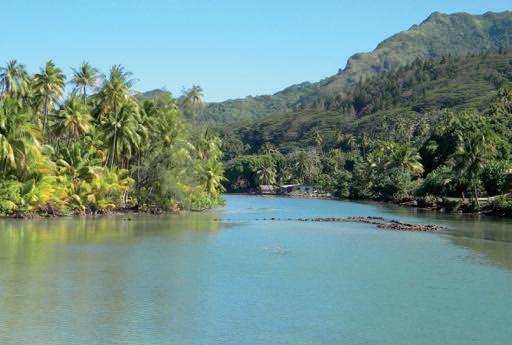
371
aktuelles hakenbuch 12.okt:miot neu vertikal 01.12.2011 17:04 Uhr Seite 371
Fish weirs on Huahine, Society Islands, 2008
We wish to thank family and friends for their help and patience during the lengthy creation of this book and the following people, who g enerously made their time available to make this publication a success:
the unknown ar tist who invented and crafted the fish hooks we have lear ned to admire, collect and treasure
Har r y G. Beasley (whose book on fish hooks was the initial inspiration for this publication)
the librarians of the Museum für Völkerkunde in Hamburg
Dr Michaela Appel, München
Serg e Brignoni (1903–2002) Ber n
Remy Carbayol, Papeete
Renate Donath, Plunkau
Har r y Haase, Götting en Nicole Gnesa, München
Dr Ing rid Heer mann, Stuttg ar t
Gunter Jentzsch, Dresden
Clara Ker n, London
Hans Ker n, NY
Ulrich Kor tmann, Dor tmund
Dr. Gundolf Kr üg er, Götting en
Dr Gerd Kühnen, Kevelaer
K arin Maaz, Detmold
Dr Petra Mar tin, Dresden
Anthony JP Meyer, Paris
Veronique Mu-Lipmann, Papeete
Amu and Frank Reiter, Berlin
David Rosenthal, Paris (for the translation of the main text into English)
Dr Yosi Sinoto, Honolulu
Dr Klaus Schröder, Wien
Antje Schulz, Dresden
Michel T hieme, Amsterdam
Michael Volkmann, München
David Young, Hawaii
Ing eborg Zahn, Renning en Saskia Zimmer mann, München
T homas Zuhr, München
372
aktuelles hakenbuch 12.okt:miot neu vertikal 01.12.2011 17:04 Uhr Seite 372
Edited and published by Daniel Blau, Munich and London
Printed and bound by Fir meng r uppe APPL aprinta dr uck, Wemding
Paper : Papyr us, MultiAr t Matt, 130 g/m2
Typeset: Garamond
Edition: 1000 copies
Printed in Ger many
© 2012 Texts: Daniel Blau, Klaus Maaz, Anthony JP Meyer, Sydney Picasso
© 2012 Catalogue and illustrations: Daniel Blau, Munich and London
Galerie Daniel Blau Odeonsplatz 12 80539 München Ger many Tel + 49 (0)89 - 29 73 42· Fax + 49 (0)89 - 24 20 48 60
Daniel Blau Ltd 51 Hoxton Square London N1 6PB England Tel + 44 (0)20 - 7831 7998 contact@danielblau com www danielblau com
Tous droits réser vés Toute re production, même par tielle, est interdit sans per mission écrite de l’éditeur, quel que soit le type de re production ou de suppor t
All rights reser ved No par t of this publication may be re produced or transmitted in any for m or by any means, electronic or mechanical, including photocopying, recording or any infor mation storag e or retrieval system, without per mission in writing from the editor
Ever y effor t has been made to identify other owners of copyrights: Individuals and institutions who may not have been contacted but claim rights to illustrations used are asked to contact the publisher
Bibliog raphic infor mation published by the Deutsche Nationalbibliothek:
T he Deutsche Nationalbibliothek lists this publication in the Deutsche Nationalbibliog raphie; detailed bibliog raphic data is available in the Inter net at http://dnb d-nb de
ISBN: 978-3-7774-4931-9
Distributed by Hir mer Publishers, Munich www hir mer verlag de
373
aktuelles hakenbuch 12.okt:miot neu vertikal 01.12.2011 17:04 Uhr Seite 373
aktuelles hakenbuch 12.okt:miot neu vertikal 01.12.2011 17:04 Uhr Seite 374
aktuelles hakenbuch 12.okt:miot neu vertikal 01.12.2011 17:04 Uhr Seite 375
aktuelles hakenbuch 12.okt:miot neu vertikal 01.12.2011 17:04 Uhr Seite 376
